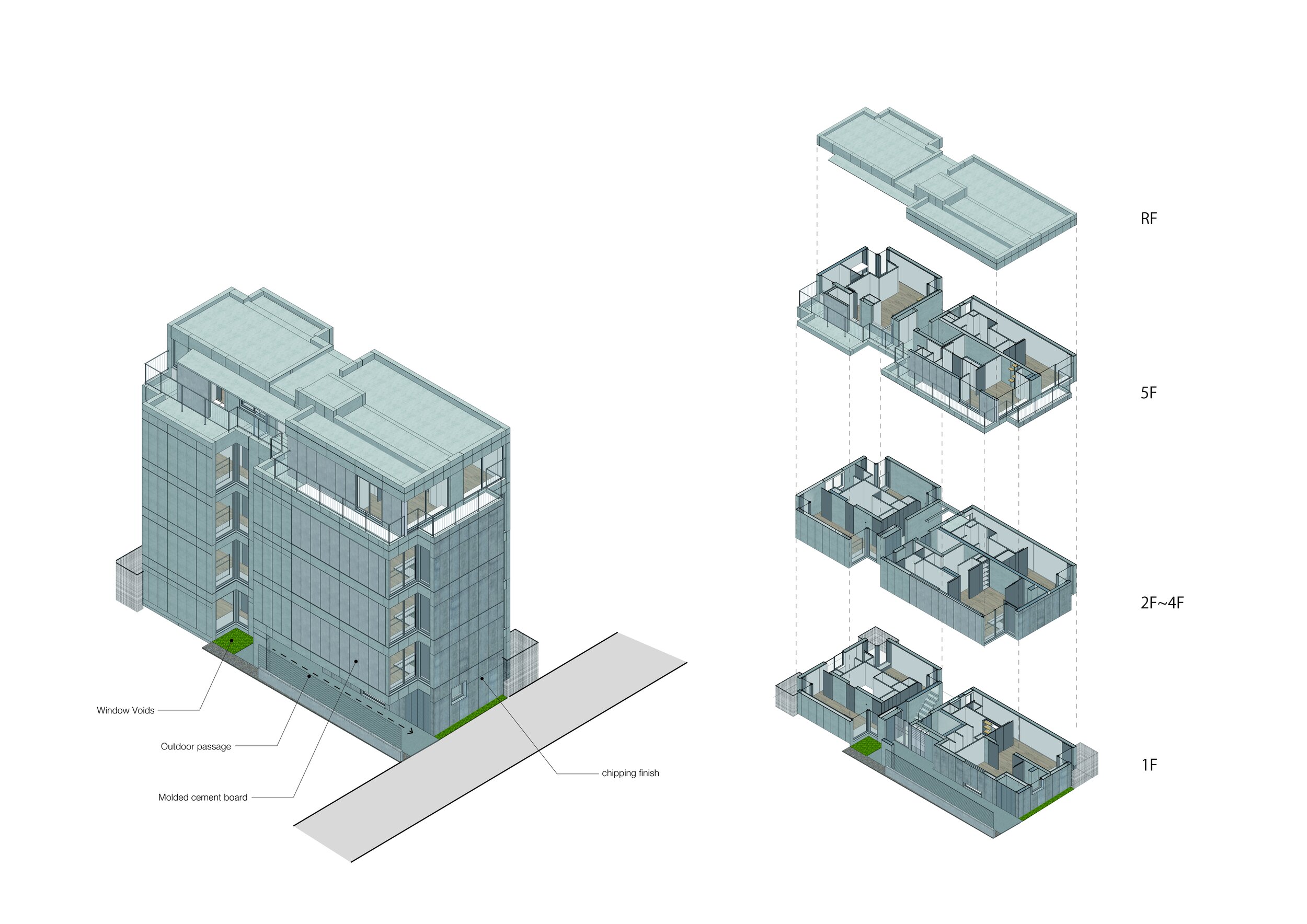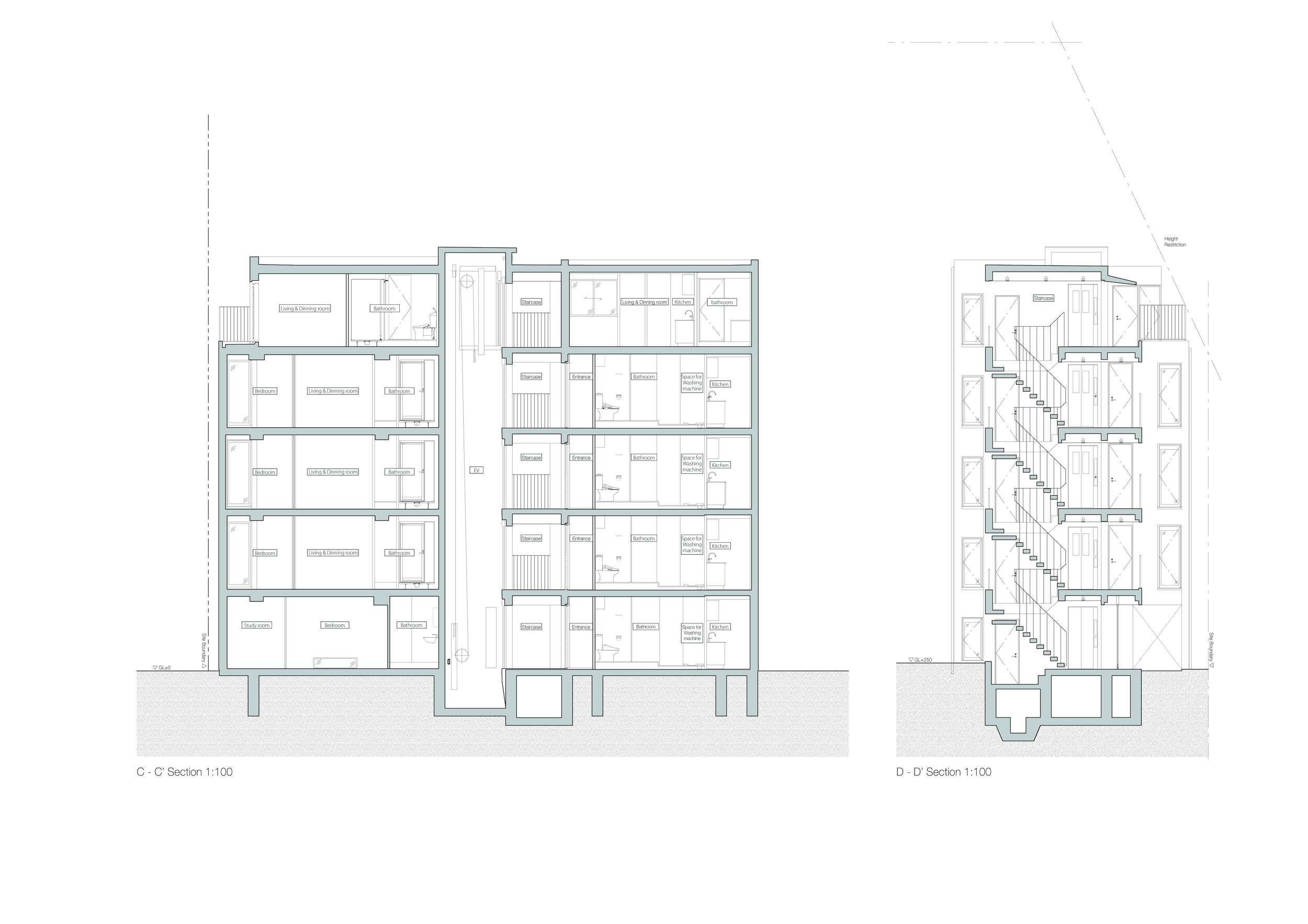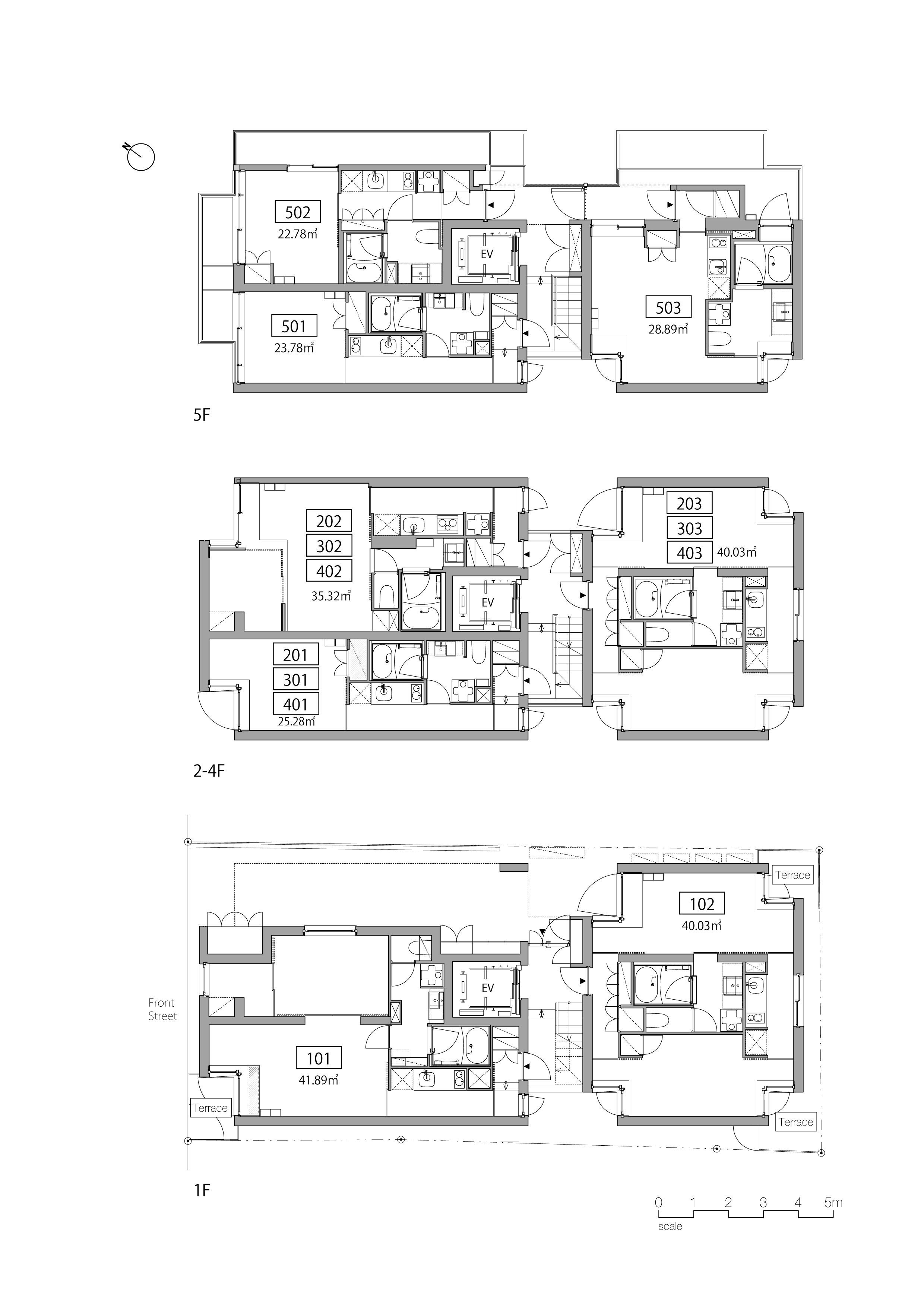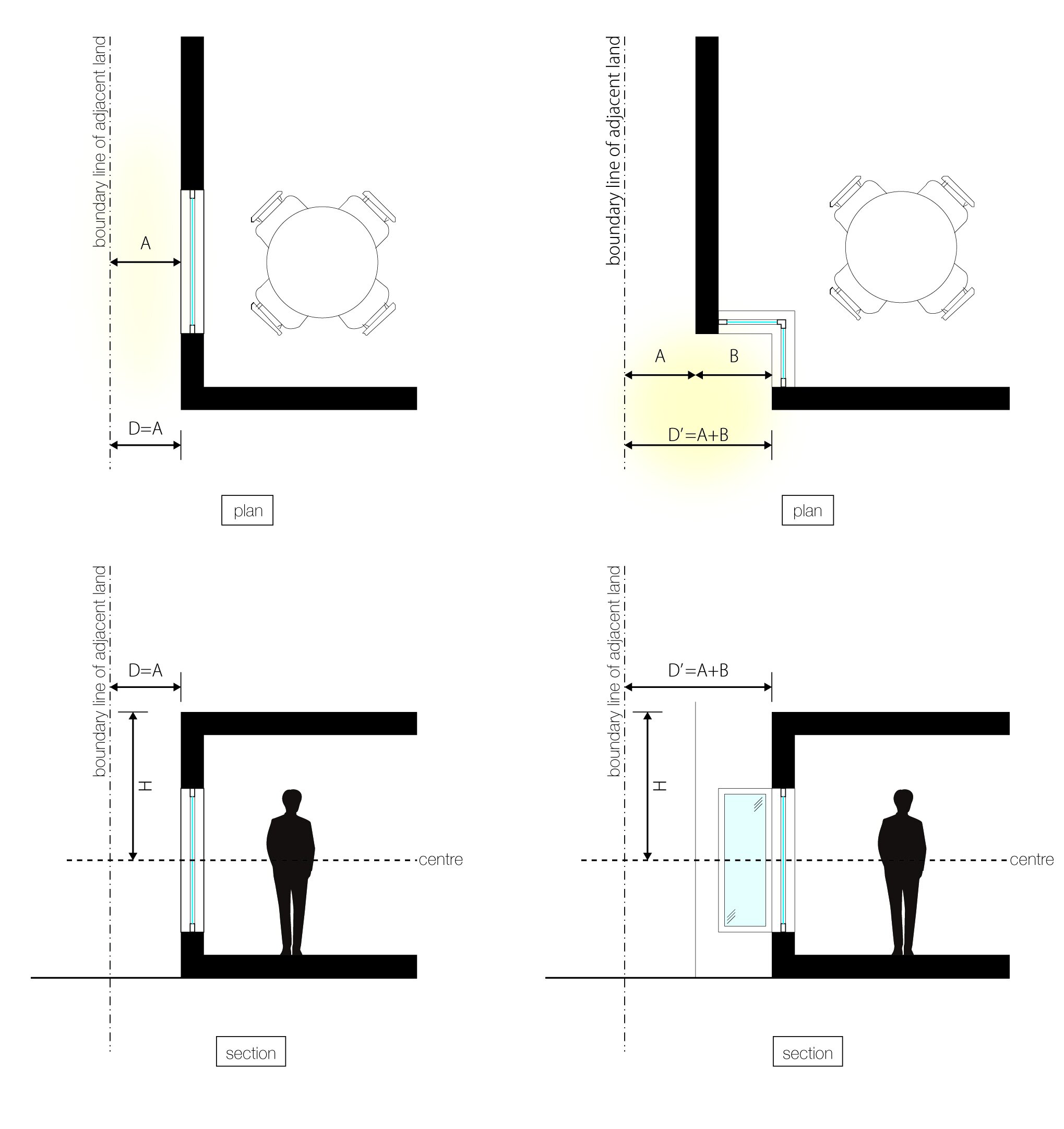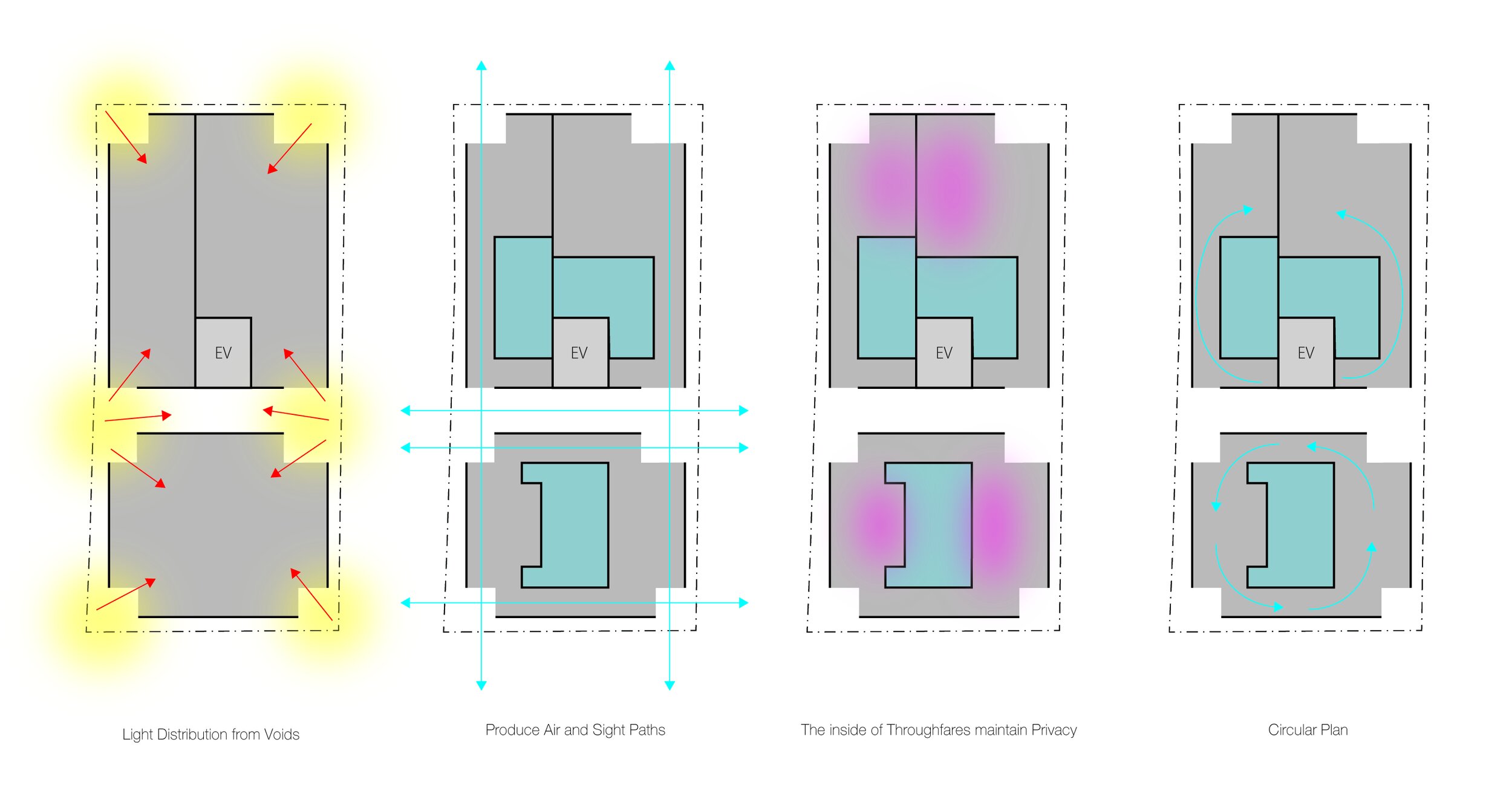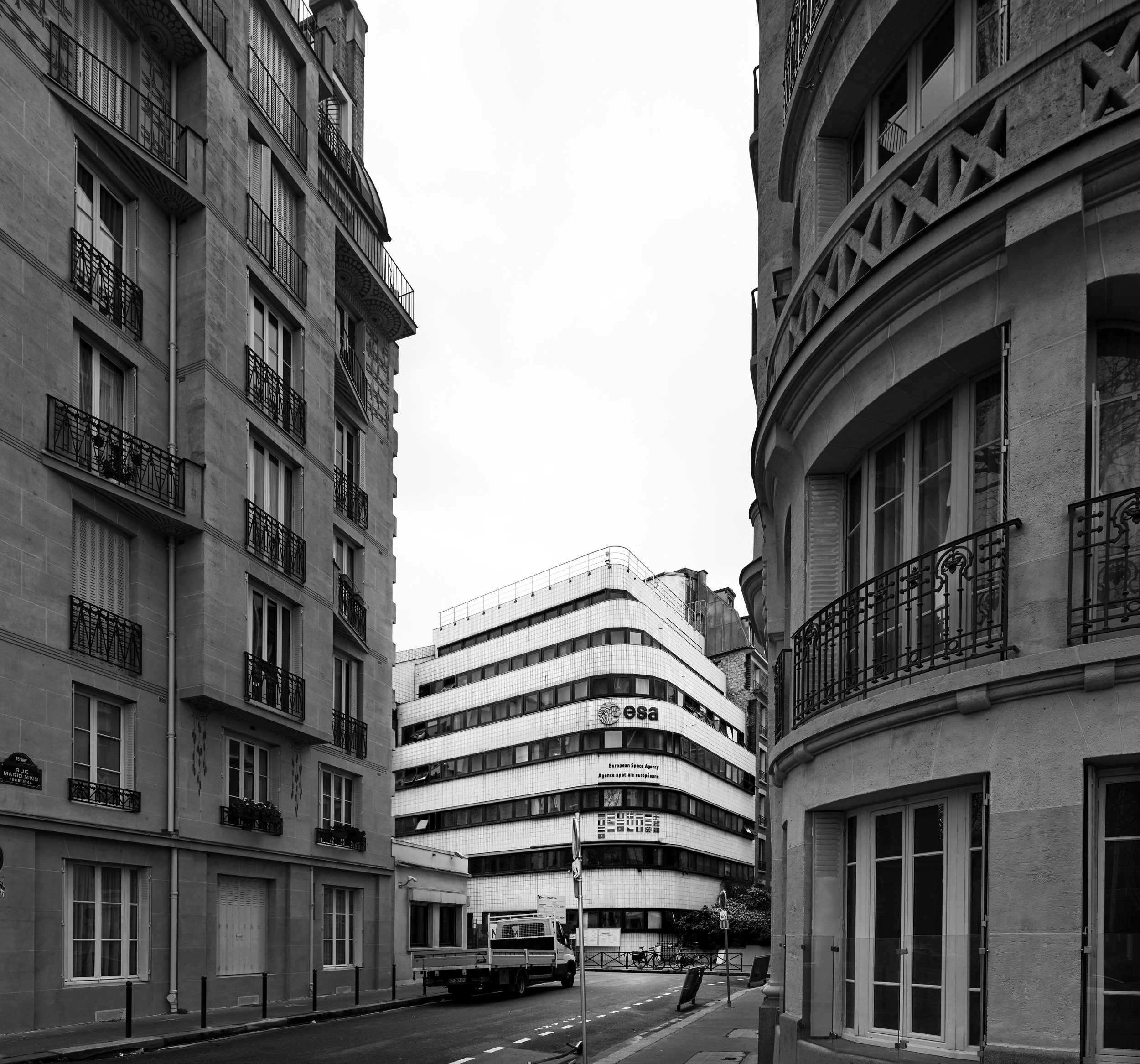Global Design Talent Sought for Helsinki's New Museum of Architecture and Design: International Open Competition Launched
The Foundation for the Finnish Museum of Architecture and Design, Real Estate Company ADM, the City of Helsinki and SAFA the Finnish Association of Architects have launched an international, open design competition to find a design team for a new 10,050 sq m (GFA) museum building in Helsinki’s South Harbour.
International open competition launched to find a design team for the new museum of architecture and design in Helsinki, Finland
Photographer: Sami Saastamoinen / Foundation for the Finnish Museum of Architecture and Design
The Foundation for the Finnish Museum of Architecture and Design, Real Estate Company ADM, the City of Helsinki and SAFA the Finnish Association of Architects have launched an international, open design competition to find a design team for a new 10,050 sq m (GFA) museum building in Helsinki’s South Harbour.
The new museum of architecture and design in Helsinki, Finland, is planned to open in 2030 and will combine the Museum of Finnish Architecture and Design Museum Helsinki. These institutions were successfully merged in January 2024, and the new museum will retain and grow the staff of both its predecessors.
The central mission of the new museum will be “democratising the tools of design”, drawing on the history and present of Finnish and Nordic architecture and design to guide a programme of public activities that will look at how design thinking and skills are relevant to the challenges we face as individuals and societies in a rapidly changing world.
The newly-formed collection, focussed on Finnish architecture and design, will contain over 900,000 artefacts, including objects, correspondence, models and photographs documenting the work of internationally-famed practitioners such as Aino and Alvar Aalto, Eero Aarnio, Maija Isola, Eliel and Eero Saarinen, Paavo Tynell, and design brands such as Marimekko, Nokia and Fiskars.
The new museum is made possible through significant public and private funding. In February 2024, The Foundation for the Finnish Museum of Architecture and Design announced that it had secured €120 million in public funding, half from the City of Helsinki and half from the State of Finland, to bring this new building project forward. This is supplemented by €30 million to be raised from private donors, with a €20 million donation secured from the Jane and Aatos Erkko Foundation.
Photographer: Sami Saastamoinen / Foundation for the Finnish Museum of Architecture and Design
The competition is organized by the Real Estate Company ADM, owned by the City of Helsinki and the State of Finland and the Foundation for the Finnish Museum of Architecture and Design, in collaboration with the City of Helsinki and the Finnish Association of Architects (SAFA). Strategic partners for the museum project are DVDL Cultural Planners (New York) and Haahtela Group.
An online seminar, open to all interested participants, will be held on 24 April 2024. Details and instruction on joining the seminar can be found at the competition website, alongside the competition brief: https://www.admuseo.fi/competition
The Competition Jury:
Photographer: Foundation for the Finnish Museum of Architecture and Design
Chair: Mikko Aho, Architect SAFA, Vice Chair of Real Estate Company ADM
Vice Chair: Juha Lemström, Architect SAFA, Chair of Real Estate Company ADM
Gus Casely-Hayford, Director, V&A East
Beatrice Galilee, Architect, Executive Director, The World Around
Kaarina Gould, CEO, Foundation for the Finnish Museum of Architecture and Design
Salla Hoppu, Architect SAFA, Leading Architect, City of Helsinki
Beate Hølmebakk, Architect, Professor, Partner, Manthey Kula Architects
Riitta Kaivosoja, Director General, Ministry of Education and Culture, Department for Art and Cultural Policy
Matti Kuittinen, Architect, Associate Professor, Aalto University
Miklu Silvanto, Designer, AD Museum Ltd. (Member of the Board)
Anni Sinnemäki, Deputy Mayor for Urban Environment, City of Helsinki
Sari Nieminen, Architect SAFA, Architectural Office Sari Nieminen
Hannu Tikka, Architect SAFA, Professor, APRT Architects
Eligibility Requirements in Stage 1 of the competition
Stage 1 of the competition (April 15–August 29, 2024) is open to individuals and design teams with the following eligibility criteria:
The lead designer must present the following personal qualifications:
A completed university level master’s degree in architecture
Confirm that they have the right to practise as an architect in their country of residence.
The person must be a resident of European Union countries or a resident of countries that are parties to The WTO Agreement on Government Procurement (GPA 2012). You may check: https://www.wto.org/english/tratop_e/gproc_e/memobs_e.htm
The design teams may also welcome members from countries that do not fall under the scope of the European Union and its procurement legislation.
Kaarina Gould, CEO of The Foundation for the Finnish Museum of Architecture and Design, said:
“Finland has a rich and fascinating history of design that is deeply embedded in both our national identity and our living culture. That culture is expressed fully in Helsinki – a former World Design Capital, where public policy and private enterprise have worked together to build a knowledge economy based upon high-value, innovative activities that have design thinking at their heart. “
“We want to democratise the tools of design. The new museum of architecture and design will engage the public in activities and experiences that broaden the understanding of design as a tool that empowers people to participate actively as citizen designers. Successful designs for the museum will need to embrace and advance the model of the museum as a site for active engagement with ideas and practice, as much as for the display and interpretation of artefacts.”
Mikko Aho, Chair of the competition Jury and Vice Chair of Real Estate Company ADM, said:
“Helsinki has an international reputation for architecture and design that reflects the strong belief in good design as a means for living well that is present in all Nordic societies. We’re delighted to launch this international open competition to find an architect for the new museum of architecture and design. The open competition is a strong component of the tradition of architecture in Finland that opens the commission up to exciting concepts from designers at any stage in their career – from undiscovered talent to established names.
“This new museum will enhance Helsinki’s global profile as a capital of design by placing the subject at the heart of the urban renewal of the South Harbour, one of the city’s most significant waterfront sites. We’re delighted to bring this project forward to create social benefits, provide new employment, attract international visitors and generate commerce in Helsinki.”
#Internationaldesigncompetition #new #museum #designcompetition #Helsinki #Finland #FinnishMuseum #Architecture #Design #MuseumHelsinki #ADM #CityofHelsinki #Architect #SAFA #mercimagazine
City of Helsinki Announces Funding for New Museum of Architecture and Design - – Design Competition to Commence in April
An international, two-stage design competition will be held to select the design of the new museum building. The competition aims to deliver a design that is architecturally unique, providing the framework for world-class museum operations and creating new, vibrant urban spaces in Helsinki’s rejuvenating South Harbour area.
The competition programme will be published on April 11, 2024, and the results will be announced in August 2025. The open, anonymous competition will be conducted in English. More details can be found on the competition website at admuseo.fi.
The competition is organised by Real Estate Company ADM – an entity owned by the City of Helsinki and the Finnish state – together with the Foundation for the Finnish Museum of Architecture and Design, and in cooperation with the Finnish Association of Architects SAFA and the City of Helsinki.
Helsinki City Council has voted to provide a capital donation of 60 million euros to the foundation responsible for establishing the new national museum of architecture and design. The Finnish state will match this funding, with an additional 30 million euros to be raised from private donations. With these commitments in place, an international design competition for the new museum building will be launched in April. The new museum will sit at the heart of a new pedestrian-friendly district in Helsinki's South Harbour.
On 14 February, Helsinki City Council approved a total capital donation of 60 million euros that will enable the Foundation for the Finnish Museum of Architecture and Design to realise its ambition of delivering a new museum of architecture and design. The Finnish state confirmed its commitment to offering equivalent funding in December 2023. The foundation will additionally raise at least 30 million euros from private sources, creating a robust private funding base for the museum project.
These decisions are significant milestones in the path towards realising the long-planned new national museum of architecture and design. The museum project will now continue to advance in line with the implementation plan published by the Foundation for the Finnish Museum of Architecture and Design in January 2024. According to the target schedule, the museum could open its doors in Helsinki's South Harbour in 2030. The museum will be operated by an entity that has been established through a merger of the Museum of Finnish Architecture and the Design Museum Helsinki.
“This new museum is set to both enhance Helsinki's global profile and provide a new, meaningful incentive to visit Helsinki. The museum will provide a cultural heart for the rapidly developing South Harbour area and a new, inviting urban space in Helsinki’s prime maritime location. It also represents a sustainable investment that will create jobs, generate commerce, and attract tourists to Helsinki. The museum represents an investment in the future, it is exciting to see the plans now coming to fruition,” commented the Mayor of Helsinki, Juhana Vartiainen.
Design competition to launch on April 11, 2024
An international, two-stage design competition will be held to select the design of the new museum building. The competition aims to deliver a design that is architecturally unique, providing the framework for world-class museum operations and creating new, vibrant urban spaces in Helsinki’s rejuvenating South Harbour area.
The competition programme will be published on April 11, 2024, and the results will be announced in August 2025. The open, anonymous competition will be conducted in English. More details can be found on the competition website at admuseo.fi.
The competition is organised by Real Estate Company ADM – an entity owned by the City of Helsinki and the Finnish state – together with the Foundation for the Finnish Museum of Architecture and Design, and in cooperation with the Finnish Association of Architects SAFA and the City of Helsinki.
For more information, visit the website of the New Museum of Architecture and Design.
The New Headquarters of the European Space Agency (ESA) - A Celestial Design Odyssey
The world-renowned architectural firm Atelier du Pont collaborated with the European Space Agency and the visionary developer Sogelym Dixence to create a space that pays homage to the limitless horizons of space exploration.
A testament to architectural innovation and cosmic aspirations, the European Space Agency (ESA) has unveiled its magnificent new headquarters in the heart of Paris. Now ESA's dedicated cadre and esteemed representatives from its 22 Member States will be able to benefit from this monumental undertaking, a synthesis of visionary design and meticulous planning. A dynamic nexus of European space collaboration, this architectural masterpiece seamlessly integrates with the urban fabric of the city, forging a harmonious link between the terrestrial and the celestial realms.
The world-renowned architectural firm Atelier du Pont collaborated with the European Space Agency and the visionary developer Sogelym Dixence to create a space that pays homage to the limitless horizons of space exploration. In this architectural marvel, imagination melds with vast reservoirs of knowledge, reflecting not only the enigmatic tapestry of matter but also the captivating landscapes of the Milky Way.
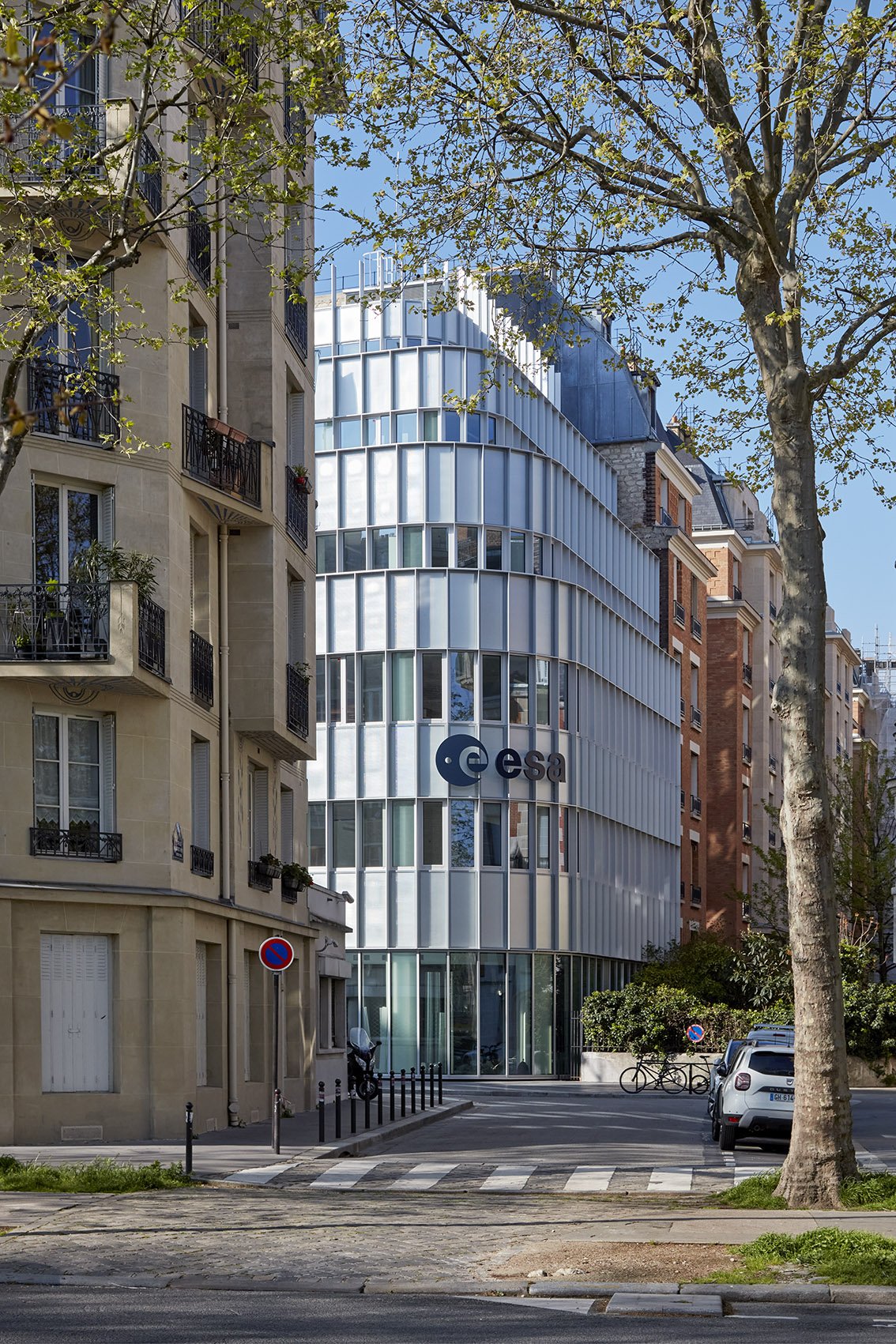
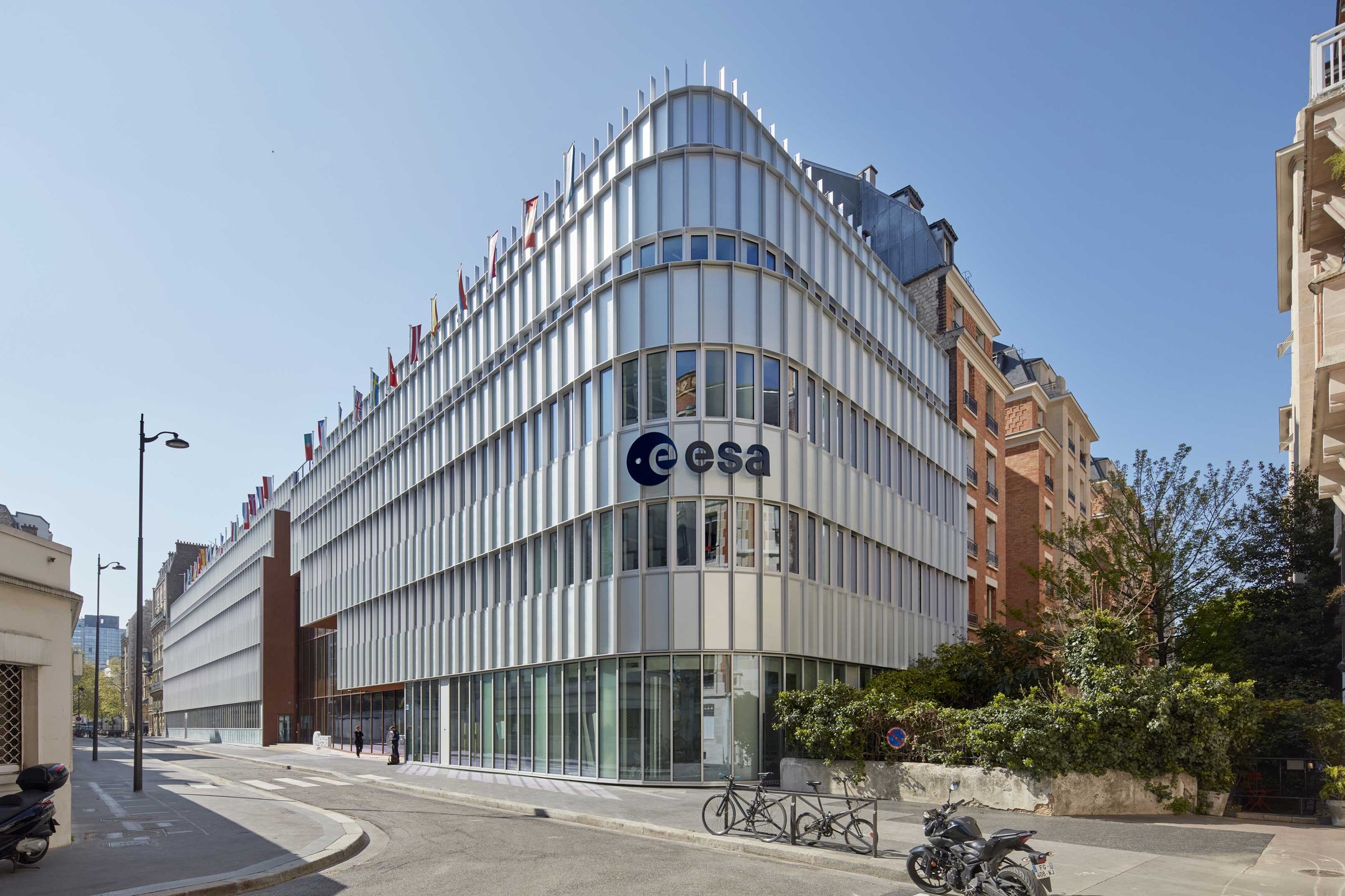
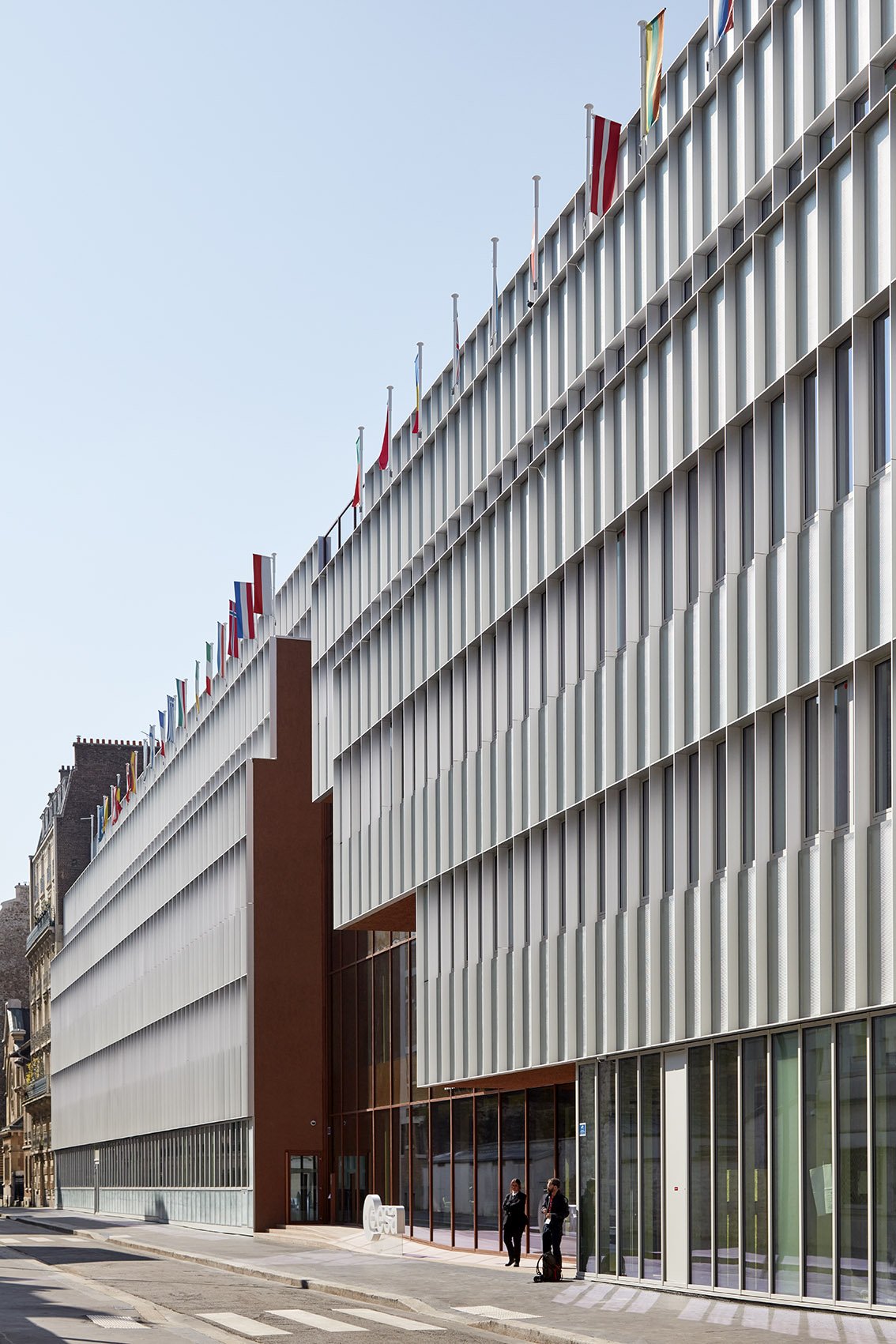
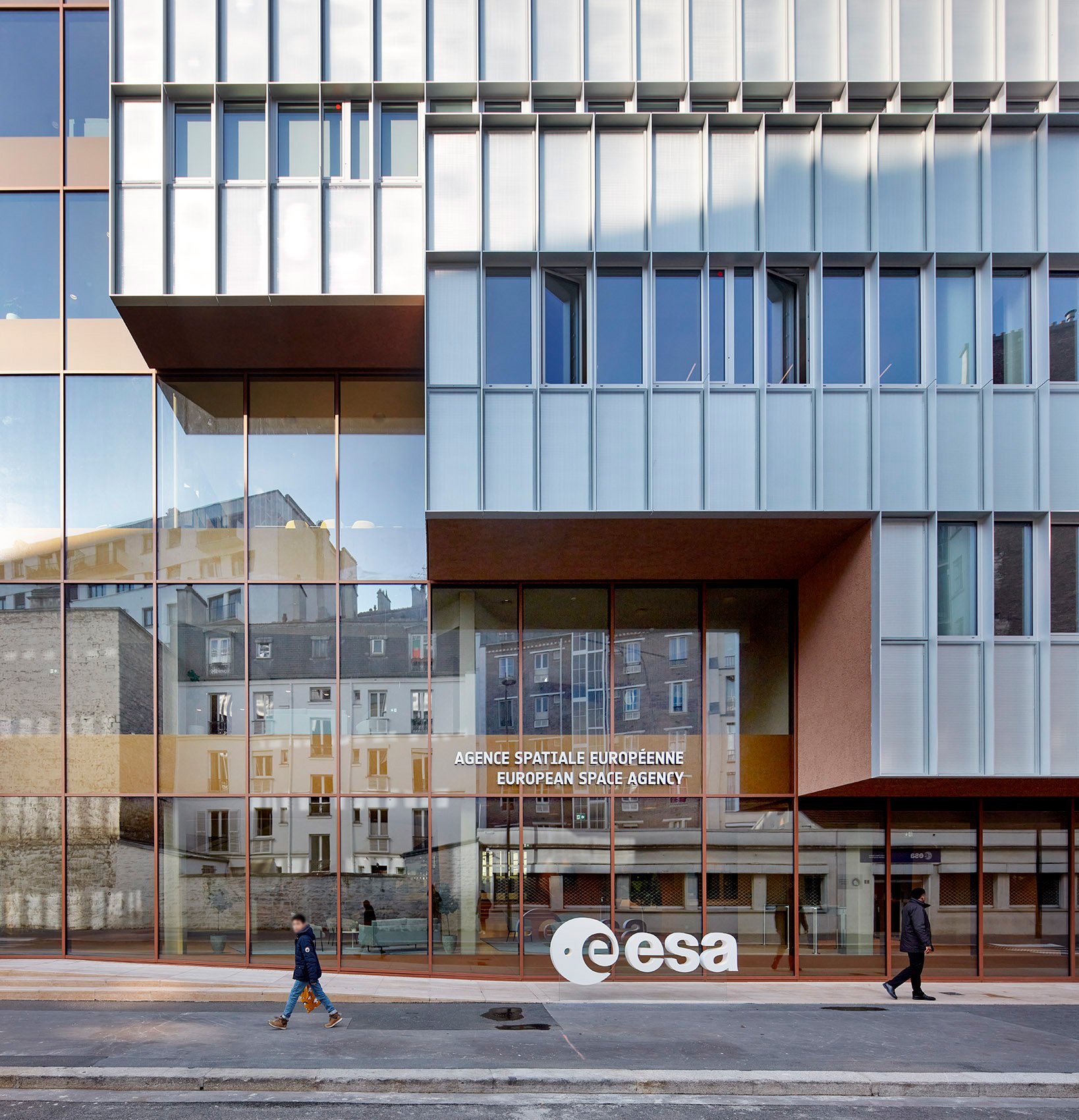
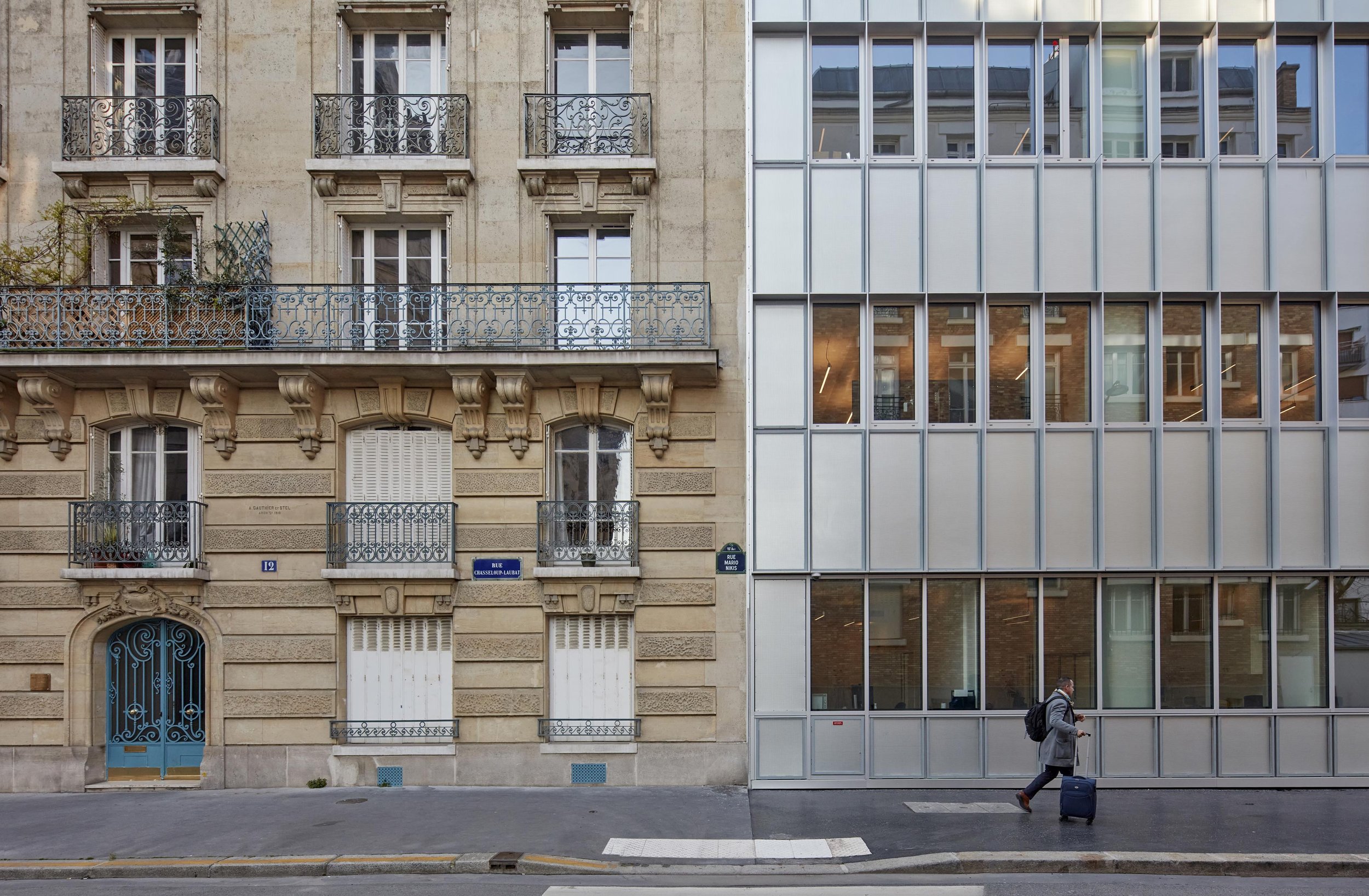
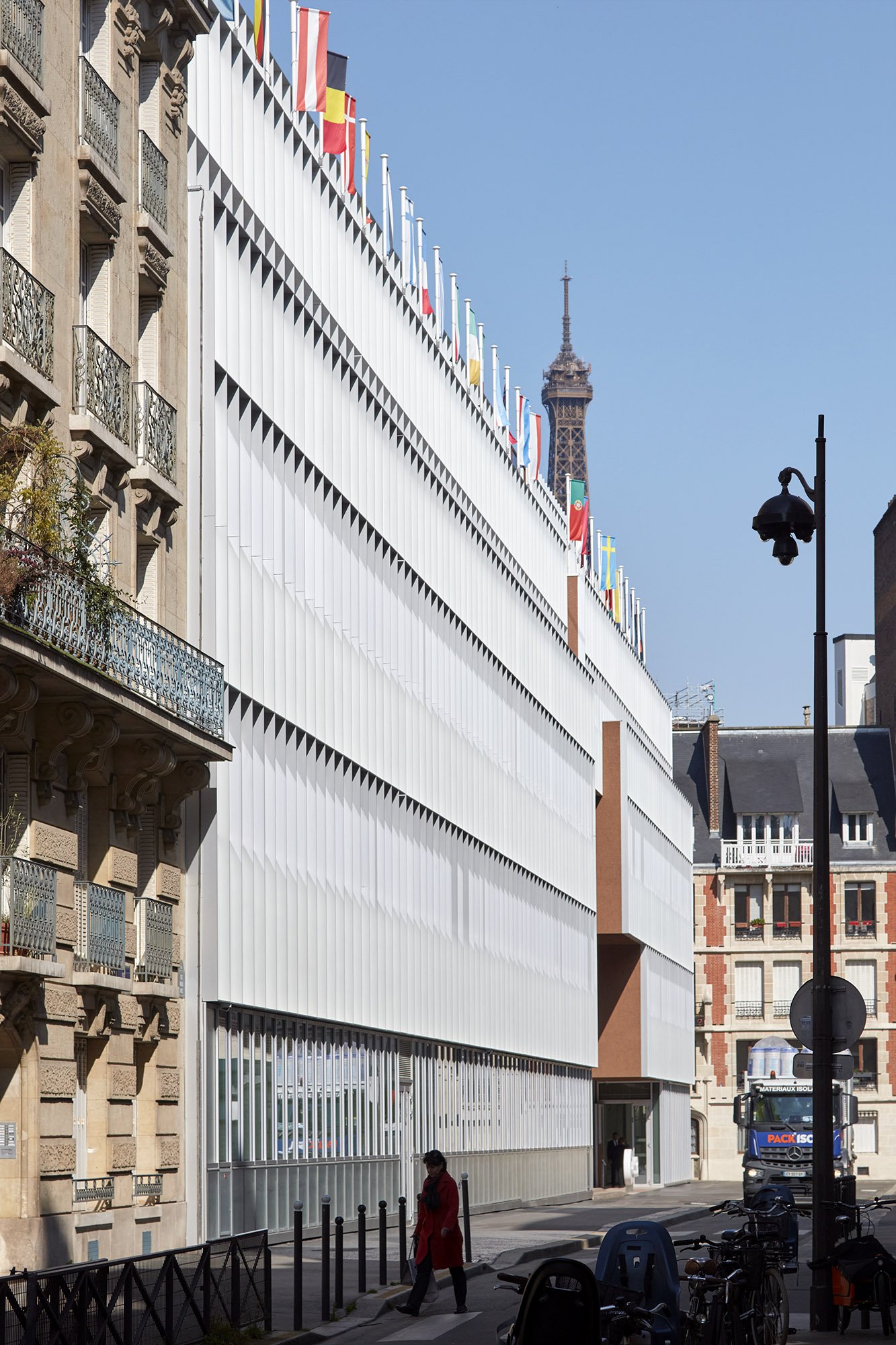
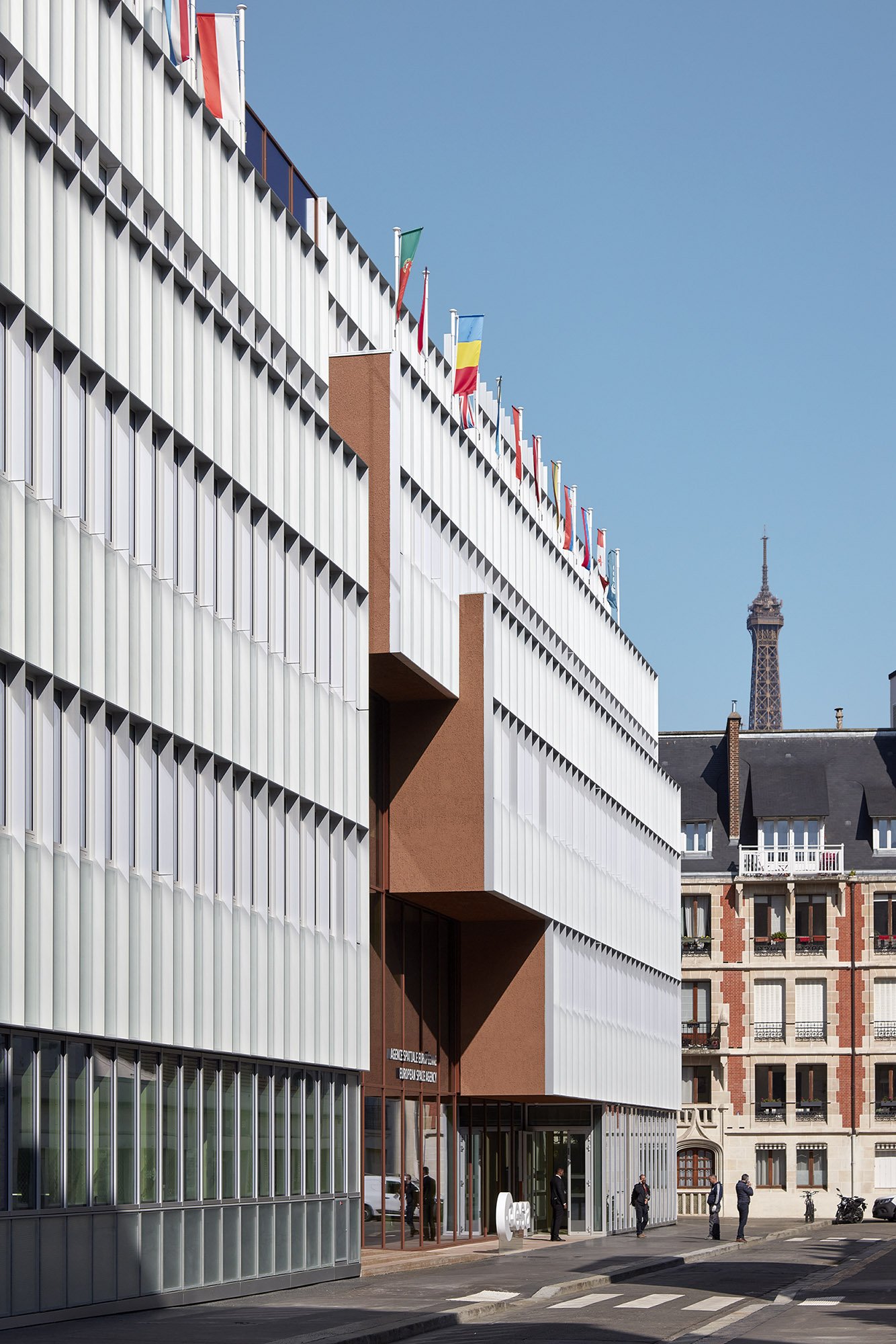
In redefining workplace paradigms for its occupants and partners, the newly inaugurated ESA headquarters is a symbol of innovation and collaboration. ESA's continually evolving and unwavering commitment to pushing the frontiers of exploration to new heights underscores not only its dedication to scientific excellence, but also its integration of advanced technologies born from the space sector.
Refurbishment in Paris' Heart
Historically, ESA has been located at the former Thomson factory on rue Mario Nikis since 1976. In 2017, ESA's 22 member states united unanimously behind a visionary proposal to breathe new life into this storied edifice, motivated by two pivotal objectives: the urgent need for an extension capable of hosting up to 30 international delegations and the meticulous elimination of asbestos from the aging fabric of the structure. The project, dubbed 'Thomson', was approved and is currently under construction. The new wing is projected to be completed in 2021 and will serve as the new center of the ESA's operations.
After several years of planning and preparation, ESA's dedicated staff temporarily relocated to nearby premises in 2018 to facilitate extensive renovations. As a result of this monumental refurbishment project, not only were spatial dynamics redesigned, but environmental performance was also enhanced, aligned with contemporary sustainability standards. A harmonious blend of history and innovation has transformed the once-familiar confines of the Thomson factory. The refurbished building now stands as a symbol of progress and innovation, embodying the spirit of collaboration that ESA champions. The project was a success, and the building is now ready to be enjoyed by ESA staff and visitors alike.
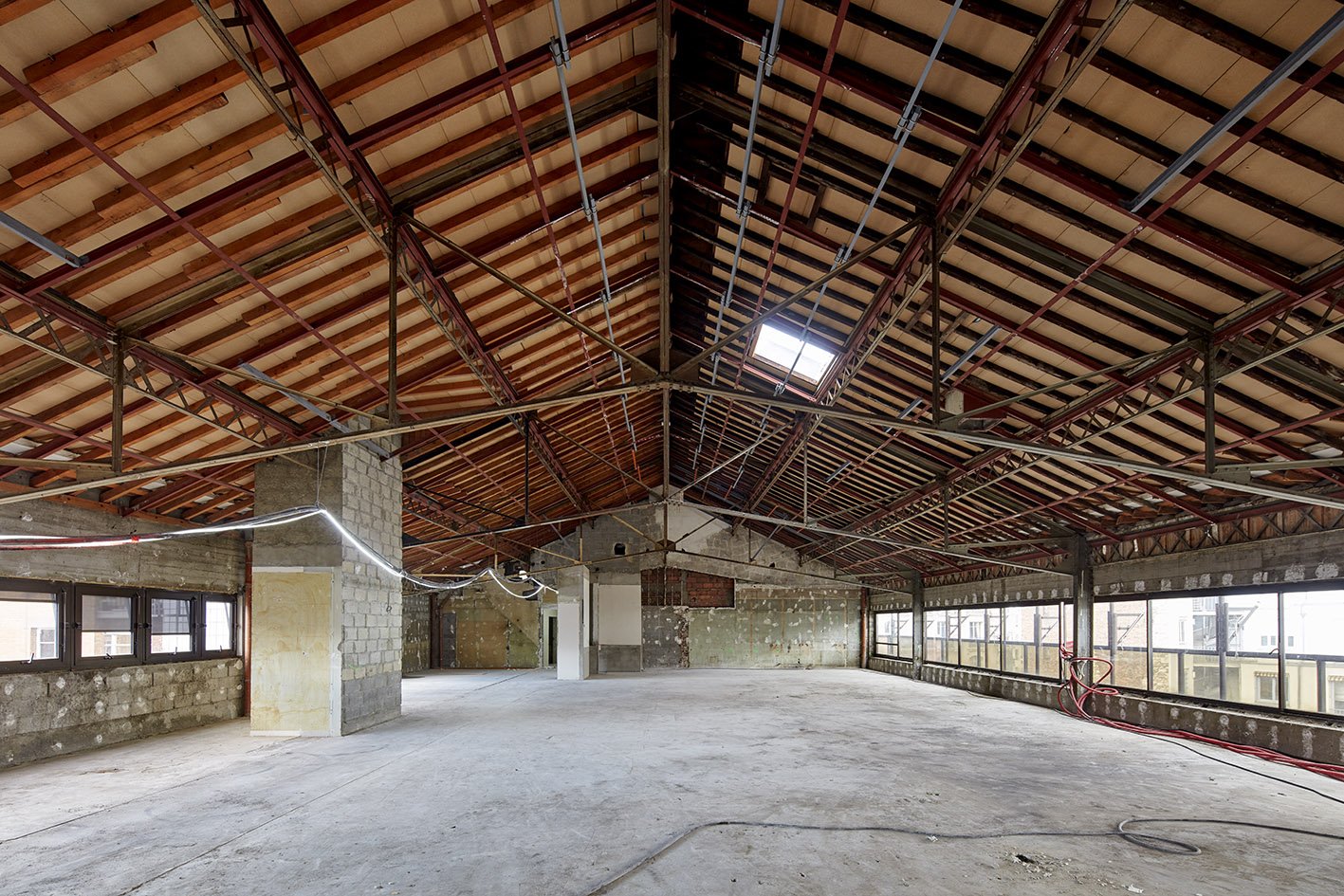
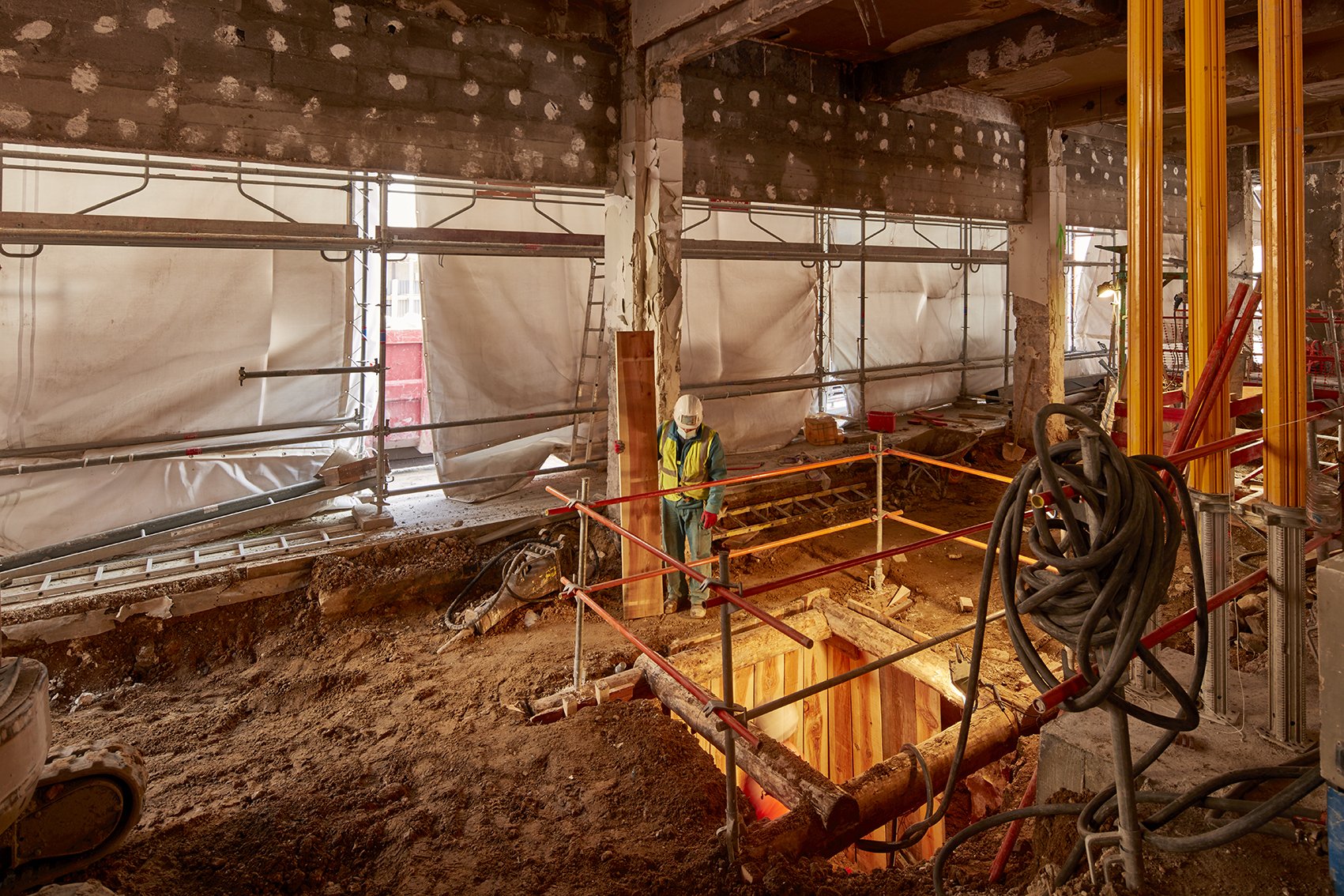
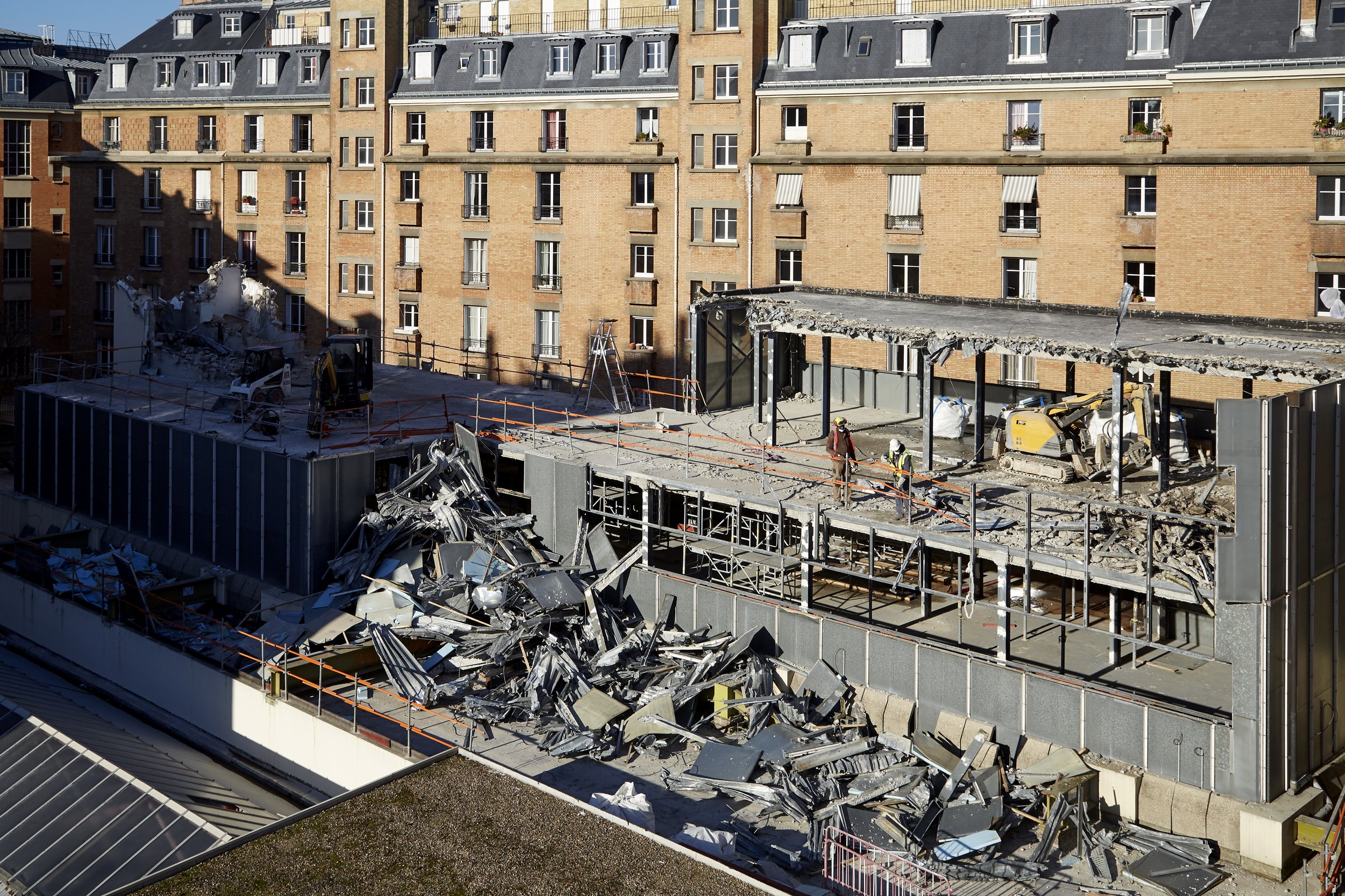
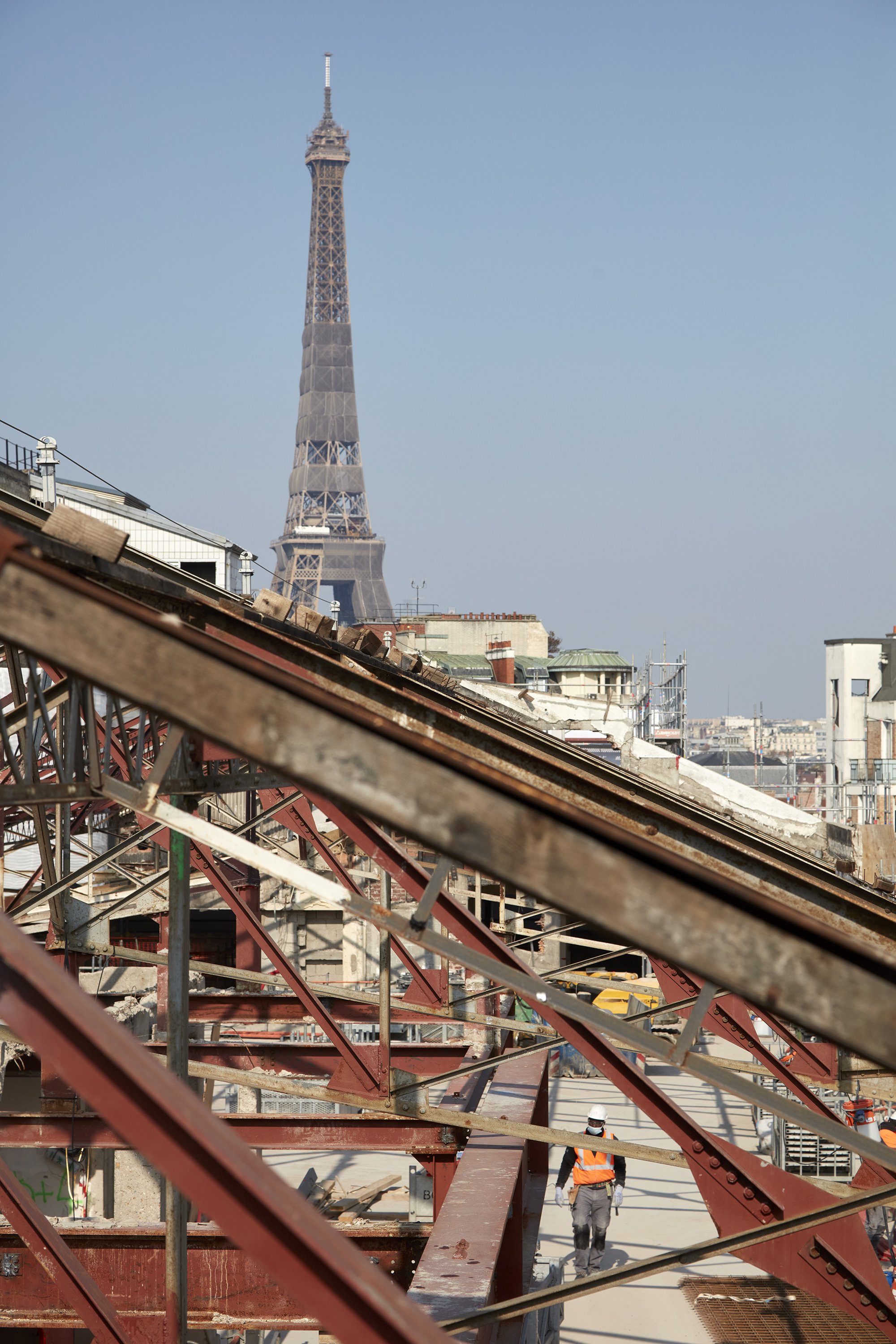
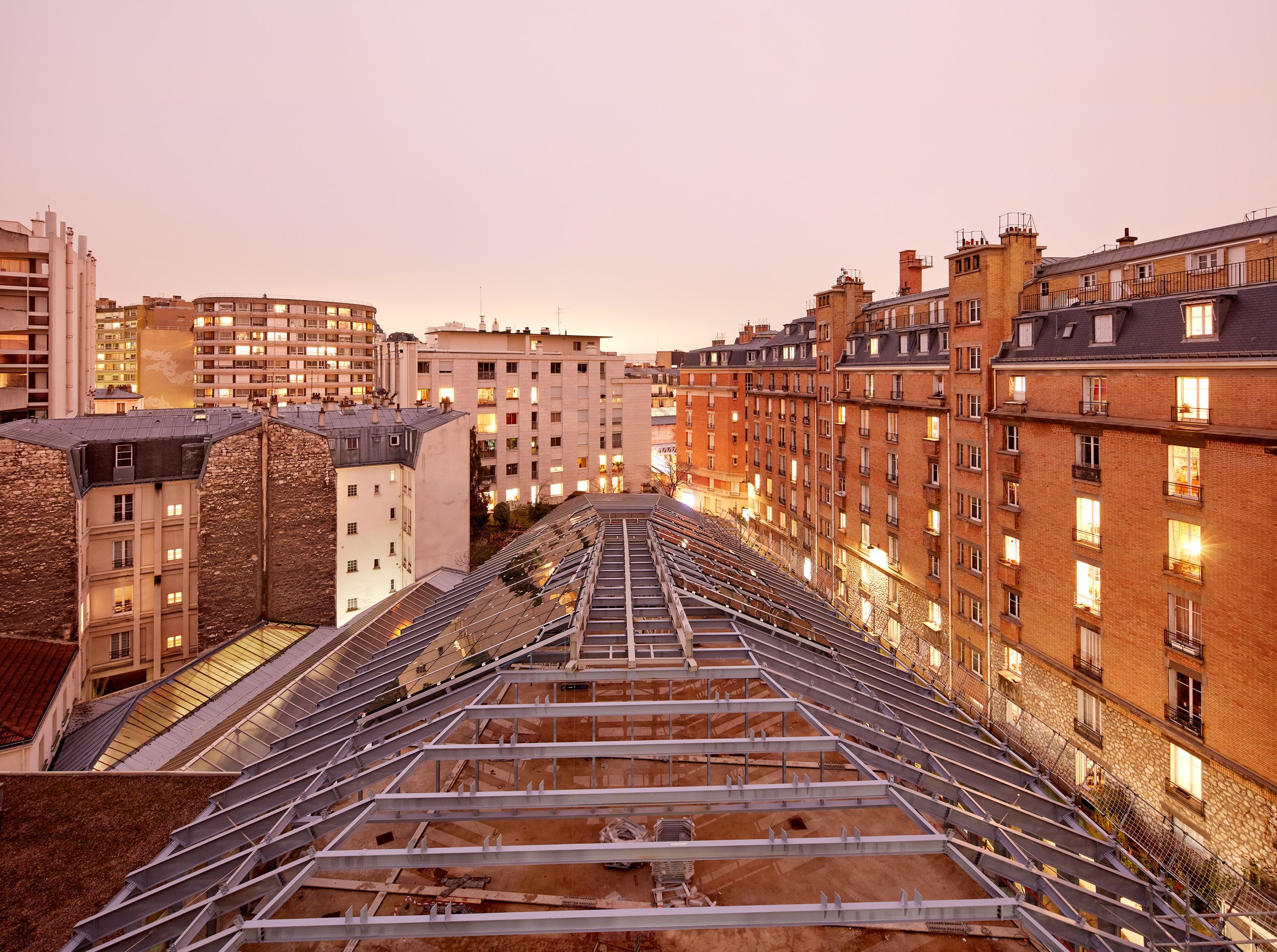
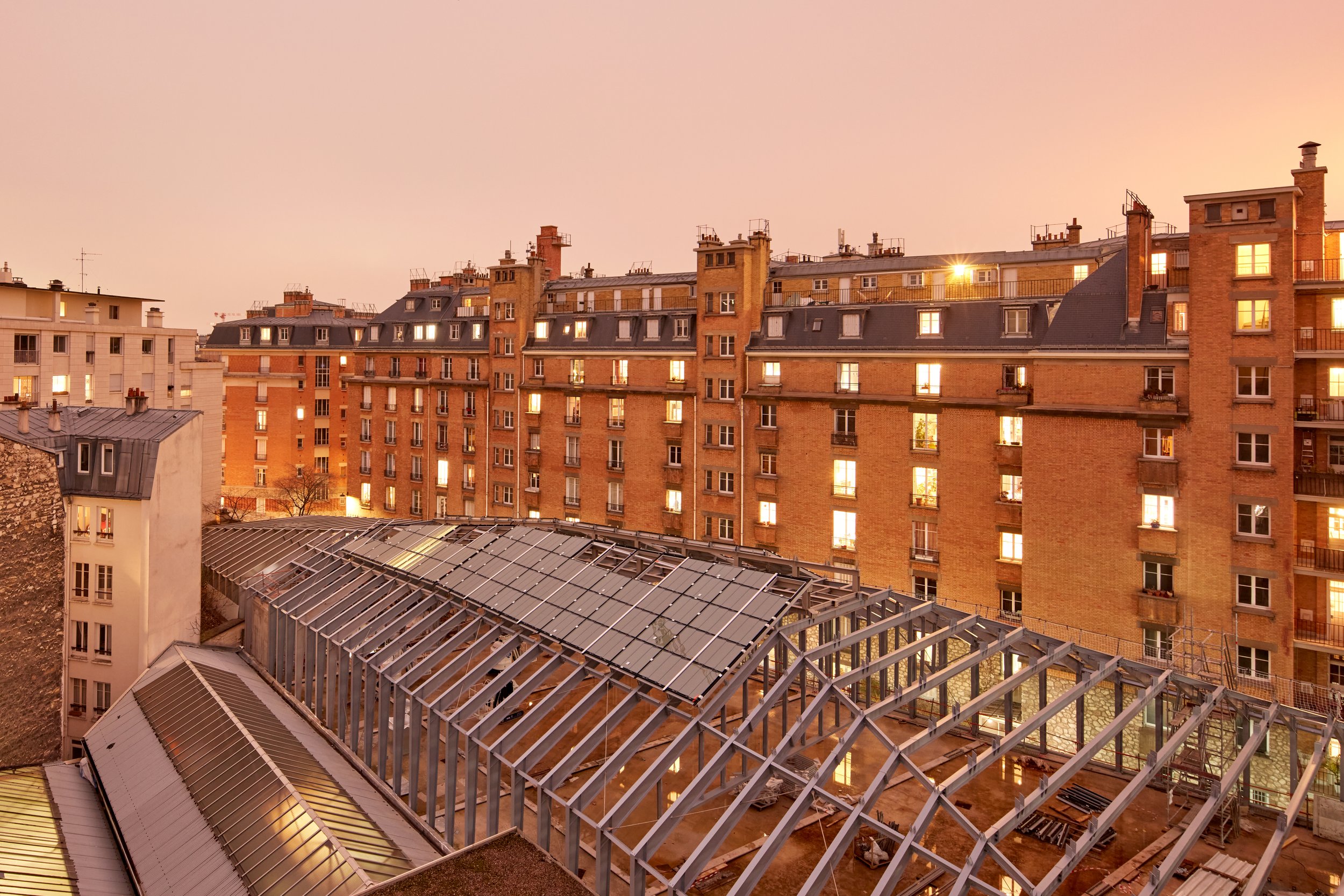
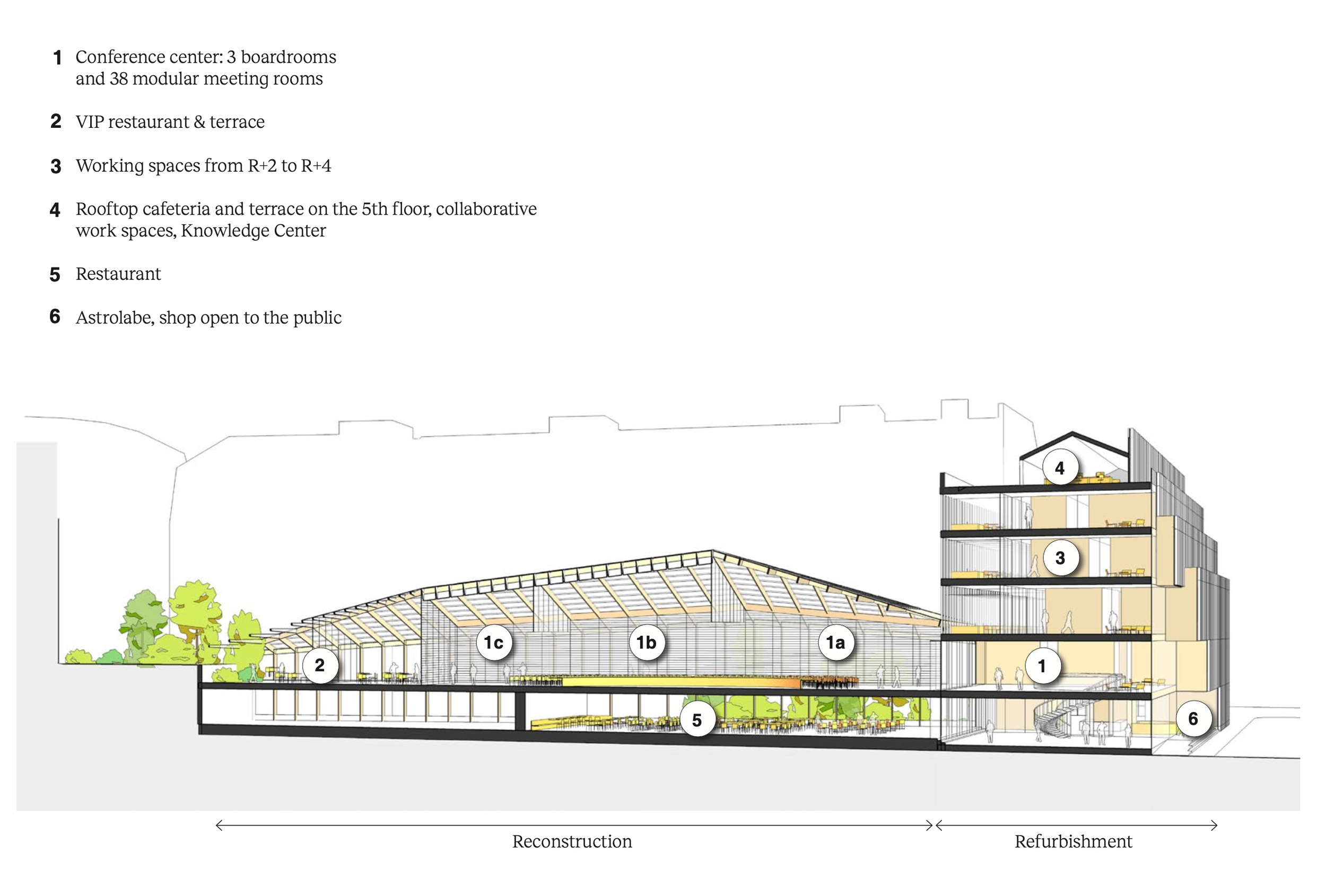
An exemplar of excellence in design: The New Conference Center
An awe-inspiring conference center rises majestically above pre-existing parking levels to take center stage at the heart of this magnificent complex. In all its splendor, architectural innovation is on display here. An impressive 15cm-wide welded portal frame, meticulously set on a 1.30m grid, greets visitors as they approach the grand entrance. An architectural masterpiece in its own right, the glazed roof boasts ethereal glass panels and aluminum slats, an exquisite blend that welcomes natural light while jealously guarding its sanctity. The result is a modern, yet timeless monument to engineering and design. Its structure is a true testament to the skill of the workers who meticulously constructed this masterpiece. It stands as a reminder of the boundless possibilities of modern architectural innovation.
Embracing the vibrant tapestry of Paris, the new headquarters of the European Space Agency beckons all to join in the celestial adventure of cosmic exploration. This architectural triumph seamlessly fuses imagination, innovation, and science on a transcendent scale, reaffirming Paris as the global epicenter of architectural and scientific excellence. A celestial design odyssey, ESA's new headquarters connects the terrestrial with the cosmic, inviting us all to reach new heights. Its marvels extend beyond the walls, beckoning us to explore the cosmos with the same curiosity and enthusiasm as our ESA team of experts. We invite you to join us on this voyage of discovery, and take part in the greatest adventure of our lifetime.
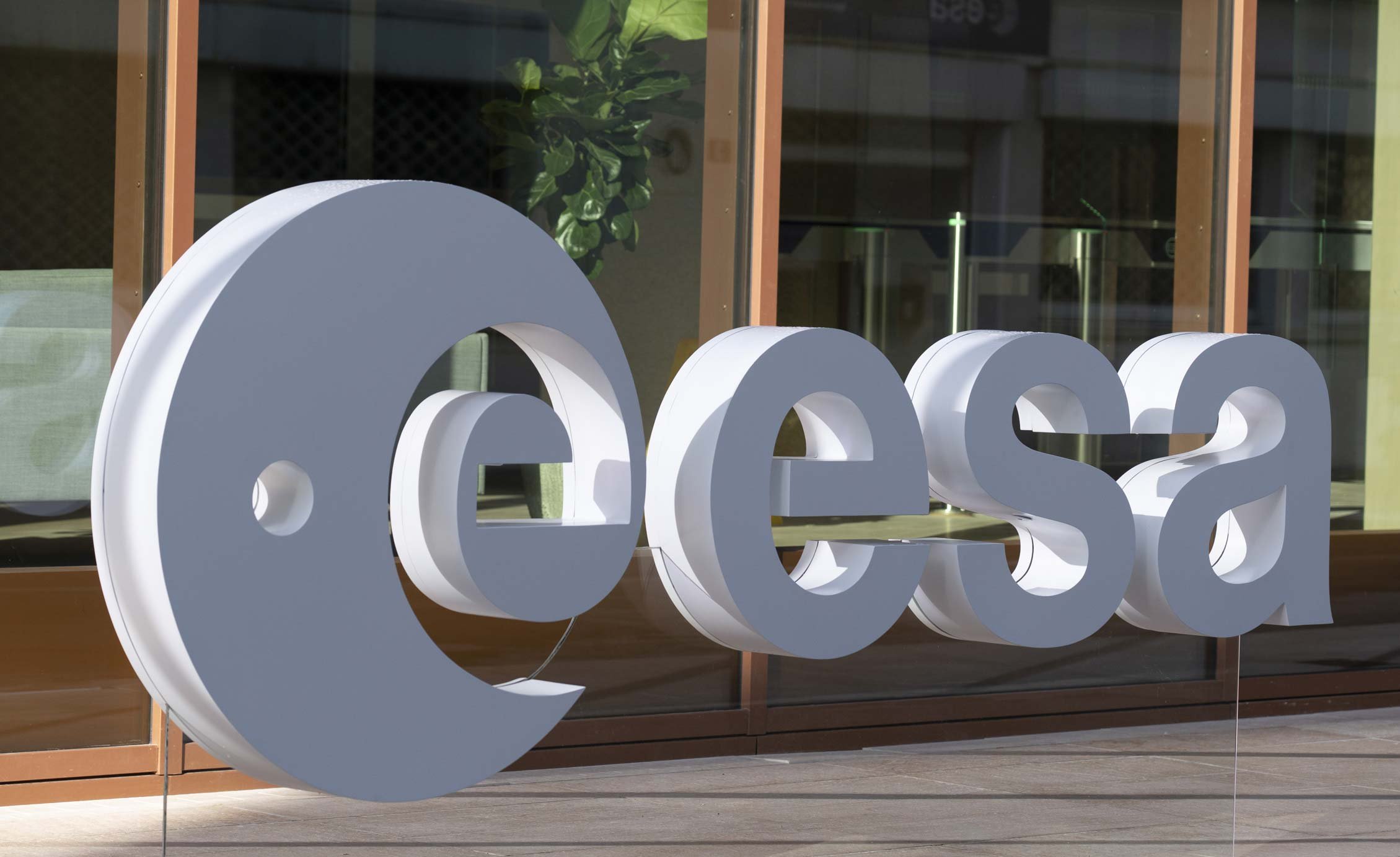
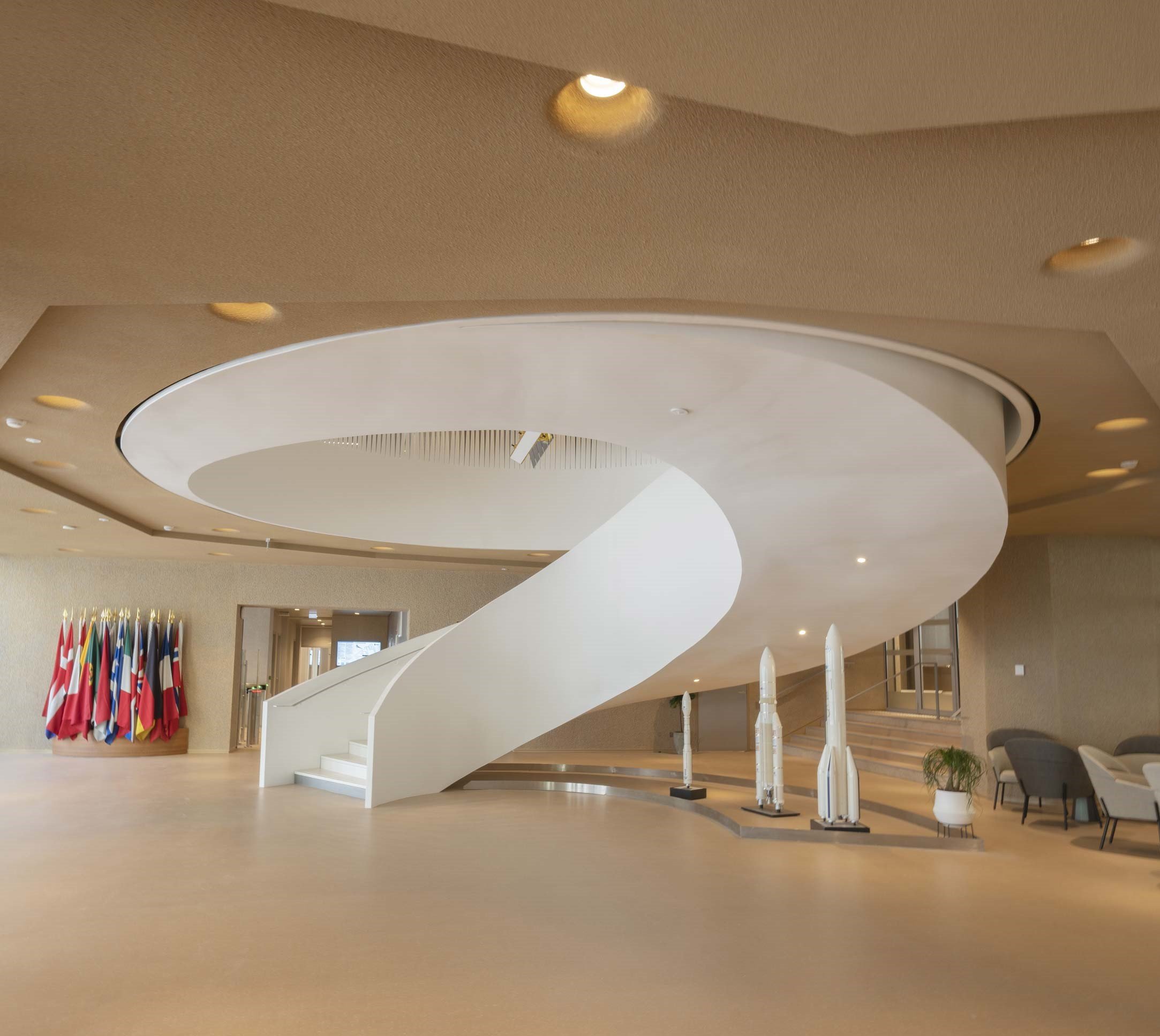
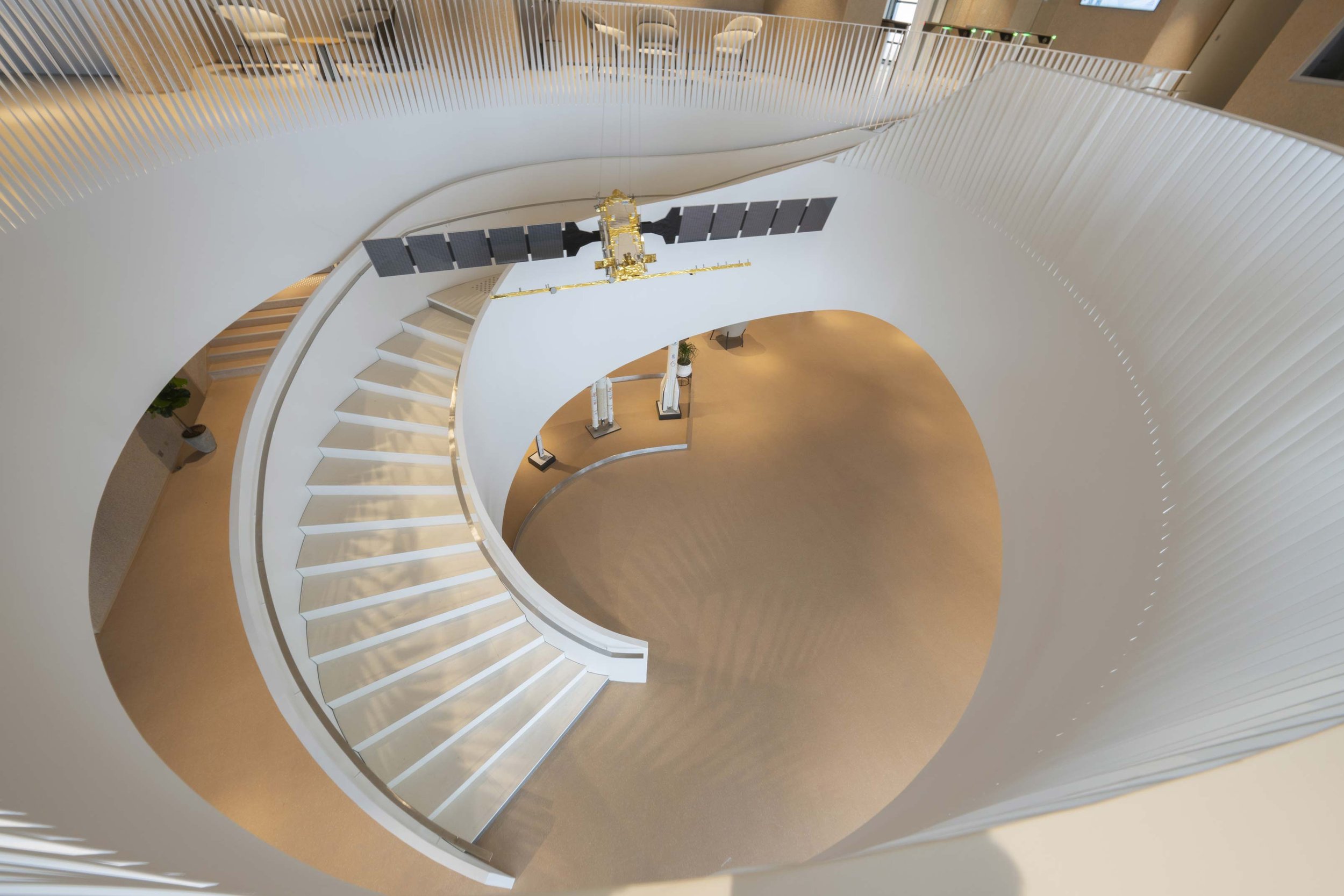
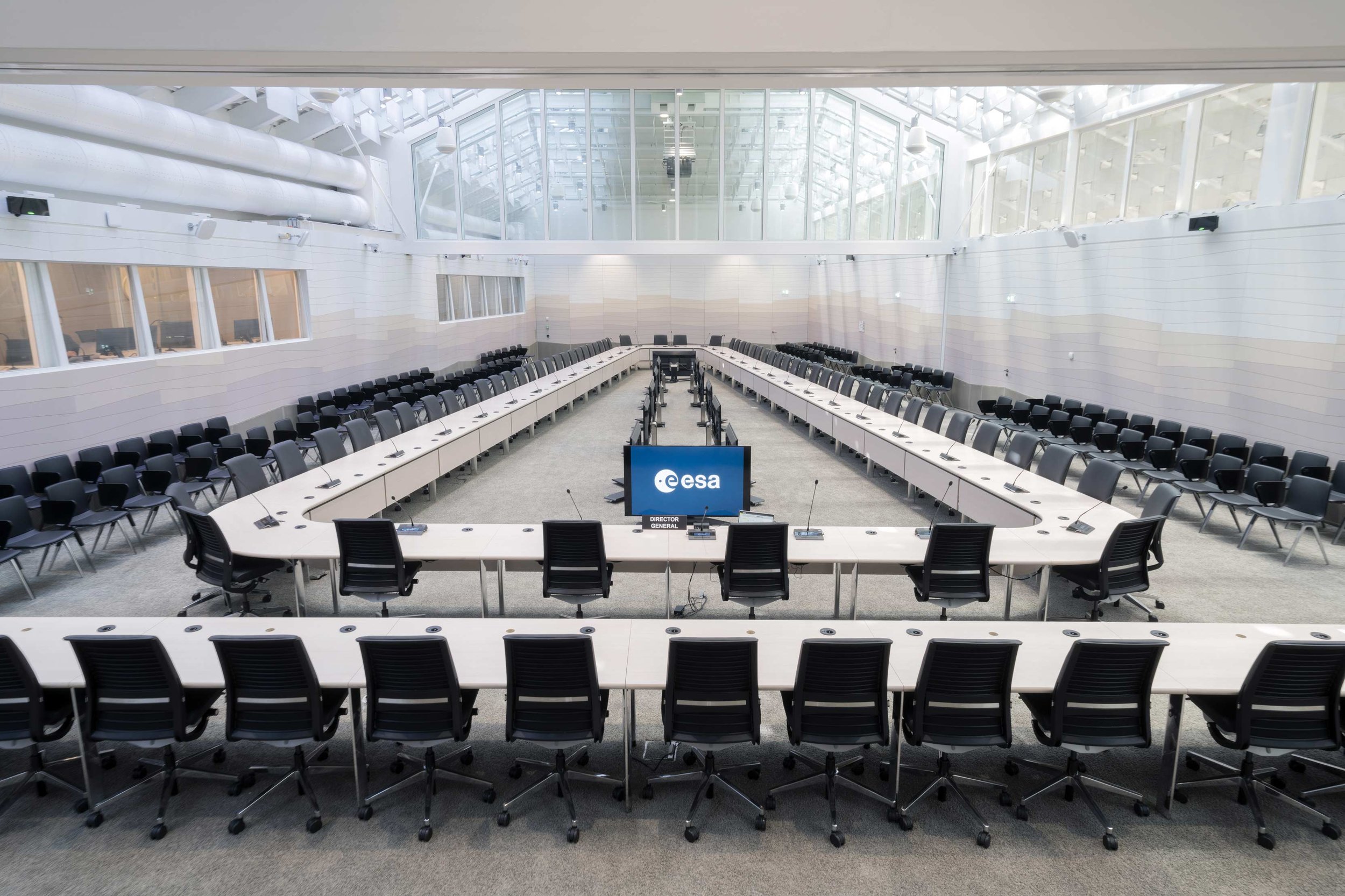
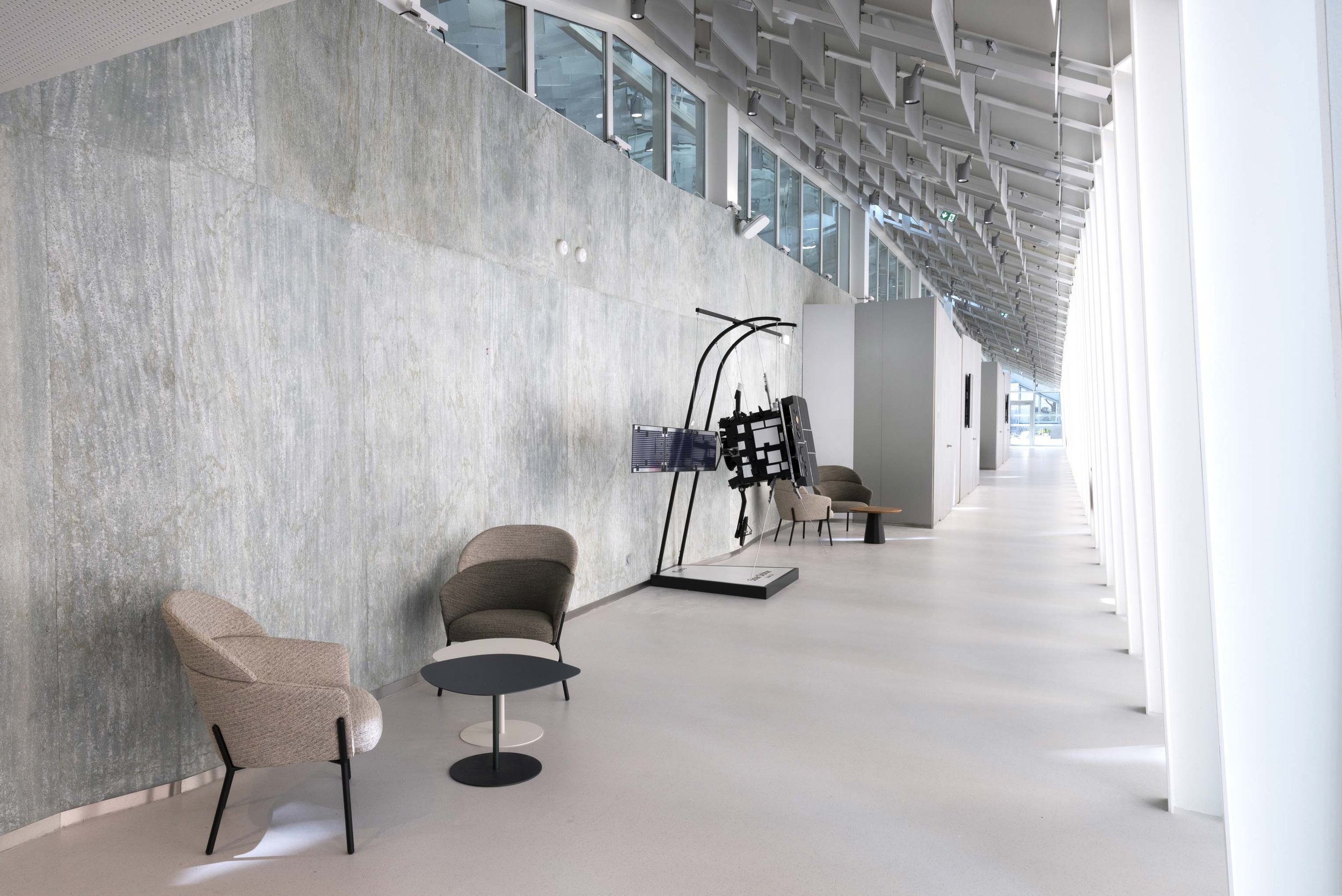
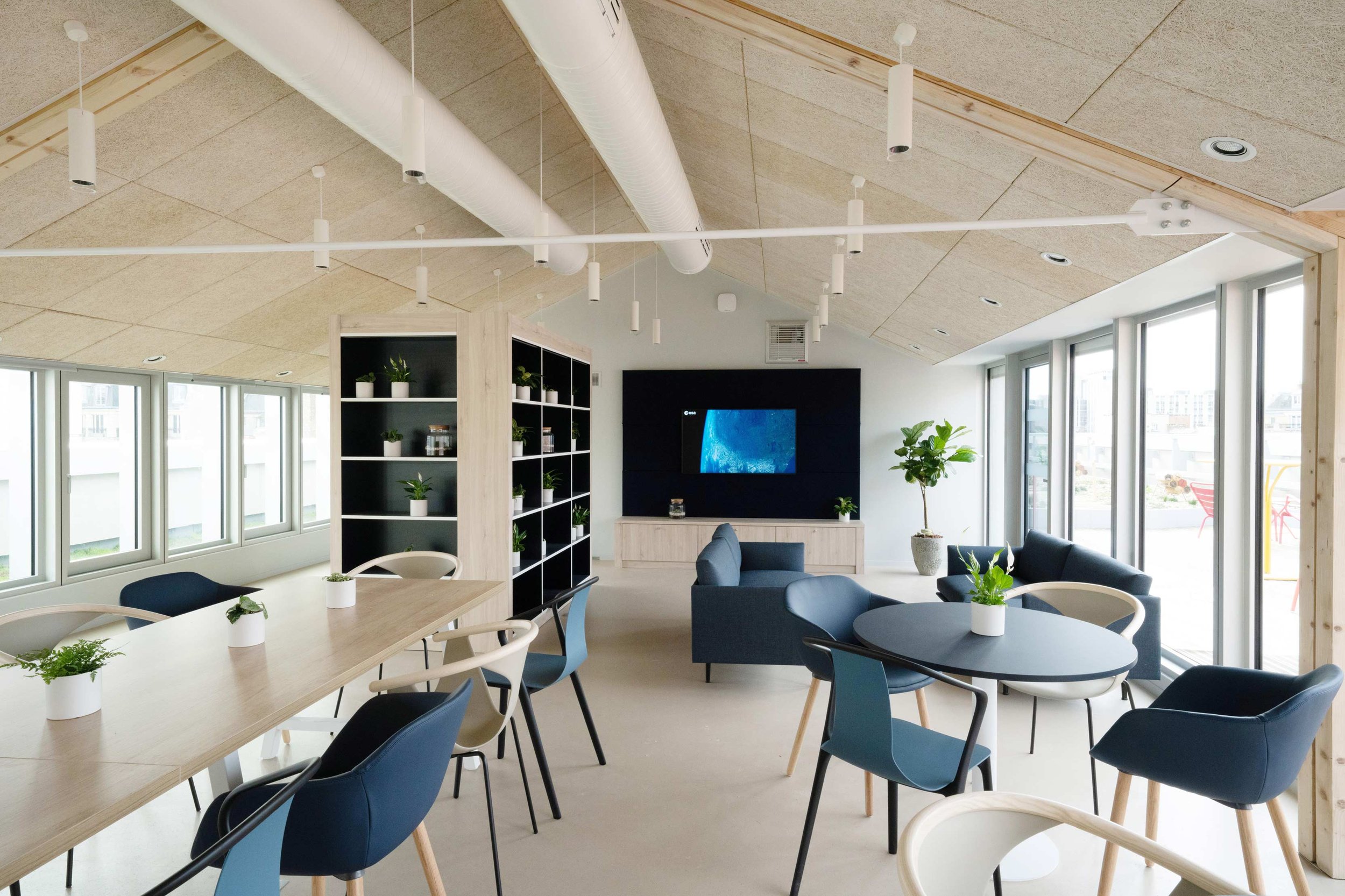
TECHNICAL SPECIFICATIONS
Adress : rue Mario Nikis, Paris 15th
Client : ESA - European Space Agency
Contracting authority support : Colliers
Developer : Sogelym Dixence
Architect and interior designer of commons spaces :
Atelier du Pont (Anne-Cécile Comar & Philippe Croisier)
Contract management : Corelo
Engineering team : AE75 (construction economics), Ingerop (fluides), VP & Green (structure and façades), Le Sommer (sustainable engineering), Peutz (acoustics), Cosil Peutz (light designer), Convergence (kitchen), Omega Al- liance (asbestos removal and demolition), Socotec (control office and SPS) General contractors : Bouygues Construction renovation private
Office layout and furniture : Majorelle
Surface : 11 592 m2
Date : November 2022
Sustainable specifications : HQE Bâtiment Durable Excellent level, Breeam Very Good level, Well Core and Shell Gold level
Photographers : Frédéric Delangle and ESA - European Space Agency
About Atelier du Pont
Founded in 1997, Atelier du Pont is an architecture and interior design firm that today employs 45 people from all walks of life, led by two partners: Anne- Cécile Comar and Philippe Croisier.
The agency works in a wide range of fields: facilities, housing, offices, private homes, hotels, boutiques, restaurants... and questions new ways of living, working and relaxing, to create places that are fair, creative and inspiring, in France and abroad.
His approach is global. Whether its projects take the form of a small 15 m2 boutique or a 10,000 m2 building, Atelier du Pont tackles every aspect: architecture, urban planning, interior design, furniture, art direction, space planning... Each project is a new adventure.
The agency has won numerous French and international awards:
French Design by VIA, Prix Régional de
la Construction Bois, ArchiDesignClub Awards, Trophée Eiffel, S.Arch Awards, The Plan Award, Prix AMO, Geste d’Or...
About ESA
The European Space Agency (ESA) is Europe’s gateway to space.
ESA is an intergovernmental organization founded in 1975 and headquartered in Paris. Its mission is to develop Europe’s space capabilities, ensuring that investment in the space sector benefits citizens in Europe and around the world.
ESA has twenty-two member states: Austria, Belgium, the Czech Republic, Denmark, Estonia, Finland, France, Germany, Greece, Hungary, Ireland, Italy, Luxembourg, the Netherlands, Norway, Poland, Portugal, Romania, Spain, Sweden, Switzerland and the United Kingdom. Other countries have associate member status.
By coordinating the financial and intellectual resources of its members, ESA can undertake programs and activities that go far beyond what any individual country could achieve on its own. In particular, it is cooperating with the EU on the implementation of the Galileo
and Copernicus programs, as well as
with Eumetsat on the development of meteorological missions.
To find out more: www.esa.int / www.esa.fr
Wa House - A Harmonious Blend of Nature and Design
Perched amidst the breathtaking natural landscapes of Wakayama, Gwenael Nicolas's modern fisherman's house stands as an iconic yet unassuming testament to architectural brilliance. Set within the enchanting backdrop of Nanki-Shirahama, a national park renowned for its stunning beauty, this architectural gem seamlessly fuses with its surroundings, creating a harmonious sanctuary that embraces the wild allure of the coast.
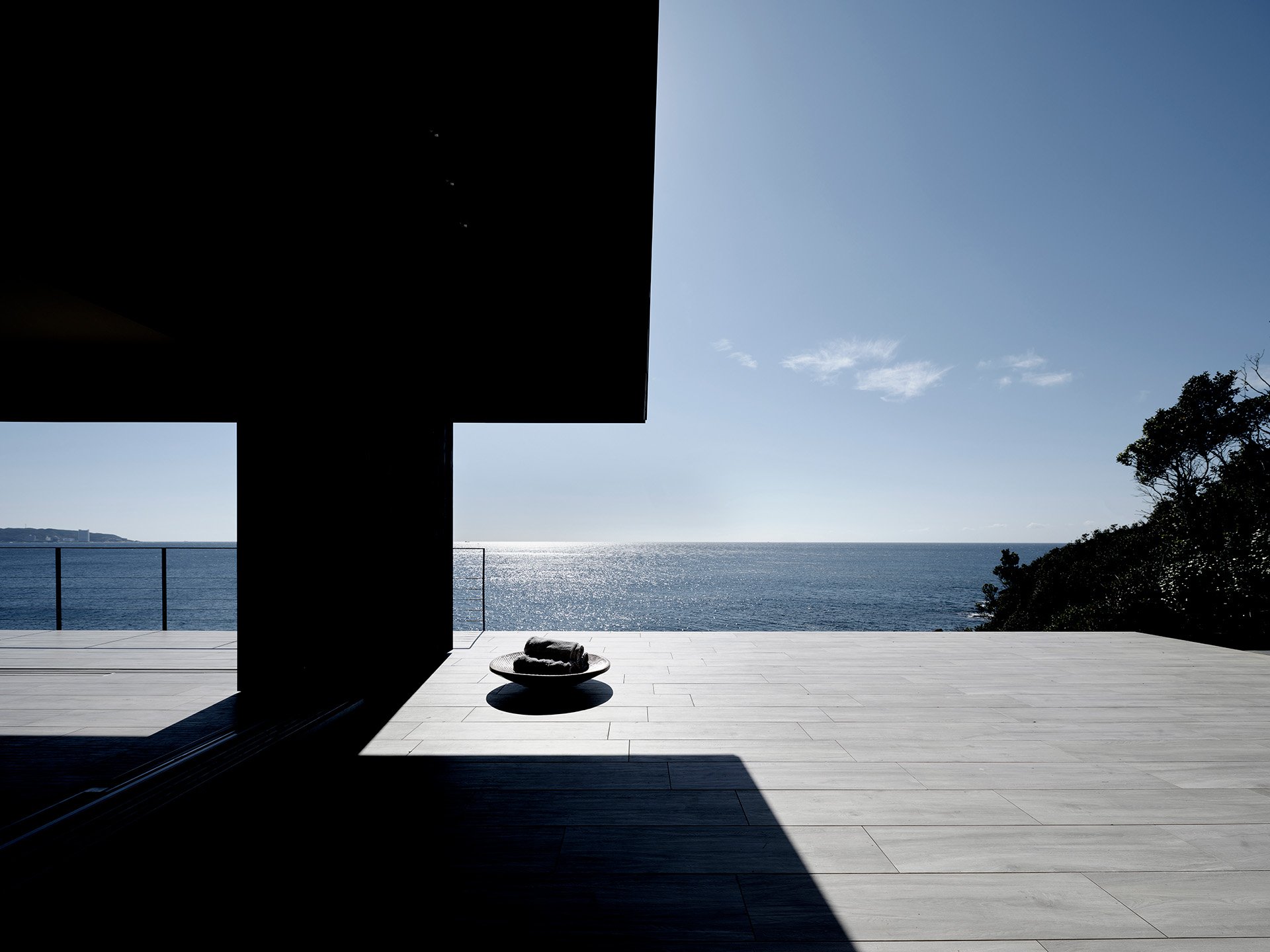
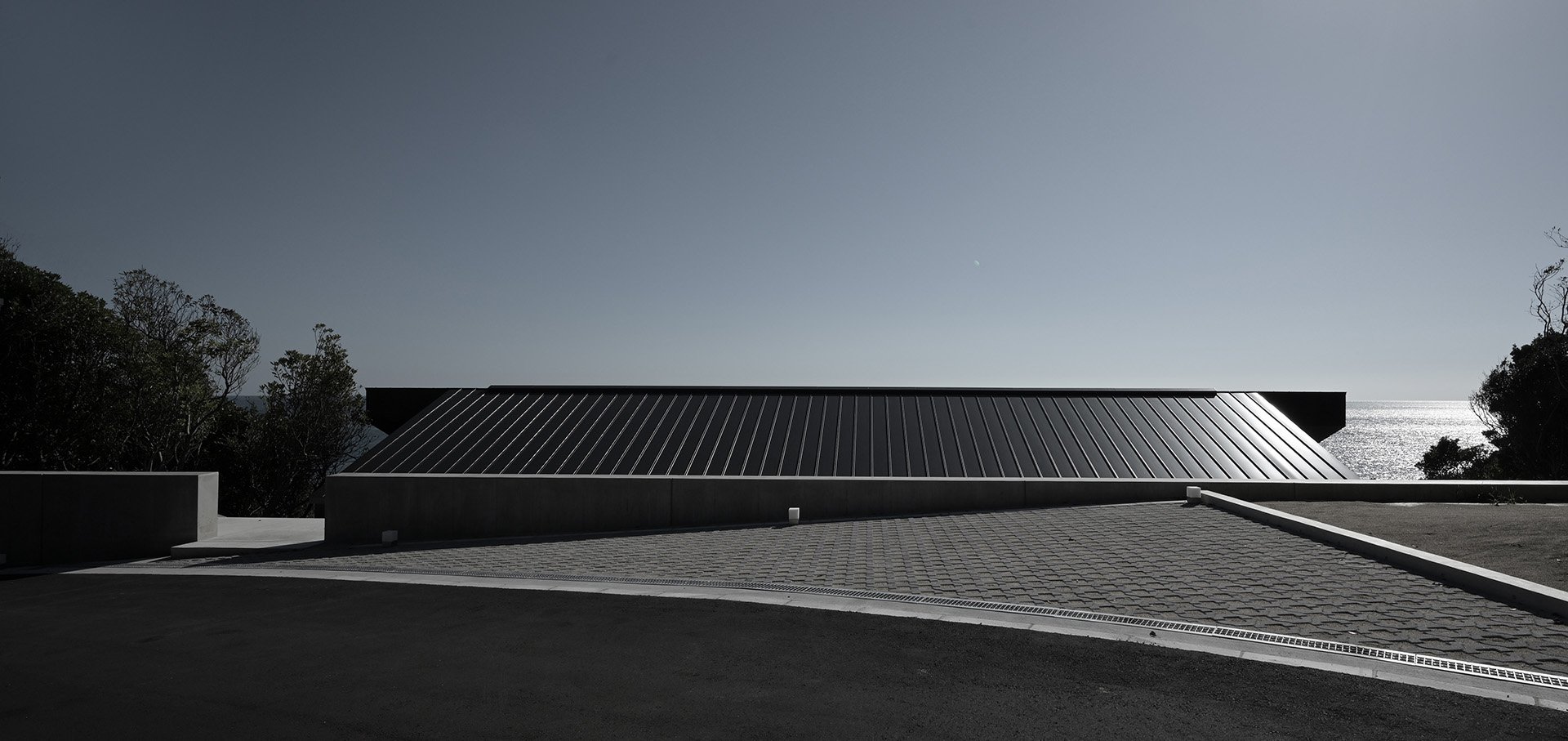
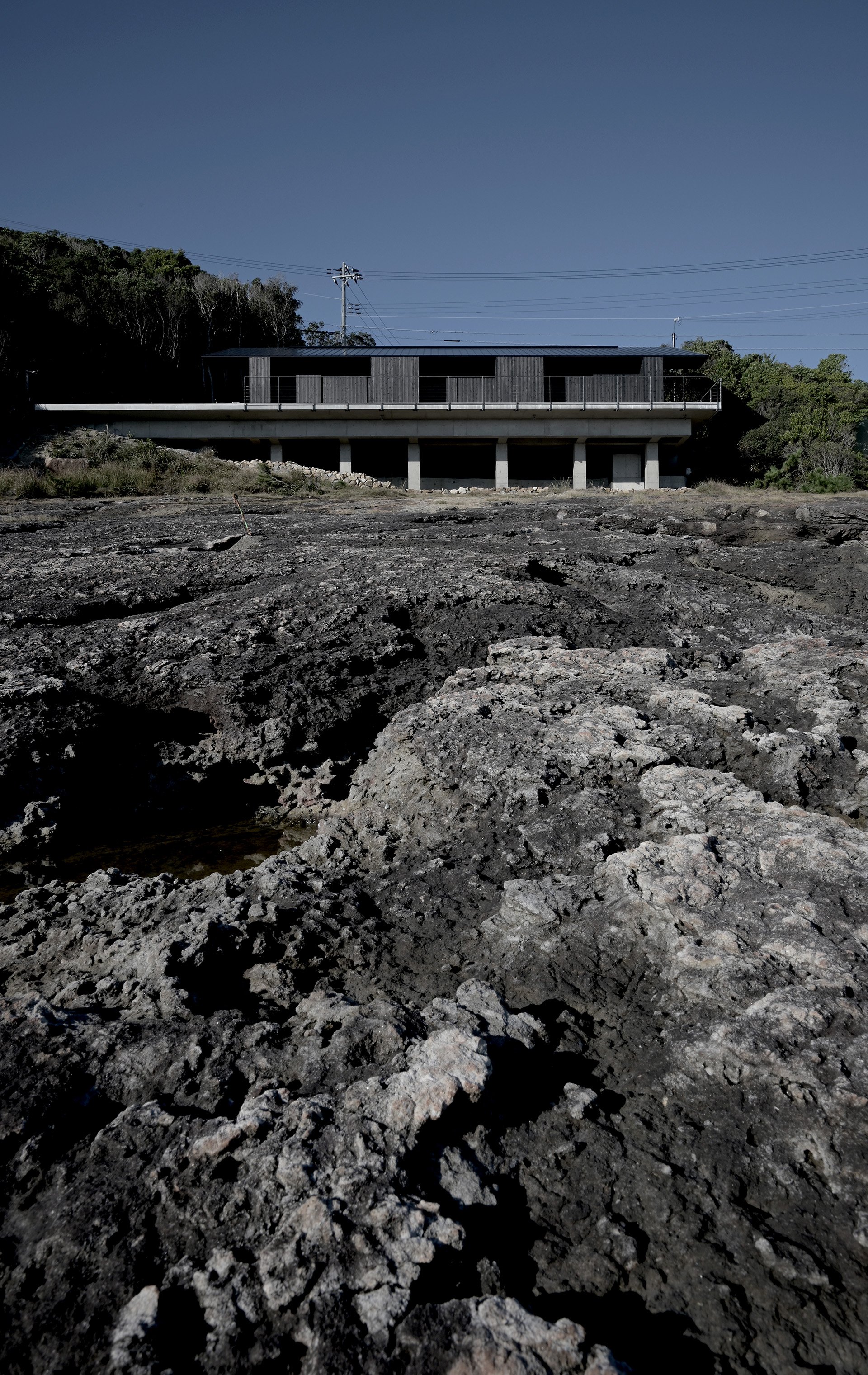
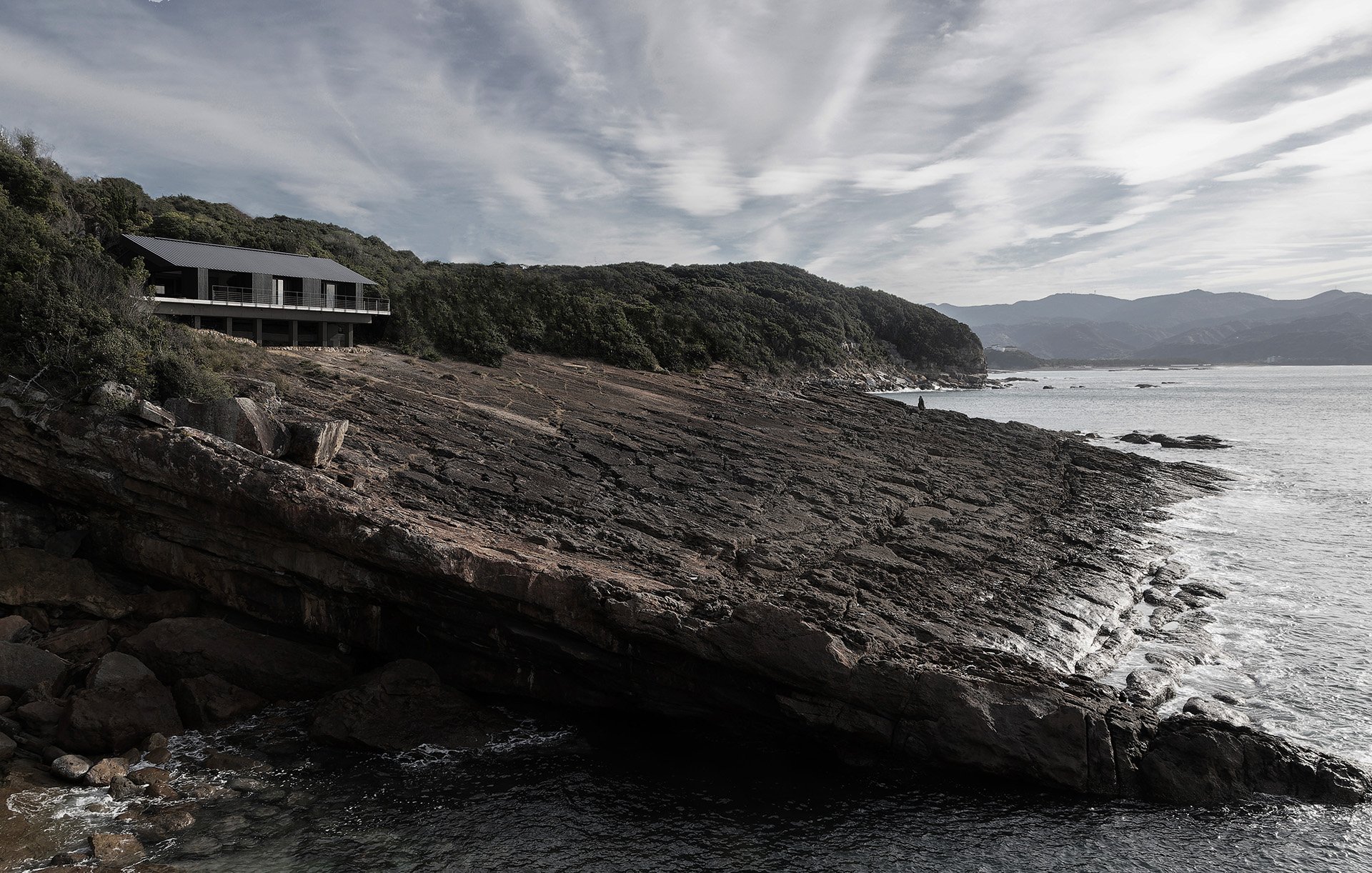
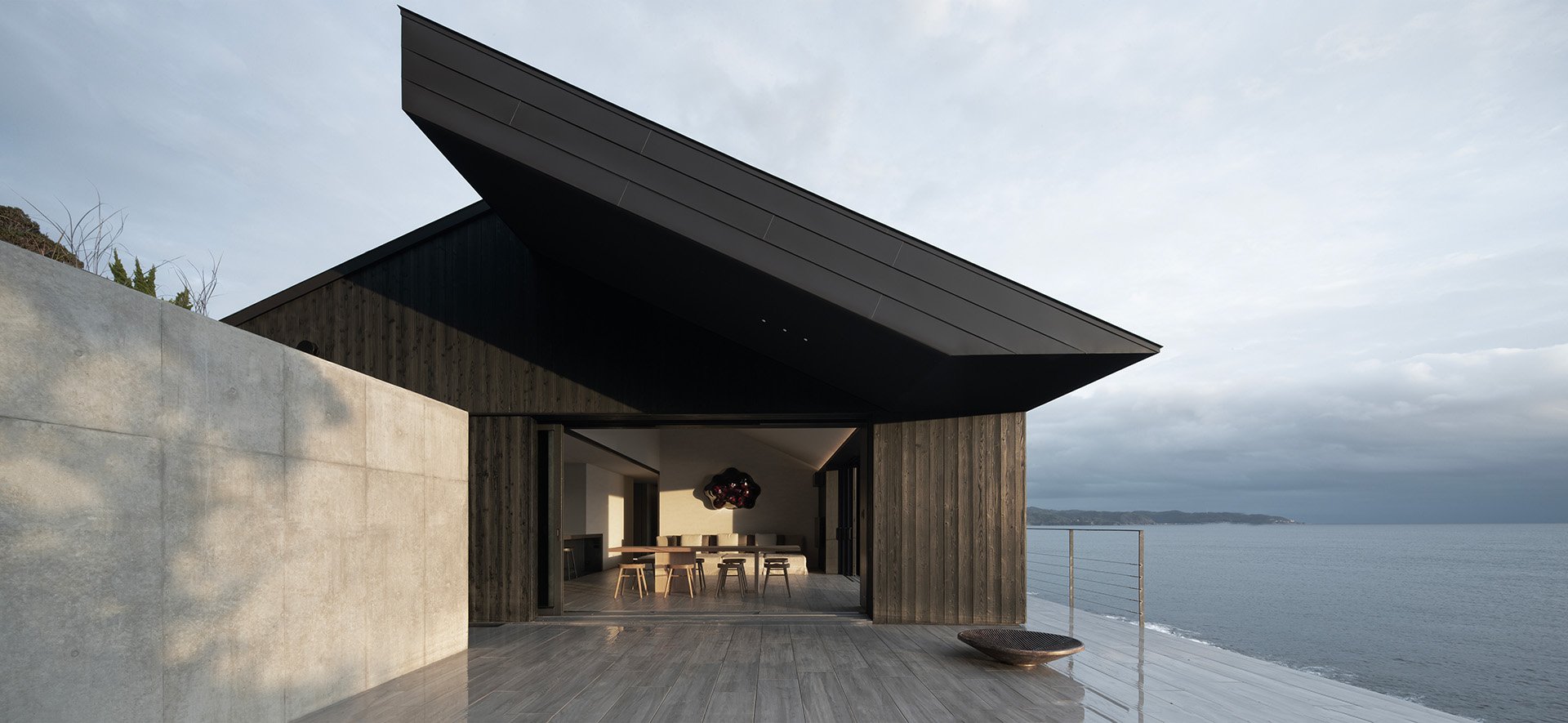
Perched amidst the breathtaking natural landscapes of Wakayama, Gwenael Nicolas's modern fisherman's house stands as an iconic yet unassuming testament to architectural brilliance. Set within the enchanting backdrop of Nanki-Shirahama, a national park renowned for its stunning beauty, this architectural gem seamlessly fuses with its surroundings, creating a harmonious sanctuary that embraces the wild allure of the coast.
Born on the Atlantic shores, Nicolas has drawn inspiration from his upbringing to create a house that boldly confronts nature while respecting its power. In collaboration with Haretoke Architects, every aspect of this carefully crafted dwelling has been thoughtfully considered to ensure a symbiotic relationship between the man-made structure and the untamed environment.
The design of this single-story abode is a delicate dance with nature. Its height is meticulously calculated to mirror the ocean's horizon, allowing the house to blend effortlessly into the coastal panorama. The distinctive wing-like roof, designed to withstand the fierce ocean winds, lends the structure its unique character. The wooden house delicately perches atop a concrete foundation, elevating it above the rocky terrain. In the face of storms, the waves gracefully flow beneath the concrete pillars, ensuring the house remains resilient. Its dark hues seamlessly merge with the natural surroundings and the reef's dark stone, harmonizing the built environment with the coastal ecosystem.
The extended roof serves a dual purpose, providing shade for the terraces while paying homage to the vernacular architecture of the region. Reimagined as a minimalist sculptural object, it embodies the essence of simplicity and functionality. Covered in Yakisugi, burnt cedar wood, the house takes on a rustic yet refined aesthetic, perfectly suited for its extreme location.
Undoubtedly, the house's crowning glory lies in its sweeping 180-degree ocean views. The expansive terrace seemingly floats above the sea, flawlessly merging with the living room to create a seamless transition from indoor to outdoor spaces. To emphasize this continuity, the same flooring material flows throughout the house, blurring the boundaries between nature and interior.
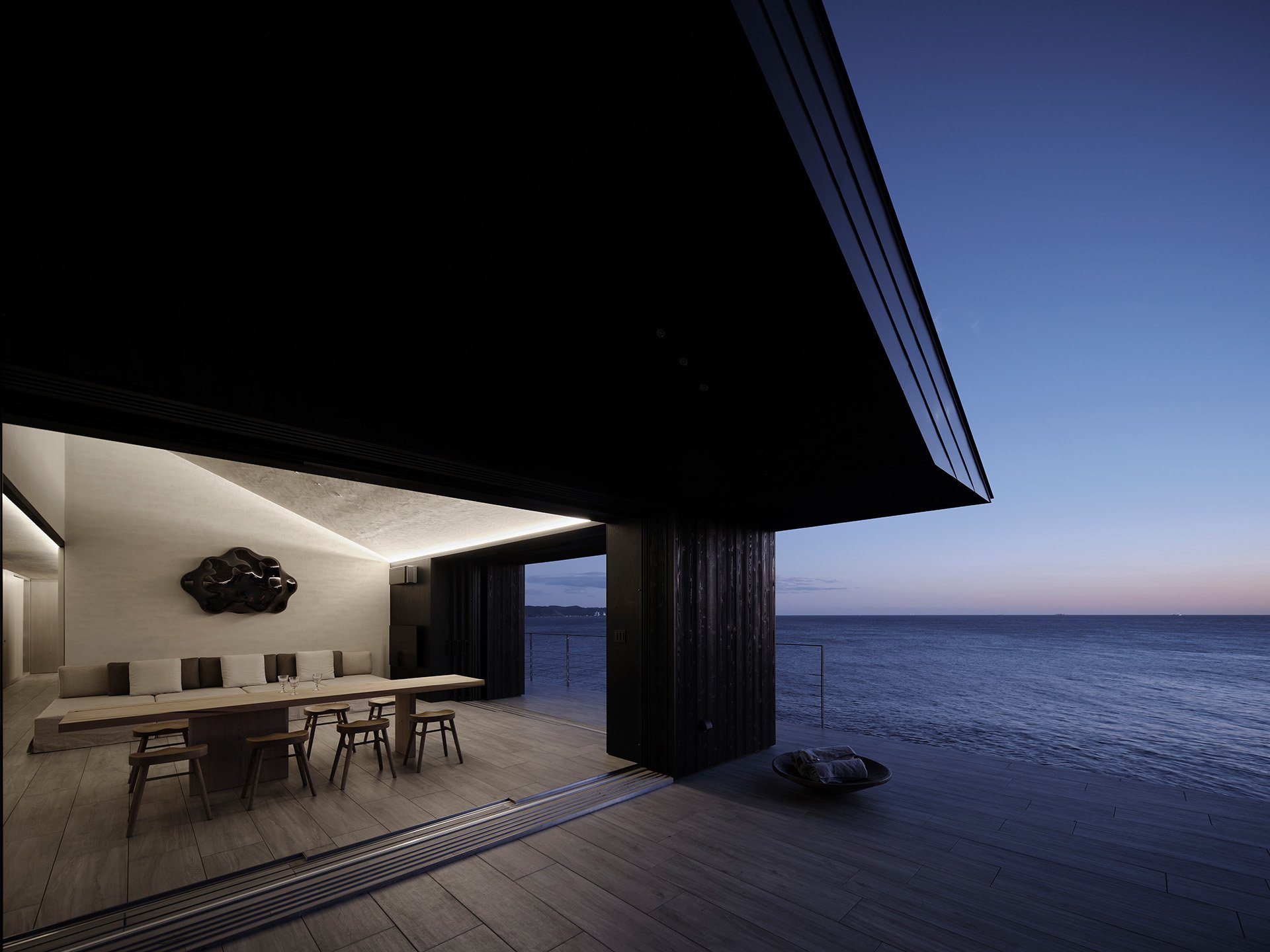
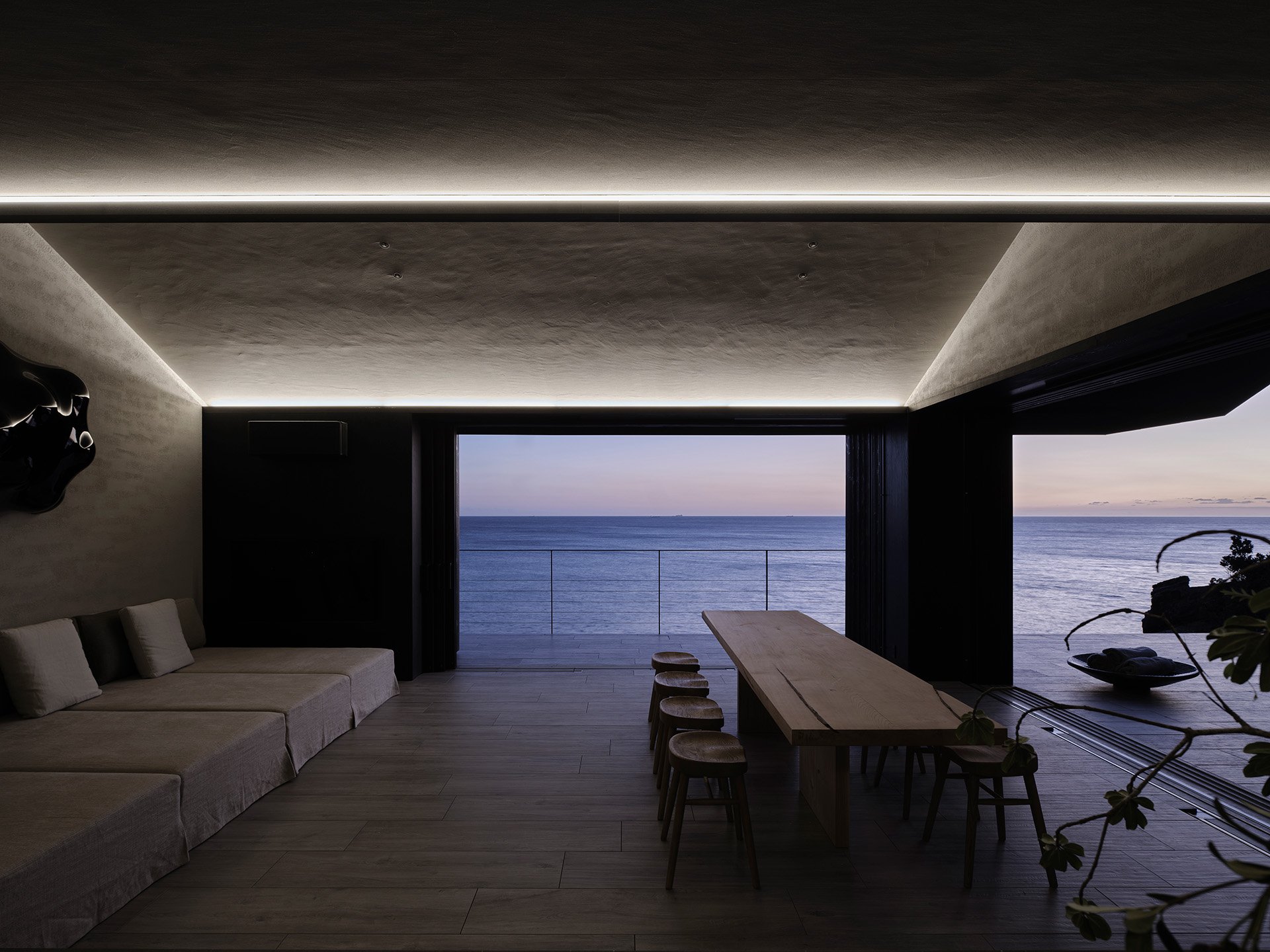
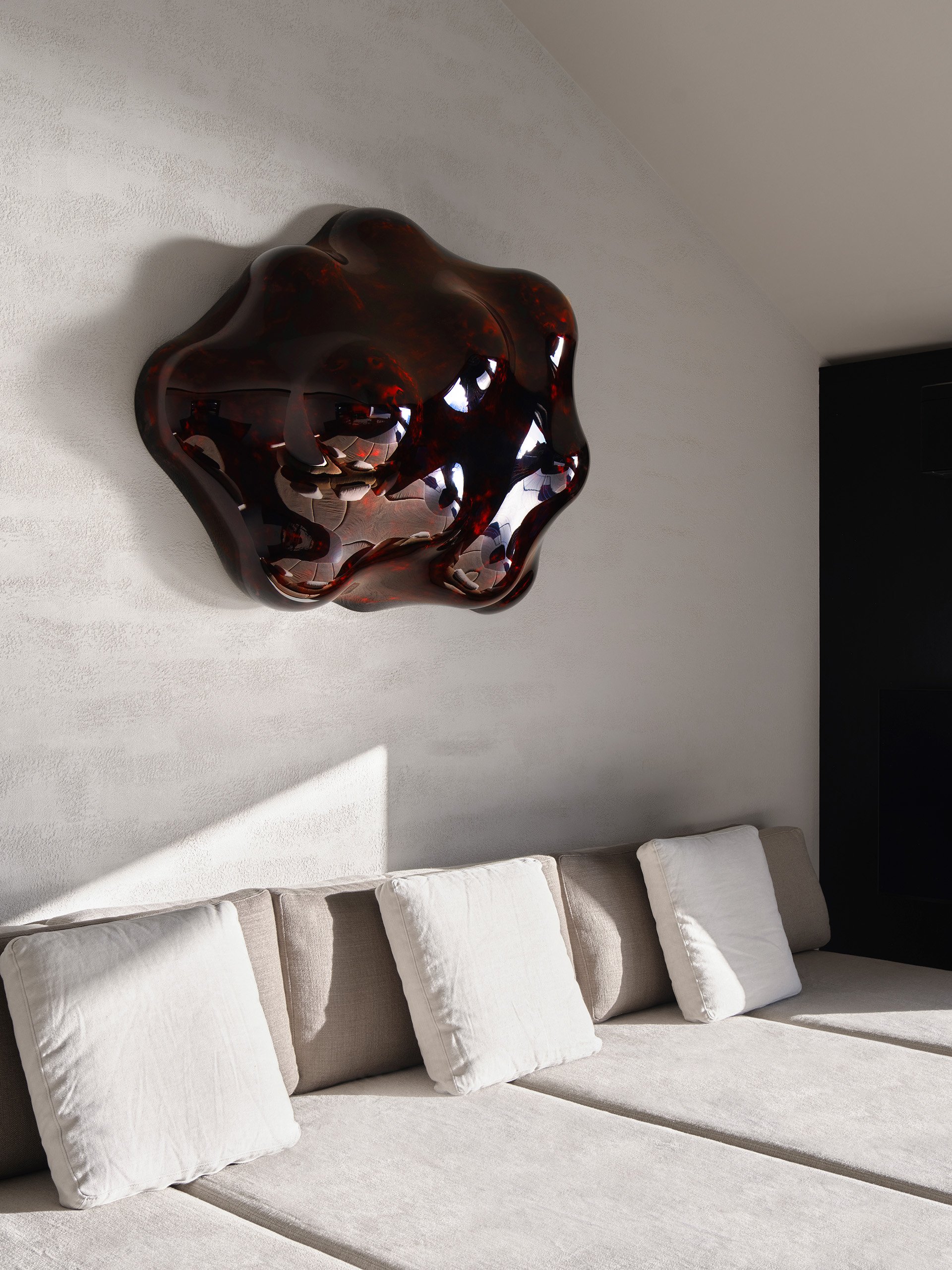
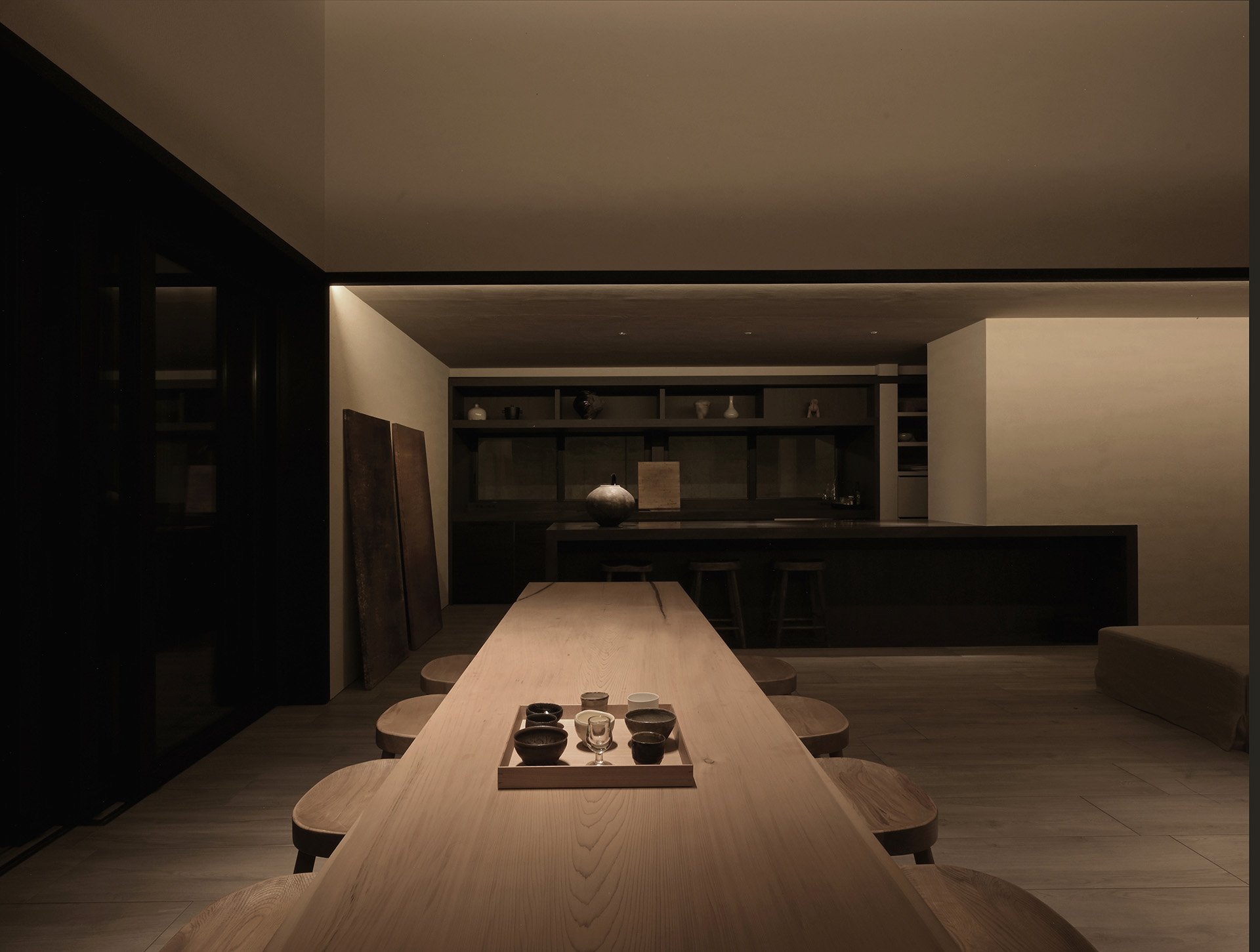
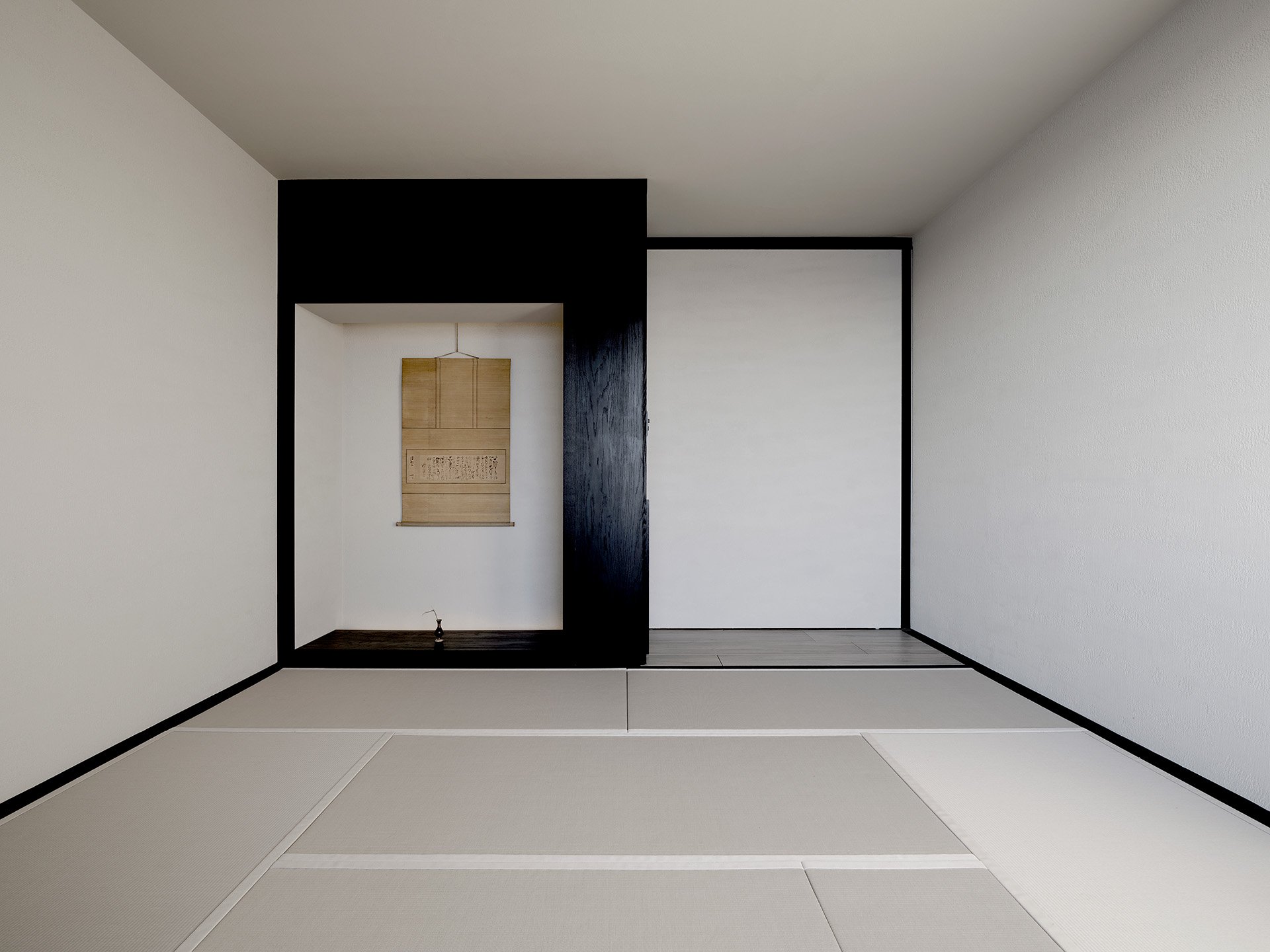
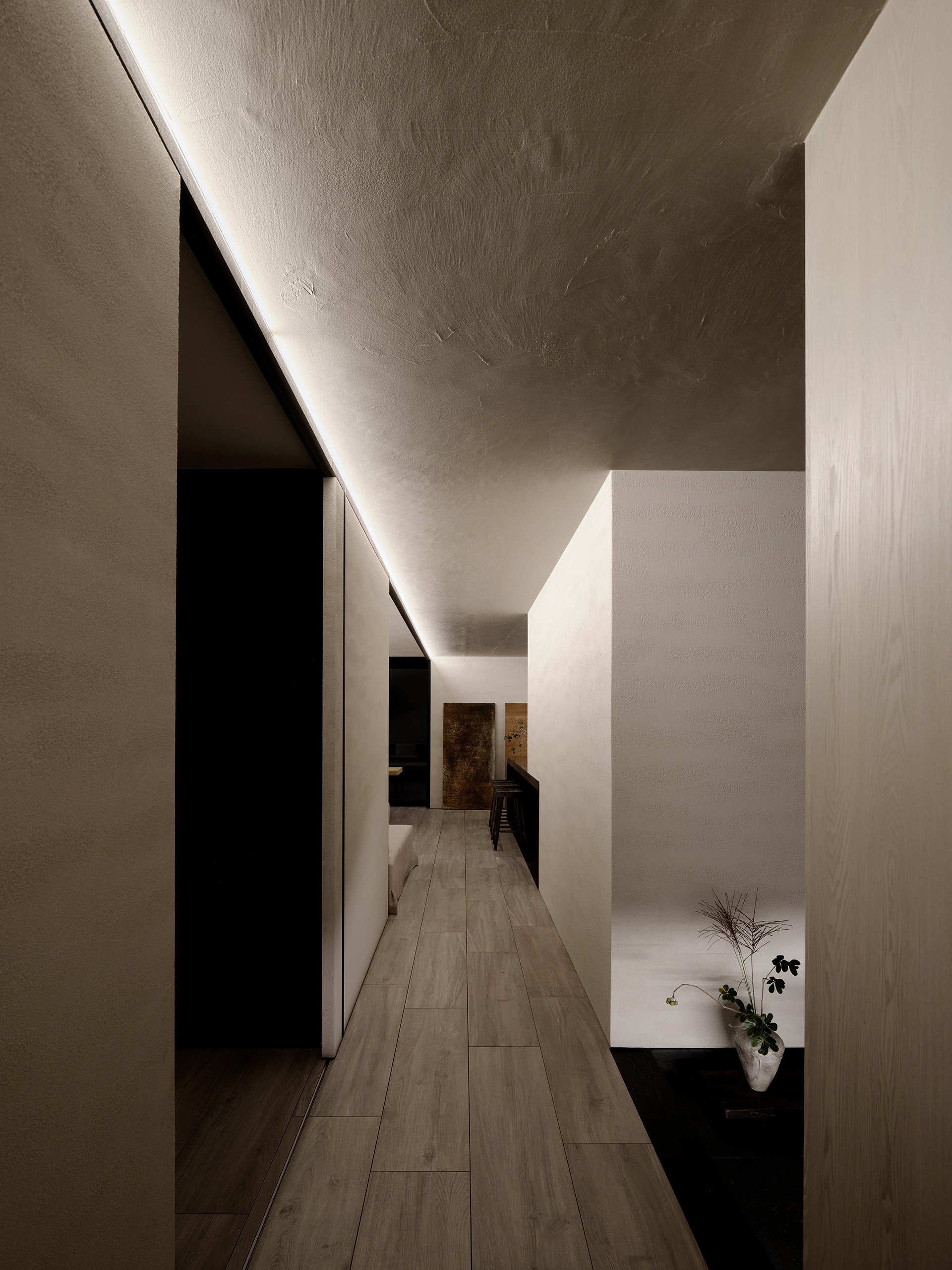
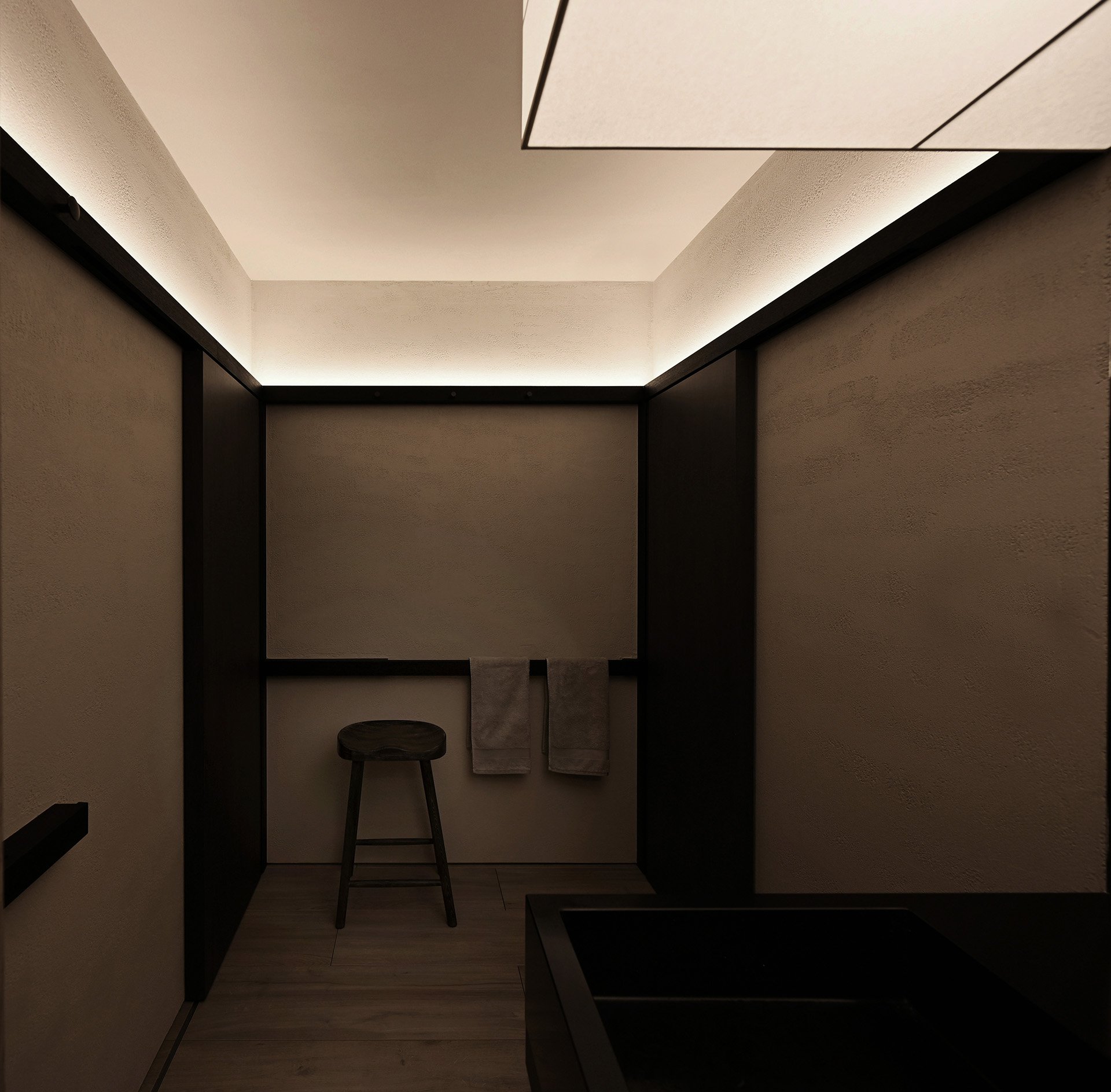
Throughout the house, surprising objects and artworks, reminiscent of marine treasures, punctuate the spaces. Genta Ishizuka's lacquer art above the sofa adds an exquisite touch, drawing on the beauty of the sea. The open kitchen, a monolithic centerpiece in the living room, invites residents to immerse themselves in the outside scenery while entertaining and cooking. Artistic rusty panels, created by nature itself, adorn the space, adding an organic element to the interior. With only two Japanese-style rooms, an atelier, and a spacious living room that opens generously to the ocean, the house's design ensures flexible use, be it for entertaining, tea ceremonies, or simply unwinding.
With a color palette and materials inspired by the natural environment, the house exudes warmth and continuity. From the rough-textured walls to the ceramic tiles and tatami floors, the warm gray tones evoke a sense of spaciousness and harmony. Large sliding doors seamlessly merge with the walls, dissolving the boundaries and inviting the outside in.
The bathroom, designed as a tranquil retreat within the house, immerses residents in an atmosphere of serene intimacy. An oversized suspended shade bathes the vanity area in a gentle and luminous light, offering a sense of comfort and relaxation. The lower bathtub, seemingly carved into the black stone floor, connects inhabitants with the raw sensations of nature, enhancing the house's primitive allure.
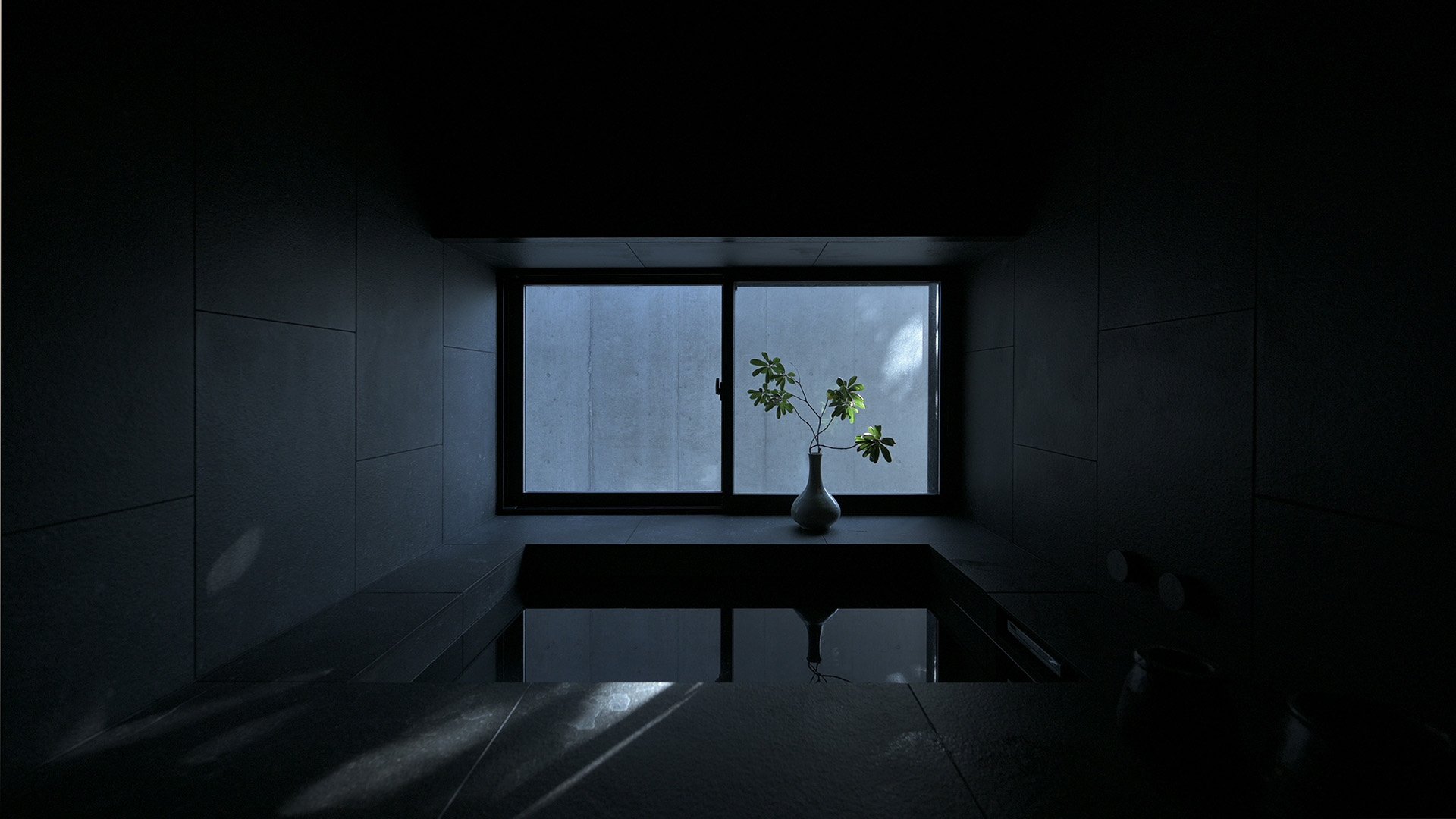
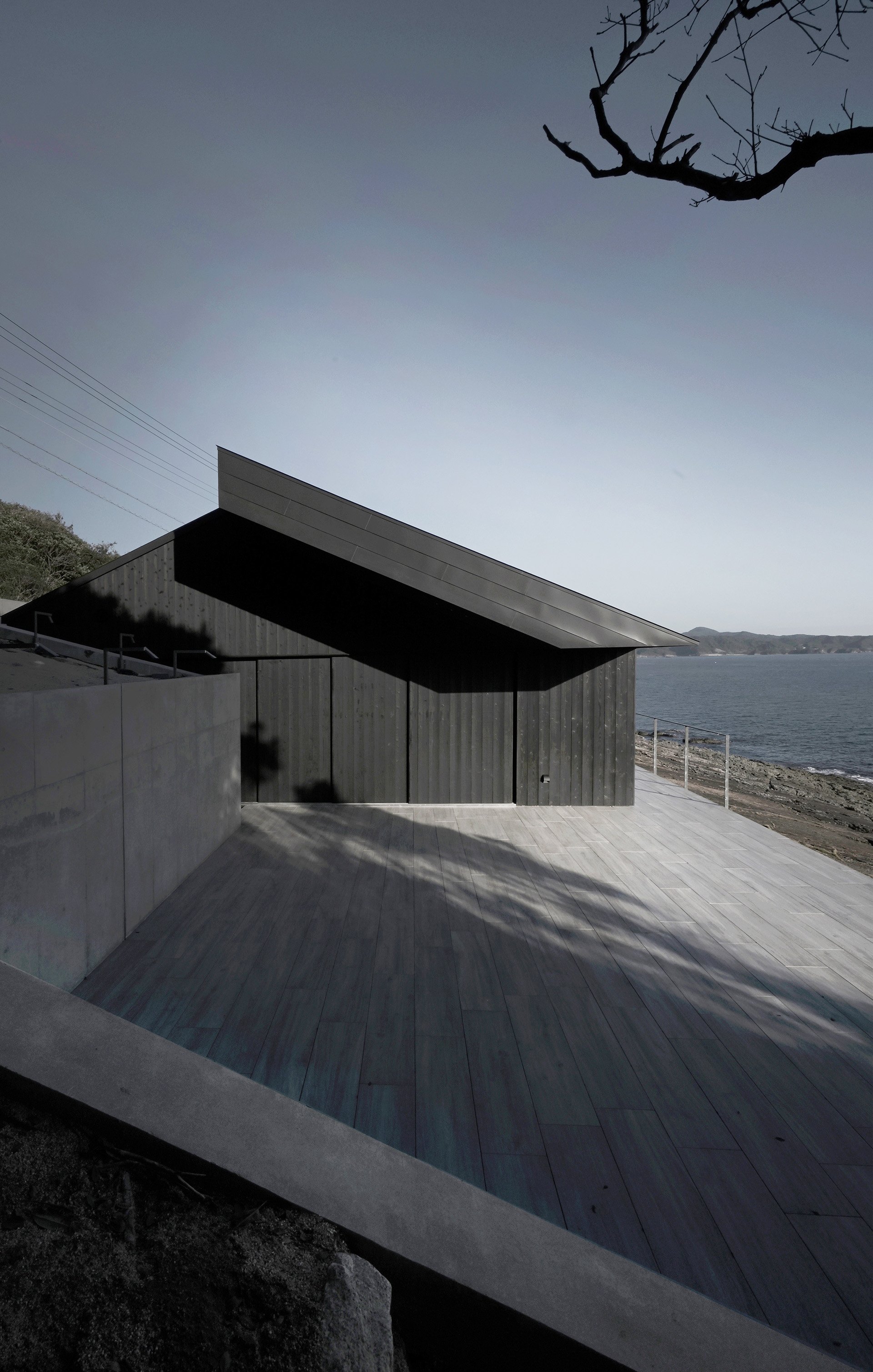
Honoring the tradition of old Japanese houses, Wa House can be completely enclosed with Yakisugi shutters, safeguarding the interior from inclement weather. Through its fusion of vernacular architecture and modern abstract archetypes, the house sparks a captivating dialogue that transcends time and culture.
PHOTO:
YASUTAKA KOJIMA / IKUNORI YAMAMOTO
GWENAEL NICOLAS
Photo courtesy of: CURIOSITY INC. & Atelier HARETOKE
Pritzker Laureate Ryue Nishizawa's Latest Masterpiece: A Meditative Timber Retreat in Karuizawa, Shishi-Iwa House
Discover the Tranquility of Hinoki House No.3, Ryue Nishizawa's Latest Architectural Masterpiece, a Meditative Timber Retreat in Karuizawa that Pays Homage to Traditional Japanese Residential Architecture and Celebrates Sustainability
Discover the Tranquility of Hinoki House No.3, Ryue Nishizawa's Latest Architectural Masterpiece, a Meditative Timber Retreat in Karuizawa that Pays Homage to Traditional Japanese Residential Architecture and Celebrates Sustainability
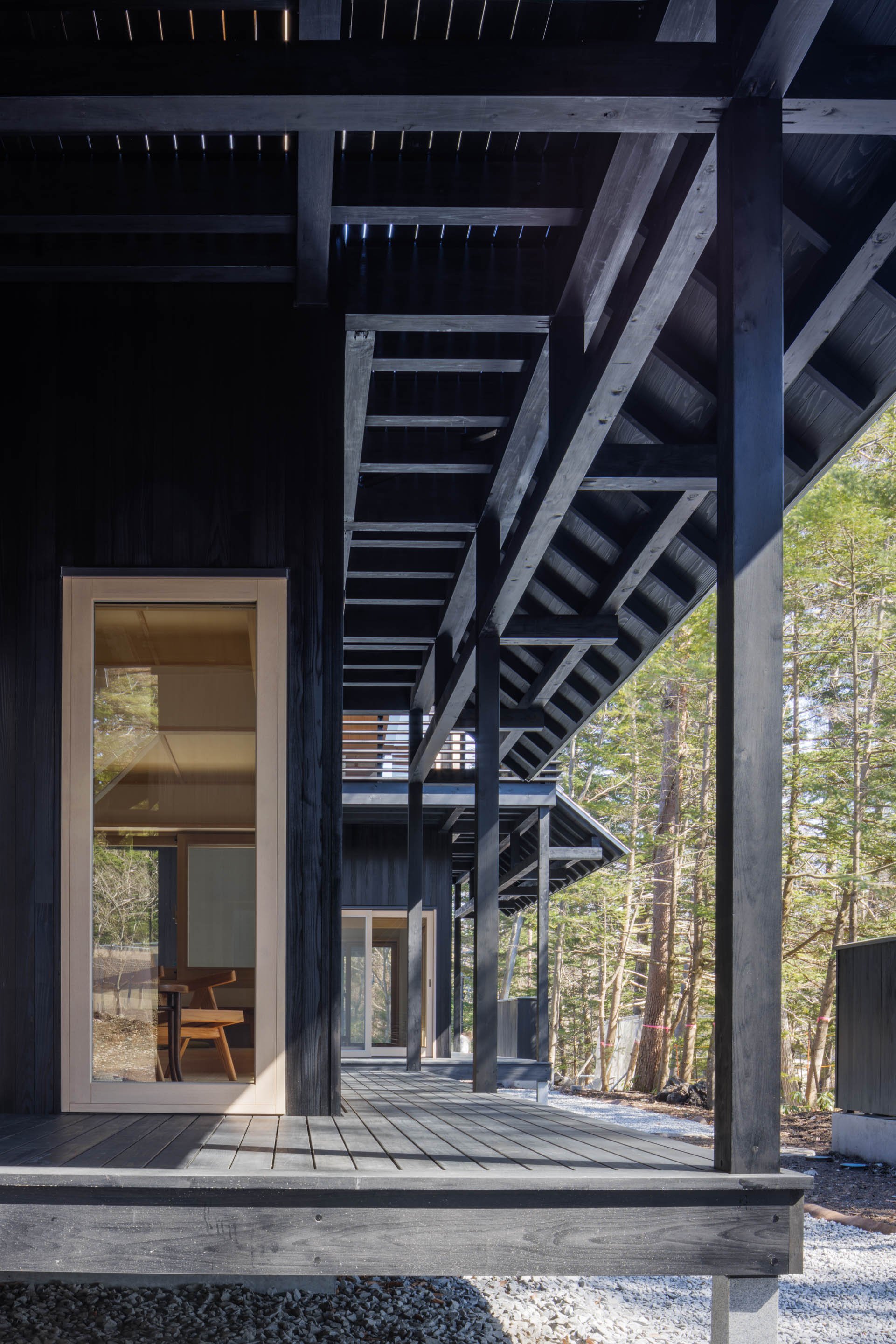
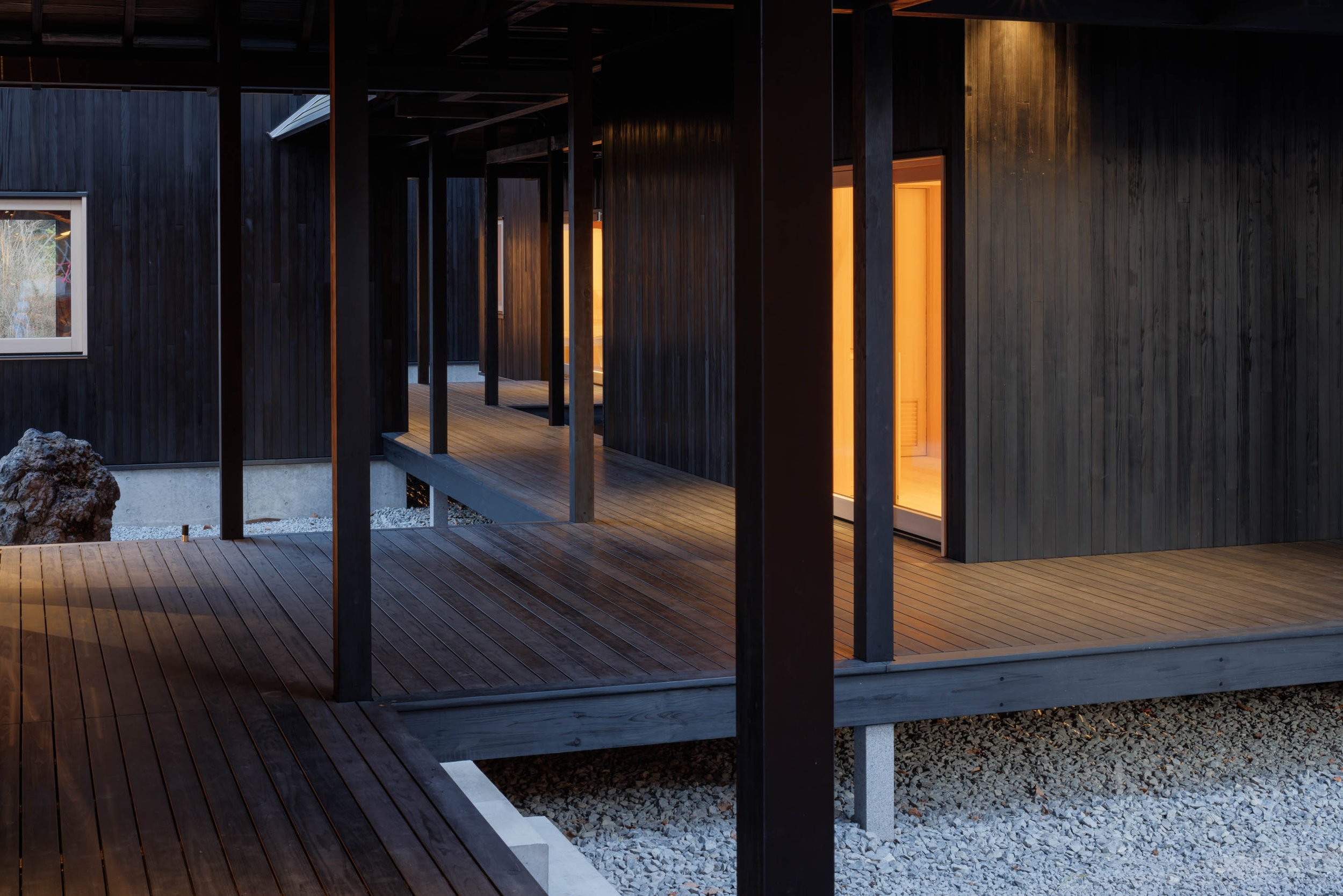
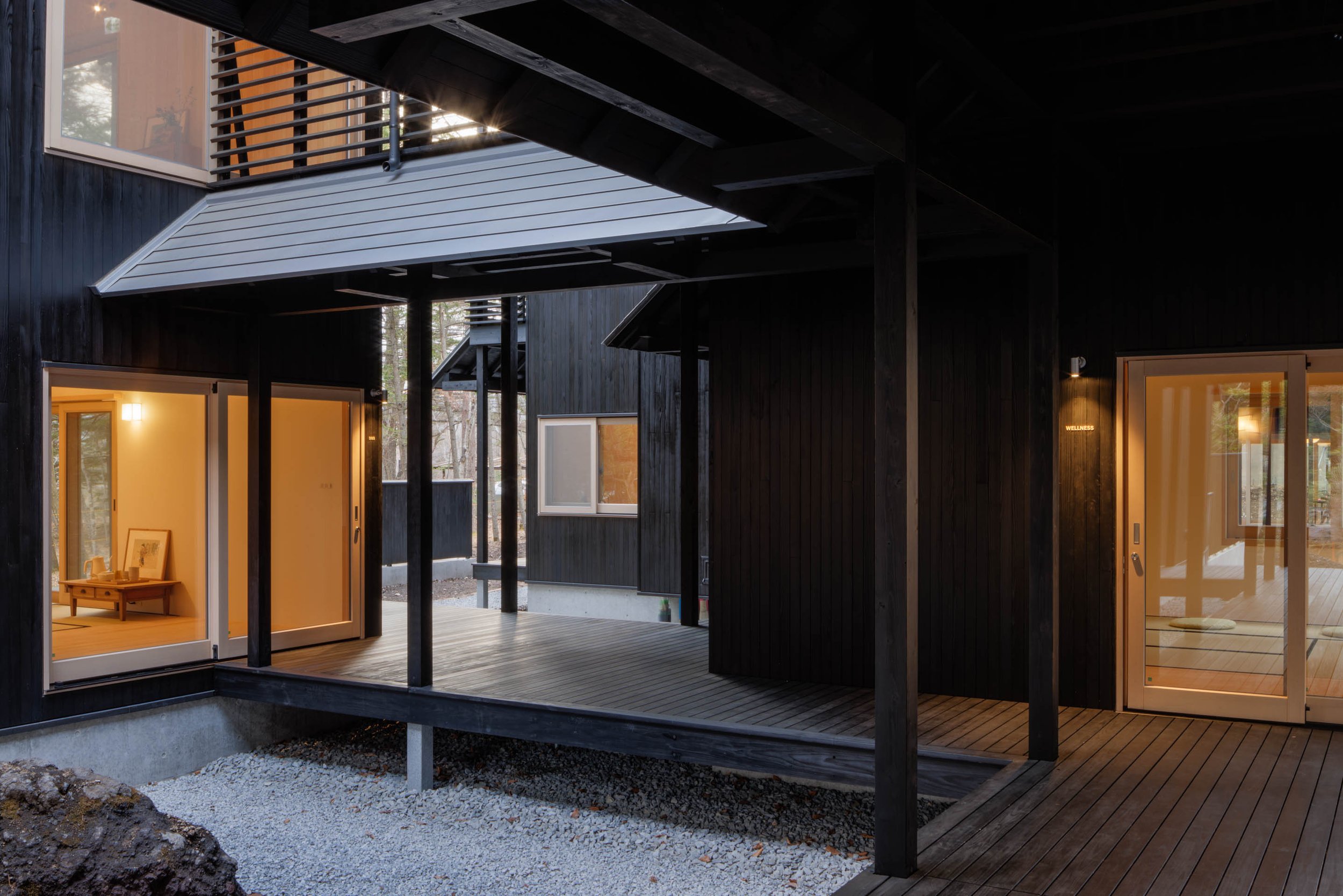
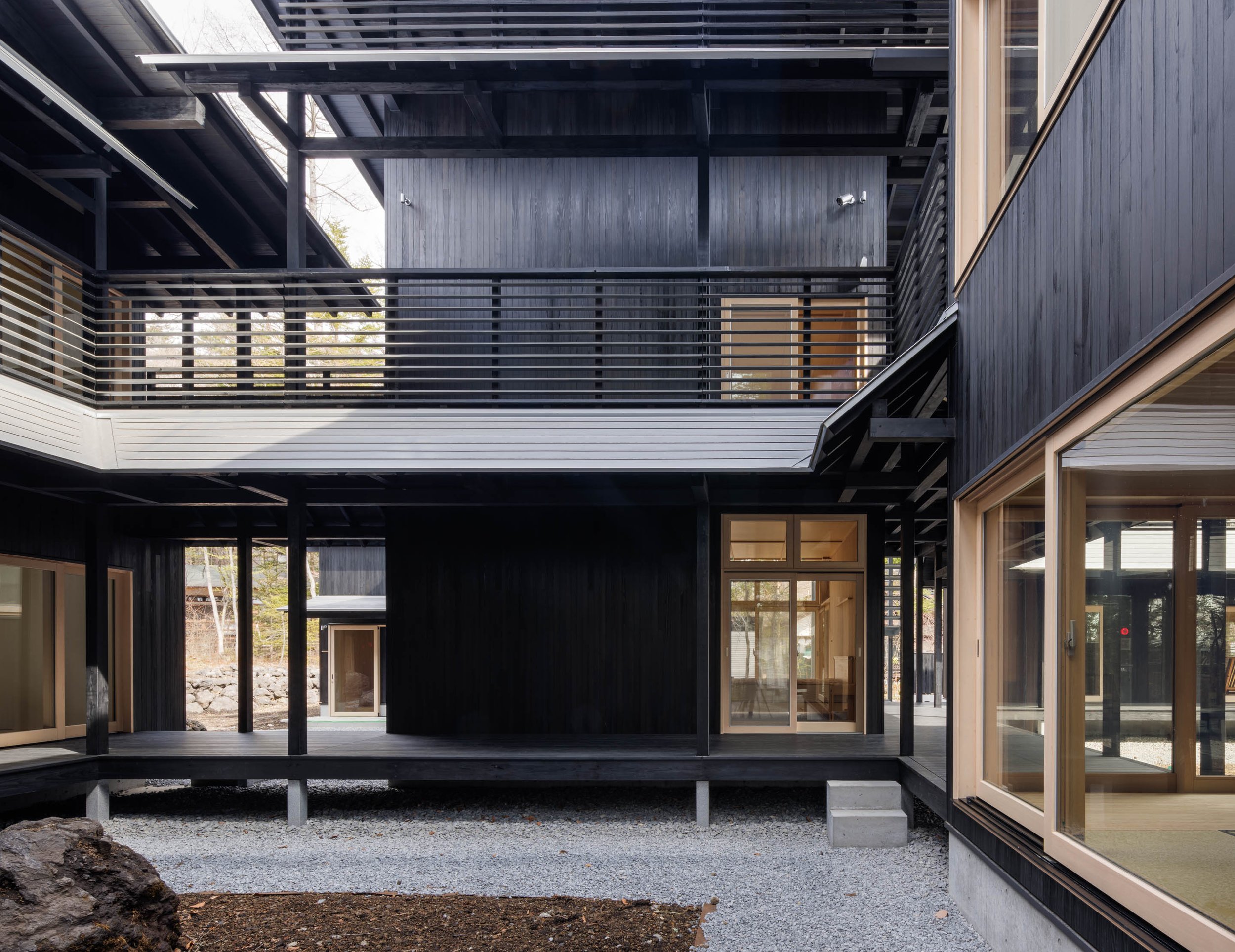
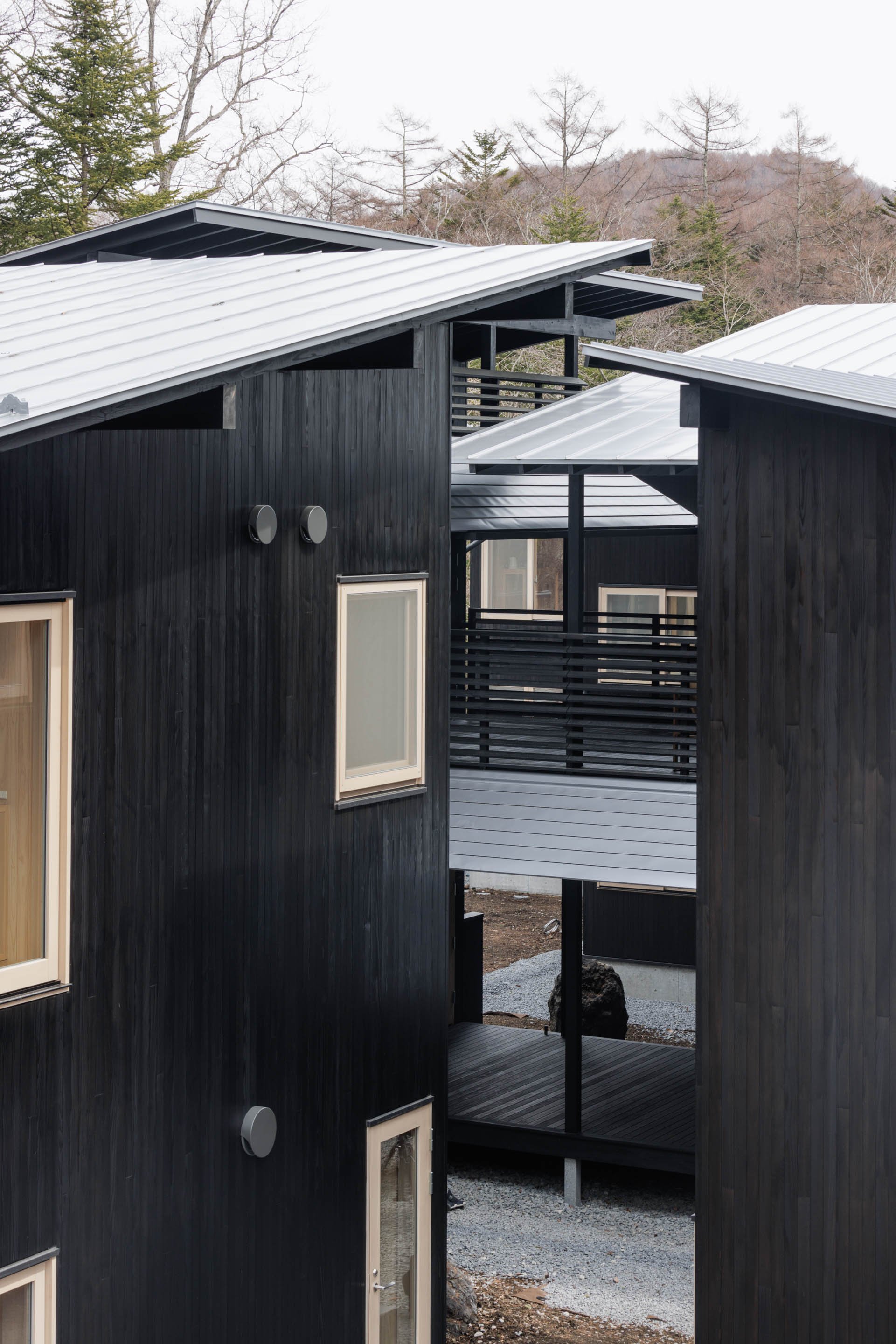
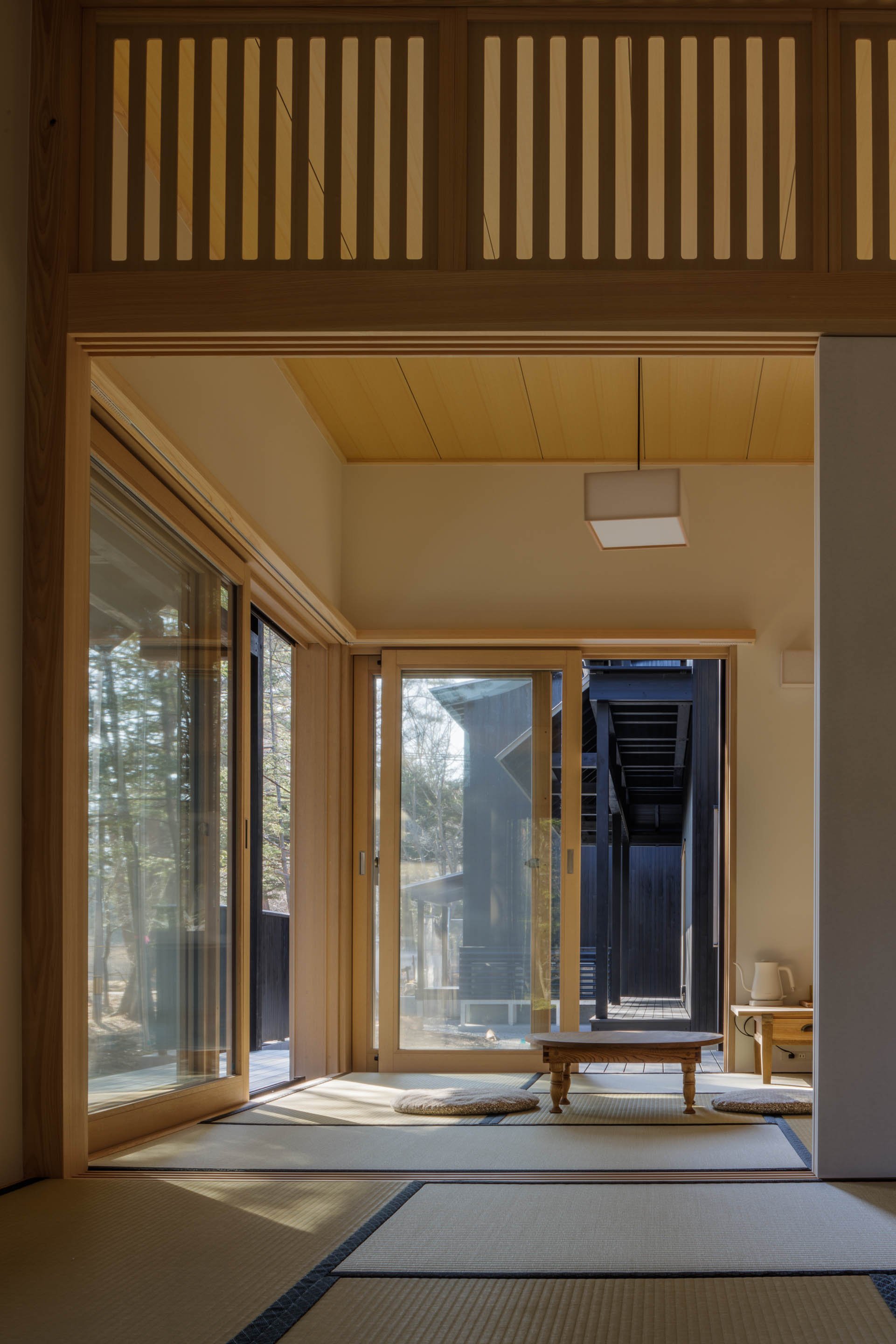
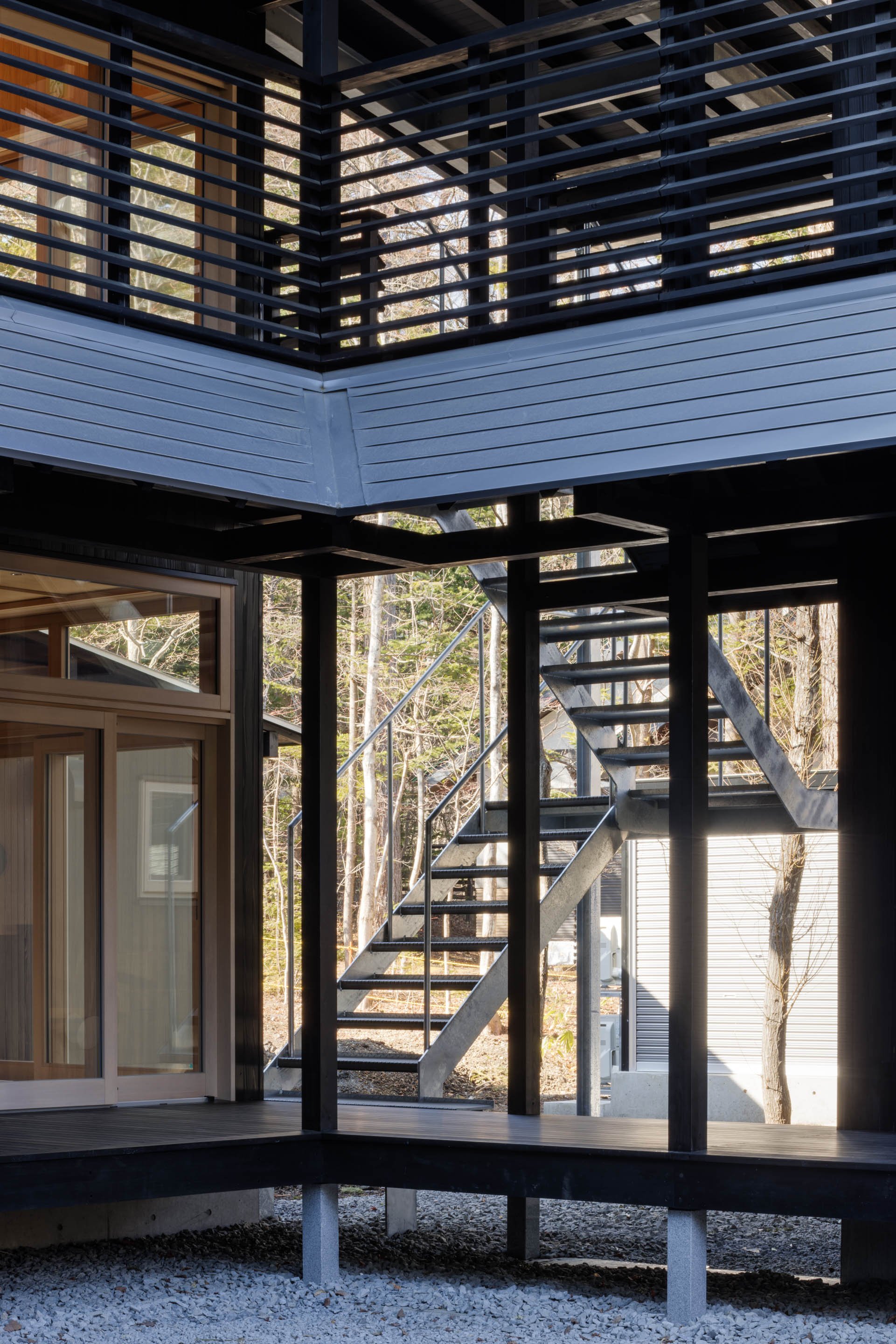

Shishi-Iwa House, the collection of architectural masterpieces situated in Karuizawa, Japan, has announced the opening of SSH No.03. Designed by Pritzker Prize laureate and co-founder of SANAA, Ryue Nishizawa, the mountain nature retreat is an homage to traditional Japanese residential architecture and is Nishizawa's first hotel project. SSH No.03 joins the two other Houses in the collection, SSH No.01 and SSH No.02, designed by Pritzker Prize laureate Shigeru Ban. All three Houses are situated mere minutes from each other and form SHISHI-IWA HOUSE KARUIZAWA, with guests sharing all common facilities.
SSH No.03 is comprised of 10 pavilions interconnected by a series of engawa and garden courtyards. With only 10 guest rooms and 1 cabin villa, the retreat is exclusive and offers both Superior Rooms and Tatami Suites. Inspired by spacial transparency and the Japanese concept of negative space, Nishizawa has deliberately created empty areas through minimal furnishings and embellishments, allowing natural light to stream continuously through the rooms' windows.
Hinoki cypress wood is prominently featured throughout SSH No.03, sourced from Gifu Prefecture, Japan. Considered a sacred wood in Japan, it has been used for centuries to build shrines, temples, and palaces due to its durability and aromatic scent. Sustainability is also a top priority, with a small building footprint and the use of carbon-friendly timber sourced primarily in Japan.
The winding engawa walkway that intersects the pavilions offers in-between spaces for discovery and contemplation, with the landscape carefully constructed with over hundreds of cherry, maple, and evergreen trees. Four Japanese courtyards provide moments of stillness, completing a spiritual journey in which guests become one with nature and with themselves.
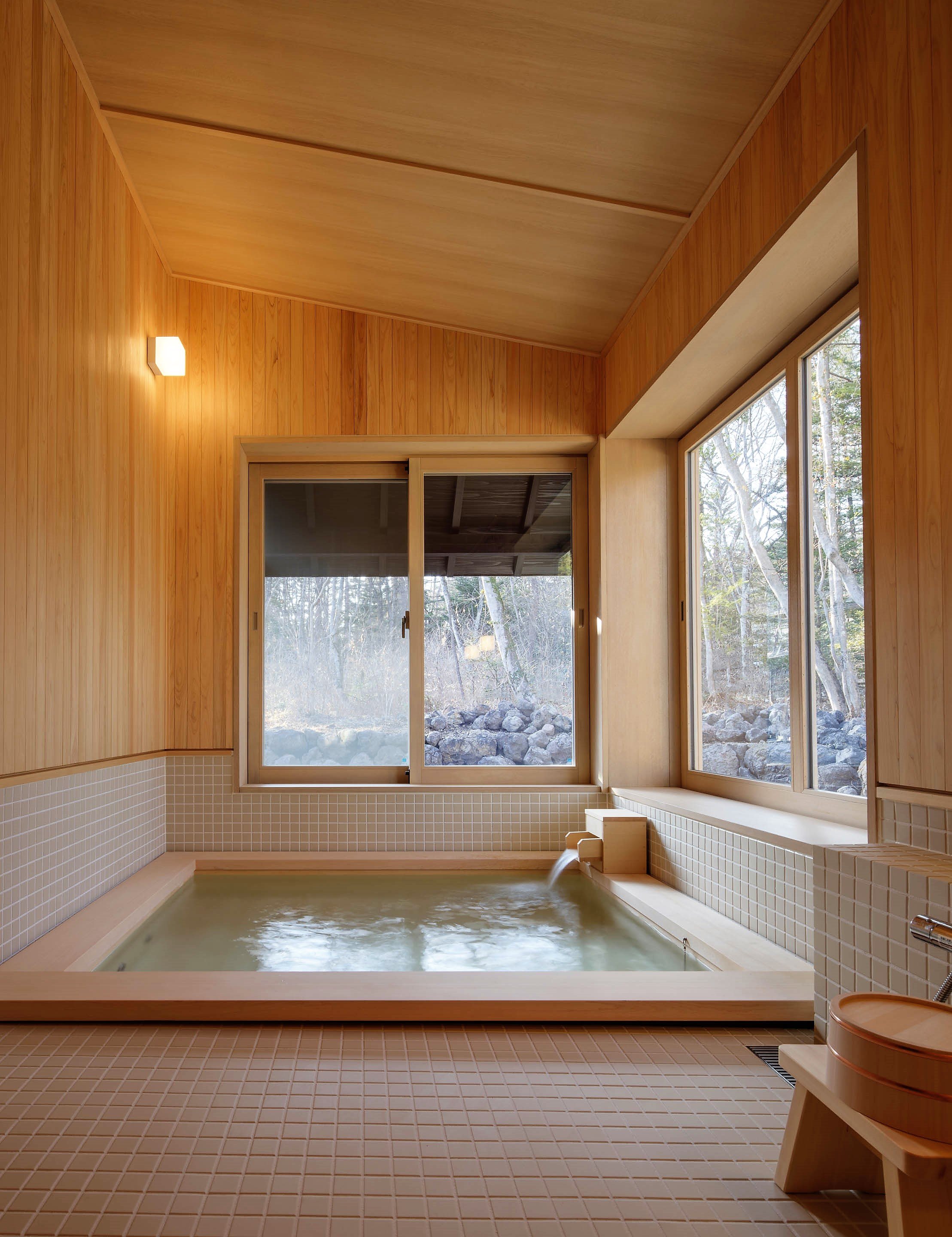
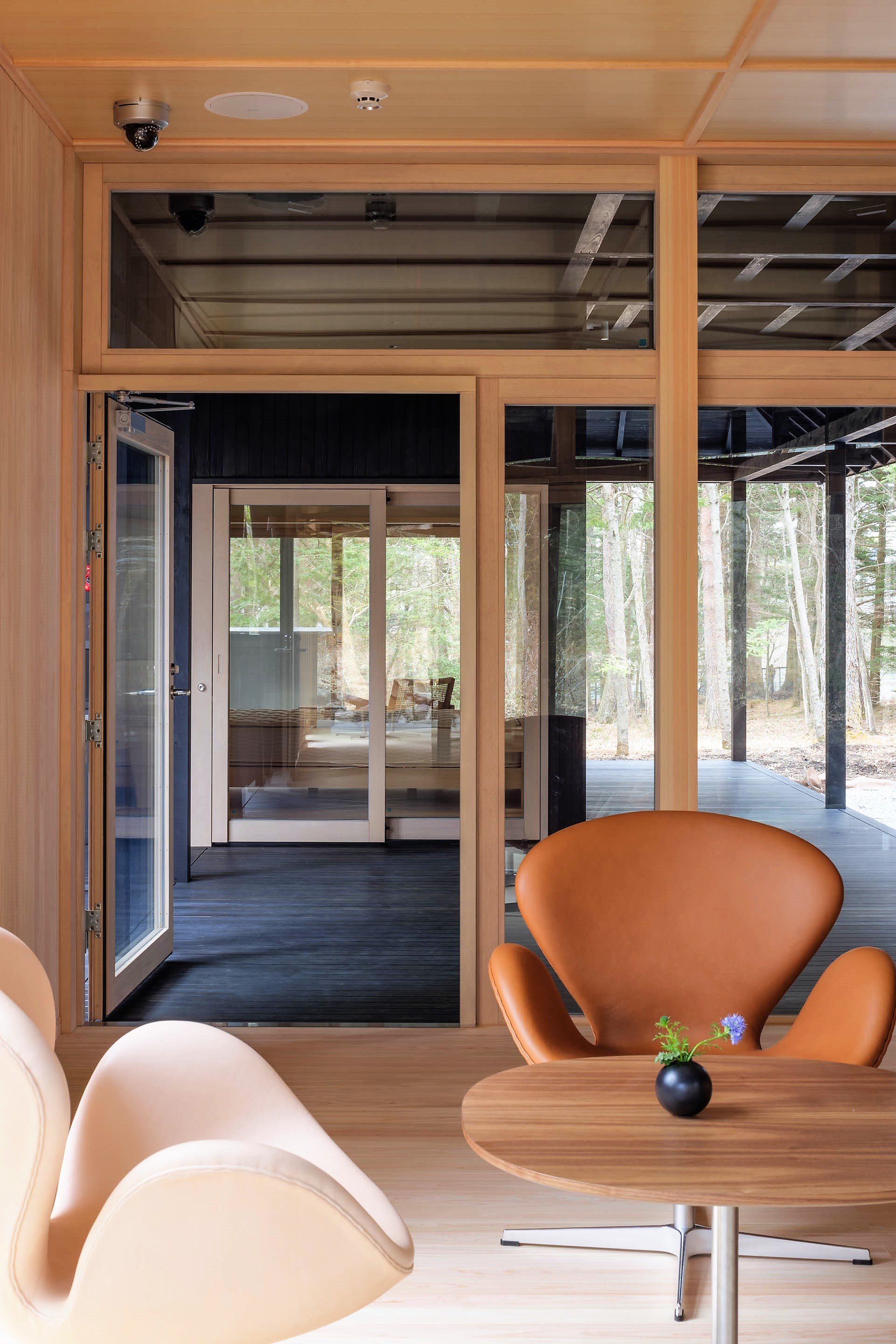
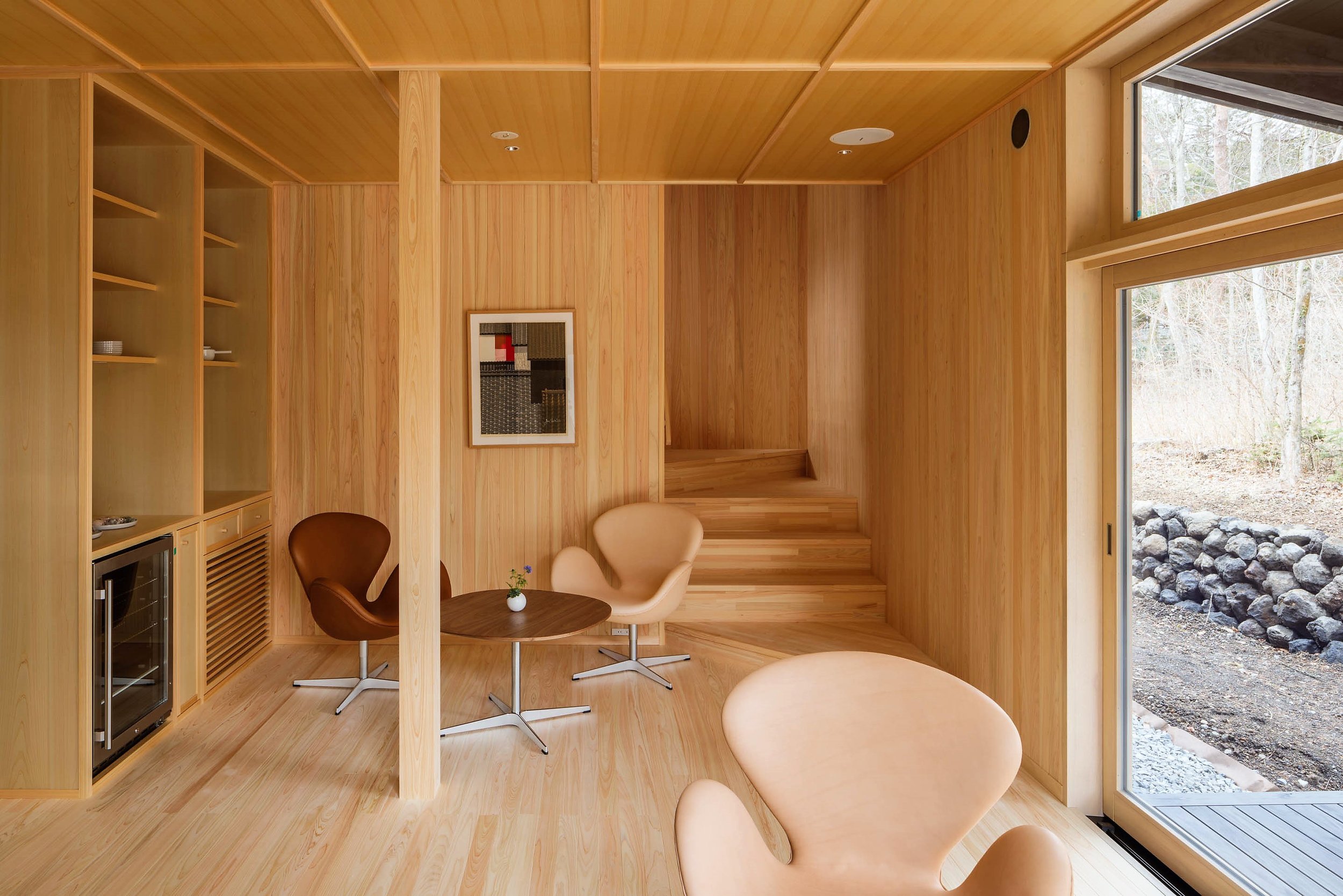

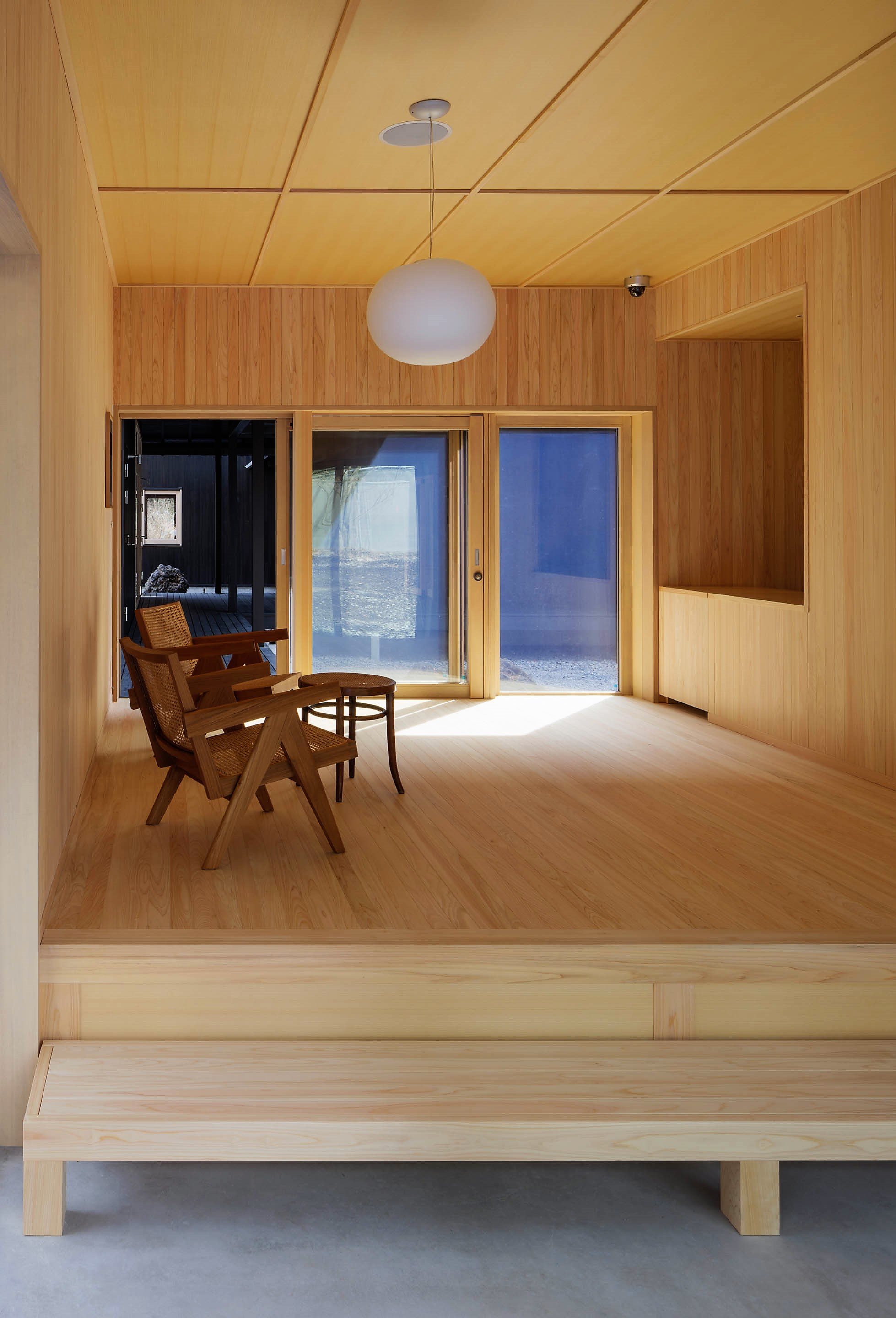
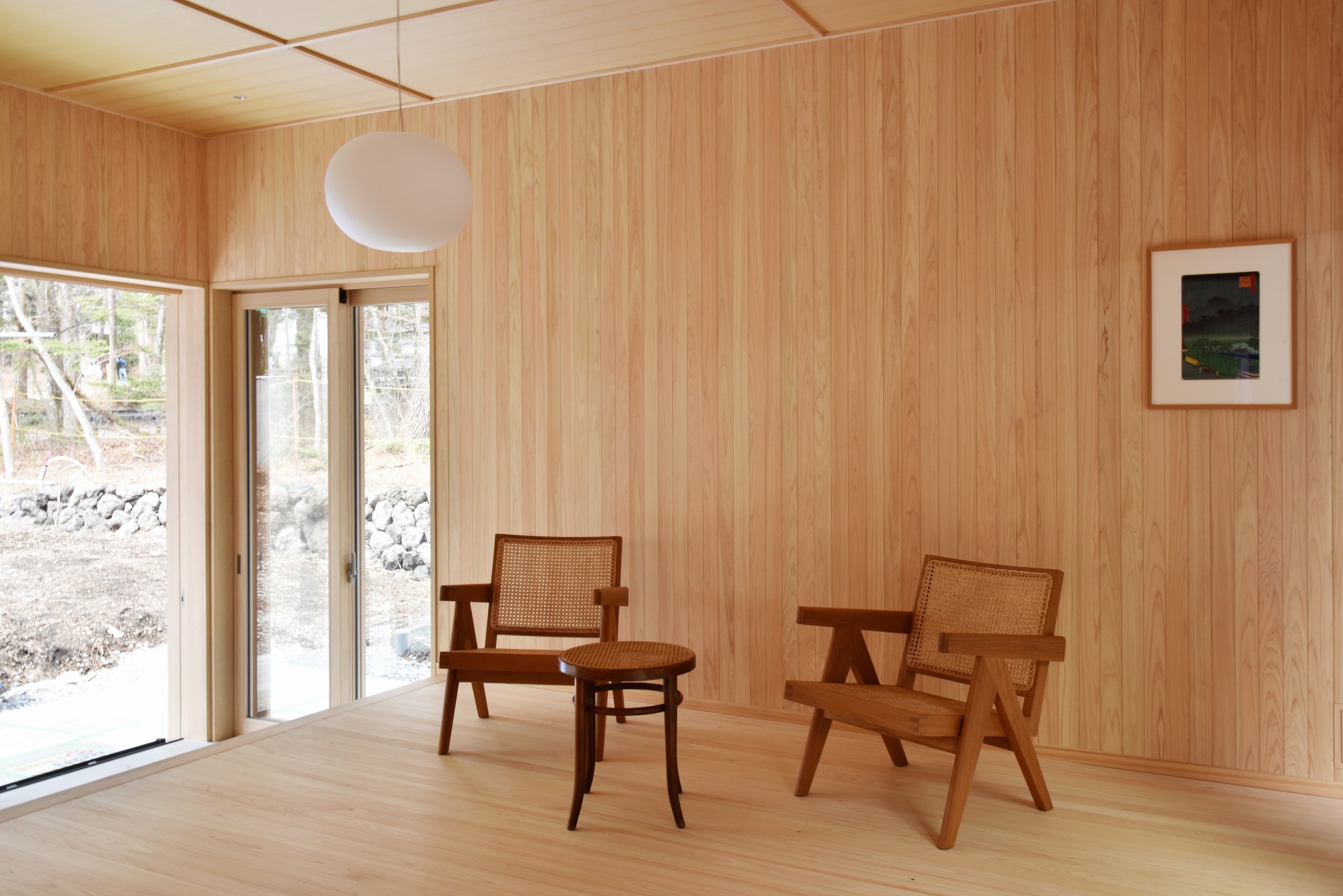

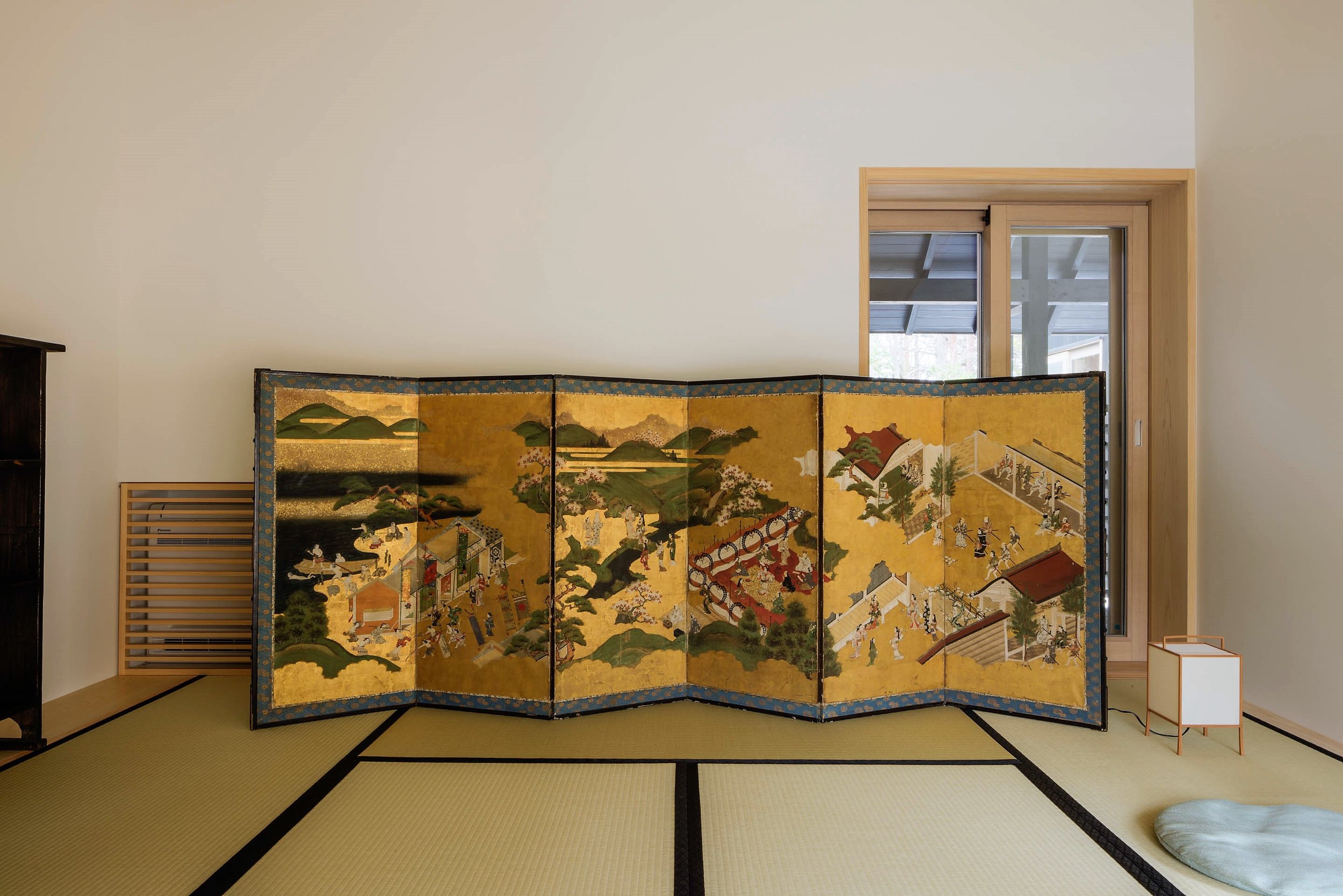
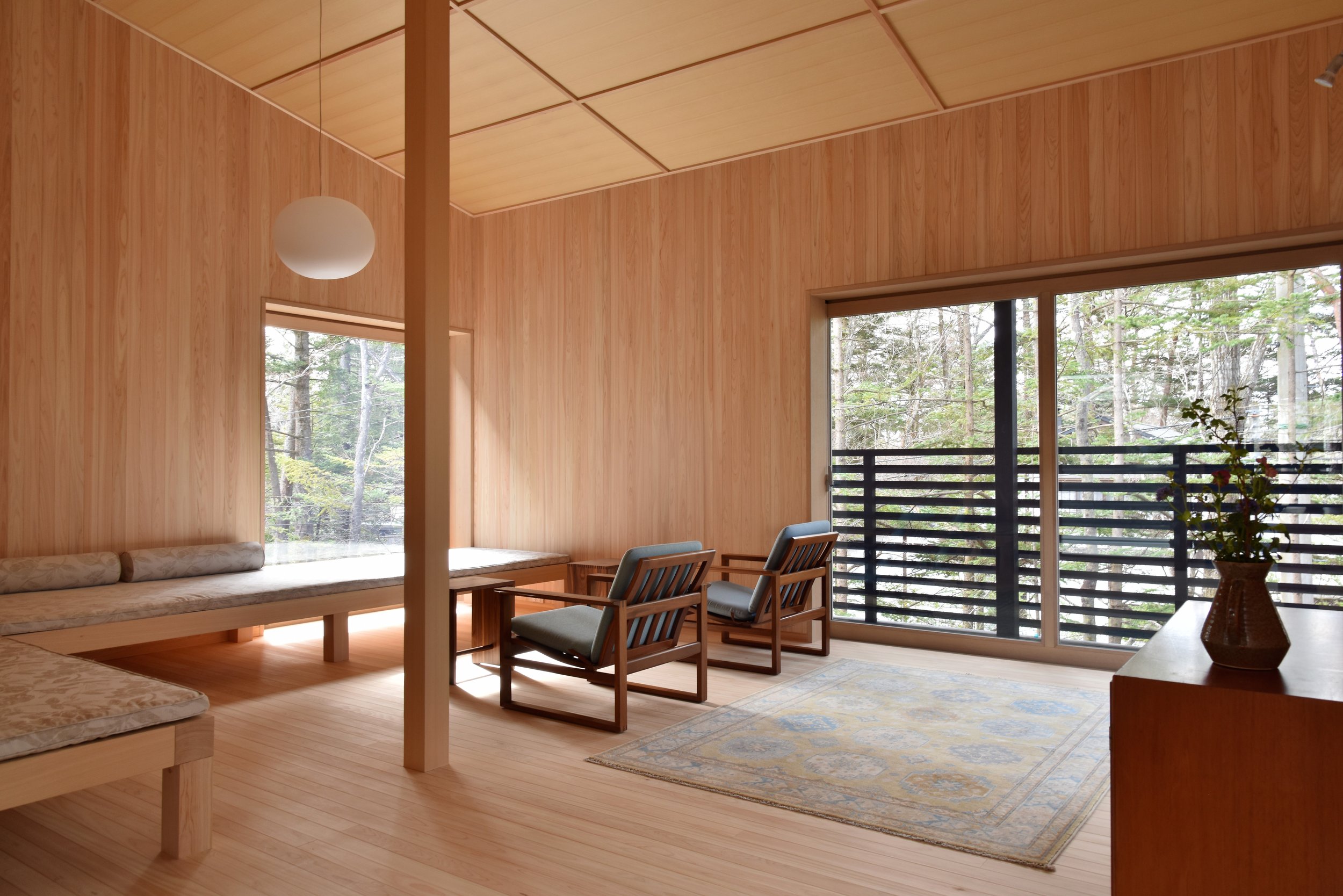
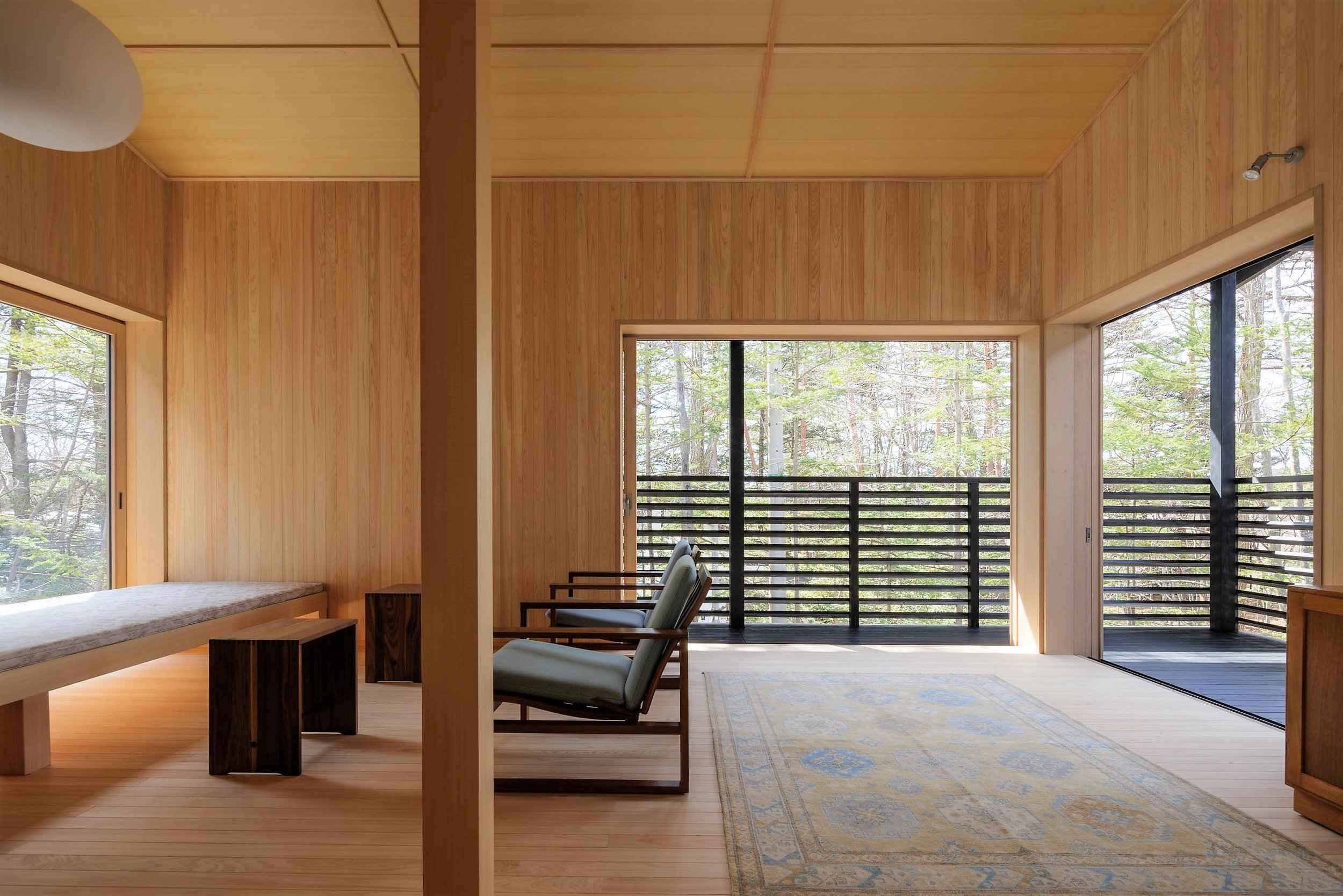
A bathhouse and tea house complement the Ma experience envisioned by the architect, with plans to offer massage, yoga, and meditation sessions. The location within the serene Karuizawa Yacho no Mori, the National Wild Bird Sanctuary, in the embrace of almost 100 hectares of lush forest, expands moments of rejuvenation, with forest bathing and special walking tours.
Guests also have direct access to all facilities at SSH No.01 and SSH No.02, including the restaurant and bar, offering fine dining options, sake, wine, and whisky tastings, and tea rituals. A collection of antique Japanese furniture and vintage mid-century modern furniture, including historically significant pieces by Charles and Ray Eames, Pierre Jeanneret, Arne Jacobsen, Borge Mogensen, Bill Max, Michael Thonet, and Bodil Kjaer, complement the House's traditional architecture.
A significant cultural heritage collection of approximately 50 original ukiyo-e woodblock prints from a dozen major artists, including Utagawa Hiroshige and Shibata Zeshin in the 1840s, and Azechi Umetaro and Sekino Junichiro in the 1960s, is on display throughout SSH No.03.
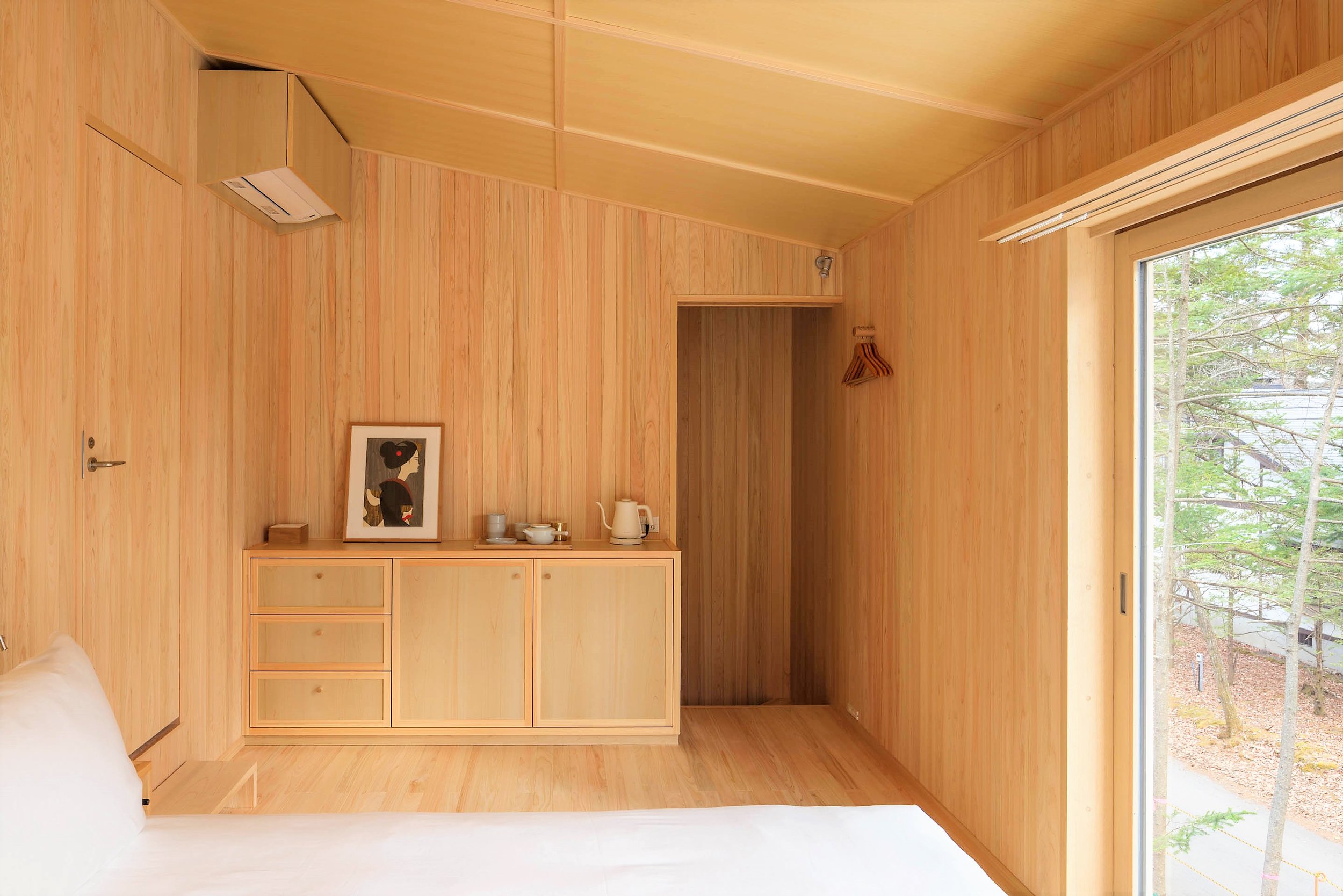
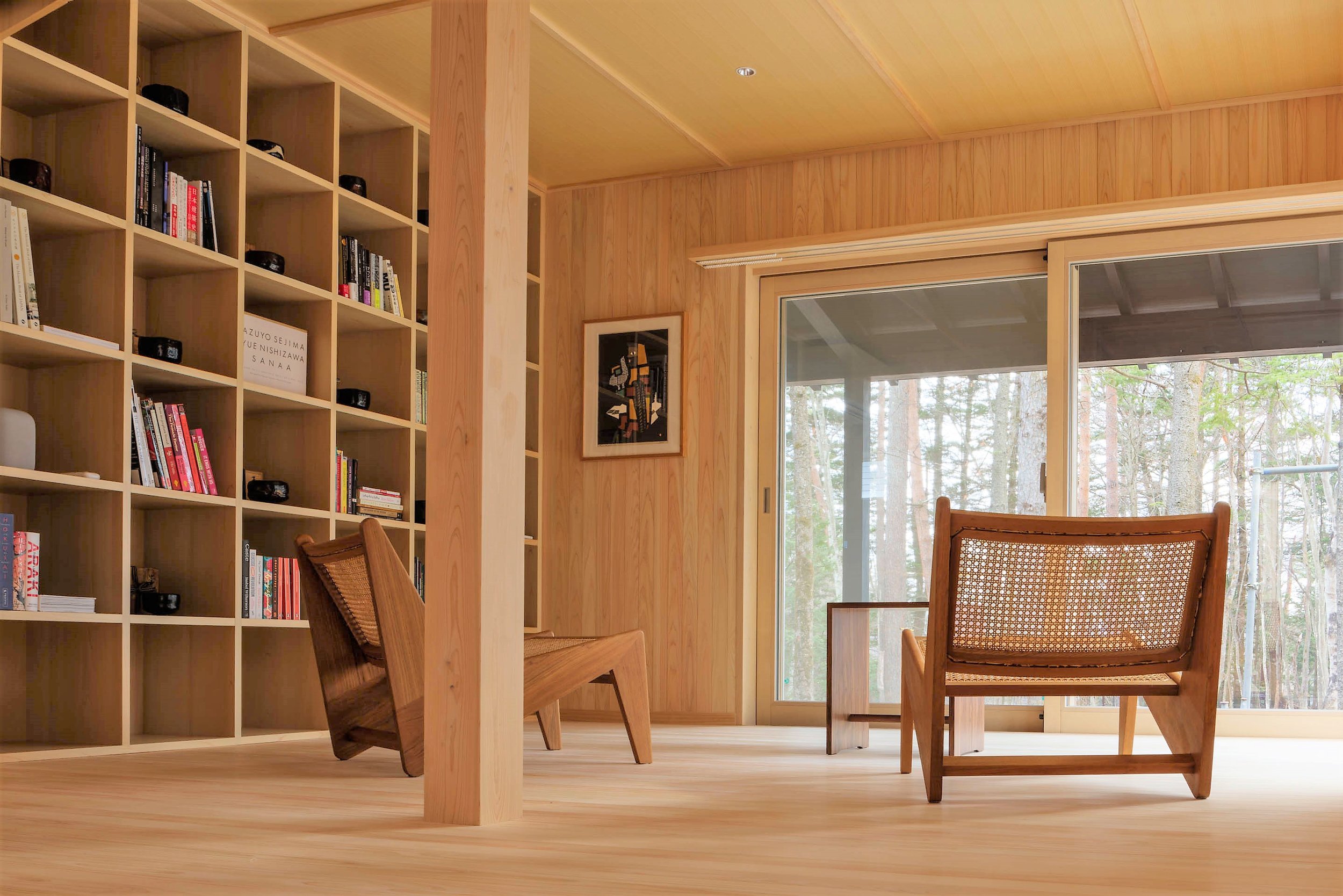
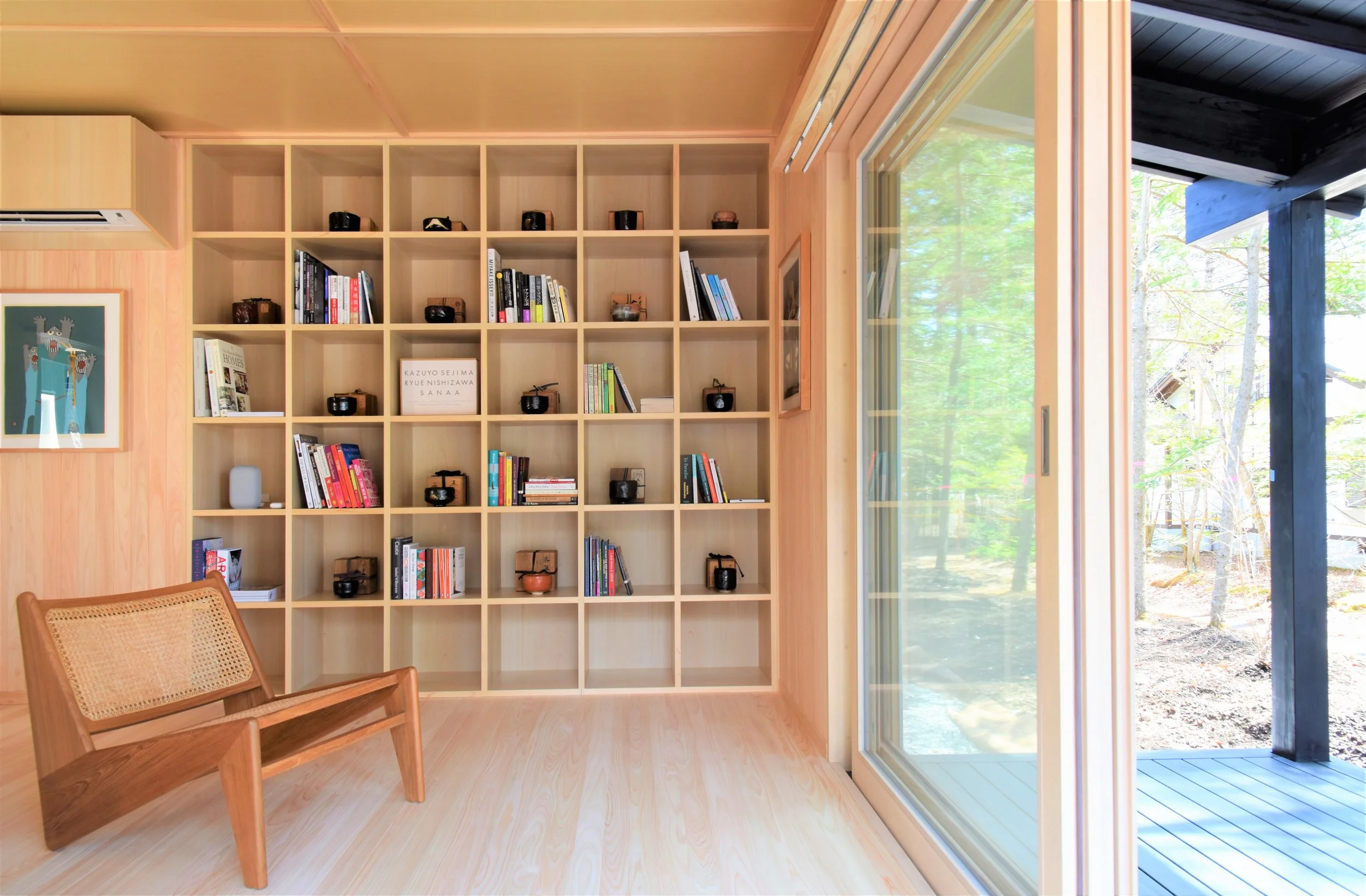
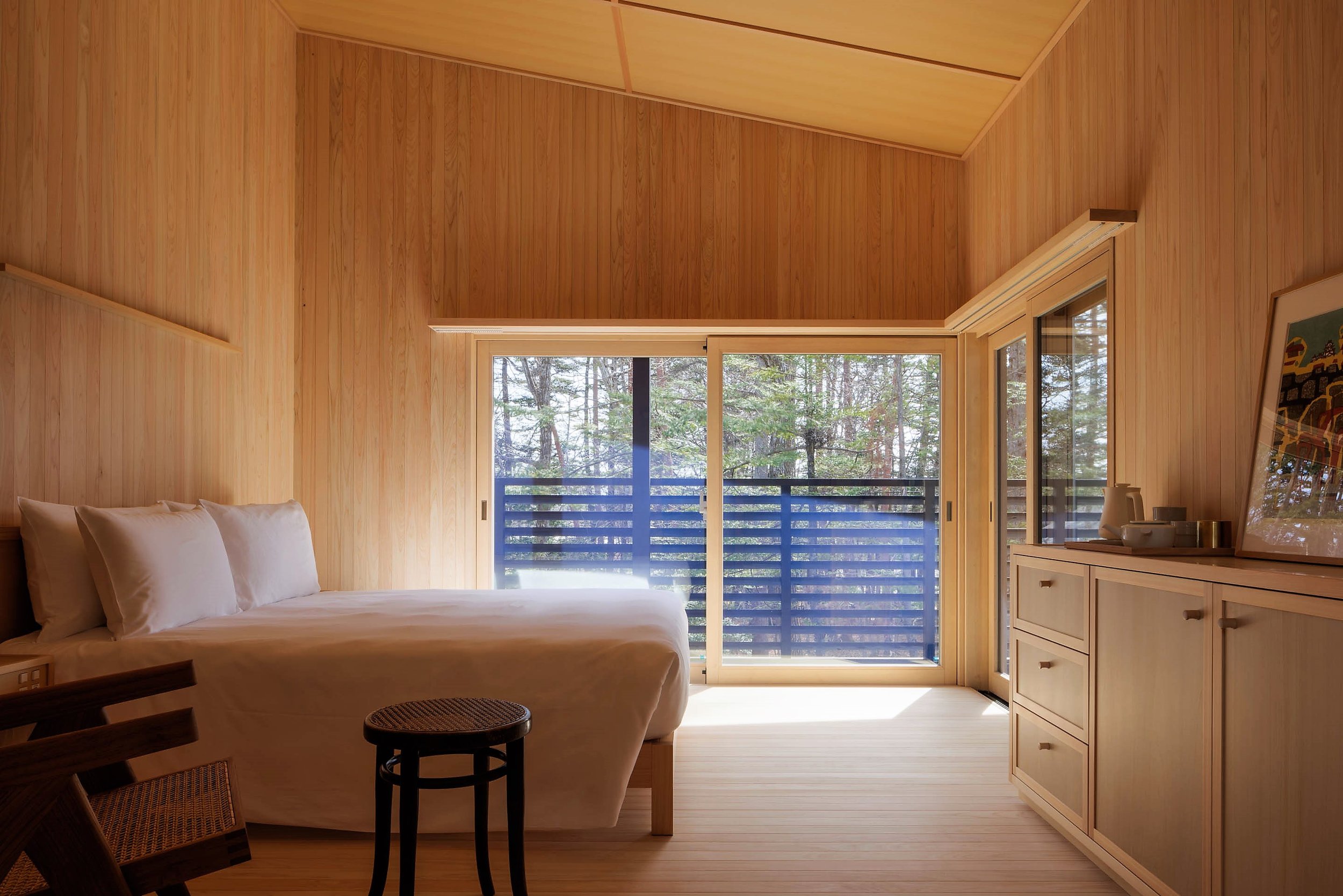
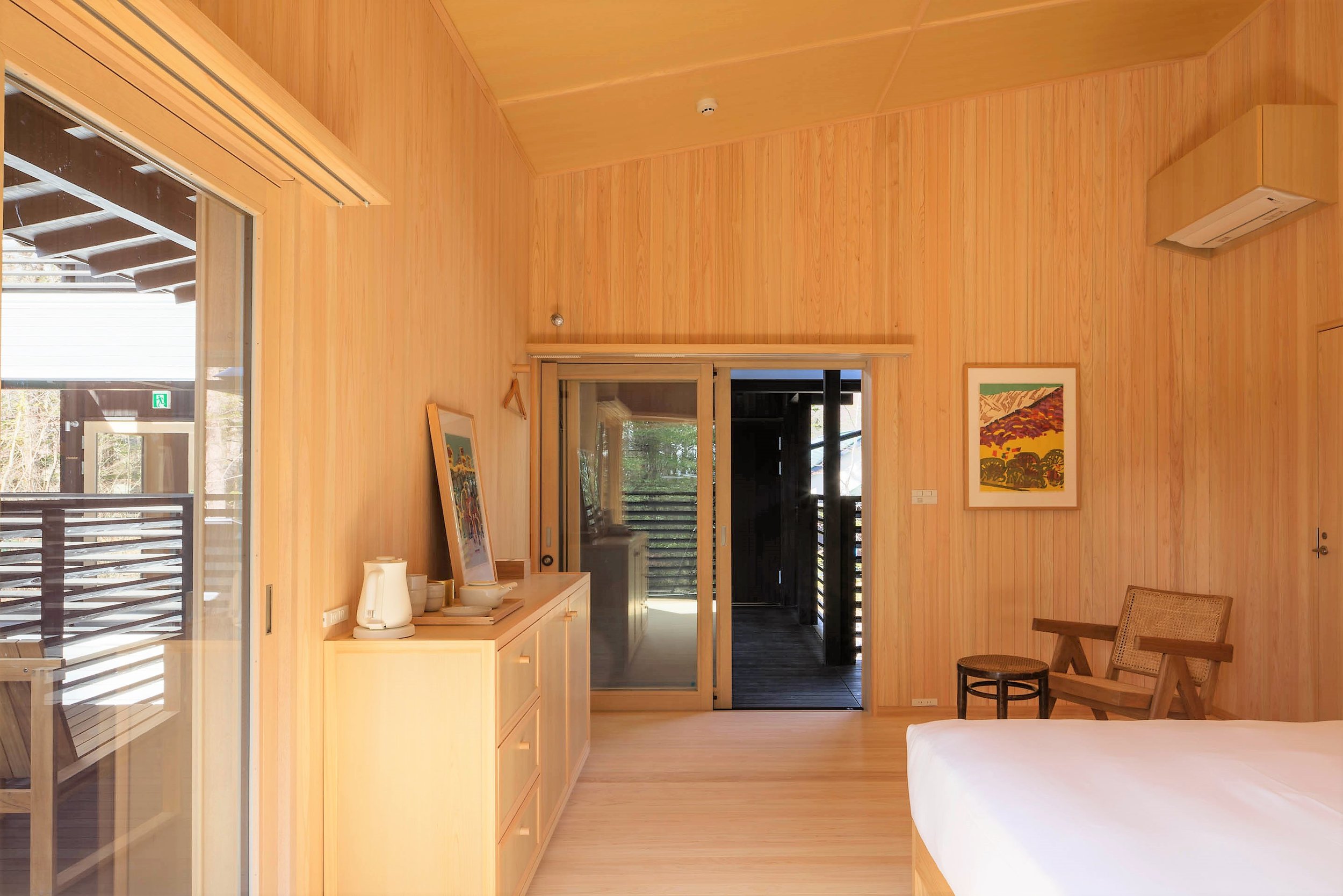
Complementing the House's traditional architecture is a collection of antique Japanese furniture and vintage mid-century modern furniture, including historically significant pieces by renowned designers. The interiors are beautifully curated with minimalist decor that creates a tranquil atmosphere, allowing guests to fully unwind and relax in luxury.
SSH No.03 offers an immersive and unique experience that combines traditional Japanese architecture, natural beauty, and modern luxury living. It is an ideal destination for families and friends to spend quality time together in a peaceful and serene environment, away from the hustle and bustle of urban life.
Complementing the House’s traditional architecture is a collection of antique Japanese furniture as well as vintage mid-century modern furniture, including historically significant pieces by Charles and Ray Eames, Pierre Jeanneret, Arne Jacobsen, Borge Mogensen, Bill Max, Michael Thonet, andBodil Kjaer.
On display throughout SSH No.03 is a significant cultural heritage collection of approximately 50 original ukiyo-e woodblock prints from a dozen major artists including Utagawa Hiroshige and Shibata Zeshin in the 1840s, and Azechi Umetaro and Sekino Junichiro in the 1960s.
You can visit: https://www.shishiiwahouse.jp
GOOD CYCLE BUILDING 001 Asanuma Corporation Nagoya Branch Office Renovation by Nori Architects and Asanuma Corporation
The Asanuma Corporation is promoting its first flagship project, the GOOD CYCLE BUILDING, a project to renovate a 30-year-old building into an environmentally friendly building. The existing building frame was utilized and modified to increase accessibility to natural light and wind, and new materials were added as much as possible using natural materials such as earth and wood, enabling the building users to participate in the construction and maintenance process.
The Asanuma Corporation is promoting its first flagship project, the GOOD CYCLE BUILDING, a project to renovate a 30-year-old building into an environmentally friendly building. The existing building frame was utilized and modified to increase accessibility to natural light and wind, and new materials were added as much as possible using natural materials such as earth and wood, enabling the building users to participate in the construction and maintenance process.
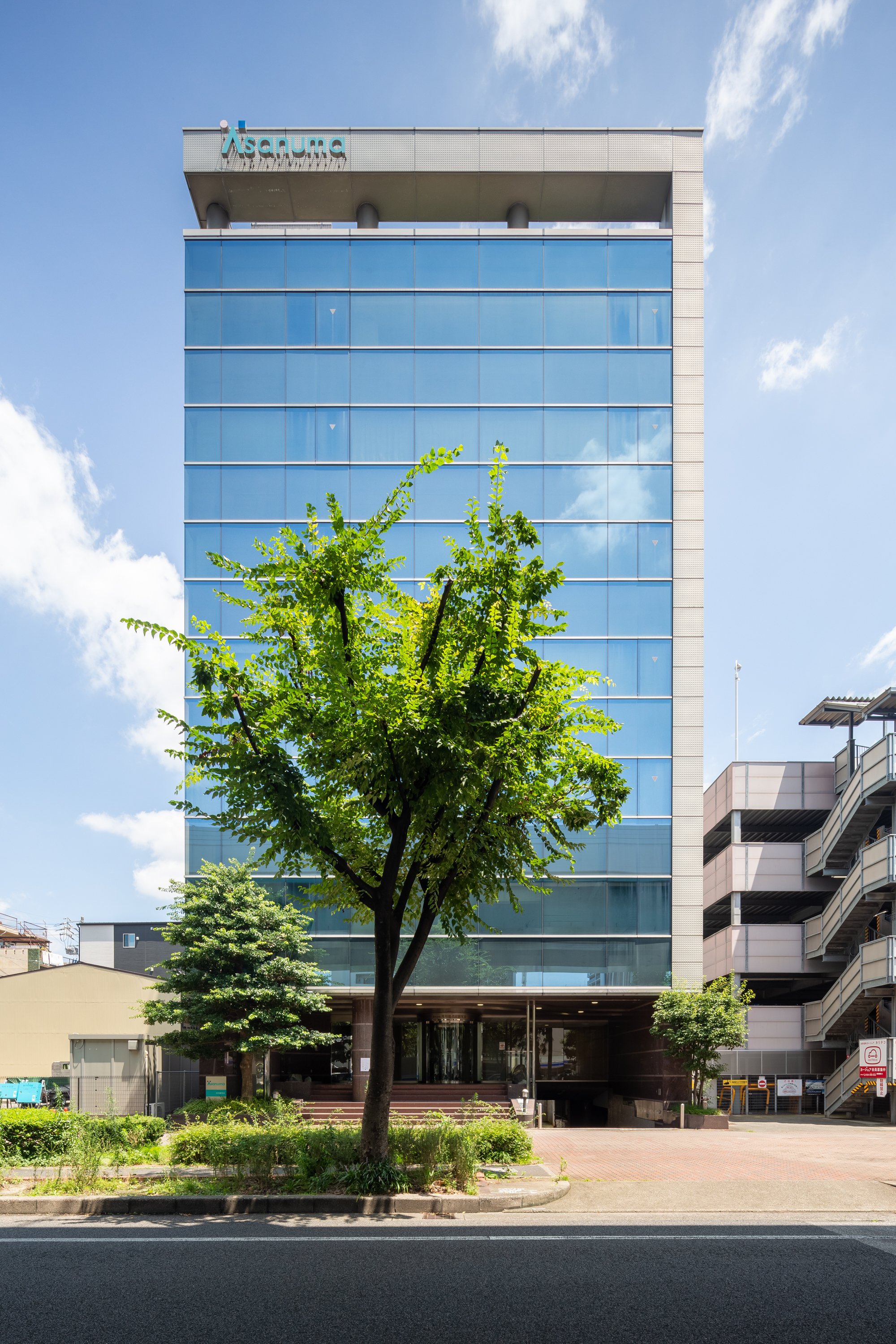
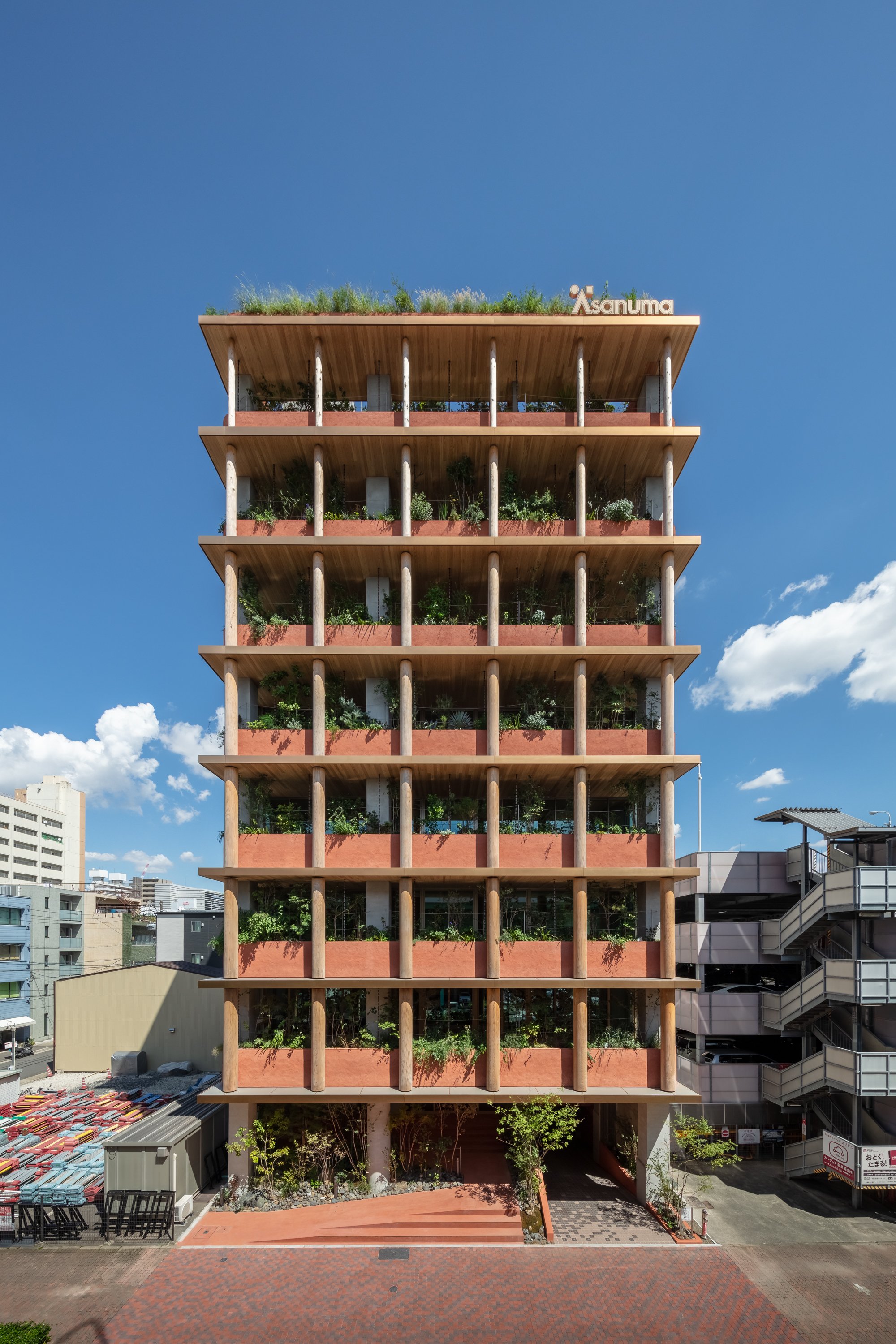
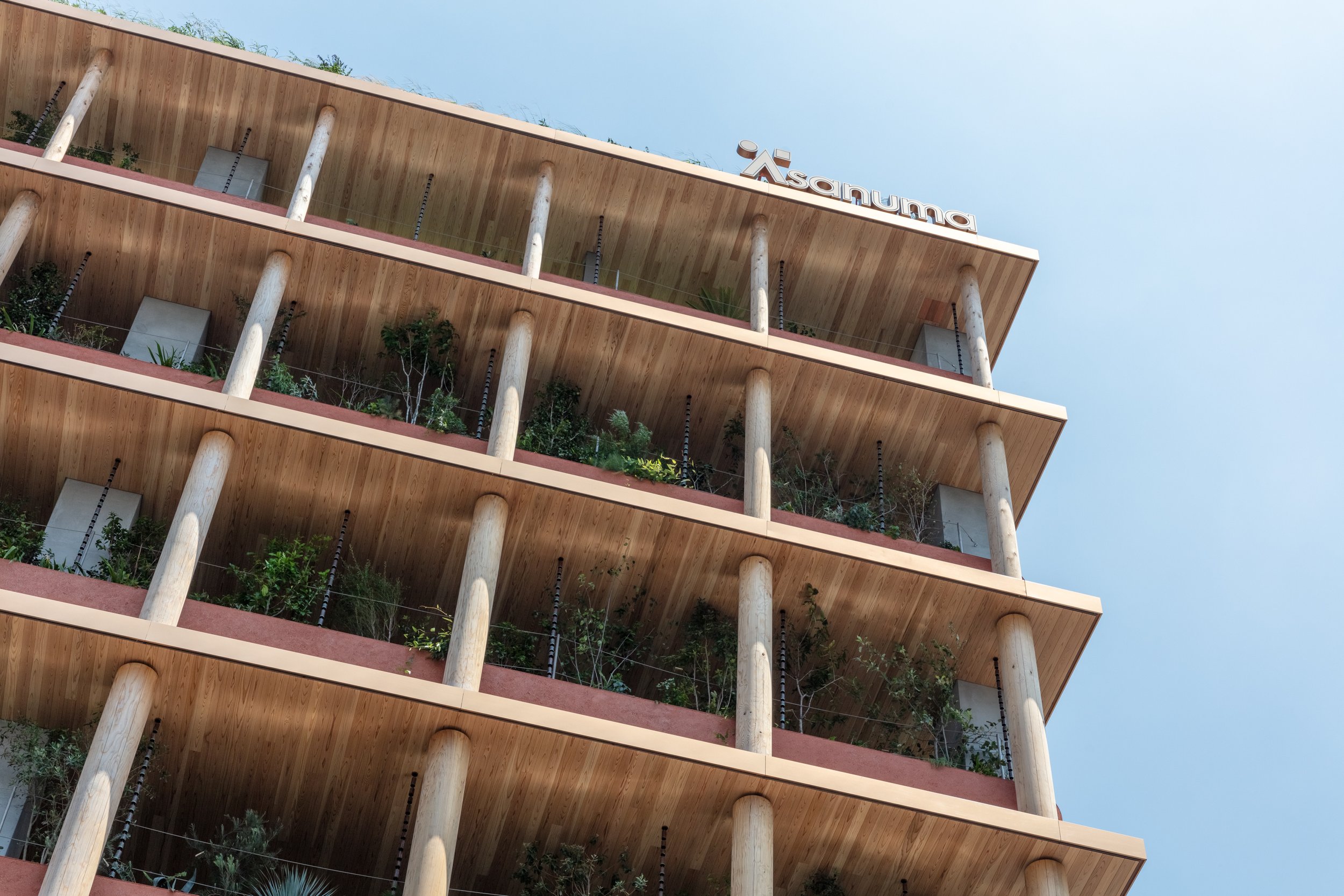
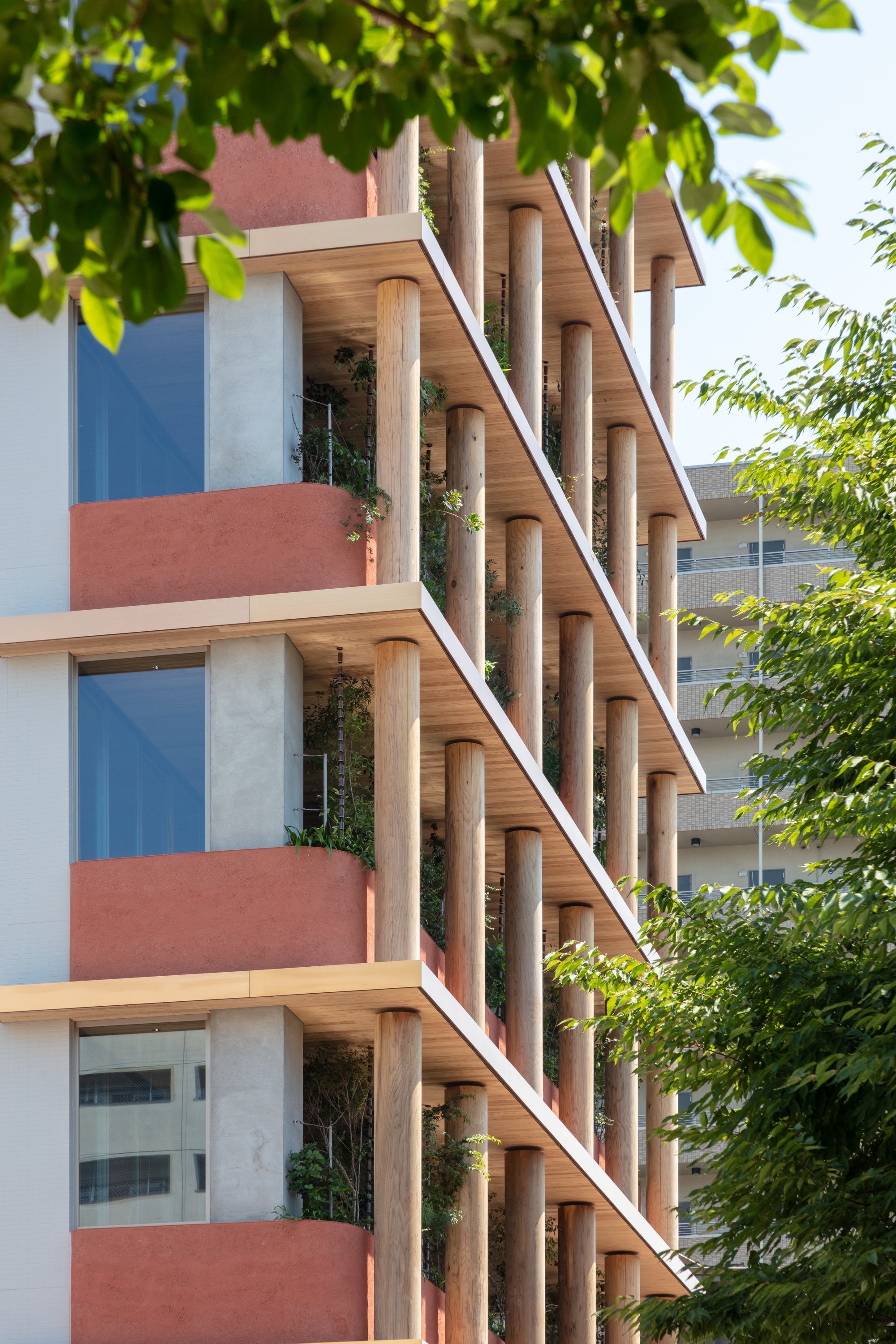
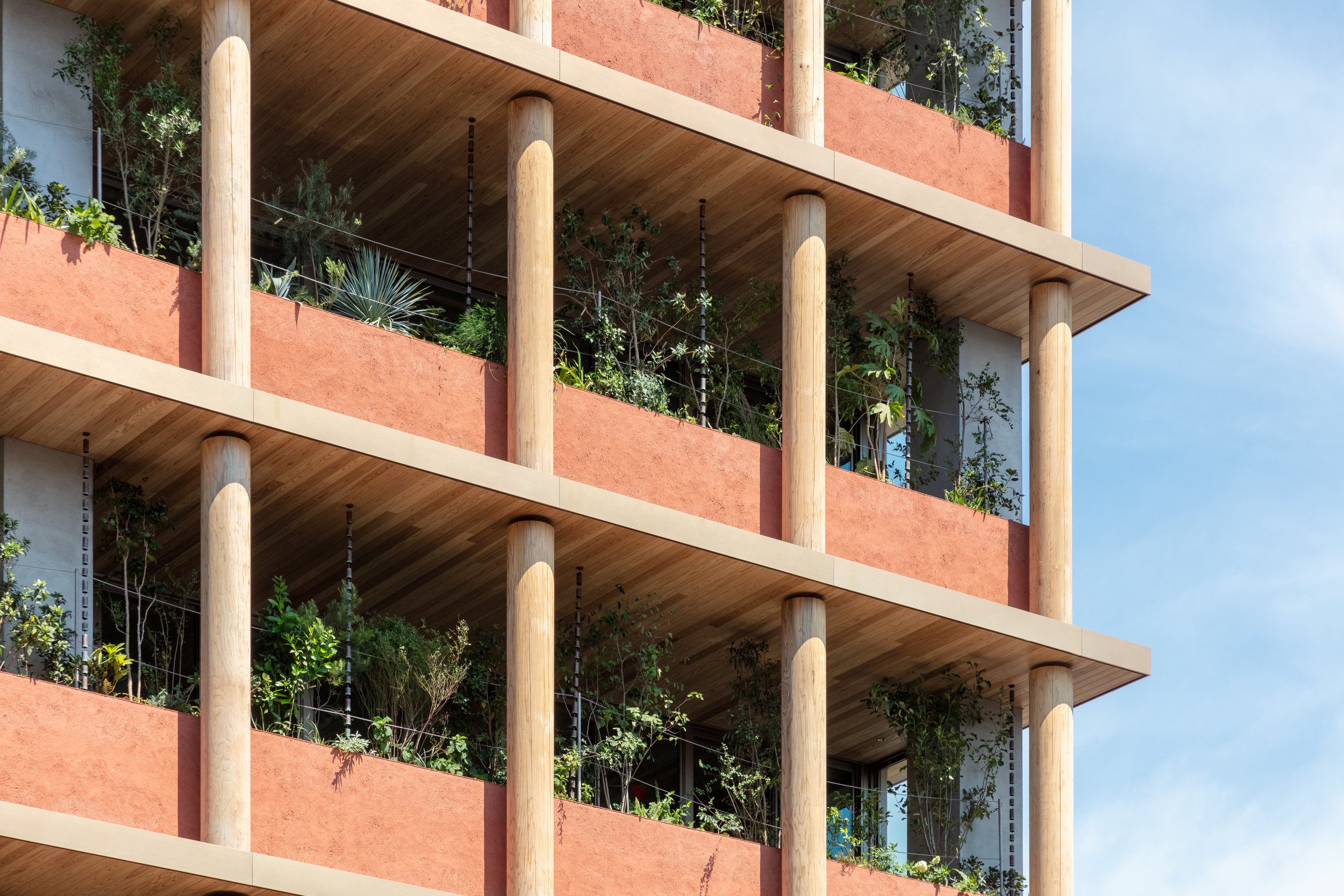
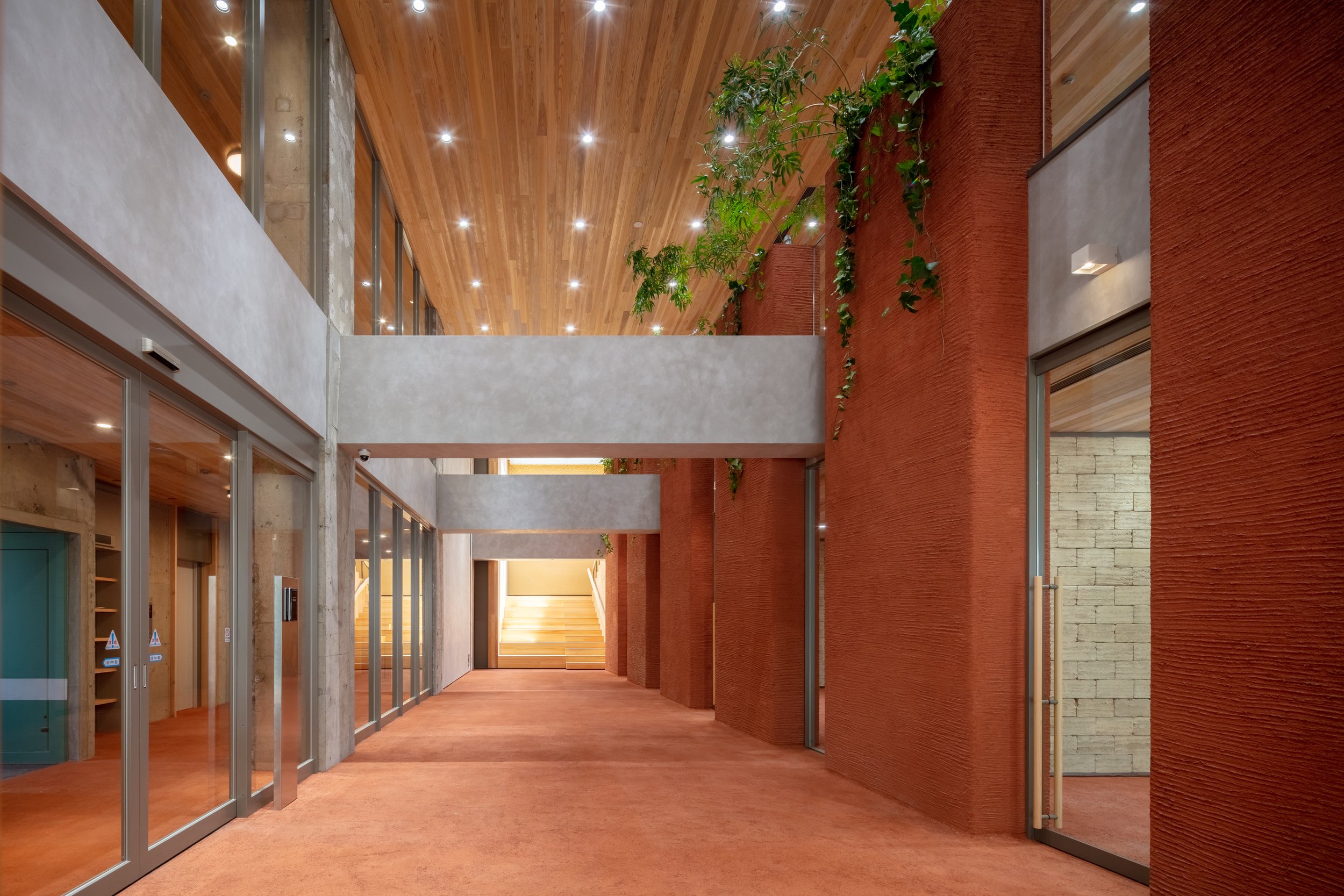
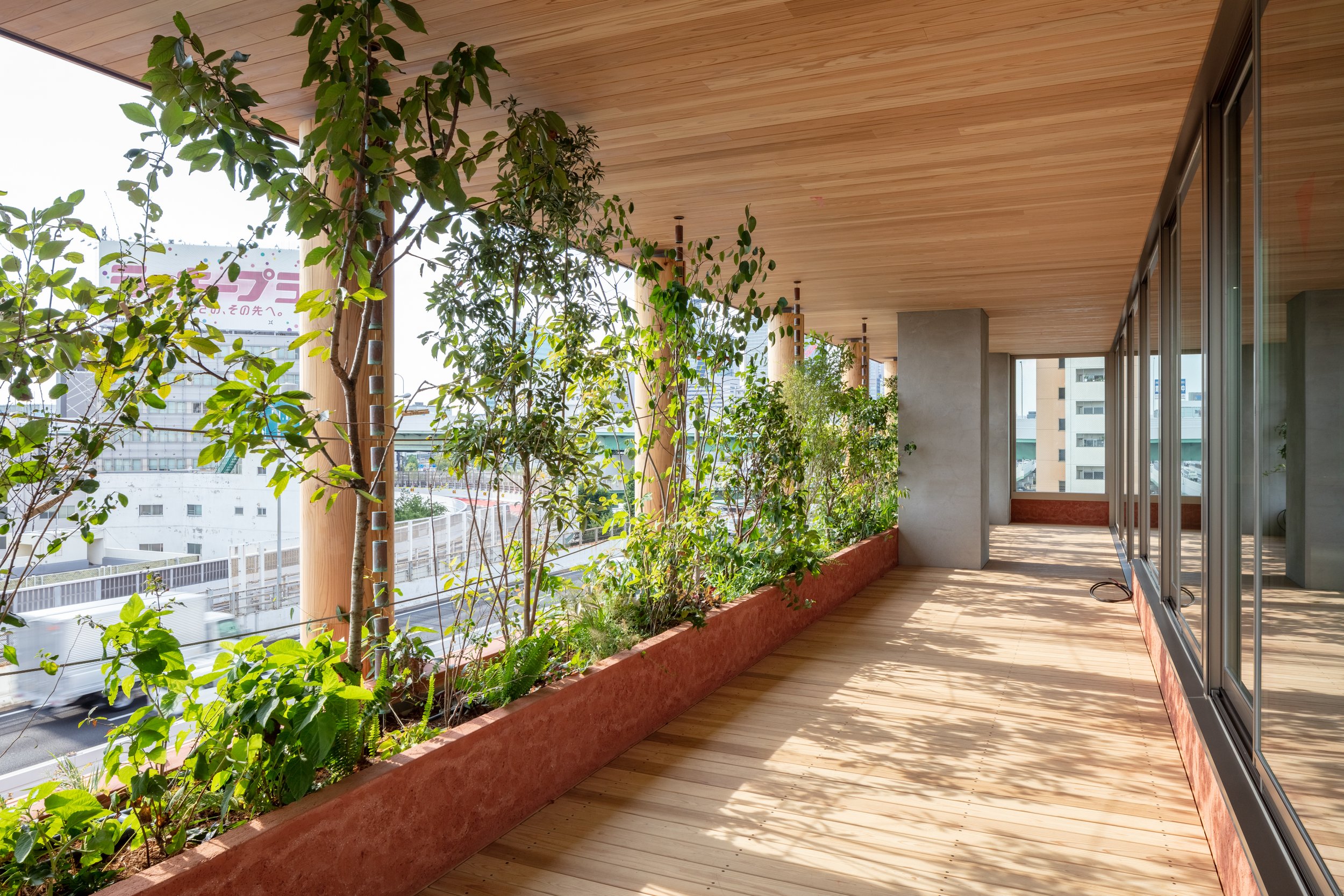
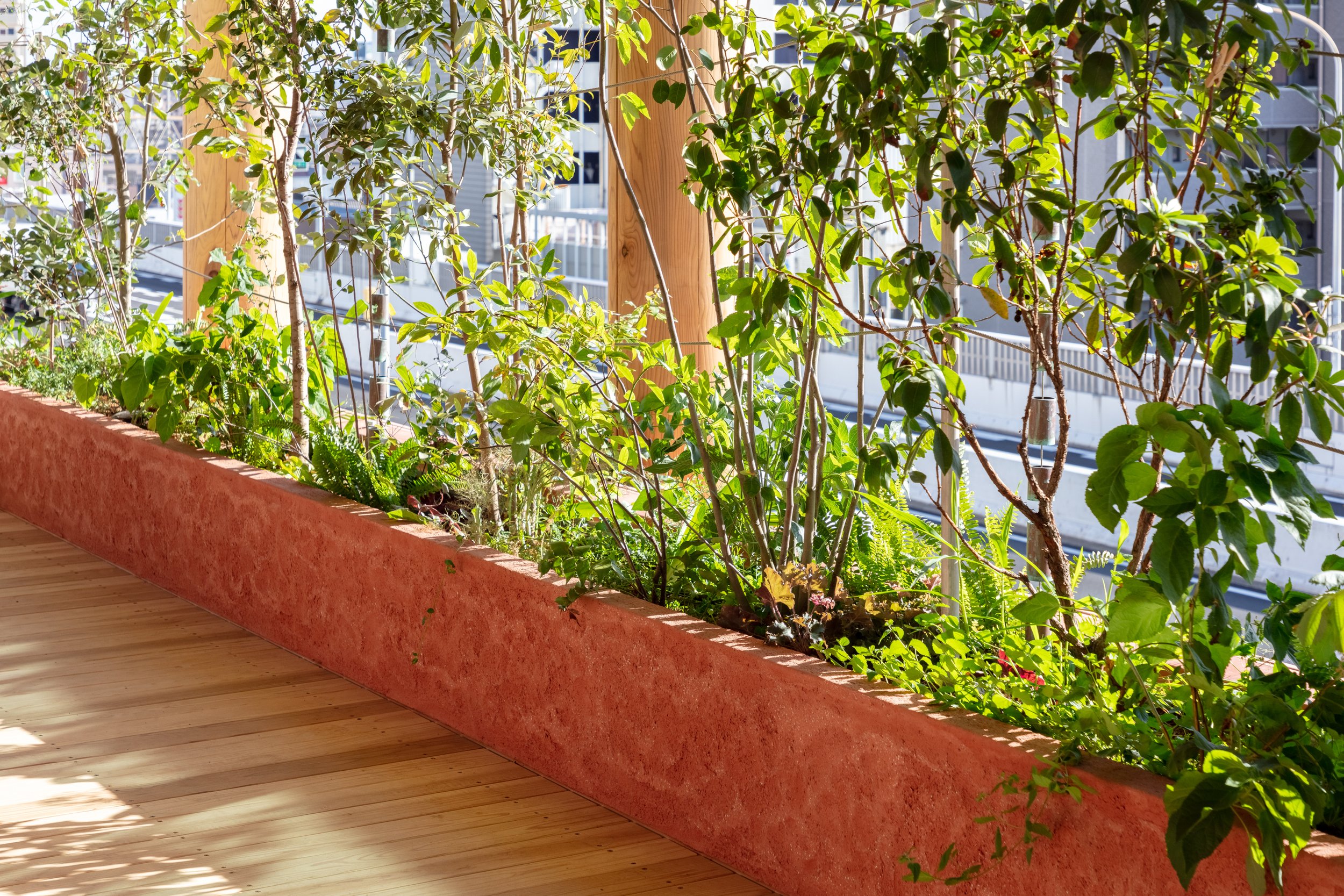
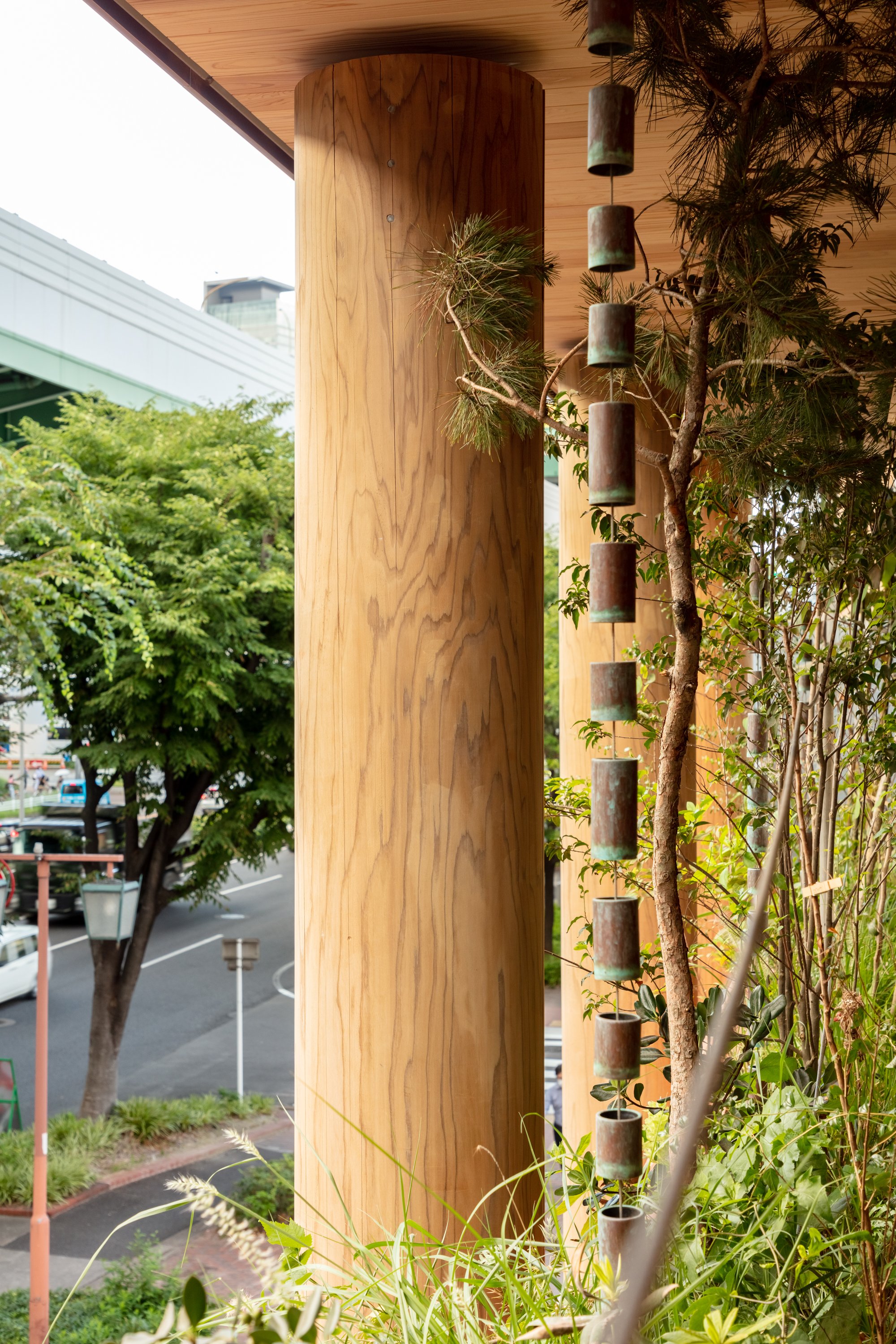
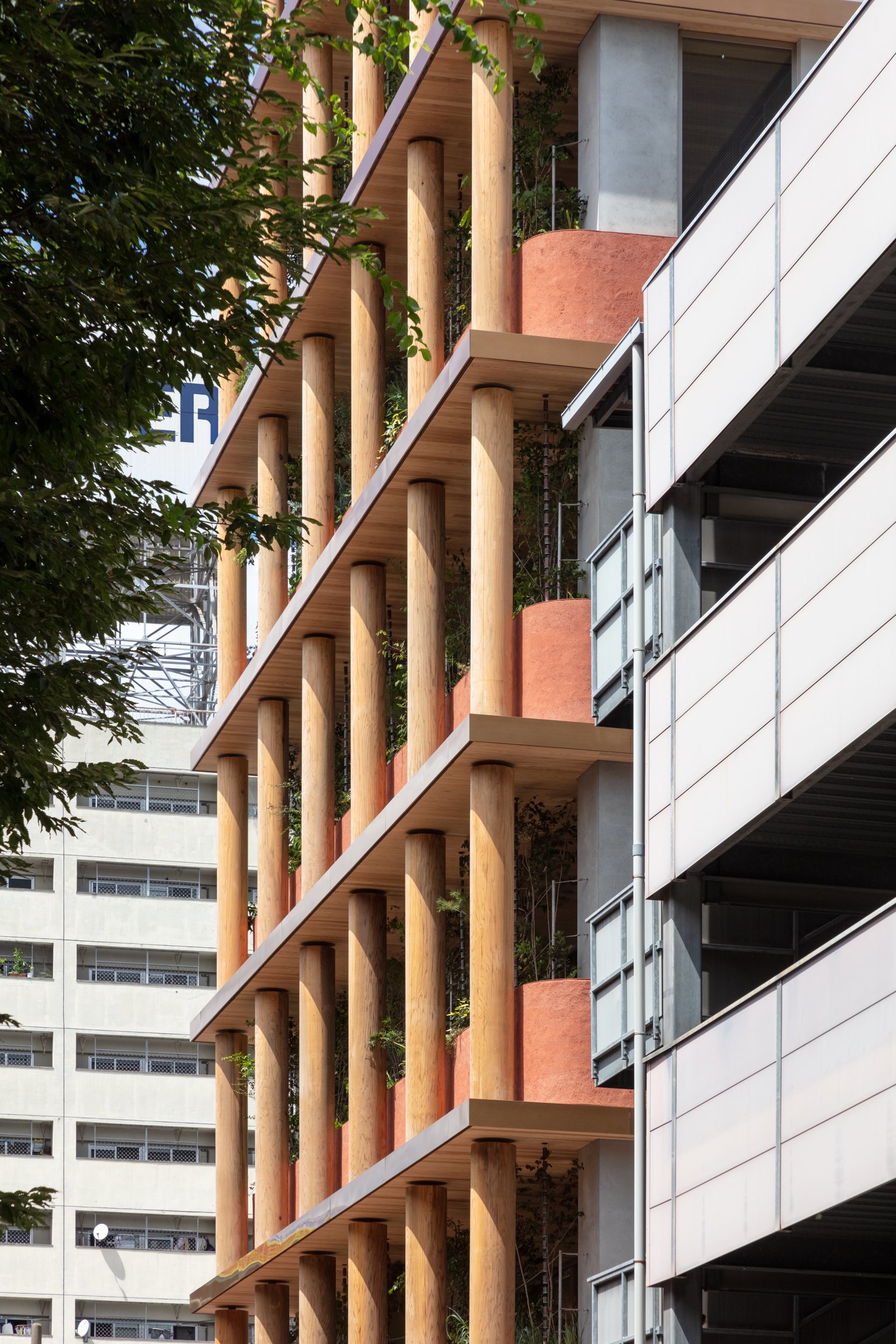
Inside and outside the building, soil materials were used for floors, walls, ceilings, and furniture. Raw materials were obtained from leftover soil in Aichi Prefecture. As long as amateurs participate in the finishing process, such as making marks with their fingers or throwing soil, the wall will be expressed "naturally" through human movement. Aside from the fact that earthen walls are not impure (petroleum-derived materials and cement are sometimes added to improve durability), they can also be applied for painting in the future and eventually returned to nature. In addition to the interior and exterior of the building as well as for furniture, fittings, and products, Japanese cedar from the Yoshino forest in Nara, which Asanuma Corporation manages sustainably, wharvested.ed. To minimize the amount of scrap wood generated, the front façade is built from Yoshino cedar logs with the largest diameter from a single tree. Existing stones and other materials used in existing buildings were repurposed as interior surfaces. Others were crushed into small pieces and hardened with plaster to be used as furniture surfaces. Urban waste was also used as a resource. A surface material made of waste plastic flakes that have been crushed and hardened by heating has been used to cover existing furniture, and a knitted fabric made of recycled polyester yarn has been used to wrap existing furniture.
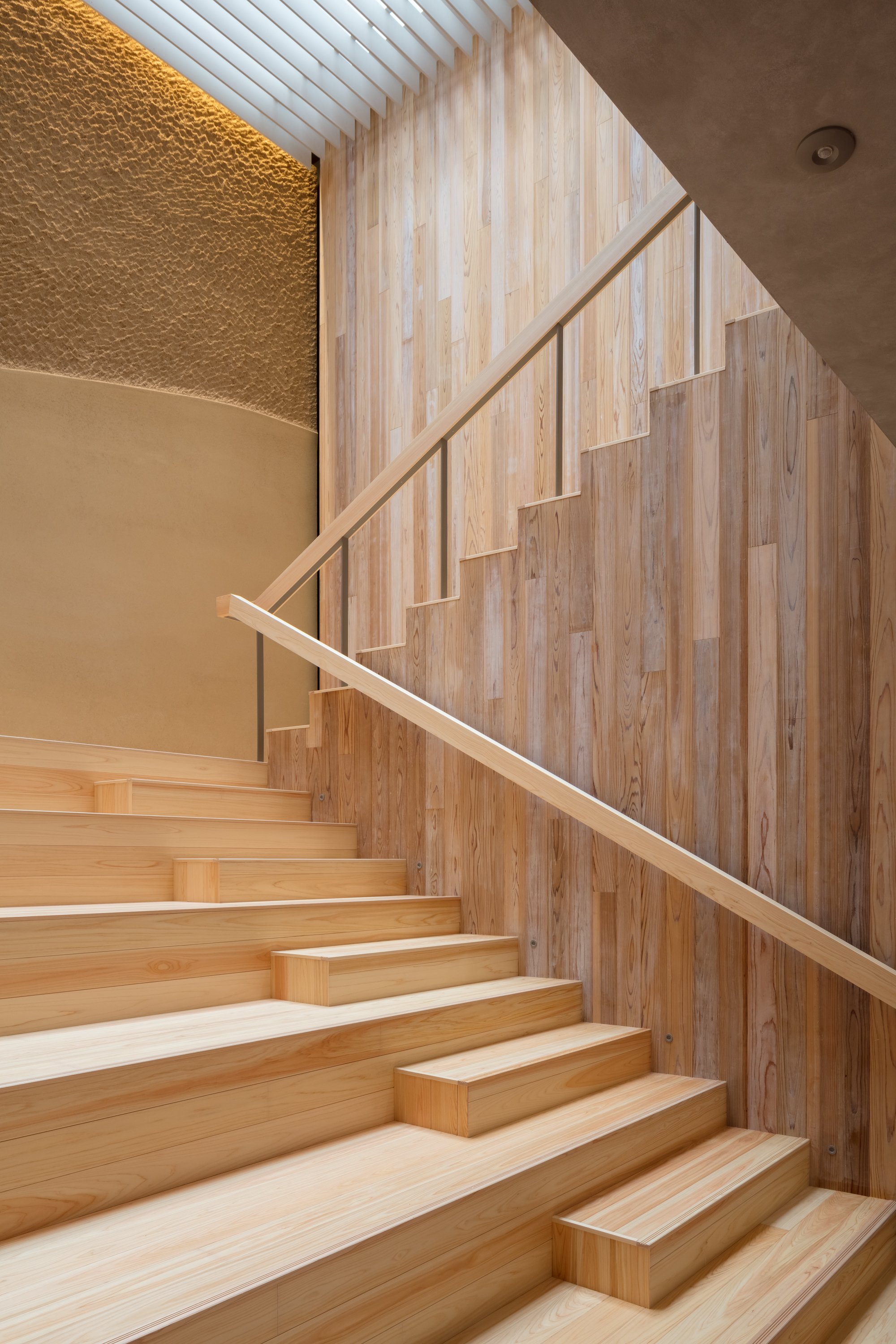
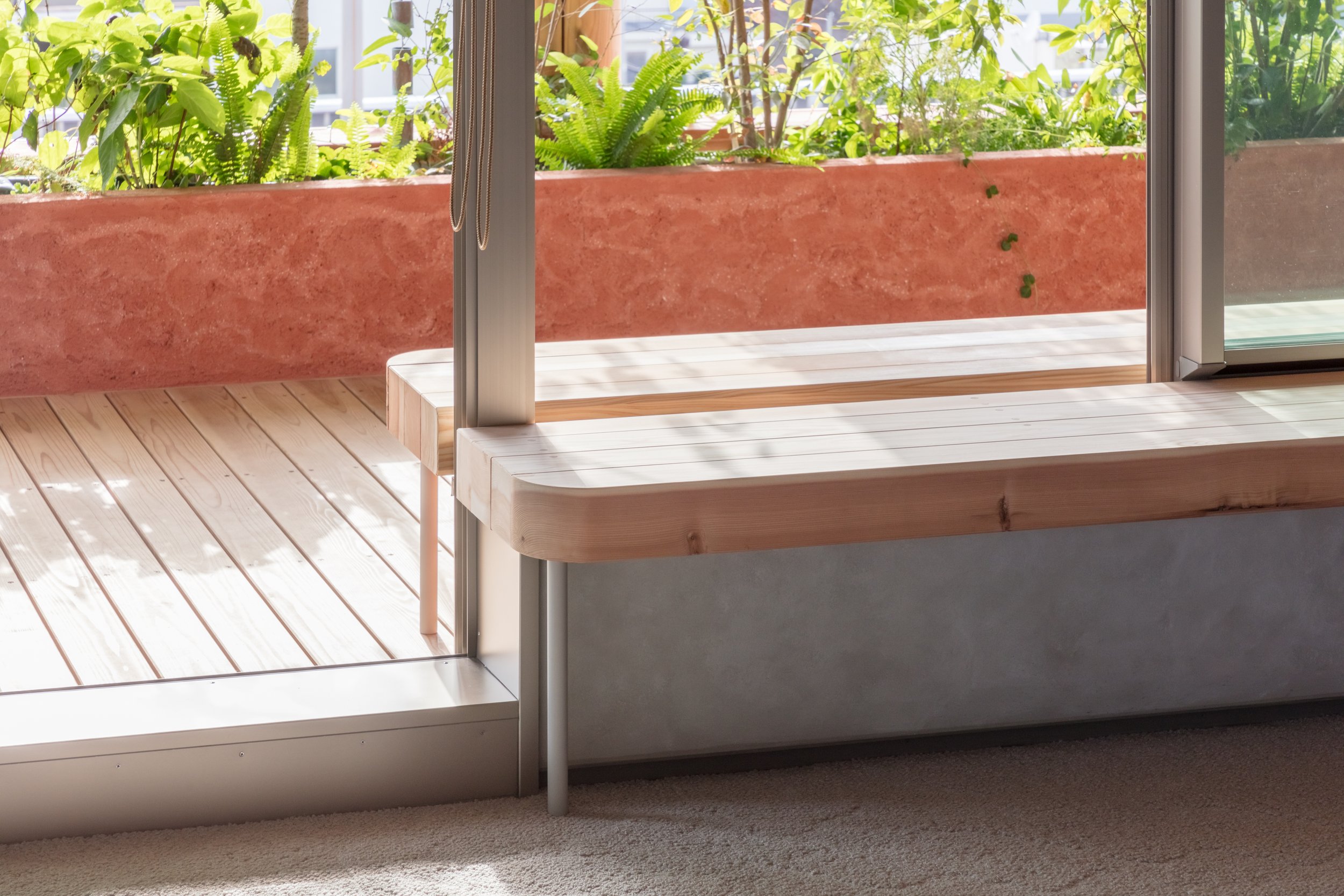
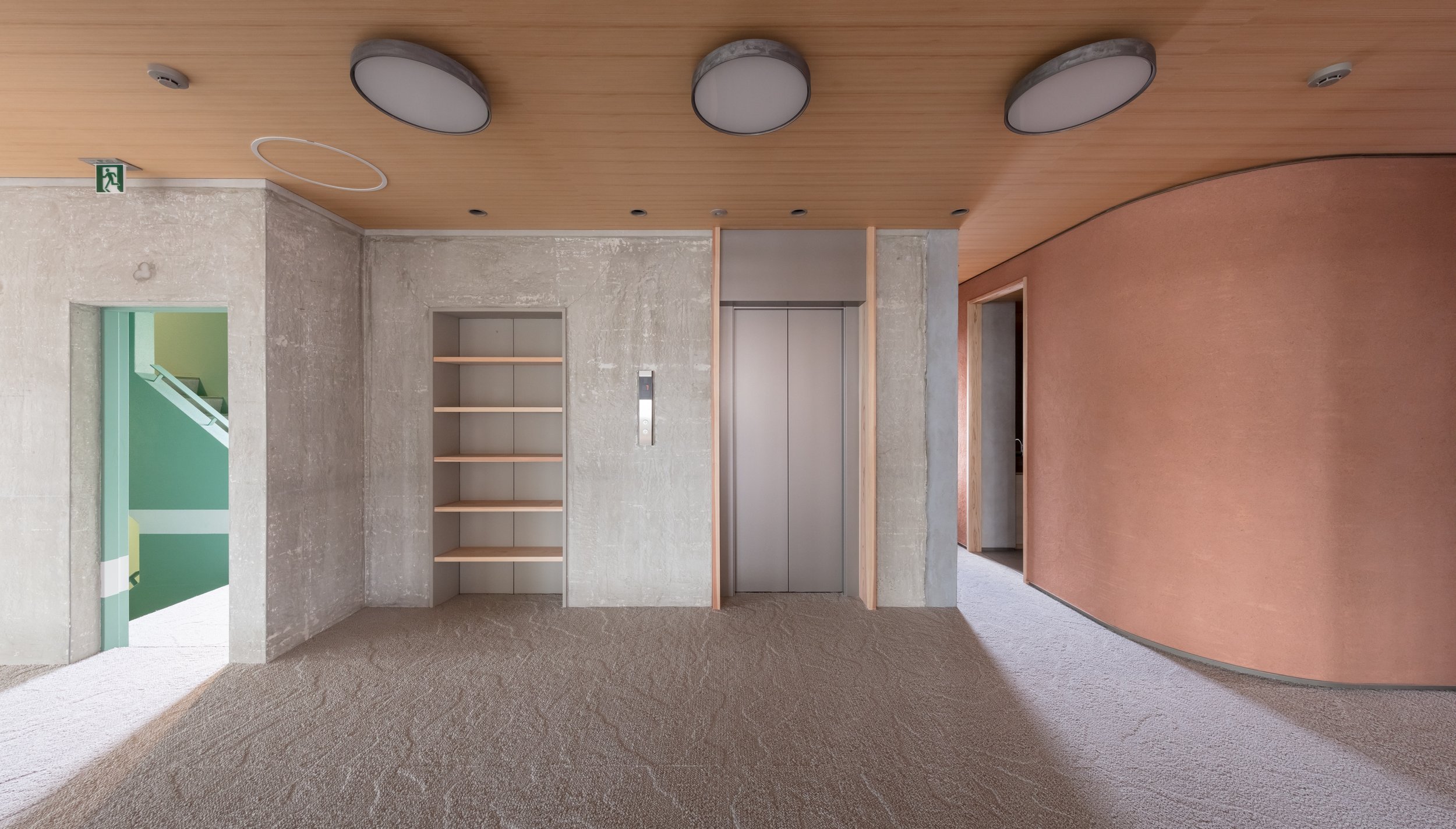

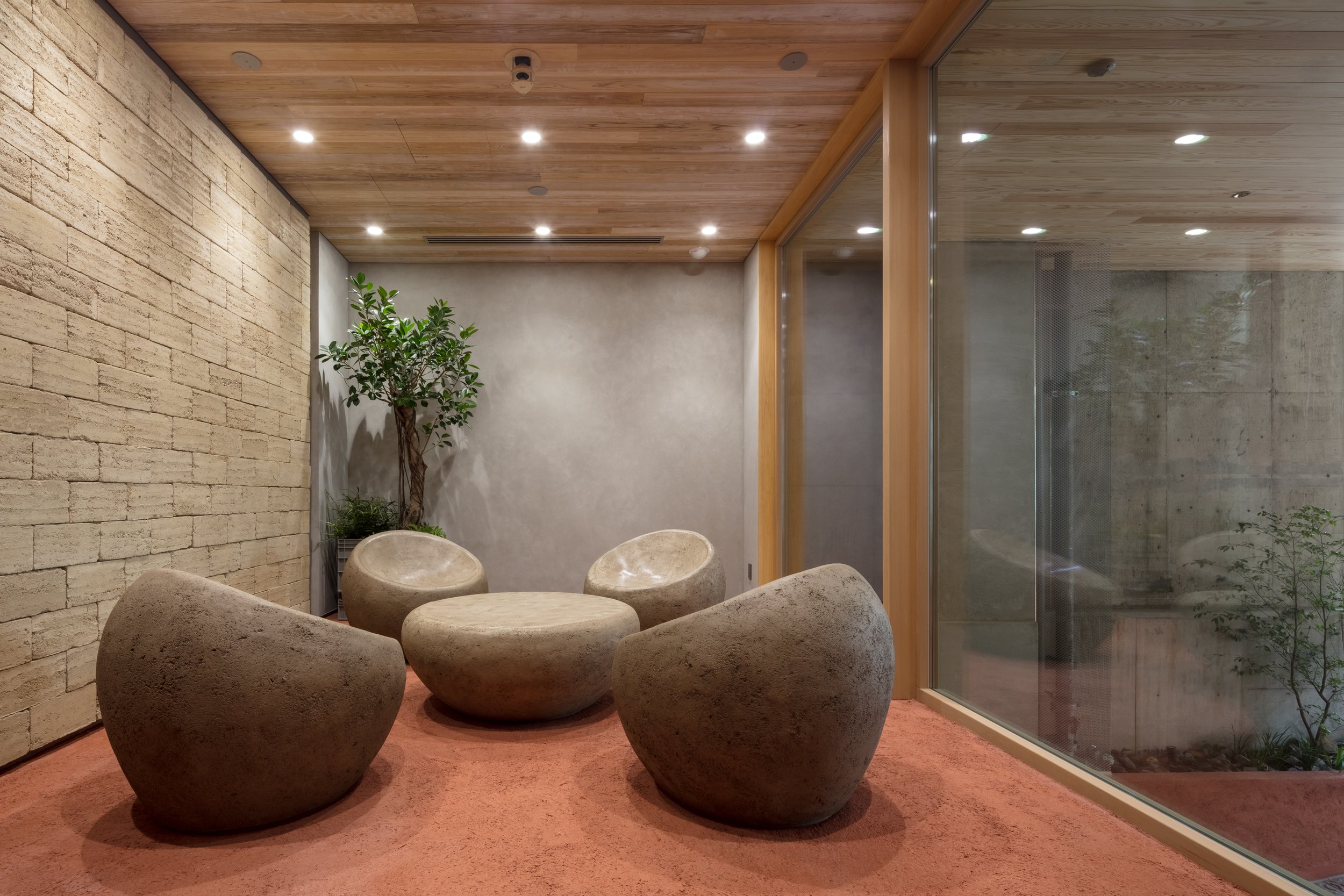
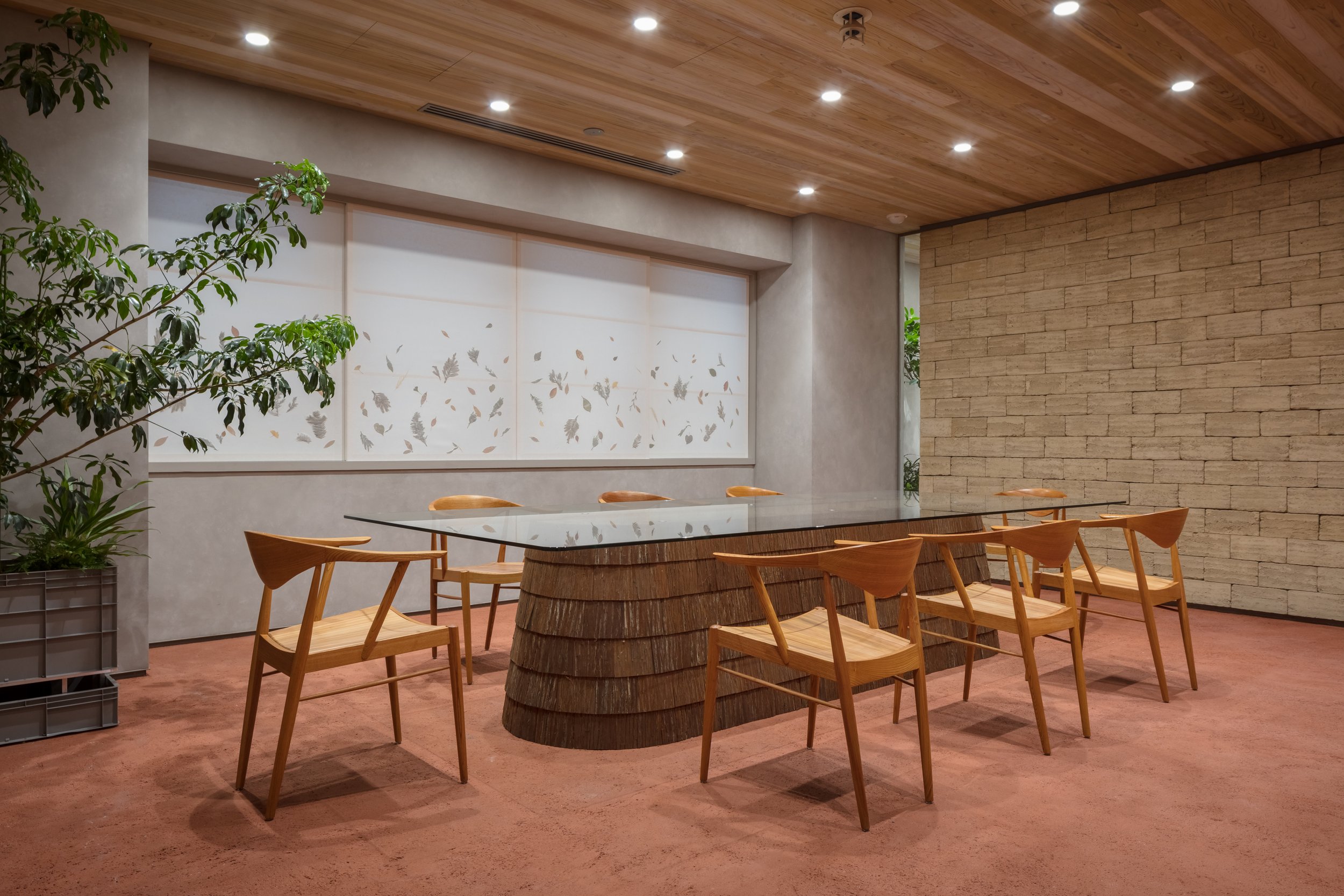
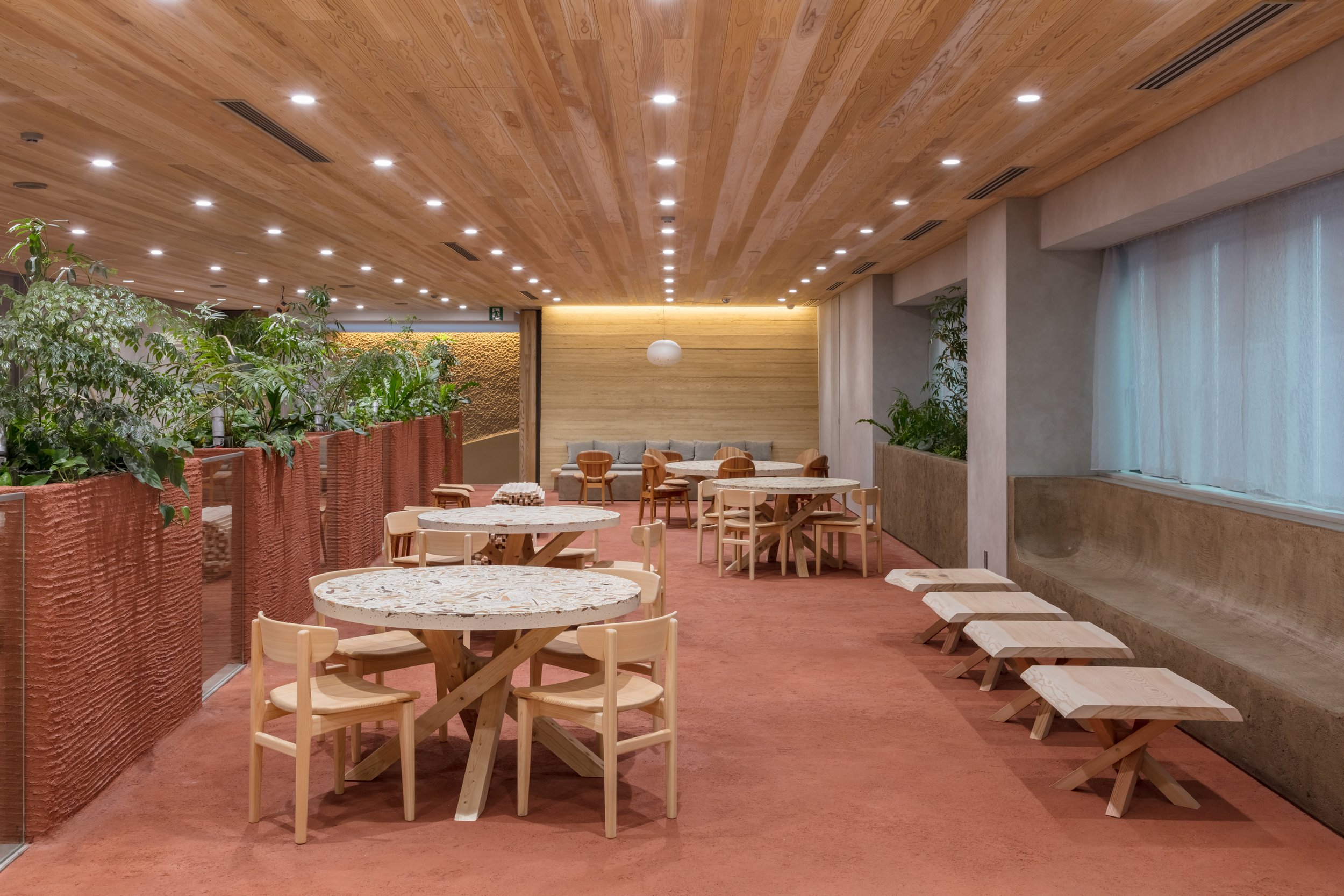

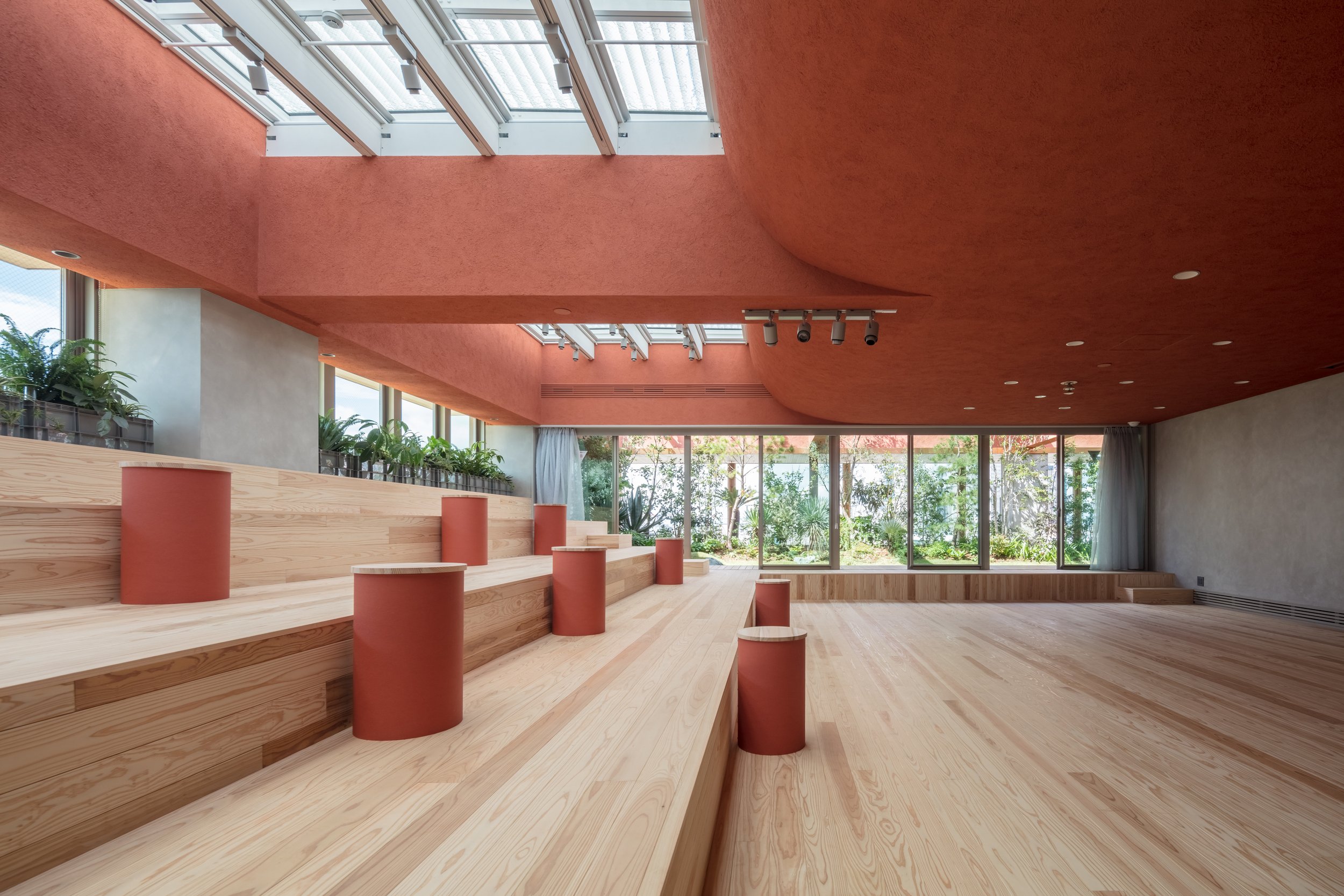
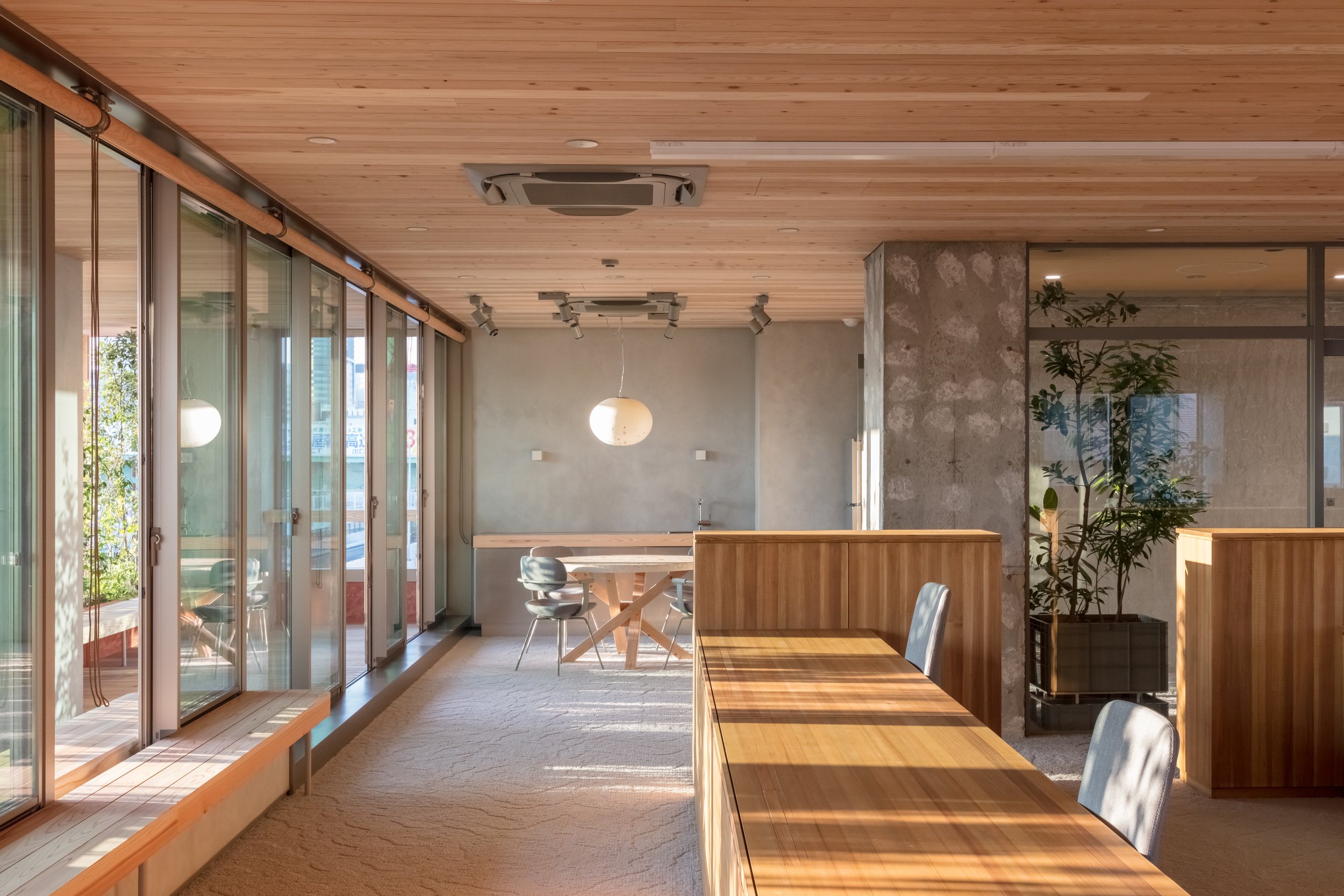
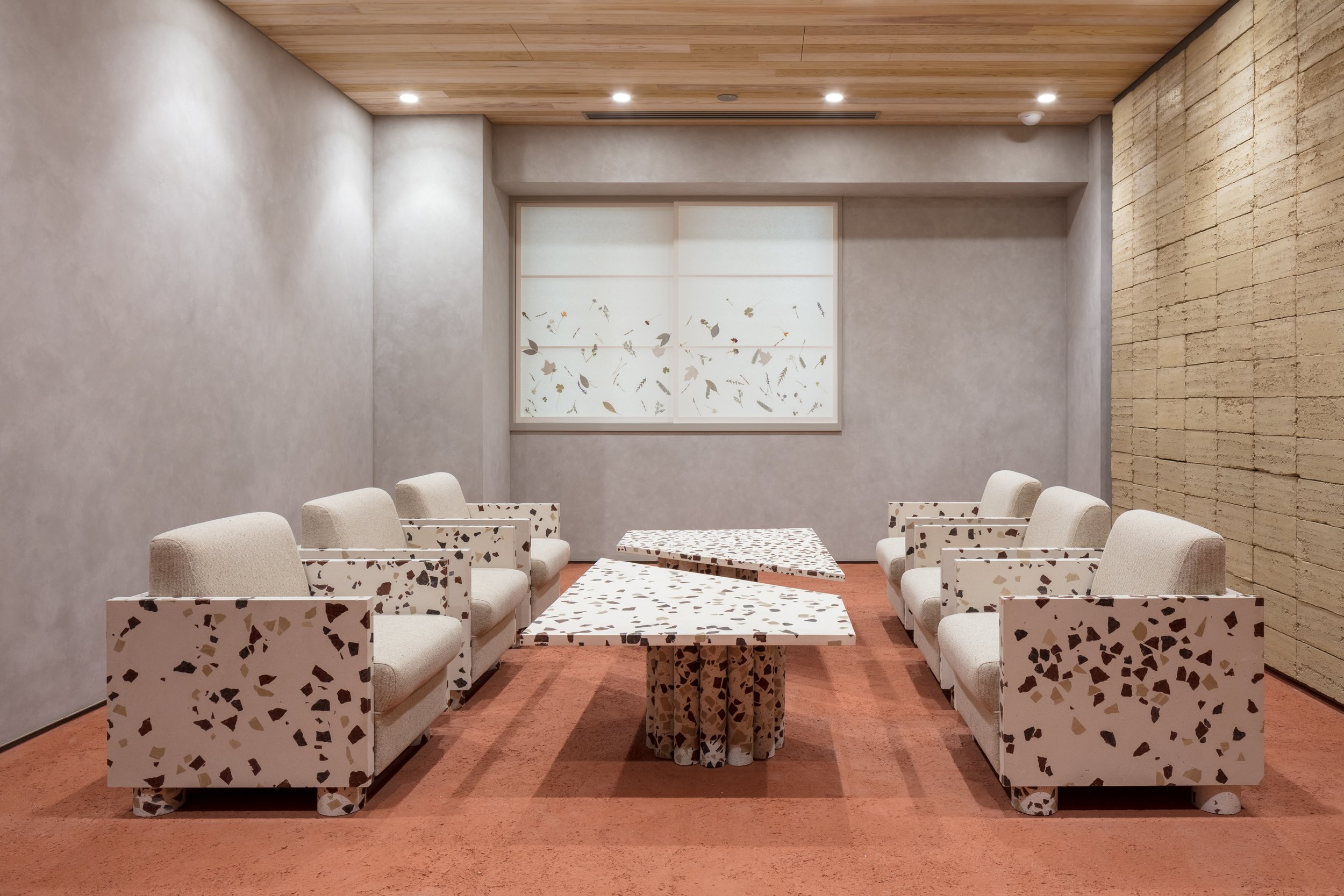
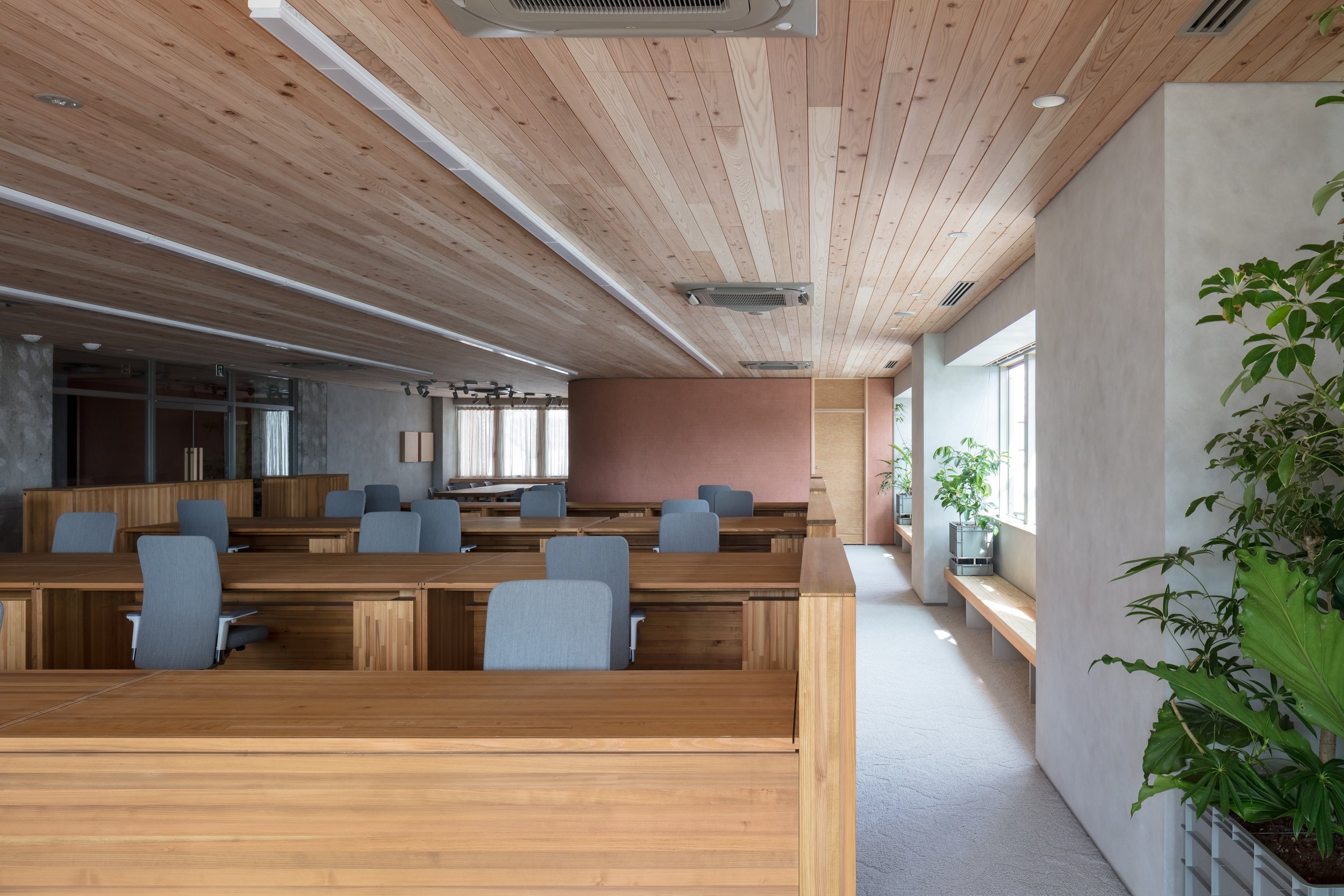
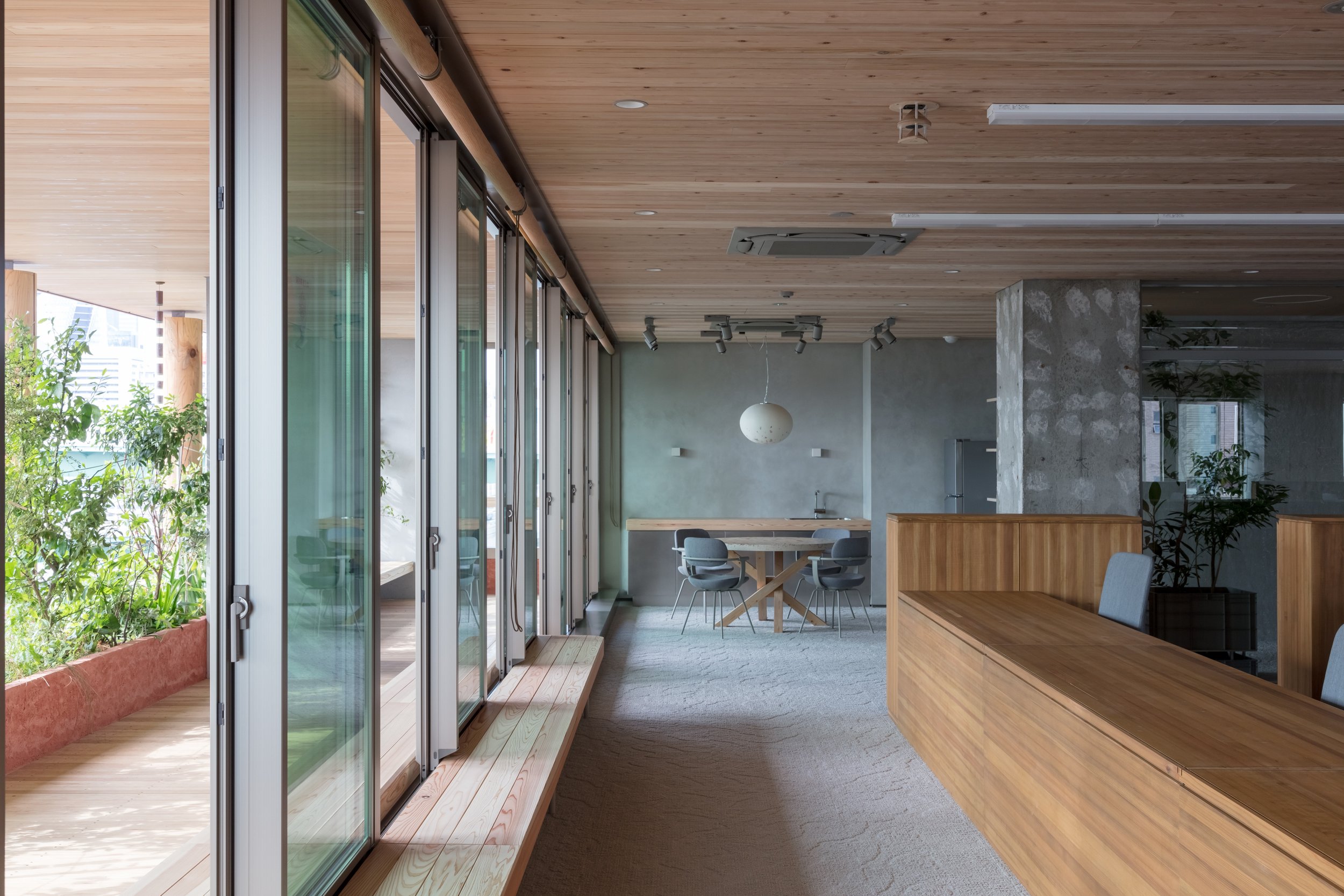
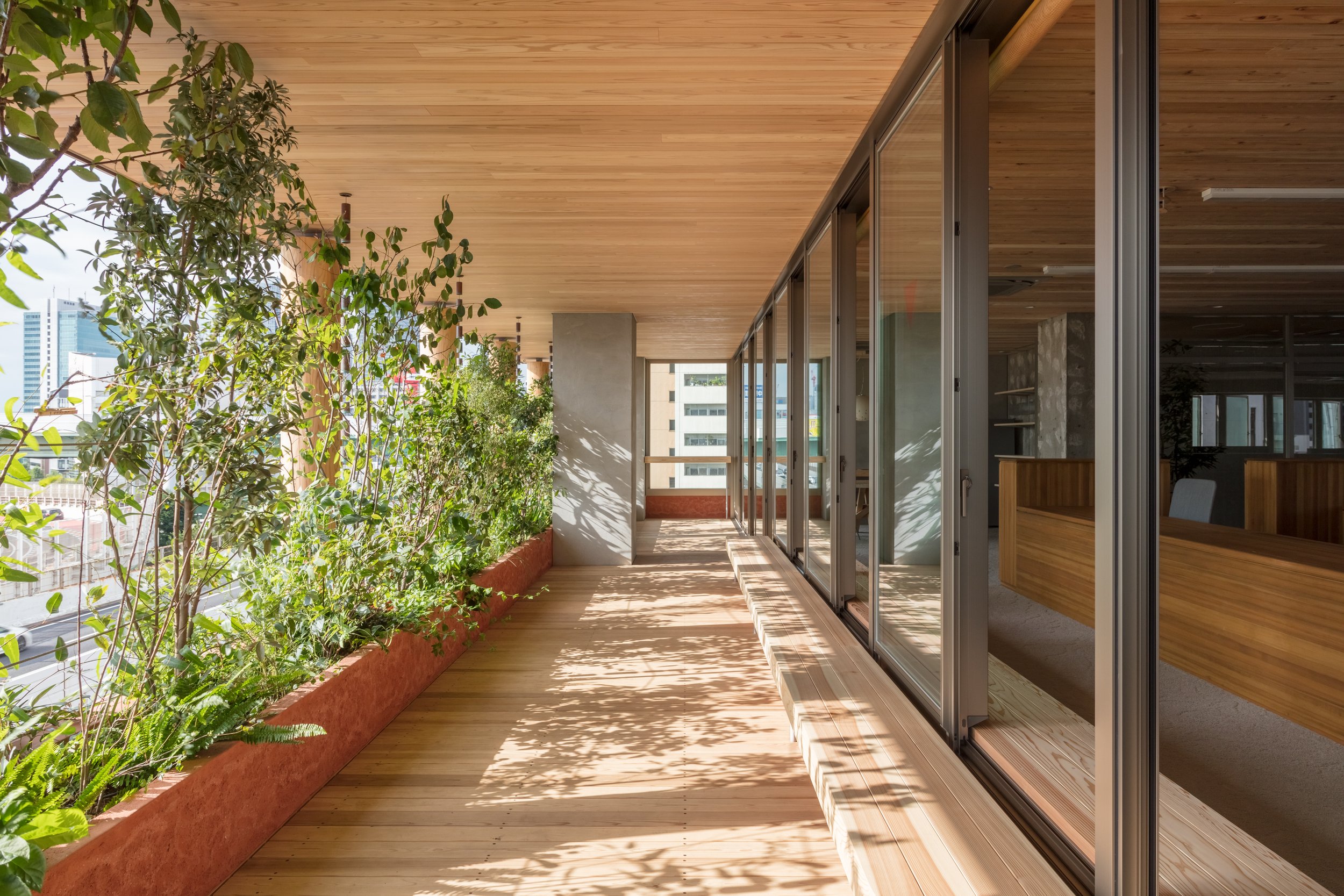
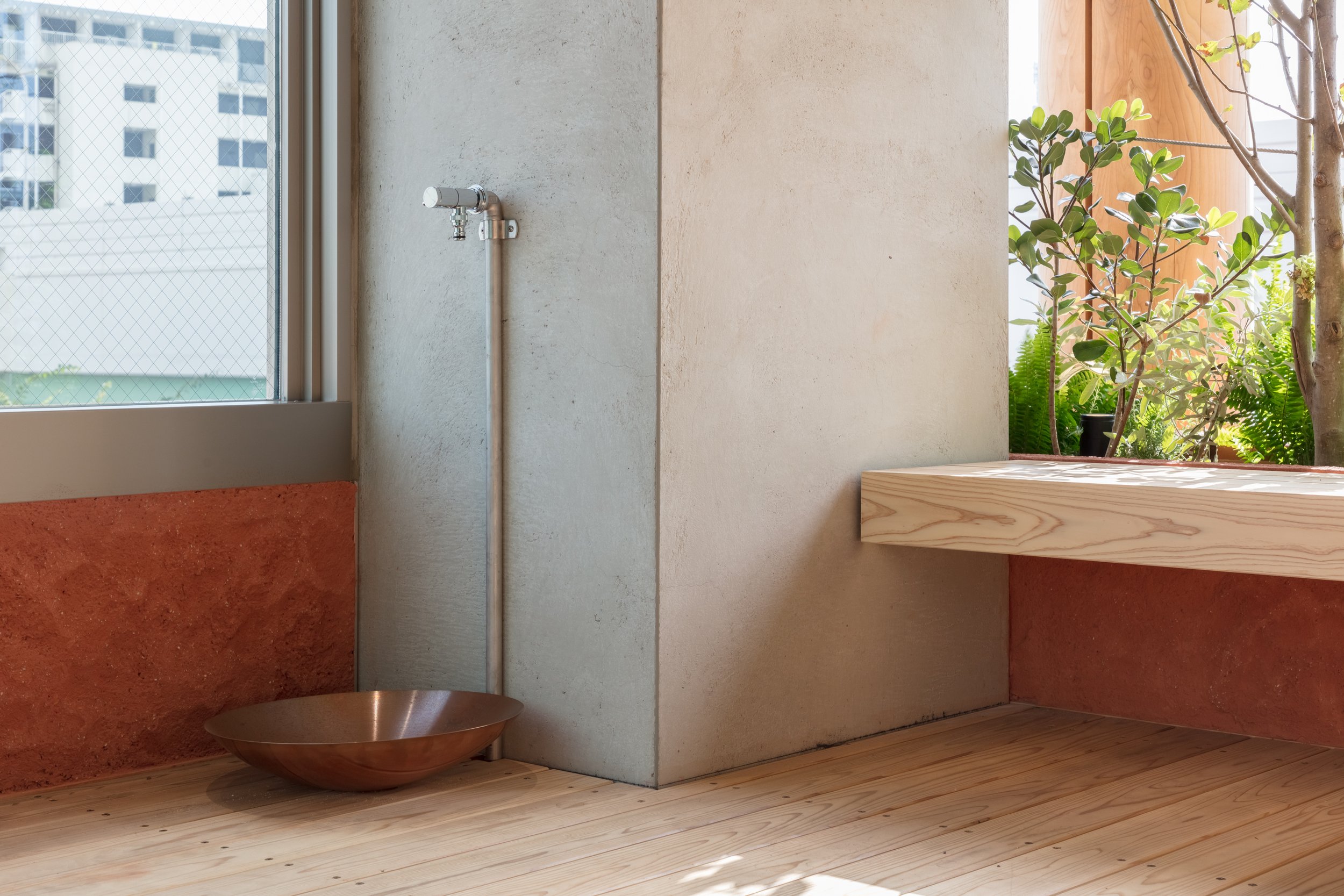
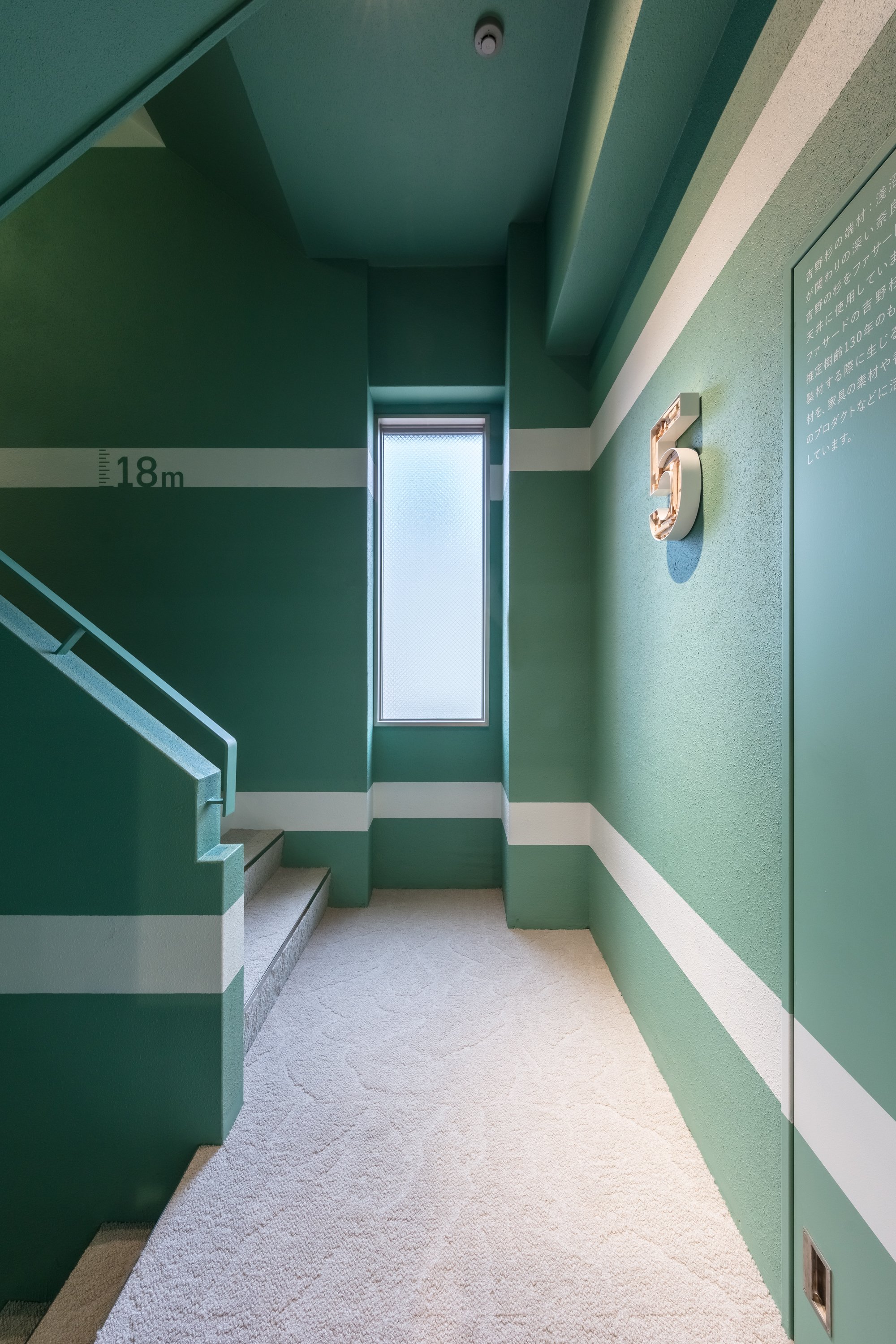
A building functions as a "material bank" and is a transit point in the flow of materials. To maximize the possibility of re-using materials, it is imperative to use natural materials in a way that allows them to be separated from artificial materials, in order to maximize their effectiveness, and eventually return them to the earth. It is necessary to process existing man-made materials so that new materials can be created, making the most of their characteristics. By creating a delightful environment connected to the changing nature of light, wind, soil, trees, and plants, this project attempts to reconstruct buildings as part of the new material flow in the city, and to reposition architecture in a cycle that is good for people and the earth.
Planning & Drawing
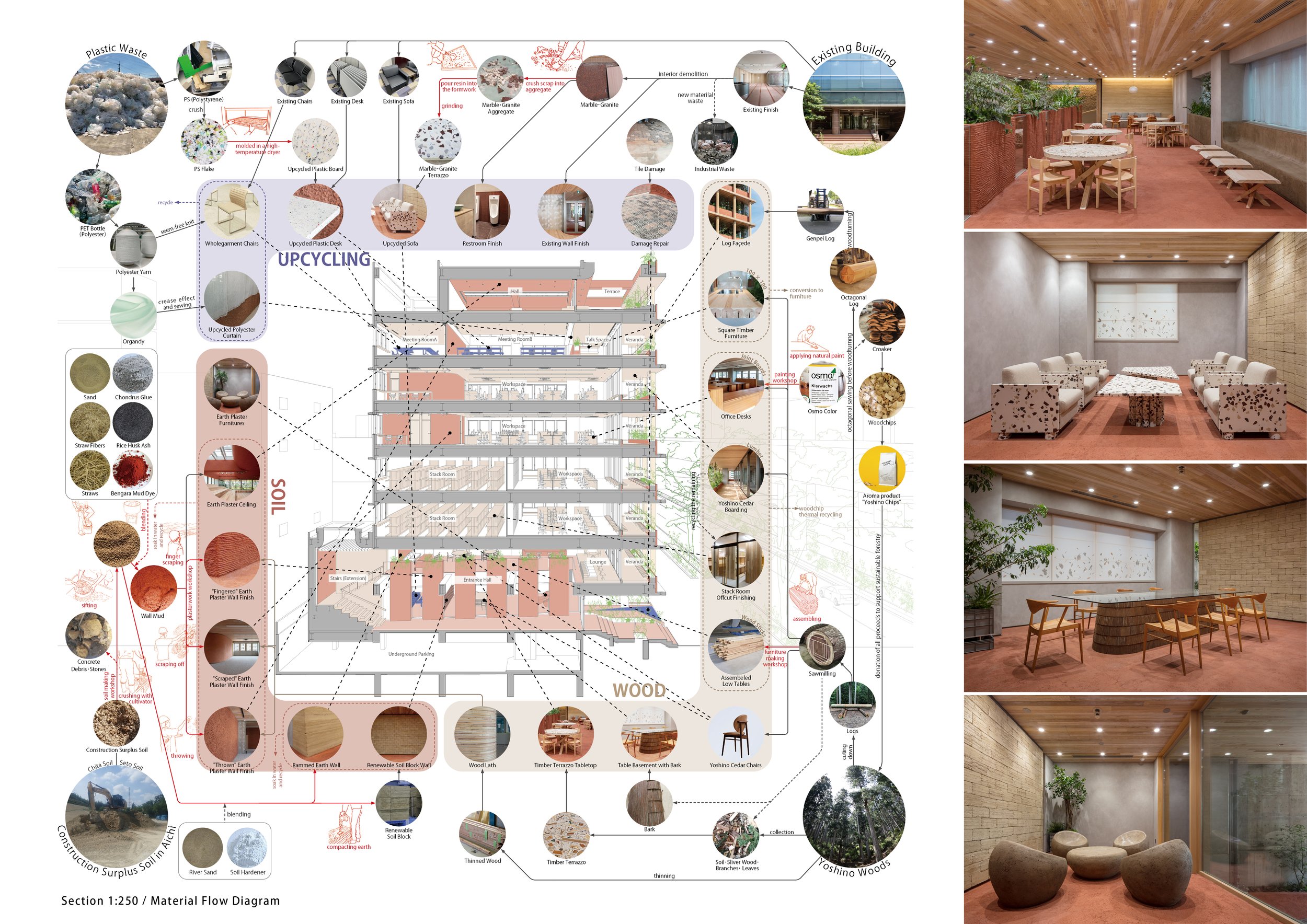
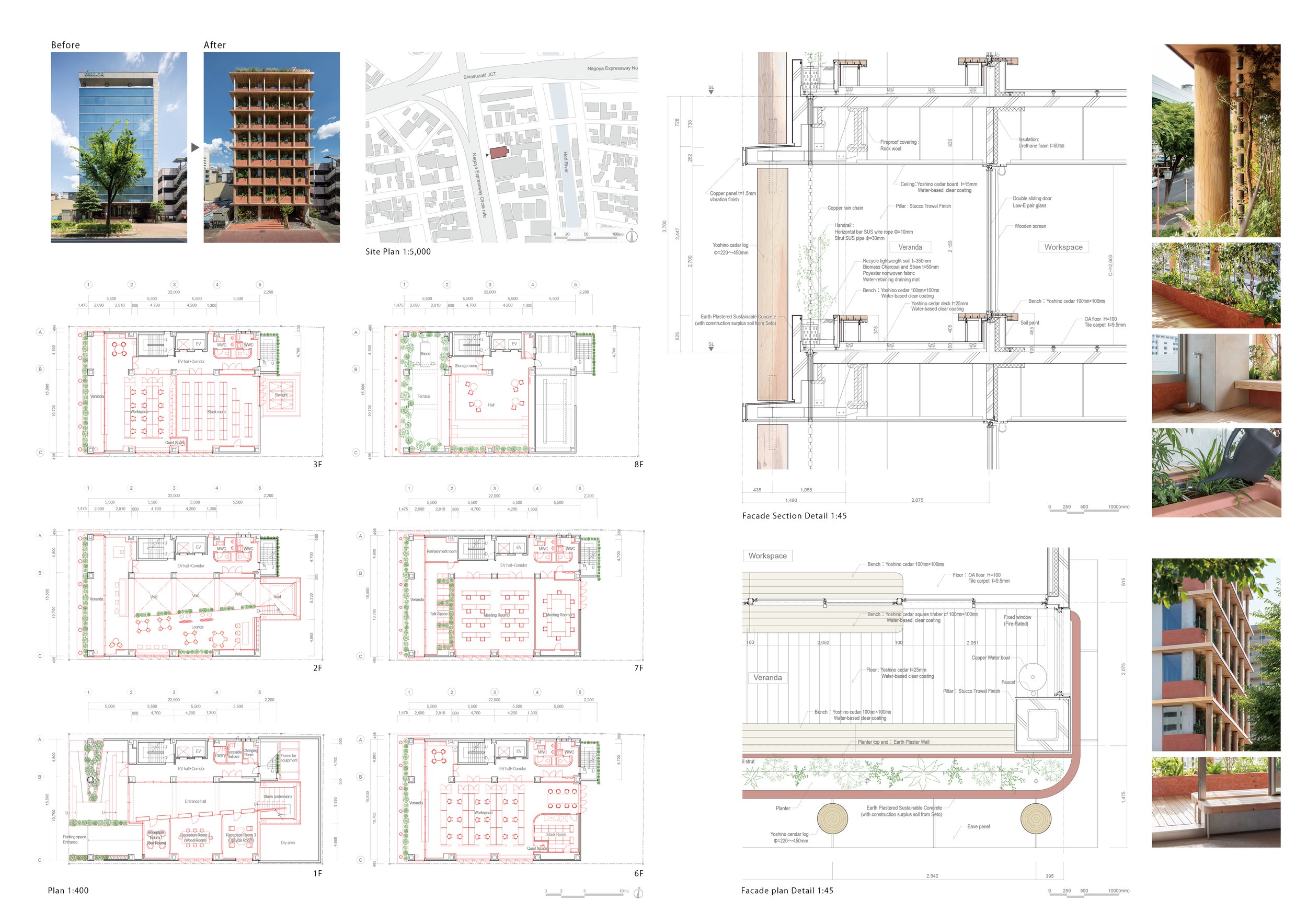
Designer Profile
Norihisa KAWASHIMA
Principal at Nori Architects, Senior Assistant Professor at Meiji University
Registered Architect, JAPAN, Dr. Eng.
Born in Kanagawa prefecture in 1982, Kawashima graduated from the University of Tokyo in 2005, earned his master’ s degree from the University of Tokyo Graduate School in 2007, after which he was hired by Nikken Sekkei. Kawashima became a visiting scholar at University of California, Berkeley and worked with Prof. Dana Buntrock and LOISOS + UBBELOHDE in 2012. In 2014, Kawashima became an assistant professor at the Department of Architecture of Tokyo Institute of Technology. In 2016, Kawashima earned a doctor’s degree from the University of Tokyo Graduate School. In 2017, Kawashima established Nori Architects. In 2020, Kawashima became a senior assistant professor at Meiji University. Now Kawashima is a principal of Nori Architects and a principal of Regional Design Laboratory at Meiji University.
Representative works:Sony City Osaki [2011] , Diagonal Boxes [2016] , Yuji Yoshida Gallery / House [2017] , Saw-tooth Roofs in Ichinomiya[2017], REVZO Toranomon [2020] ,and GOOD CYCLE BUILDING 001 Asanuma Corporation Nagoya Branch Office Renovation[2021].
Representative awards: The Prize of Architectural Institute of Japan [Architectural Design], 1st Prize in the 7th Sustainable Housing Award from IBEC, 1st Prize in JIA Sustainable Architecture Award 2020, Good Design Award 2021 Good Design Best 100, Sky Design Awards 2021 THE NEW BLACK BRONZE and many others.
Music Hall in the Sky by Takuro Yamamoto Architects
Takuro Yamamoto Architects won the Bronze Award for Music Hall in the Sky at the Sky Design Awards 2022. In a residential area of Tokyo, Music Hall in the Sky is a small classical music concert hall with about 50 seats. It is surrounded by collective housing and three-story houses, but despite this, you can listen to music in an environment where only the sky can be seen outside the window because the adjacent houses cannot be seen from the hall's windows.
Takuro Yamamoto Architects won the Bronze Award for Music Hall in the Sky at the Sky Design Awards 2022.
In a residential area of Tokyo, Music Hall in the Sky is a small classical music concert hall with about 50 seats. It is surrounded by collective housing and three-story houses, but despite this, you can listen to music in an environment where only the sky can be seen outside the window because the adjacent houses cannot be seen from the hall's windows.
It is common for concert halls to be designed without windows. For staging reasons and sound insulation, concerts are generally separated from everyday life by having no windows in the hall, especially in large halls. A windowless hall, however, is inappropriate for a space that should be relaxing, because it creates a sense of captivity in the audience.
Architect Takuro Yamamoto also believed that if you could see the sky when looking lower than eye level, it would be a very unusual experience similar to looking out the window of a plane, and this would make you feel as if the whole building were surrounded by the sky instead of buildings. The mirror and the top light were combined to create a ribbon window at the foot of the stage. Listeners may enjoy concerts in this hall on a Sunday afternoon and escape everyday life for a while by watching the blue sky and floating clouds.








Drawing & Planning
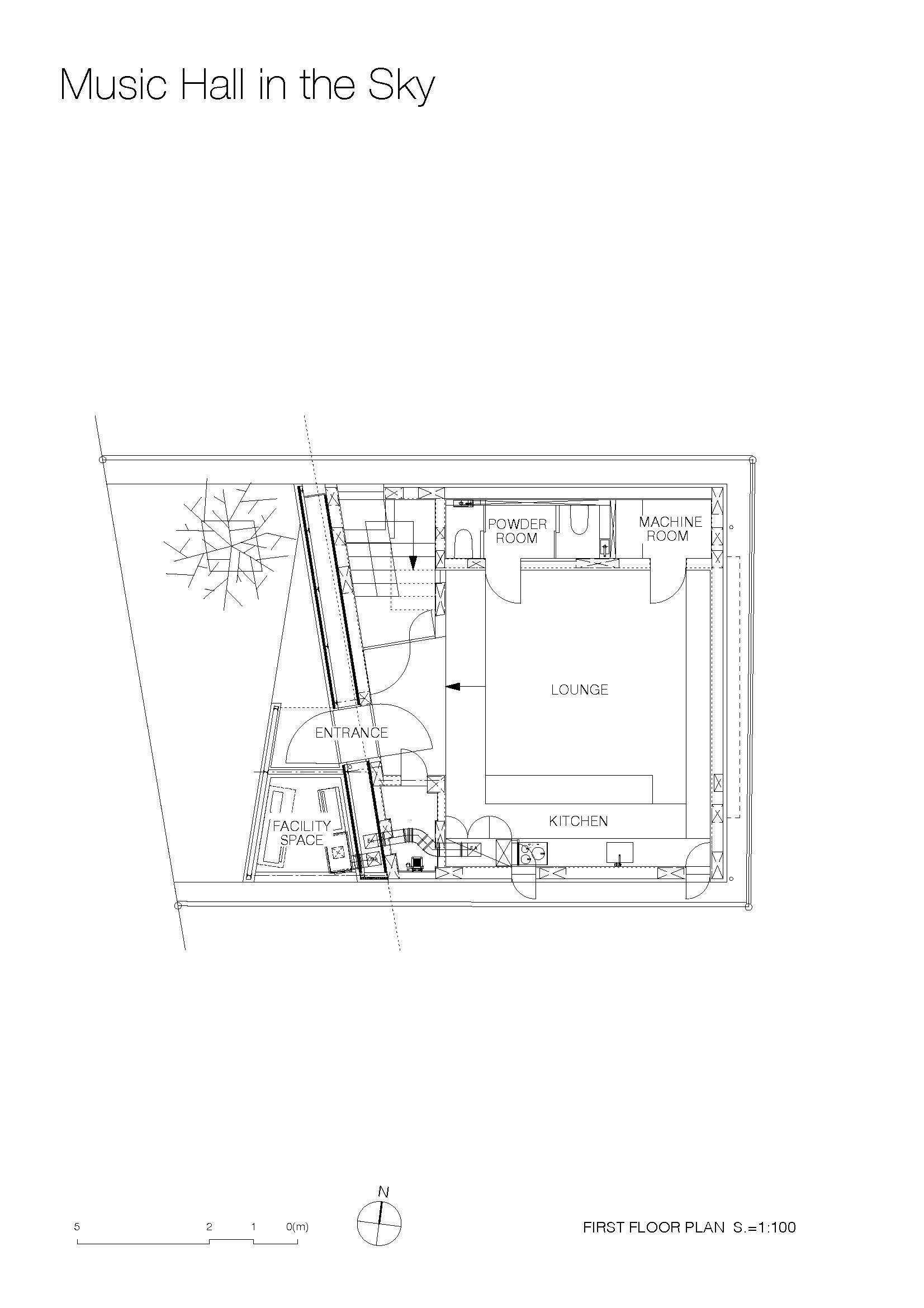
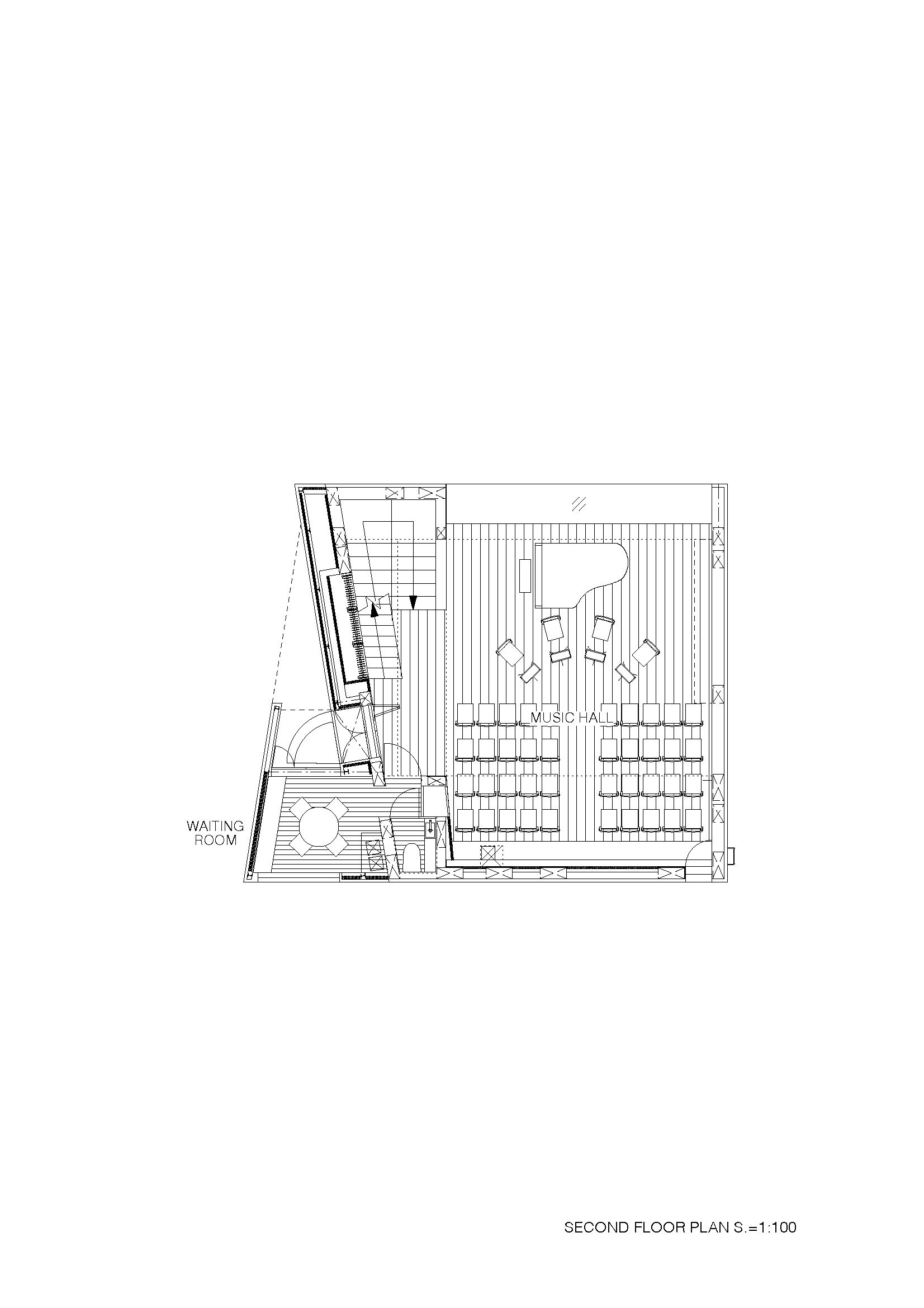
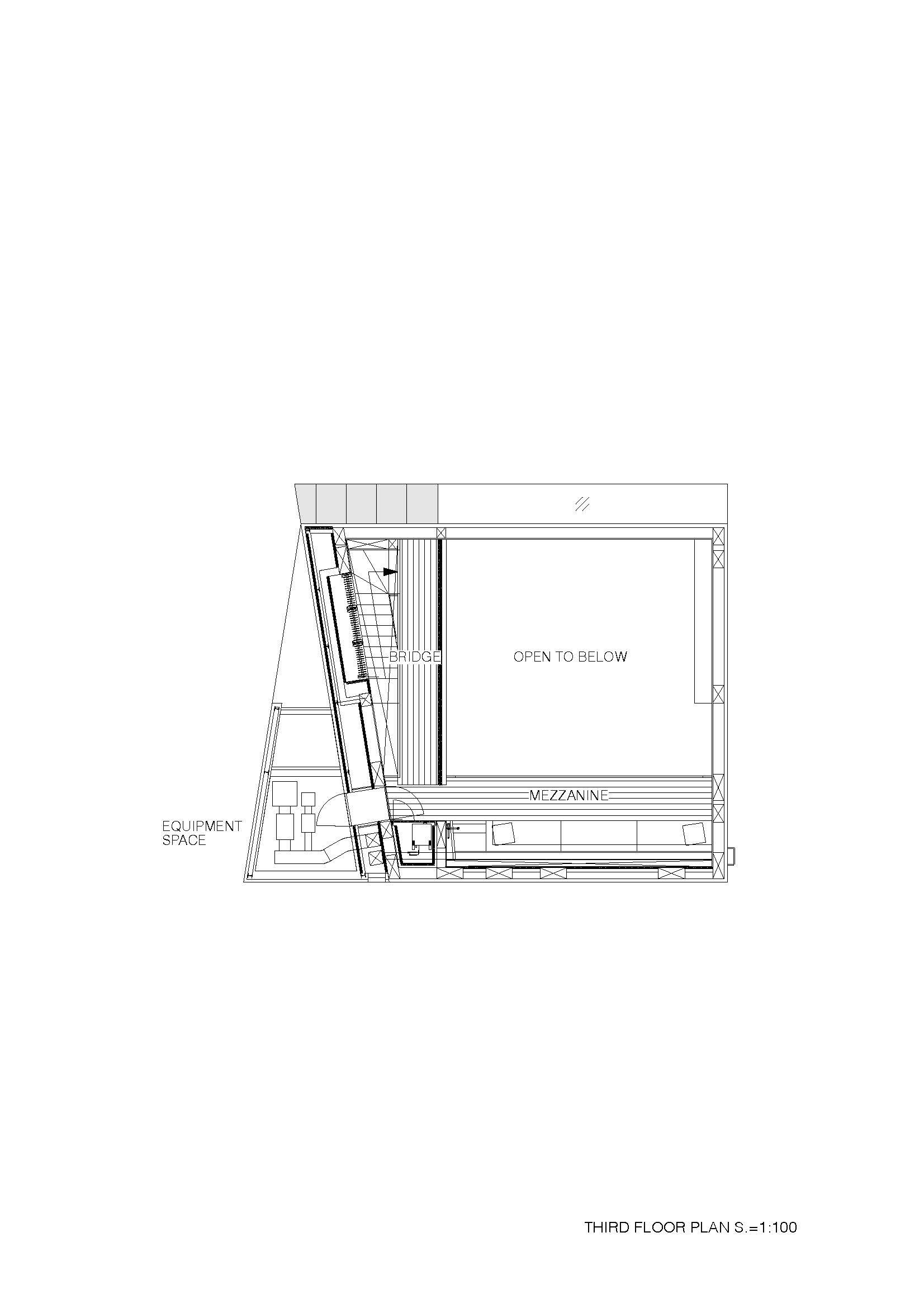
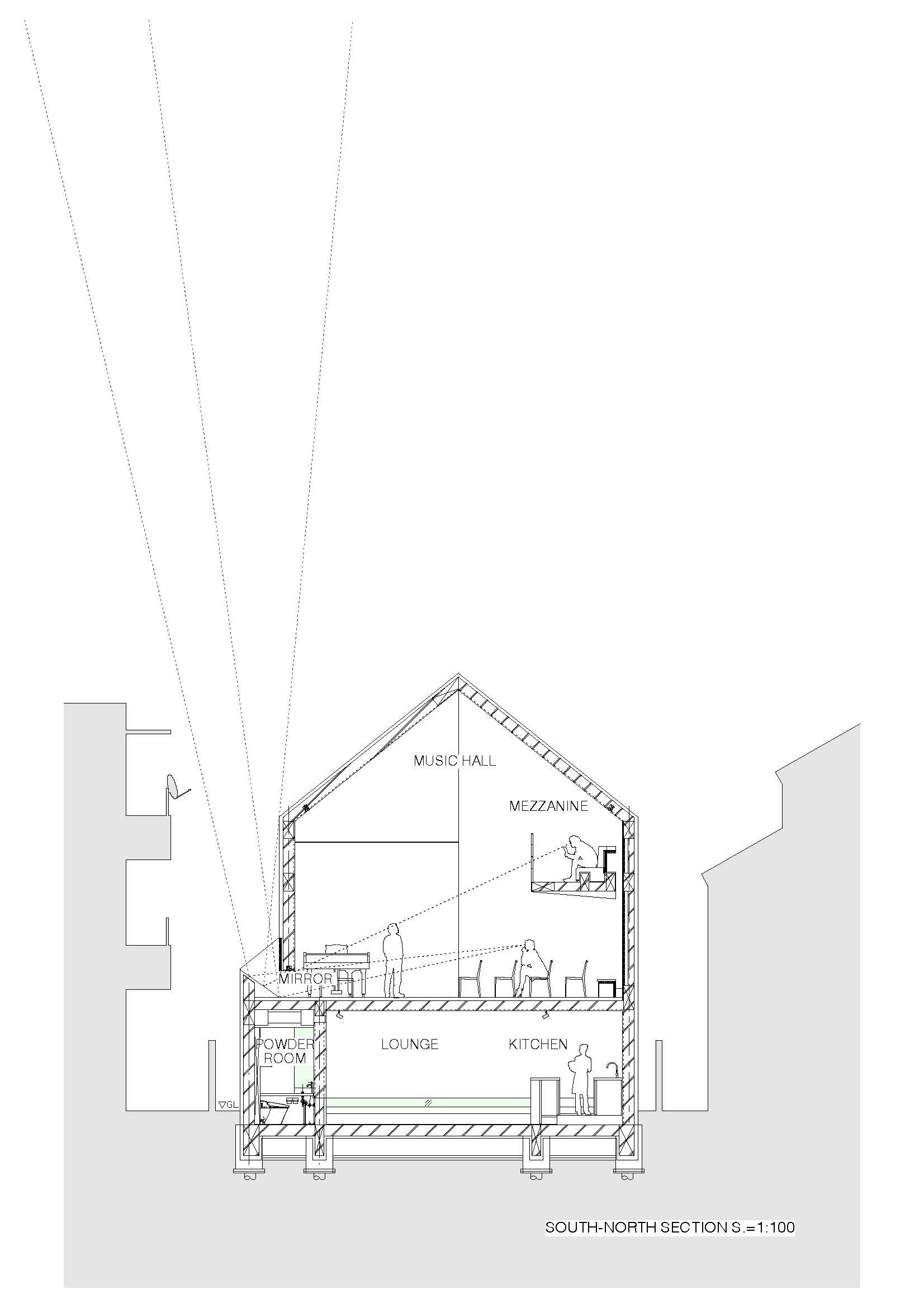
Designer Profile
Takuro Yamamoto
Takuro Yamamoto Architects
Born in Shiga Prefecture in 1973. Though admitted to the Department of Mechanical Engineering, Faculty of Engineering, Kyoto University, intending to design aircraft, he changed his track when he encountered architecture. After working with Nippon Electric Co., Ltd., he enrolled in the Department of Architecture, Faculty of Science and Engineering, Waseda University. Completing the master’s course in 2003, he joined Atelier Bow-Wow. Then, he established Takuro Yamamoto Architects in 2005. Worked as a part-time lecturer at Shibaura Institute of Technology from 2010 to 2014 and at Waseda University from 2013 to 2016.
ARCHITECTURAL SYNOPSIS:
Credits : Takuro Yamamoto Architects
Location :Tokyo
Use : Music Hall
Site Area : 140.57m2
Building Area : 84.16m2
Total Floor Area :188.91m2
Completion : November 2019
Structure : Reinforced Concrete + Steel
Client : a married couple
Architect : Takuro Yamamoto
Structure Design : Takashi Baba Structure Design Office
Acoustic Design : Nagata Acoustics
Construction : Shin Co., Ltd.
For more information: https://takuroyama.jp
Neri&Hu Exhibition - The Structural Field
Neri&Hu responds to the brand's invitation to rethink exhibition design within the context of international furniture fairs by exploring the possibilities of creating a Structural Field, as a way not necessarily to arrive at a harmonious synthesis, but perhaps to suspend these apparent contradictions during this temporary installation.
Neri&Hu responds to the brand's invitation to rethink exhibition design within the context of international furniture fairs by exploring the possibilities of creating a Structural Field, as a way not necessarily to arrive at a harmonious synthesis, but perhaps to suspend these apparent contradictions during this temporary installation.
There are two sets of dualities that are intersected by the choice of bamboo. Bamboo in Asia and other parts of the world is an abundant, fast-growing, renewable natural material. Despite the versatility of bamboo as a construction material, its lignified fibrous stalks, with their joints and organic profile, often retain signs of natural growth.
In the pavilion design, Neri&Hu sets over 1,000 vertical bamboo members on a regular grid to allude to a sense of the exterior. Through a small entry, visitors are invited to begin a journey through a series of framed views, and intermittent layering of bamboo and spaces beyond.
The relationship between objects and spectators is constantly shifting due to the varying density in the field. The exhibit does not use pedestals or special display mechanisms for the furniture pieces, so everyday scenes from everyday life are displayed - small sitting areas, living rooms, bedrooms, contemplation niches, etc. - are seamlessly integrated into the viewer's path.




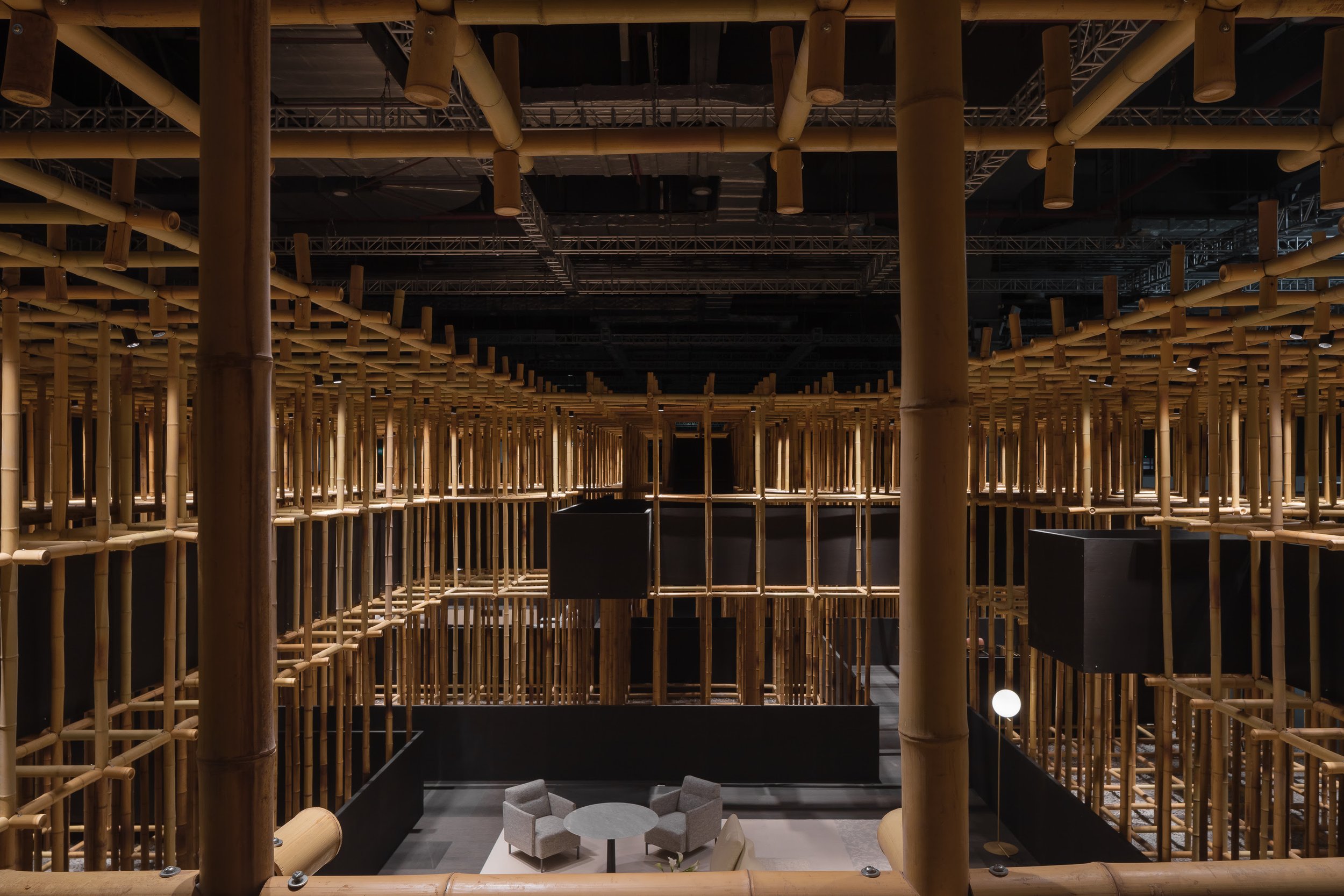

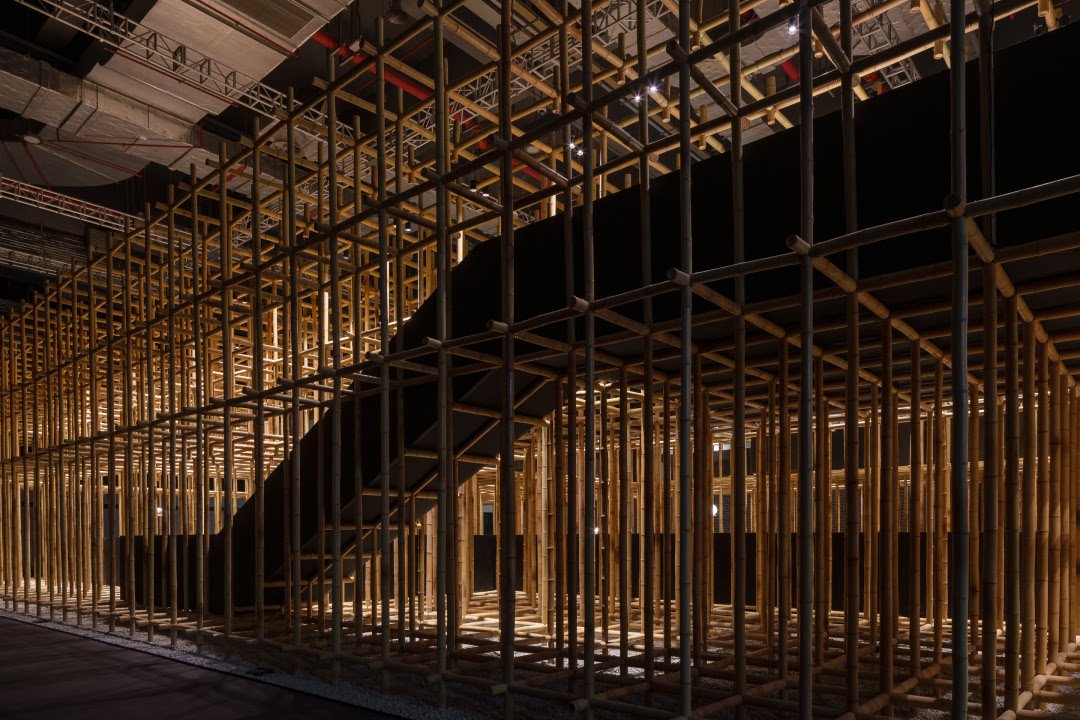
There are times when the narrow walkway gives the viewer a glimpse of the vignettes ahead, maintaining a distance between the spectator and the objects. As the field opens up in public areas, the spectator is fully immersed in the domestic setting, interacting with furniture in the presence of the field. By becoming "at home" with the objects, the spectator becomes a participant in the exhibition. By becoming both a spectator and a character on view, the visitor is immersed not only in the phenomenon of the field, but also in one's own projected spaces, a life stage.
The Structural Field | Camerich Exhibition Shanghai CIFF
Location: Shanghai
Year: 2022
Project Type: Installation & Exhibition Design
Gross area: 907.5m²
Partners-in-charge: Lyndon Neri, Rossana Hu
Senior Associate-in-charge: Chris Chen
Design team: Xiaotang Tang, Bingxin Yang, Peter Ye, Carol Zhu, July Huang, Luna Hong
Photo: Runzi Zhu (if not specifically stated)
Video: CAMERICH
Consultant:
Structure: Architectural Design and Research Institute of Tsinghua University Co., Ltd.
Lighting: Atelier Zhang Xin
Special Thanks:
Seamboo
www.neriandhu.com
The Hotel Seiryu Kyoto Kiyomizu has conserved and re-concerned the aesthetics of Japan and design by Nomura Co., Ltd A.N.D
Hotel Seiryu Kyoto Kiyomizu is a renovation initiative that aimed to preserve and re-recognize the Japanese beauty of the former Kiyomizu Elementary School with a 90-year history in Kyoto. It will have 4 floors and 6,800 square meters in total floor area.
The Hotel is located on the mountain slope with picturesque views in a district with many historical sites including significant Kyoto cultural assets, which have been nurtured by eons of history.
Hotel Seiryu Kyoto Kiyomizu is a renovation initiative that aimed to preserve and re-recognize the Japanese beauty of the former Kiyomizu Elementary School with a 90-year history in Kyoto. It will have 4 floors and 6,800 square meters in total floor area.
The Hotel is located on the mountain slope with picturesque views in a district with many historical sites including significant Kyoto cultural assets, which have been nurtured by eons of history.




The hotel's name combines two elements: Tokyo Kiyomizu, one of the world's most popular tourist destinations, and Seiryu, a legendary guardian god of Higashiyama that embodies the spirit of this one-and-only hotel built from the remnants of an historic elementary school.
There are many delicate details in the school building. The interior of the building features not only Spanish tiles, arched windows, and double-width tiles, but also decorative haunch beams, wood spandrel walls, and mosaic tile finishing.
Design by Nomura Co., Ltd A.N.D from Japan. By combining nostalgia with newness, our team made sure to pay utmost homage to western architecture. To enhance the historic details of stairs, beams, and corridors, an inorganic, black-and-white, and semi-glossy material was selected.



The Design Team converted gymnasiums and auditoriums formerly used by schoolchildren into restaurants and spas. A significant rooftop bar has been reborn on the former roof of the school building which overlooks Kyoto city. Guests can experience the old times by viewing the same Yasaka Pagoda, scenic mountains and city of Kyoto that former school children looked at.
The A.N.D team designed a space where guests can view photographs, documents, and records from the elementary school's history in order to realize the concept of "Imprint memories and connect to the future." The assemblance of spaces re-assigned with different stories creates a resounding "heritage hotel" where history, culture, and architecture come together.
This project plays an instrumental role in how we view the future for future generations, both according to the design team and the hotel. In this way, Japanese culture is passed on to them as well as their sense of regionality and sociality from their parents.
Designer Profiles
Left: 株式会社乃村工藝社 A.N.D. 小坂竜 A.N.D., Nomura Co., Ltd. Ryu Kosaka
Top Left: 株式会社乃村工藝社 A.N.D. 浦田 晶平 A.N.D., Nomura Co., Ltd. Shohei Urata
Top Right: 株式会社乃村工藝社 A.N.D. 安田 紘基 A.N.D., Nomura Co., Ltd. Hiroki Yasuda
Lower Left: 株式会社乃村工藝社 萠抜 徹 Nomura Co., Ltd. Toru Haenuki
Lower right: 株式会社乃村工藝社 西川 裕之 Nomura Co., Ltd. Hiroyuki Nishikawa
This project won the Bronze award in the interior design division of Sky Design Awards www.skydesignawards.com in 2021.
For more information about 株式会社乃村工藝社 A.N.D, please visit:
Kamitopen Co. Ltd. has designed the finest architecture skills throughout history - the KAMA-ASA Shop
What should the shop do to stand out from its competitors and showcase its unique craftsmanship in Tokyo Japan? Kamitopen Co., Ltd Japan's head designer and architect, Mr. Masahiro Yoshida, has re-designed the shop and using a simple shape and the delicate touches of the craftsman.
The Kappabashi area of Tokyo, Japan is a well known area for chefs and for those who love to cook, it is often referred to as "Tokyo's Kitchen Town.". A day spent walking through Kappabashi, Tokyo's "kitchen town," could easily be spent. Kappabashi is about 800 meters long, with about 170 specialty stores lining an 800 meter stretch of a street called Kappabashi Dougu Street, between Asakusa and Ueno area.
"KAMA-ASA" in Asakusa Kappabashi was established in 1908 by Minosuke Kumazawa. It was initially known as Kumazawa Imono Ten, but was changed to its current name, Kama-ASA. Over a century ago, Kama-Asa began to cater to the needs of chefs. Daisuke Kumazawa, who is the fourth generation owner of the company, has inherited the business and its vision. He aims to provide customers with quality tools that are well-designed. What should the shop do to stand out from its competitors and showcase its unique craftsmanship? Using a simple shape and the delicate touches of the craftsman, Kamitopen Co., Ltd Japan's head designer and architect, Mr. Masahiro Yoshida, has re-designed the shop.




A steel rebar, which is also called ribs and joints, is a roll of steel in the form of a stick used to build homes, buildings, and other structures.
Mashairo Yoshida of the KAMA-ASA Shop understands that the philosophy of the company is based on the belief that the finest tools are made with the right intentions, thus offering the finest skills of craftsmen who make kitchen utensils to their customers.




This is why in this store's space we felt it was appropriate to display an exhibition of the architecture skills that have been displayed by craftsmen throughout history. A particular design used rebar as the main design element, despite the fact that it is usually hidden in the walls since it is usually hidden in the ceiling. The use of rebar raised the level of sophistication in the shop dramatically.
The project won the silver award in the interior design division of Sky Design Awards www.skydesignawards.com in 2021.
Drawing/ Planning
Designer Profiles
Representative director / First Class Architect
1977 : Born in Osaka, Japan
2001 : Graduated from department of architecture,Kyoto Institute of Technology “Waro Kishi laboratory”
2001 : TAKARA SPACE DESIGN
2008 : Established KAMITOPEN architects
S&N Resort, dreamlike land of peace and offering a hint of Zen.
Amidst mountains and trees, In S&N Resort is situated in West Dharma Village, Fangshan District, Beijing. Bodhidharma disciples of Shaolin Temple in Songshan of the twenty-eighth generation traveled all over the world, according to legend. Under the protection of Bodhidharma, they built temples, spread Buddhism, performed good deeds, and cured illness of local people in Baihuashan.
Amidst mountains and trees, In S&N Resort is situated in West Dharma Village, Fangshan District, Beijing. Bodhidharma disciples of Shaolin Temple in Songshan of the twenty-eighth generation traveled all over the world, according to legend. Under the protection of Bodhidharma, they built temples, spread Buddhism, performed good deeds, and cured illness of local people in Baihuashan. A mountain peak nearby is named Dharma Mountain, and the village is referred to as West Dharma Village in honor of the virtues of Dharma. A 1700 square-meter construction, originally built as a residential cluster, was replanned and redesigned. Through the center of the site, a stream flows gently down the mountain. Many trees grow in the water, surrounded by giant stones that have been eroded over time. The surrounding environment is natural and peaceful, depicting a dreamlike land of peace and offering a hint of Zen.
The design's emphasis on "wildness" and "luxury" offers people a place to escape urban routines and relax during holidays, returning their body and mind to nature. Designed in harmony with water, the new building has two stories. A natural landscape can be enjoyed from each room, creating a dialogue between man and nature. Planning and design echo the surrounding village form and relate closely to the context of the site. Design, villages, and the surrounding natural environment are all organic.
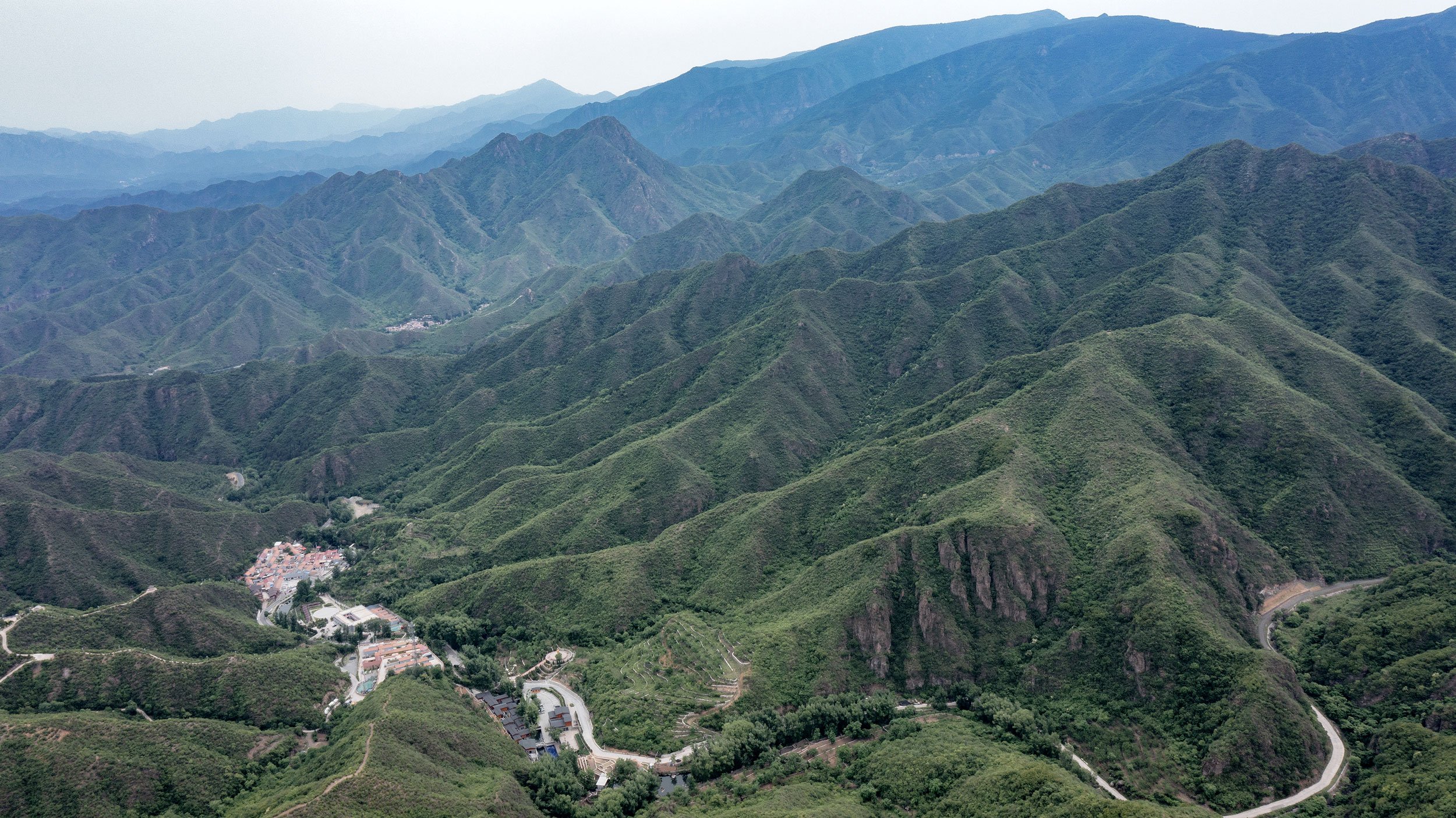
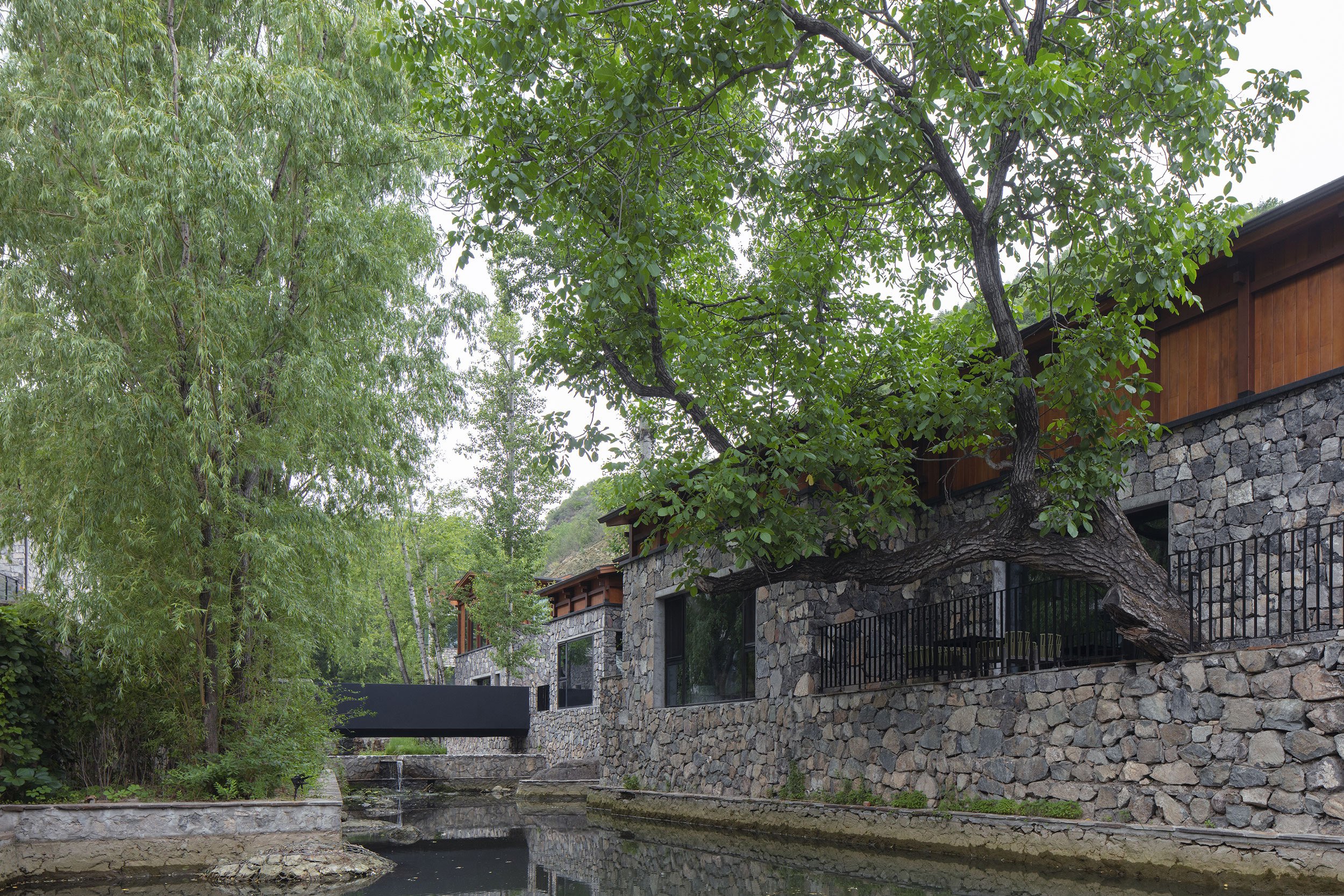
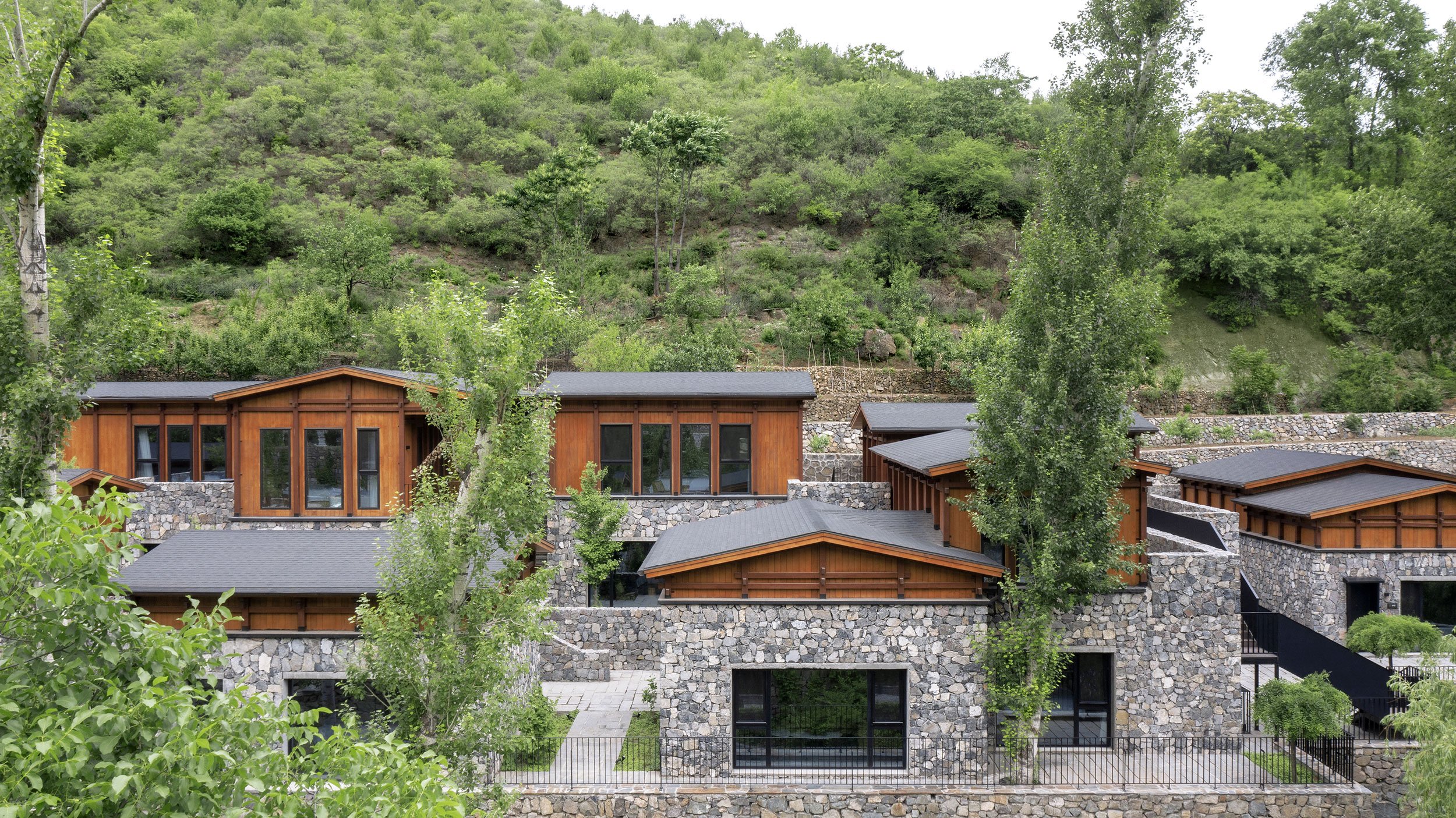
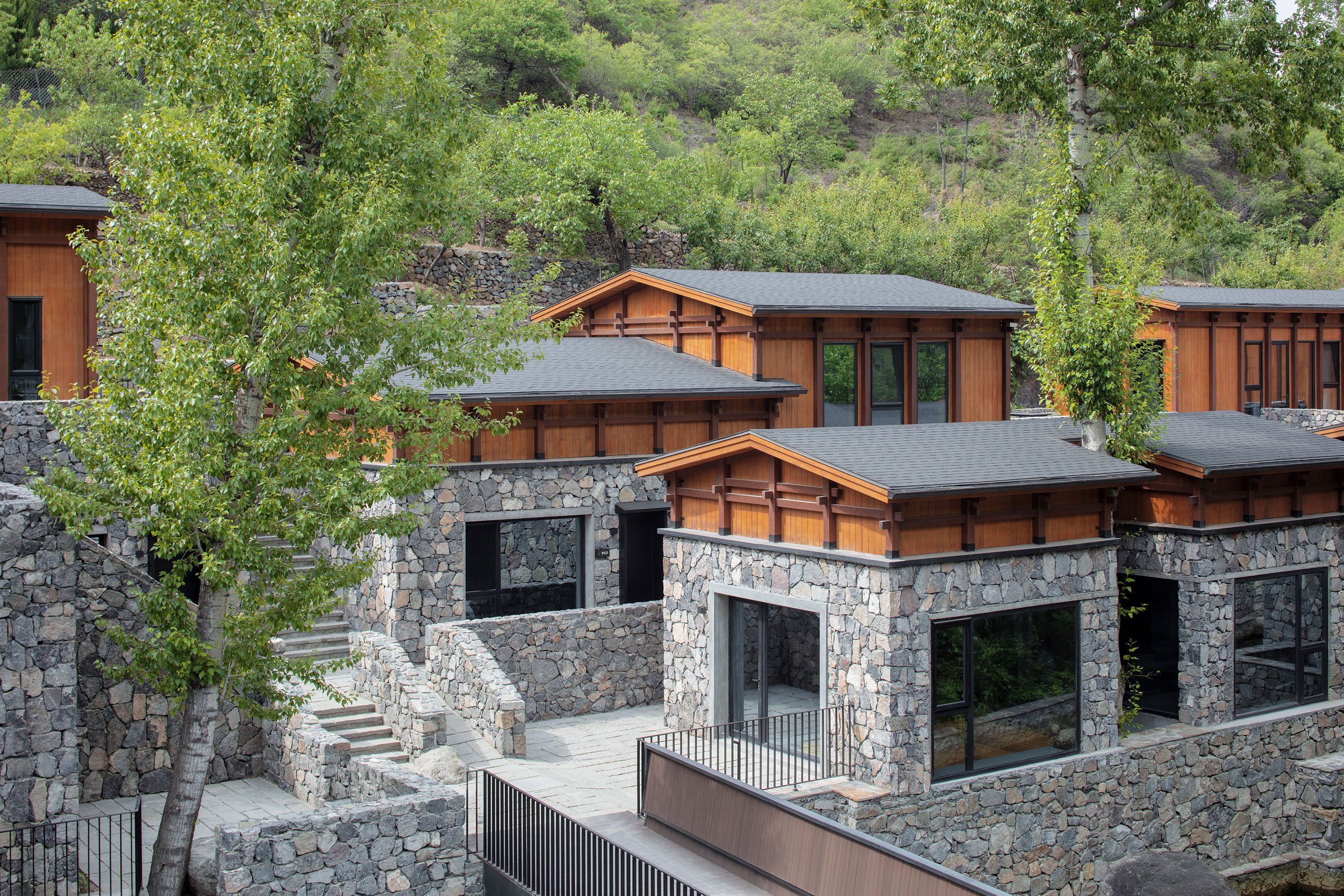
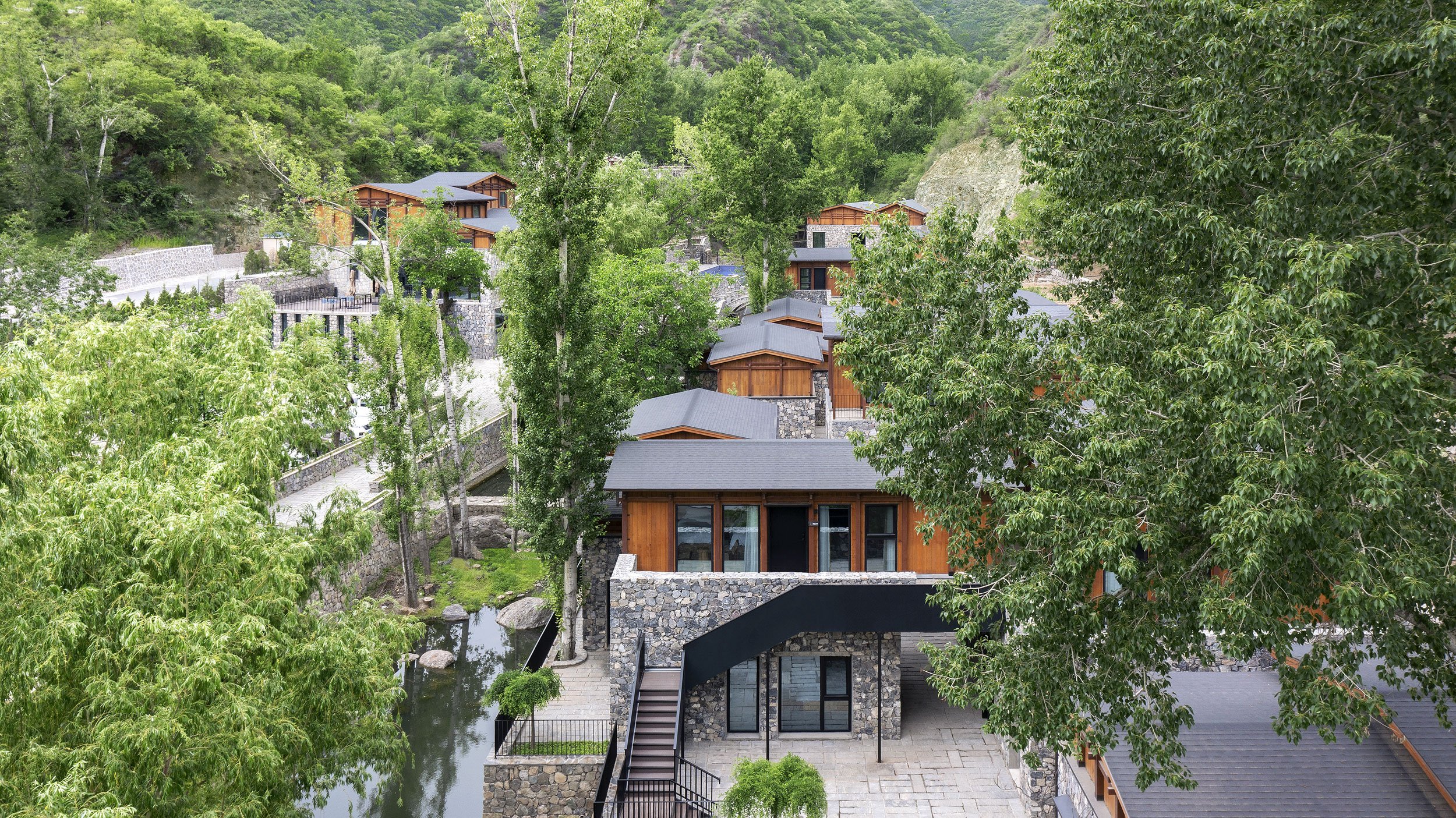

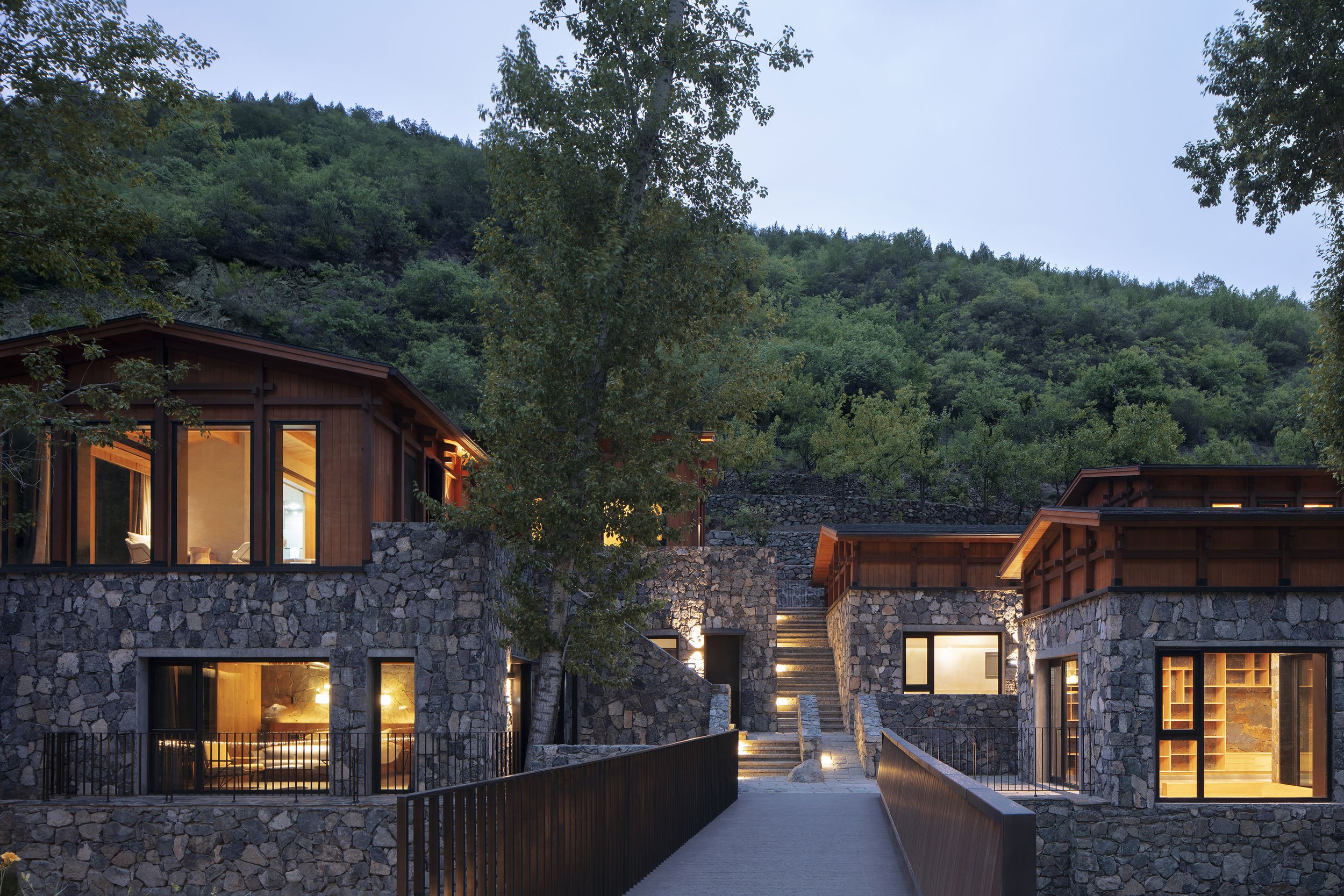
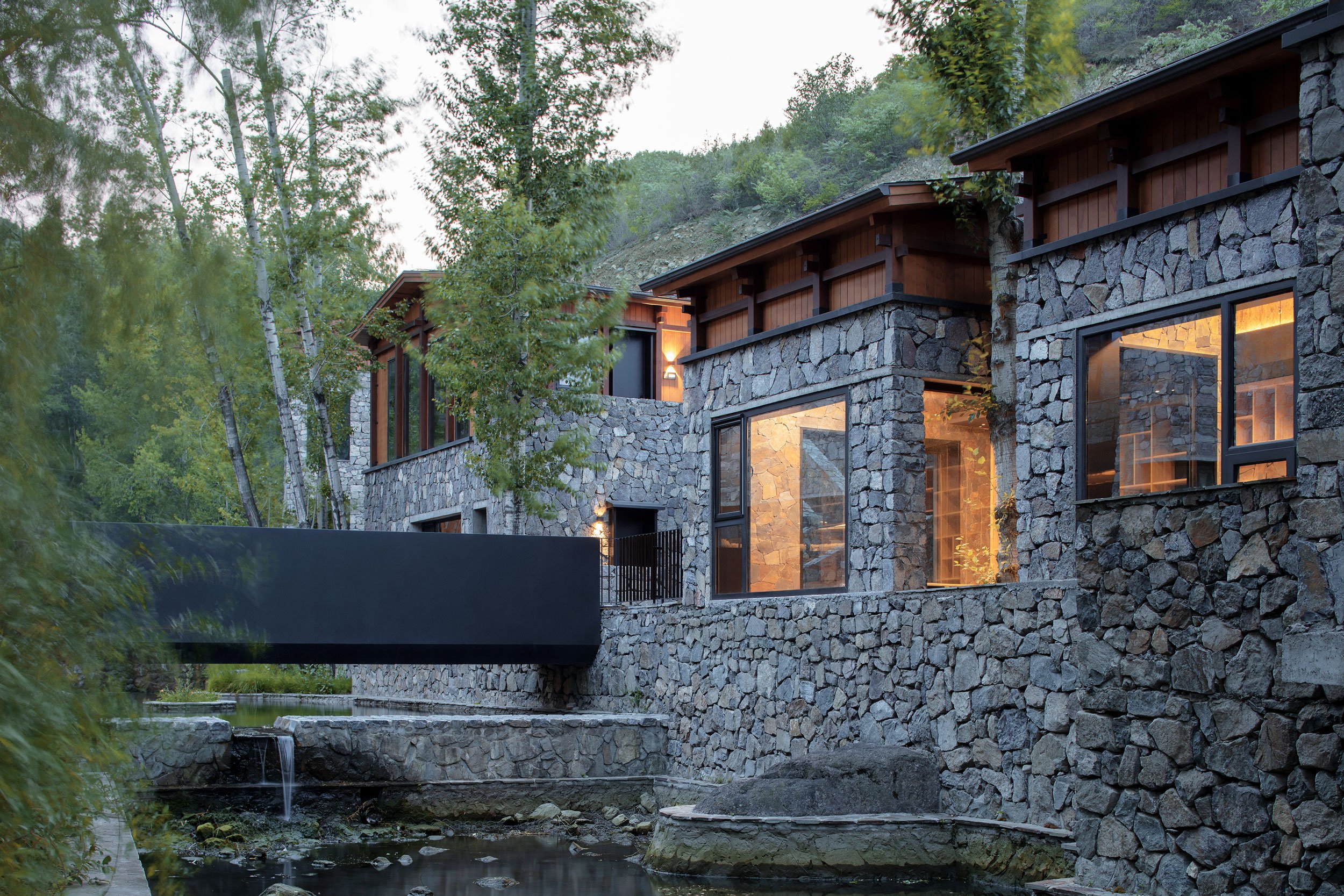
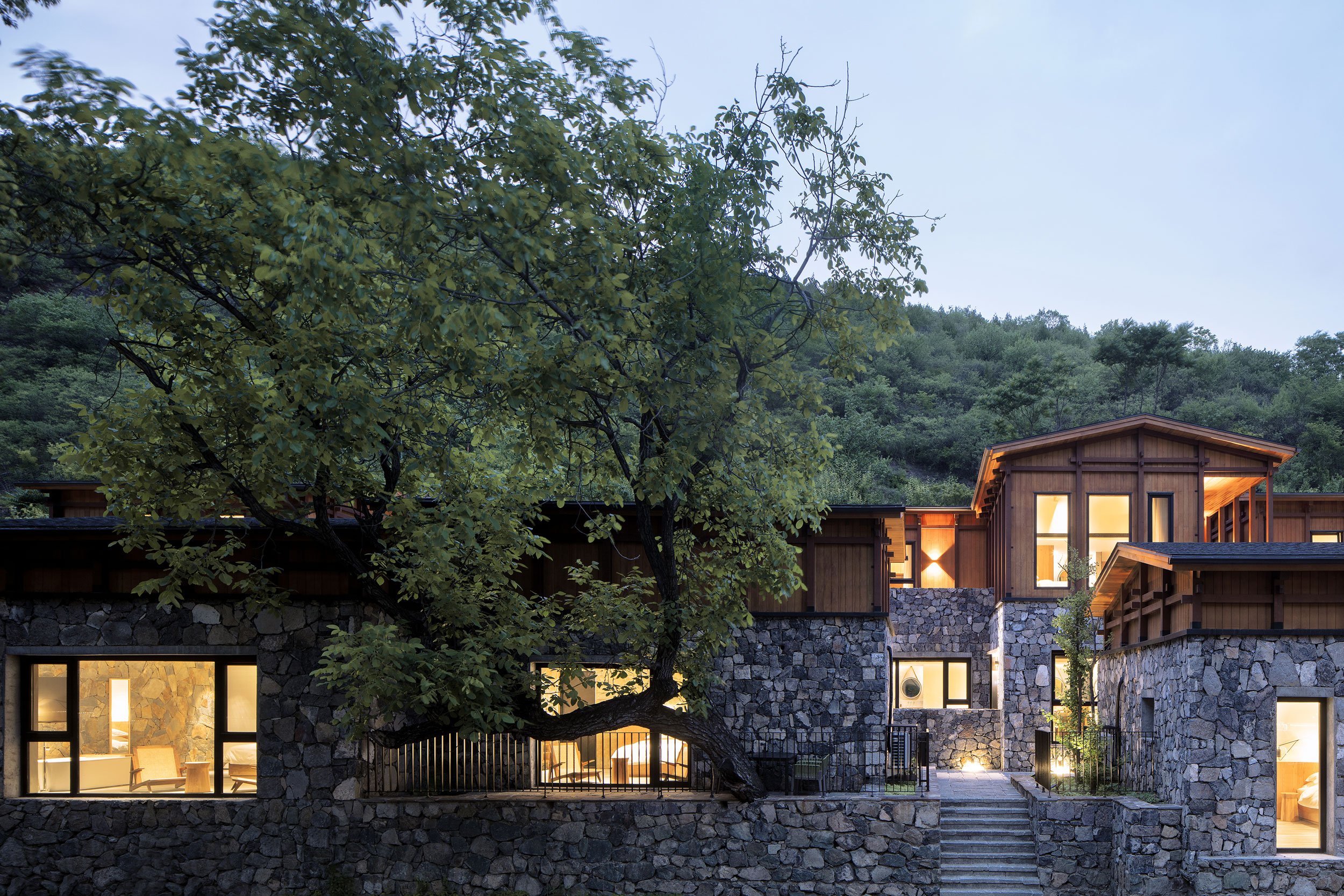
Architectural forms fluctuate according to the mountain's rises and falls. It combines the characteristics of southern and northern Chinese folk houses. A short distance from the site is the famous residential settlement known as Cuan, one of the most iconic stone typologies in north China. As a result, brick and stone provide a solid foundation for the building. A wooden structure on the second floor is based on the designs of Naxi folk houses in Yunnan, a southern province of China. As a result, the forms of folk house can be combined flexibly and grafted together in a modern context, breaking the boundaries of time and space.
Multiple aspects of the design are improved by the redesigned composition. Besides blocking moisture and stabilizing the foundation, the stone structure on the bottom helps give the building a sense of growth by organically integrating it with its surroundings. It is a perfect example of organic architecture. In addition to using stone building materials around the site, the construction is also carried out by local craftsmen. InsThis building embodies the spirit and character of the region by maintaining continuity and unity with its surroundings.bracing traditional residential forms, the sloping roof creates a subtle and relaxing atmosphere within the hotel. The two-story building is constructed of light and flexible wood, creating a natural and livable indoor environment. With the application of wood and stone, the space is filled with layers of pleasant qualities.
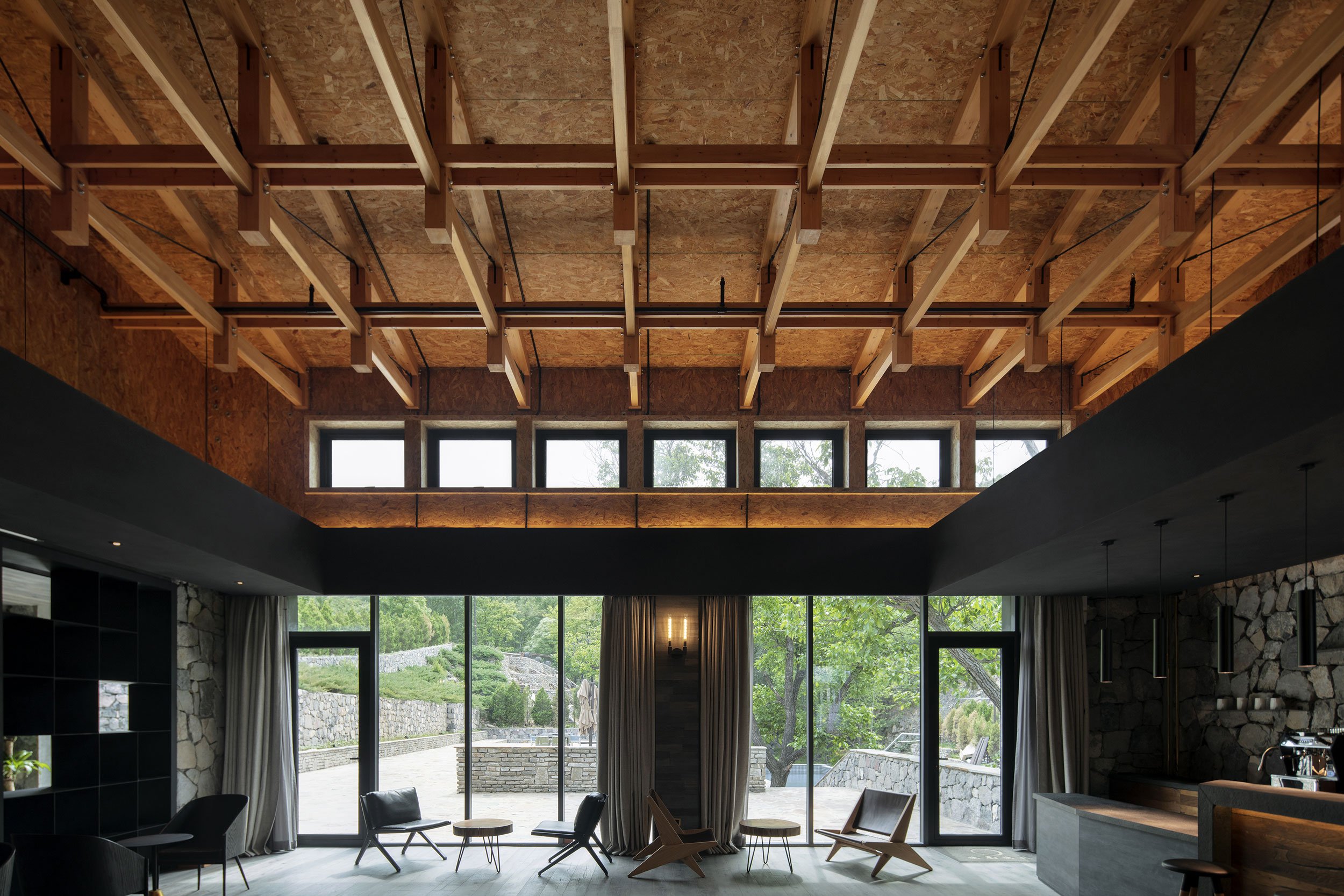
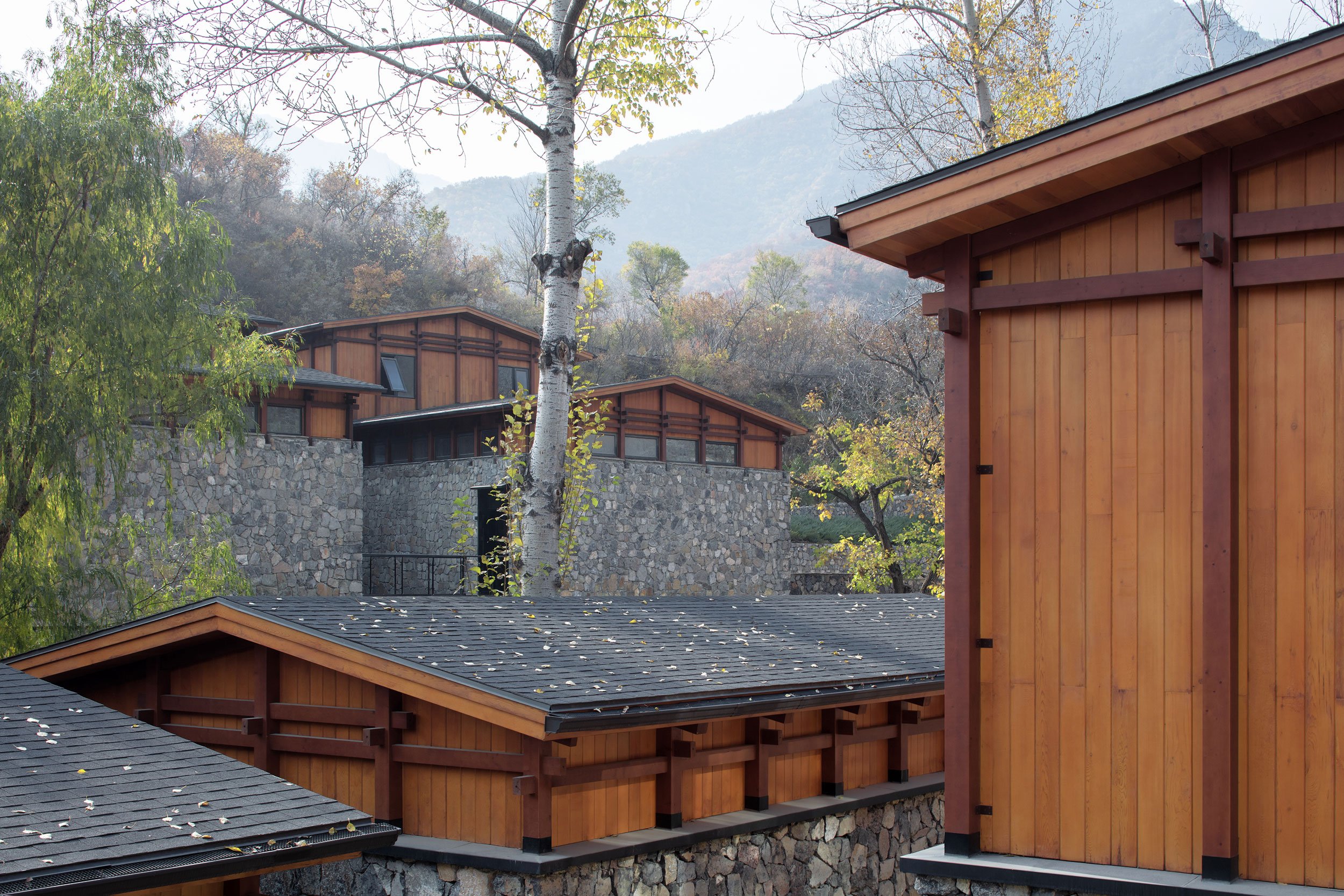
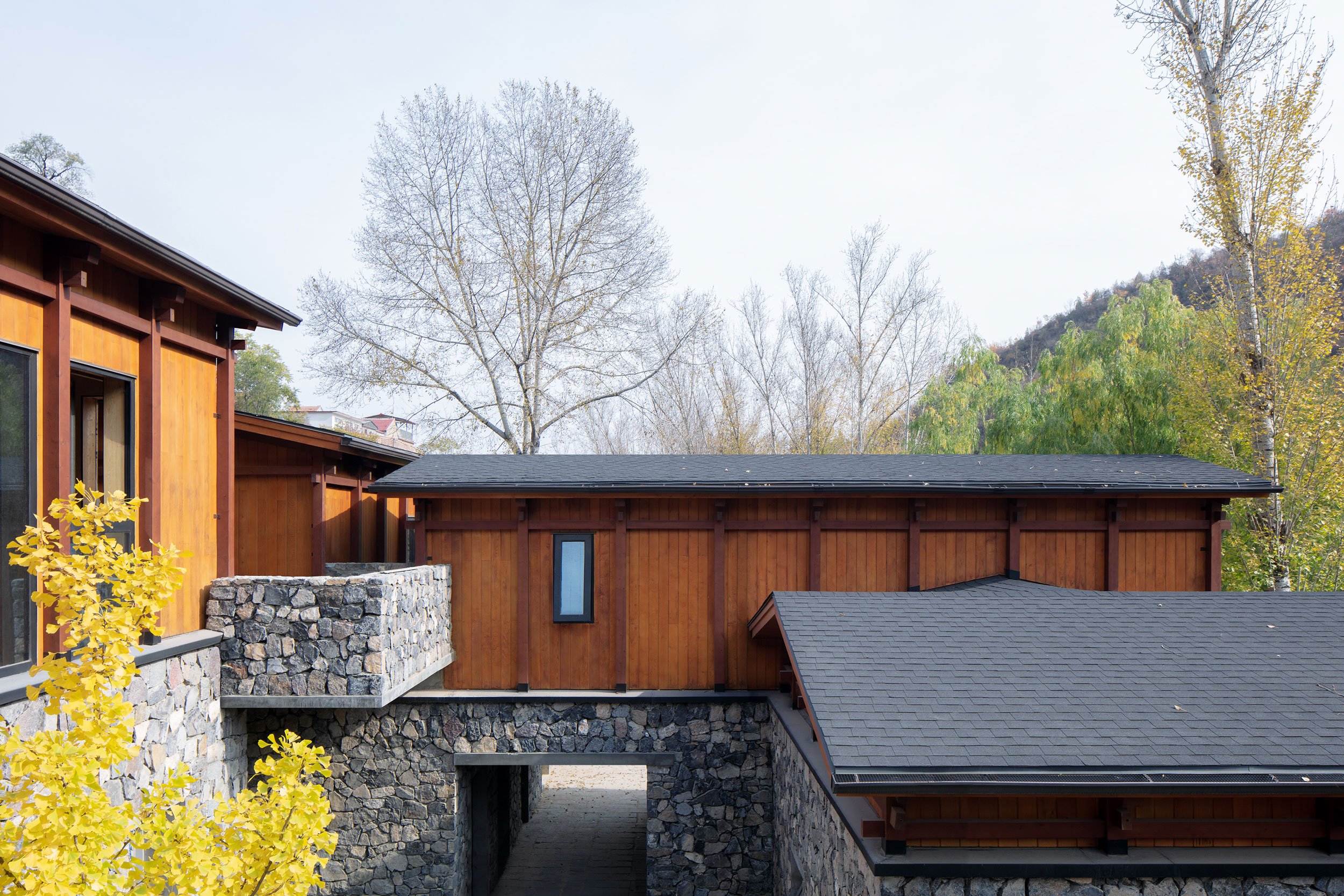
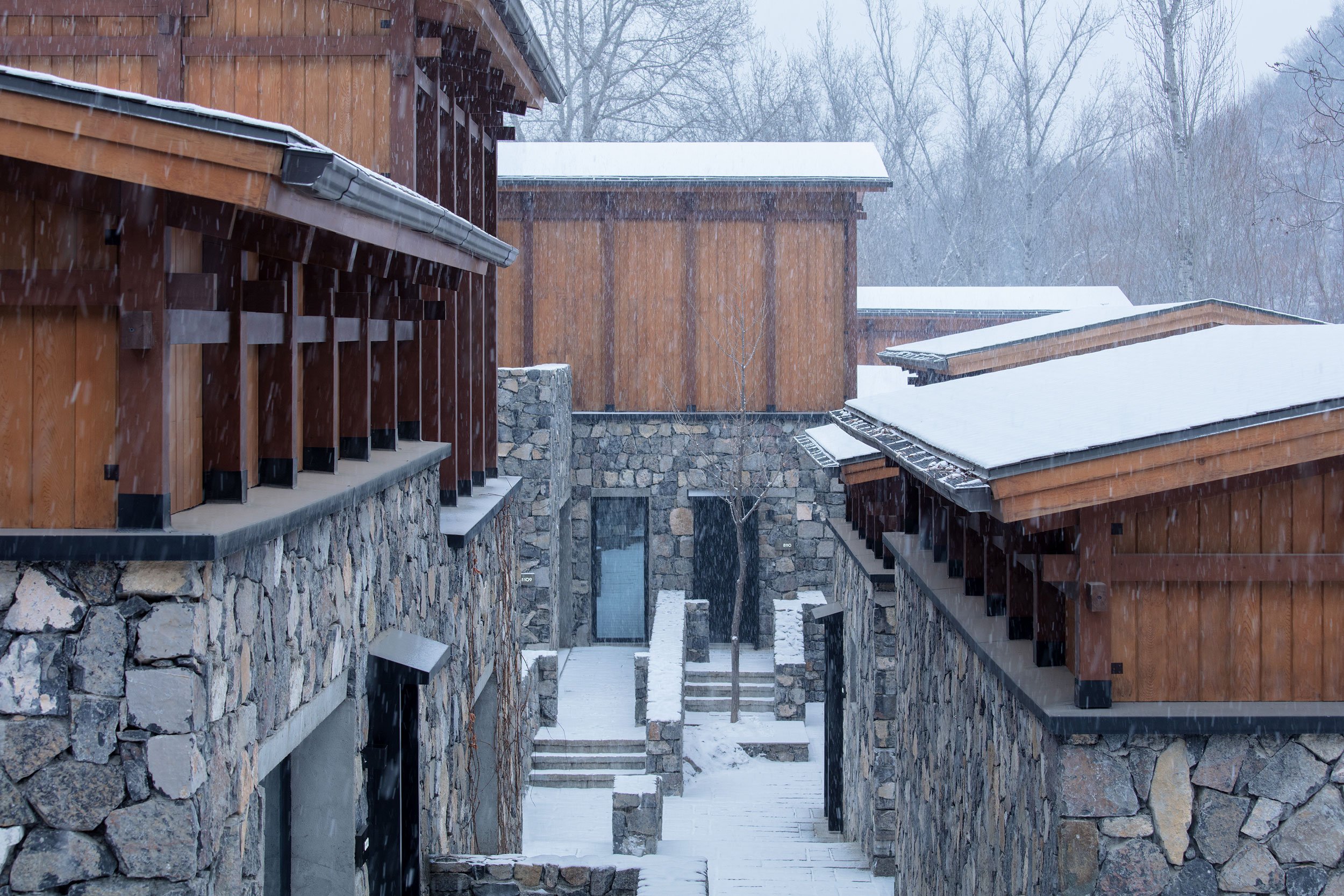

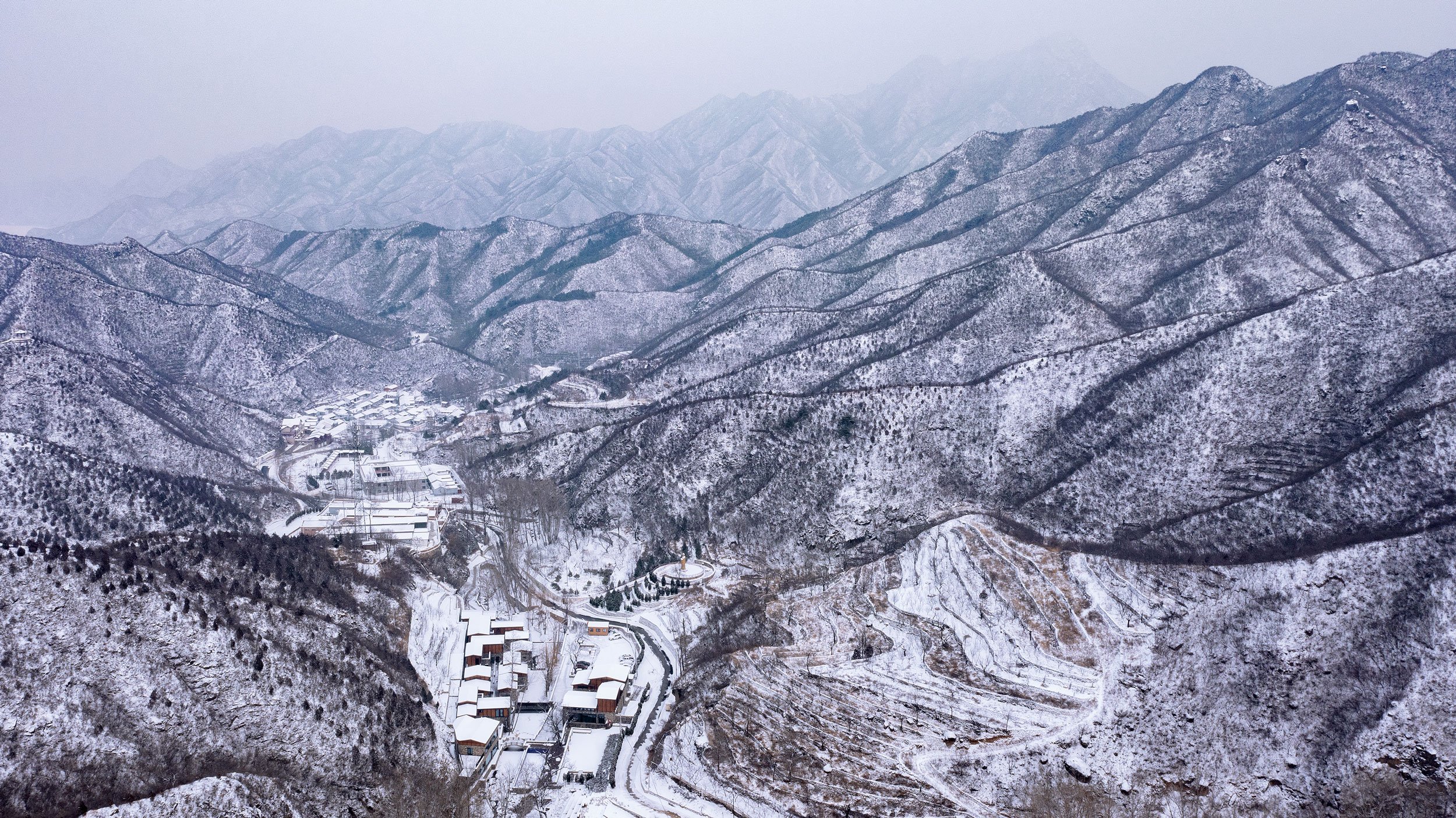
By connecting the hotel lobby and guest rooms across the water, guests are able to enjoy the attractive natural environment while stepping into the site. Hotel guests can choose from a total of 24 rooms, including rooms with views of the water or terraces. By making the building an integral part of the environment, the design maximizes the views around the site. The terraces are designed to allow guests to chat, drink tea, and enjoy the view during their stay in the outdoors. It is the perfect place to cool off in the hot summer months when the infinity pool is in the courtyard. Throughout the hotel, large French windows frame a variety of outdoor landscapes including red bricks, blue water, and green mountains, creating the impression of a live painting. In the hotel's interior, exposed stones only enhance the uniqueness of the generous space and create a low-profile, yet vibrant atmosphere. Inside the building, the elaborate design and art placement reflect the tastes and aesthetics of the Orient. Quietness and openness come easily in such an environment. It creates a pleasant holiday environment that encourages people to linger at night when the hotels' lighting and the landscape corridor complement each other. As the hotel is surrounded by beautiful mountain views and babbling streams, it projects a peaceful, calming, comfortable and relaxing atmosphere, interpreting what is known as extreme romance of wild luxury.
Diagram & Plans


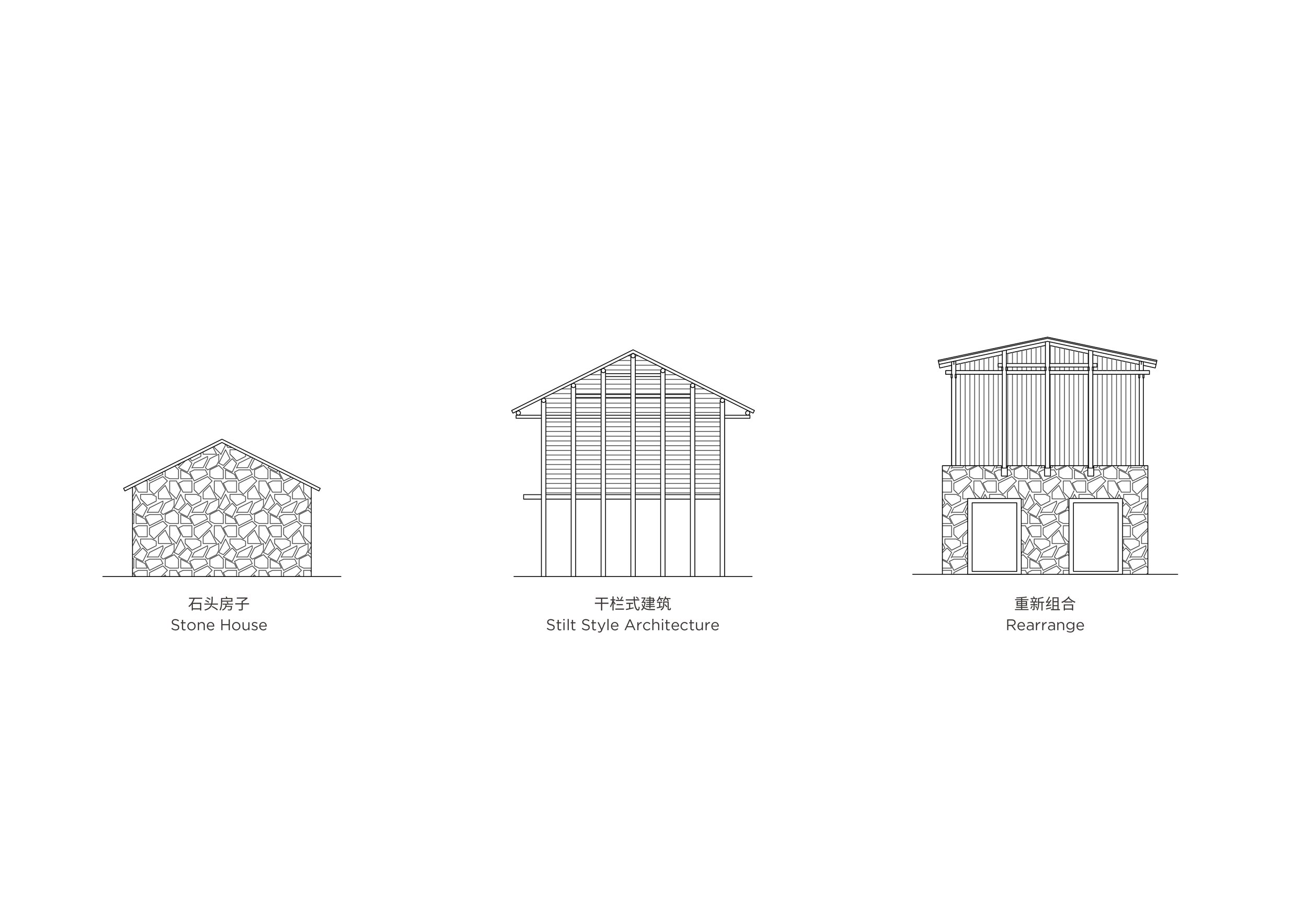
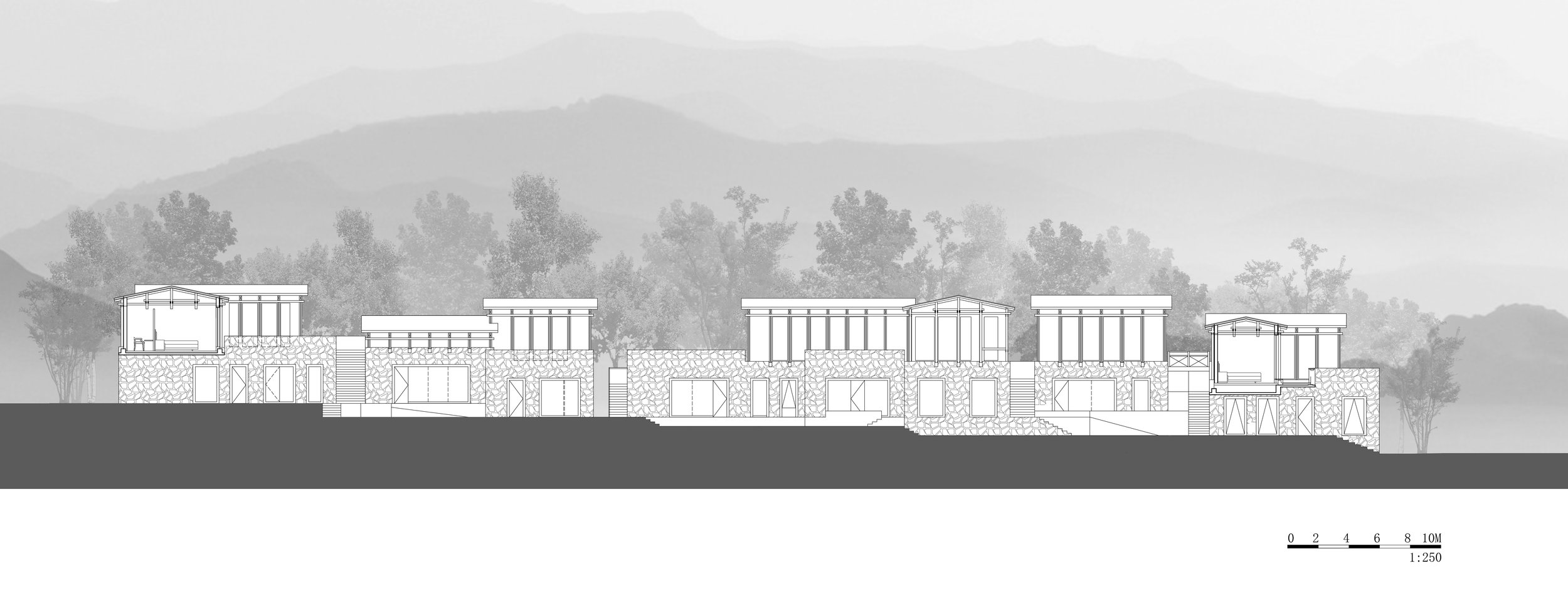


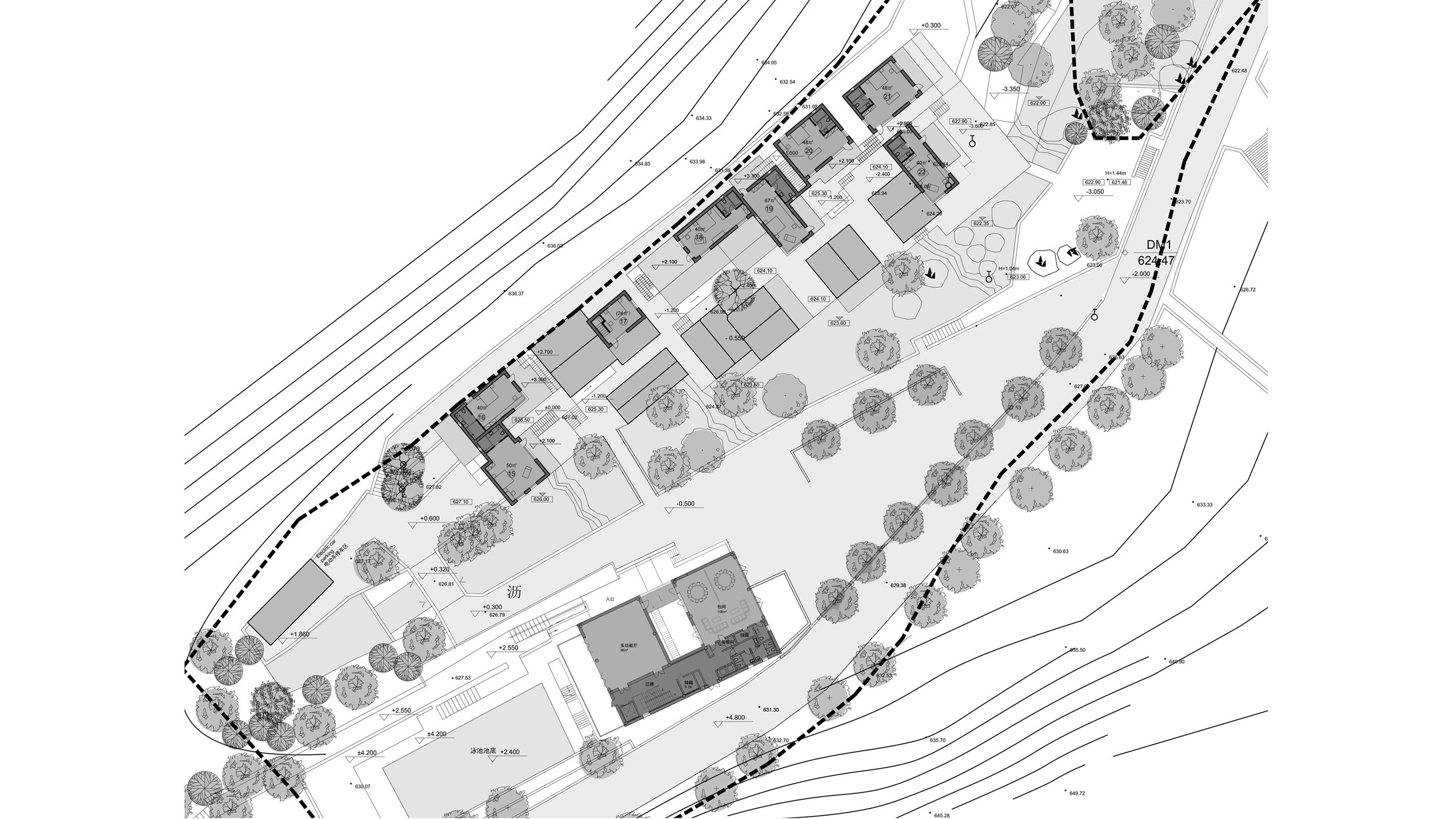
Project profile:
Project Name: In S&N Resort
Location: Xidamo Village, Qingshui Town, Mentougou District, Beijing
Size: 1,700 m2
Category: Architecture, Landscape
Function: Hospitality
Duration: 2016 to 2021
Principal designers: Sun Dayong, Wan Shuyan
Design team: Penda China
Photographer: Xia Zhi
REVZO Toranomon was designed to minimize waste generation in the architecture
Sustainable architecture is often referred to as green architecture or environmental architecture. To achieve minimal negative impacts to the ecosystem and the communities, architects must produce smart designs and use available technologies. Norihisa KAWASHIMA, Principal at Nori Architects, Senior Assistant Professor at Meiji University, and his team of architects have minimized the amount of waste generated from the construction of a new mid-scale rental office series to achieve sustainability.
Sustainable architecture is often referred to as green architecture or environmental architecture. To achieve minimal negative impacts to the ecosystem and the communities, architects must produce smart designs and use available technologies. Norihisa KAWASHIMA, Principal at Nori Architects, Senior Assistant Professor at Meiji University, and his team of architects have minimized the amount of waste generated from the construction of a new mid-scale rental office series to achieve sustainability.
In June 2020, the REVZO prototype has been completed at Toranomon, Tokyo, as part of a planned series by a Japanese real estate company. Through improving the physical and mental well-being of its occupants, and fostering a creative atmosphere, this office aims to foster a delightful environment where one can connect with the ever-changing "nature" around them. The core configuration includes two wide openings, with the street-facing side allowing natural light to penetrate fully into the 17-meter deep tenant workspace. The floors have operable windows to facilitate natural ventilation. There is a balcony with a planting strip along the street-facing side of the building. The planting strips will be filled with cherry blossoms, hydrangeas, and color-changing seasonal plants, as well as edible plants such as blueberries, lemons, and herbs, creating a place where tenants can observe seasonal changes and harvest them as well. In addition to providing footholds for plants, stainless steel mesh along the side of the balcony protects residents and objects from falling. An outdoor escape staircase is located at the end of a balcony, which can serve as an extension of the balcony. On one side of the building, air conditioners are located, blowing horizontally into the room, eliminating the need for ductwork from the ceiling. This allows for a high ceiling while keeping the floor-to-ceiling height low. In addition to reducing waste generated during construction, semi-skeletonized finishes also provide for immediate occupancy and reduced environmental impact.
The entrance is covered in a variety of wild vegetation, including red pine and agave. The arrangement makes seasonal changes visible to visitors and office workers alike. Plants are arranged and displayed on earthen walls, mirrors, and displays depicting images of nature throughout the lobby area. Displays of furniture creations are also on display. Due to the natural lighting and well-ventilated stairs, and art and speakers on every floor, one would prefer to take the staircase instead of taking the elevator. A communal lounge with high ceilings, decorated with wood, earth, and vegetation, can be found on the top floor. Labels on furniture and accessories indicate where they come from, creating an environment that demonstrates the craftsmanship put into the furniture.
Designer Profile
Norihisa KAWASHIMA
Principal at Nori Architects, Senior Assistant Professor at Meiji University
Registered Architect, JAPAN, Dr. Eng.
Born in Kanagawa prefecture in 1982, Kawashima graduated from the University of Tokyo in 2005, earned his master’ s degree from the University of Tokyo Graduate School in 2007, after which he was hired by Nikken Sekkei. Kawashima became a visiting scholar at University of California, Berkeley and worked with Prof. Dana Buntrock and LOISOS + UBBELOHDE in 2012. In 2014, Kawashima became an assistant professor at the Department of Architecture of the Tokyo Institute of Technology and jointly established ARTENVARCH with Keika Sato. In 2016, Kawashima earned a doctor’s degree from the University of Tokyo Graduate School. In 2017, Kawashima established Nori Architects. In 2020, Kawashima became a senior assistant professor at Meiji University. Now Kawashima is a principal of Nori Architects and a principal of Regional Design Laboratory at Meiji University.
Representative works:Sony City Osaki [2011] , Diagonal Boxes [2016] , Yuji Yoshida Gallery / House [2017] , Saw-tooth Roofs in Ichinomiya[2017], and REVZO Toranomon[2020] .
Representative awards: The Prize of Architectural Institute of Japan [Architectural Design], 1st Prize [Prize from the Minister of Land, Infrastructure and Transport] in the 7th Sustainable Housing Award from IBEC, 1st Prize in JIA Sustainable Architecture Award 2020, and many others.
For more information, please visit: http://norihisakawashima.jp/
*The New Black is a new award from www.skydesignawards.com designed to discover and recognise young architects and designers, or small projects such as pop-up, residential, or retail shops project sizes up to 50m2 (540 ft²).
*The New Black entrants must be either under 38 years of age OR the project submitted must be less than 50m2 (with no age limitation).
Imaise House - A high earthquake resistance residential in Japan
Japan is constantly affected by seismic and volcanic activity thanks to its location in the Circum-Pacific Mobile Belt. Despite covering just 0.25 percent of the earth's land area, Japan experiences 18.5% of the world's earthquakes. Geographically and physically, how the Japanese live and how they design safe living environments. For one of his clients, Tatsuya Kawamoto + Associates designed a high earthquake resistance residential building, which won the "New Black" Award in 2021.
Japan is constantly affected by seismic and volcanic activity thanks to its location in the Circum-Pacific Mobile Belt. Despite covering just 0.25 percent of the earth's land area, Japan experiences 18.5% of the world's earthquakes. Geographically and physically, how the Japanese live and how they design safe living environments. For one of his clients, Tatsuya Kawamoto + Associates designed a high earthquake resistance residential building, which won the "New Black" Award in 2021.
Generally, the main areas of a building need to be on the second floor since the structural walls needed on the first floor are reduced. The building should have "high earthquake resistance" as well as "open space."
By taking into consideration the surrounding environment of a "private road," the front road is a private property, and planning a space in which the inside and the outside are seamless, the designer aims to achieve maximum spatial volume within the given constraints.
The building has a simple and clear configuration with only an 8.0m-wide "frame" that provides both earthquake resistance and a large opening.




There was a unique community created around this "private road", which branched off the main road.
With the incorporation of local, unique characteristics that are different from each road into the living space, the designer thought it would be possible to contribute to regional development by establishing a favorable climate as a residential area for communities that could be made as a by-product of local industries.
A gate frame, in addition to its function as an earthquake-resistant element, also acts as a ruler that gives rhythm to the space by arranging at regular intervals and measuring the distance from the city, and by inserting rails into each frame, it can be private as desired.




By extending the eaves across the front road side and creating a continuous external space, it is anticipated that the resident will gradually spread out under the roof while making the most of the small parcel.
Mr. Kawamoto said: "Due to the surrounding environment, which was moderately protected by chance, we were able to live in the nearby land and use the road as a living space."
Construction methods like this have taken root in this area. By mixing the resident's demand, the structure designed to solve the problem, and these, it is made.Imaise House
Architectural Overview
Location : Ichinomiya Aichi Japan
Completion : November 2020
Principal use : House
Structure : Timber structure
Site area : 168.38㎡
Building area : 99.12㎡

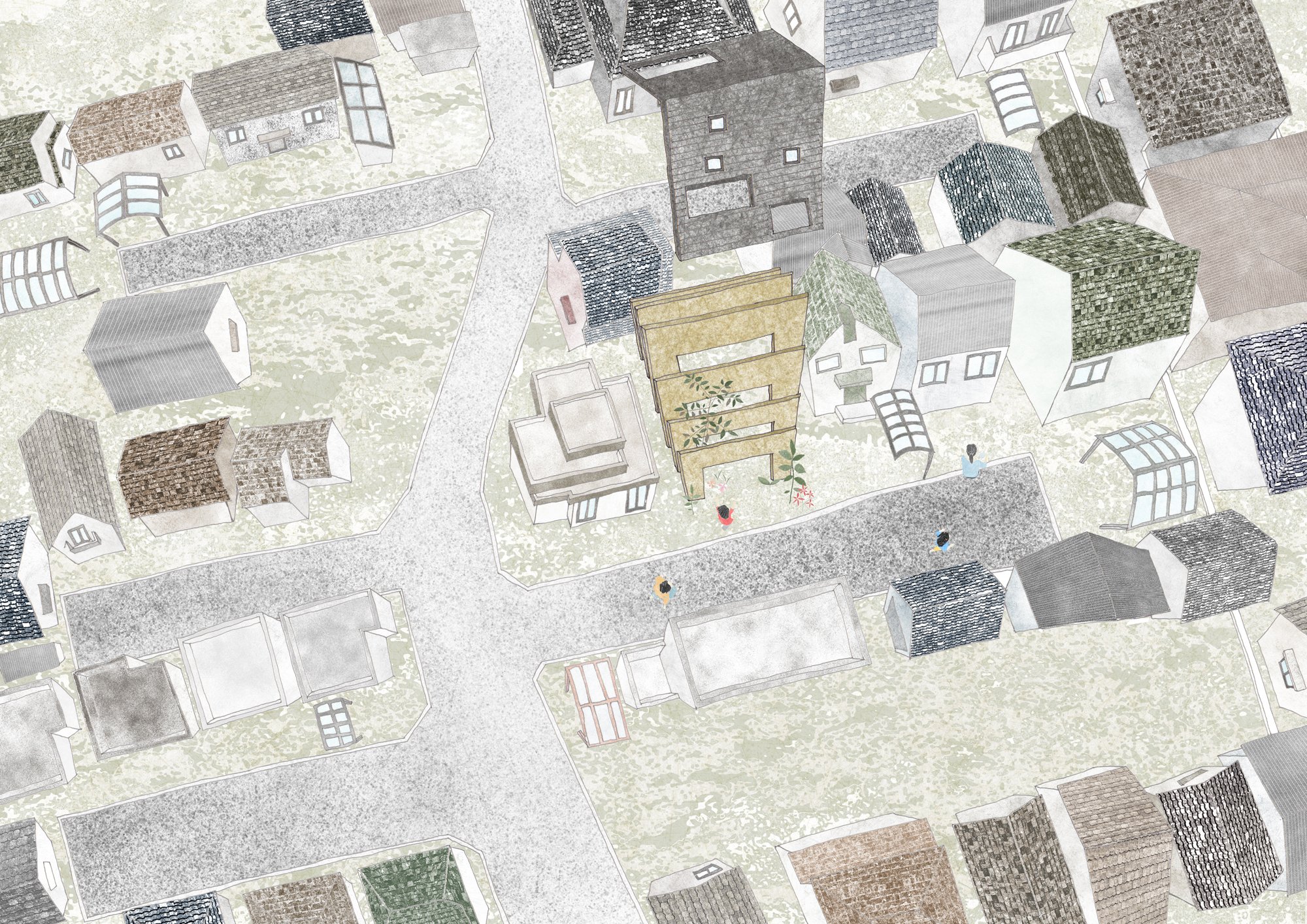
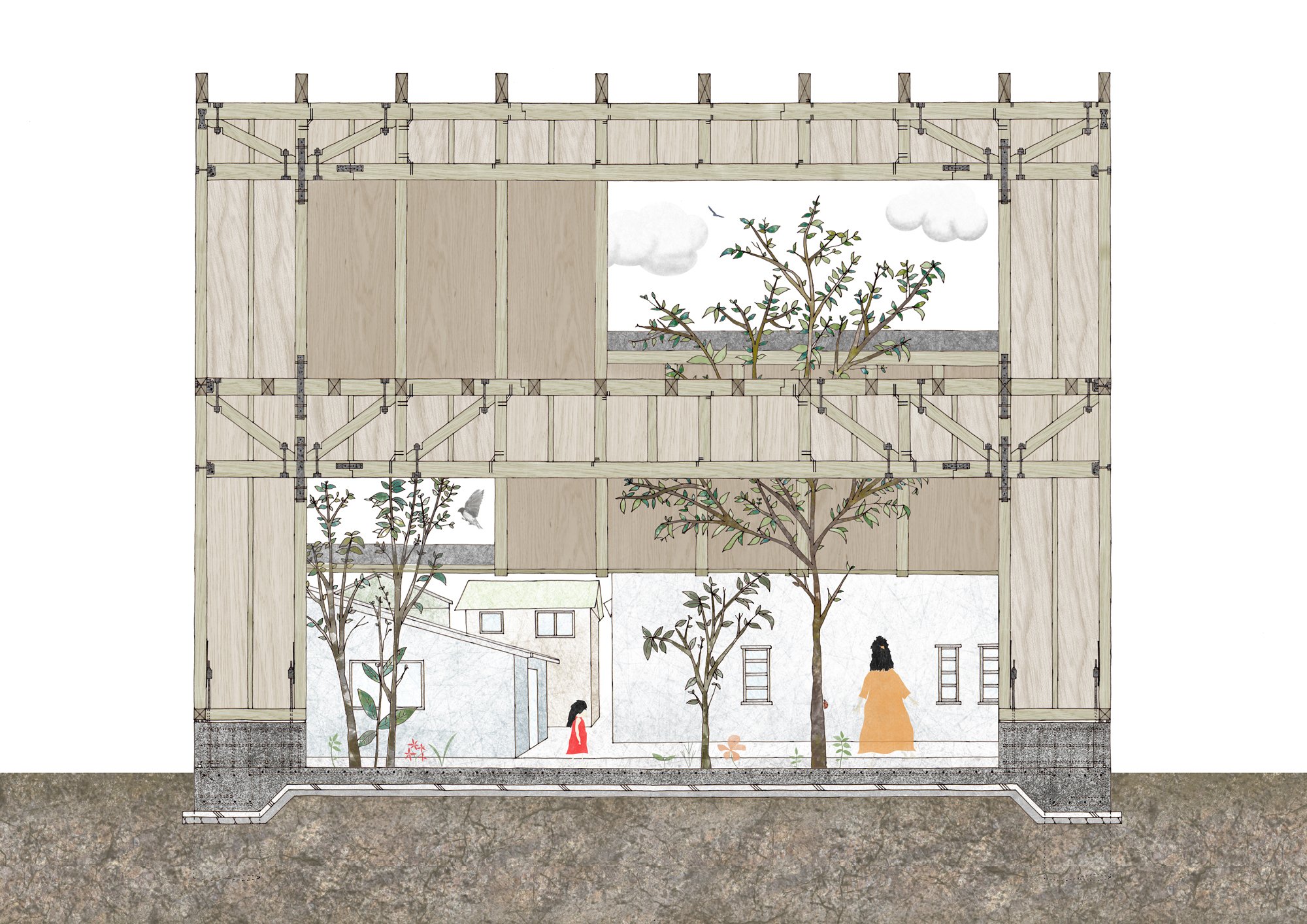


Designer Profile
Tatsuya Kawamoto
1990 Born in Aichi,Japan
2012 ~ worked at Takeshi Hosaka Architects
2013 ~ worked at Hiroyuki Shinozaki Architects
2018 ~ established Tatsuya Kawamoto + Associates
AWARDS
2011 2nd prize of Japan institute of architects tokai branch architectural design competition award 28th
2012 2nd prize of Graduation design review
2013 3rd prize of Japan institute of architects tokai branch architectural design competition award 30th
2015 Fine work of Nisshin kogyo architectural design competition 2015
2016 2nd prize of Circos international architecture competition 2016
2017 Honorable mentions of Shinkenchiku residential design 2017
2017 4th prize of CLT idea contest 2017 Awards
2011 2nd prize of Japan institute of architects tokai branch architectural design competition award 28th
2012 2nd prize of Graduation design review
2013 3rd prize of Japan institute of architects tokai branch architectural design competition award 30th
2015 Fine work of Nisshin kogyo architectural design competition 2015
2016 2nd prize of Circos international architecture competition
2017 Honorable mentions of Shinkenchiku residential design 2017
2017 4th prize of CLT idea contest 2017
For more information about Tatsuya Kawamoto + Associates, please visit:
*The New Black is a new award from www.skydesignawards.com designed to discover and recognise young architects and designers, or small projects such as pop-up, residential, or retail shops project sizes up to 50m2 (540 ft²).
*The New Black entrants must be either under 38 years of age OR the project submitted must be less than 50m2 (with no age limitation).
Kyushu Voice in Japan, Design by Jindesign Co., Ltd
In order to revitalize the economy and culture of Kyushu, Kyushu Voice aims to promote Kyushu products in Japan and around the world. As a home base for the project, this building fulfills three purposes, including serving as a new symbol of Kyushu's history and nature. It also serves as a shop selling a variety of products made in Kyushuin along with a workshop developed with local producers and citizens.
In order to revitalize the economy and culture of Kyushu, Kyushu Voice aims to promote Kyushu products in Japan and around the world. As a home base for the project, this building fulfills three purposes, including serving as a new symbol of Kyushu's history and nature. It also serves as a shop selling a variety of products made in Kyushuin along with a workshop developed with local producers and citizens.
Kyushu Voice's base is located in Dazaifu, the most suitable city for this project because of its history and popularity as a central city of Kyushu. From ancient times until the Heian period, Dazaifu was the imperial office in charge of Kyushu. There are around ten million tourists visiting this historical city every year, both from inside and outside the country.
At the core of this project, it is imperative to demonstrate modern Japanese architecture that incorporates tradition and innovation. As such, it was not necessary to construct a bespoke building, but rather to renovate an existing structure with a long history. Tokyotaka Aoki, principal architect of Jindesign Co., Ltd. from Japan, chose a wooden old folk house around 100 years old that was located on Kotoriishoji. It was 2 minutes away from Dazaifu Tenmangu shrine because of its condition and location.
Moreover, Mr. Aoki designed the building to display the latest Japanese architecture and function as a shop and a community center in the area.






In keeping with the tradition of the building, the designer decided to conserve the tile roof. Aside from this, it is located along a tasteful street, so its façade needed to match the historic Dazaifu. To design its façade, Mr. Aoki drew inspiration from a traditional Japanese warehouse, "Kura". "Kura" has the character of a massive white wall of plaster, similar to the White Cube, an architectural element associated with Modernism. In addition, its traditional elements were applied to its façade design.
The designer further emphasized the modernist theme by inserting white volumes with a columnless open space, similar to the Kura pattern. A row of wooden frames shaped like gates was arranged in order to remind us of a shrine's main entrance. As a result of the construction and reinforcement of the 5.5m span columnless space, the lighting in the frames provided opportunities for people to enter.
"Kyushu Voice" is the silver winning project of Sky Design Awards 2022 in the "The New Black" architecture division,
*The New Black is a new award designed to discover and recognise young architects and designers, or small projects such as pop-up, residential, or retail shops with project sizes up to 50m2 (540 ft²).
*The New Black entrants must be either under 38 years of age OR the project submitted must be less than 50m2 (with no age limitation).
For more information about this project, please visit: https://www.jindesign.co.jp/ or visit the www.skydesignawards.com
Apartment with Six Void in Fudomae, Japan
A city with a dense population in Japan has many small houses and apartments. Fudomaw's apartment with six voids was designed by Akira Koyama from Key Operations Inc. This project won the bronze award in the architecture category in the 2021 Sky Design Awards.
In an area near the entrance to Meguro Fudoson, a Buddhist temple, a five-storey apartment complex with 14 units was built. In order to develop a parcel relatively deep with an extremely tight frontage in central Tokyo, the main theme for the design was to provide daylight and airflow wherever possible. The design also maintained density, thereby optimizing rental rates. Additionally, voids were established to meet the local ordinance requirement of an evacuation route.
A city with a dense population in Japan has many small houses and apartments. Fudomaw's apartment with six voids was designed by Akira Koyama from Key Operations Inc. This project won the bronze award in the architecture category in the 2021 Sky Design Awards.
In an area near the entrance to Meguro Fudoson, a Buddhist temple, a five-storey apartment complex with 14 units was built. In order to develop a parcel relatively deep with an extremely tight frontage in central Tokyo, the main theme for the design was to provide daylight and airflow wherever possible. The design also maintained density, thereby optimizing rental rates. Additionally, voids were established to meet the local ordinance requirement of an evacuation route.
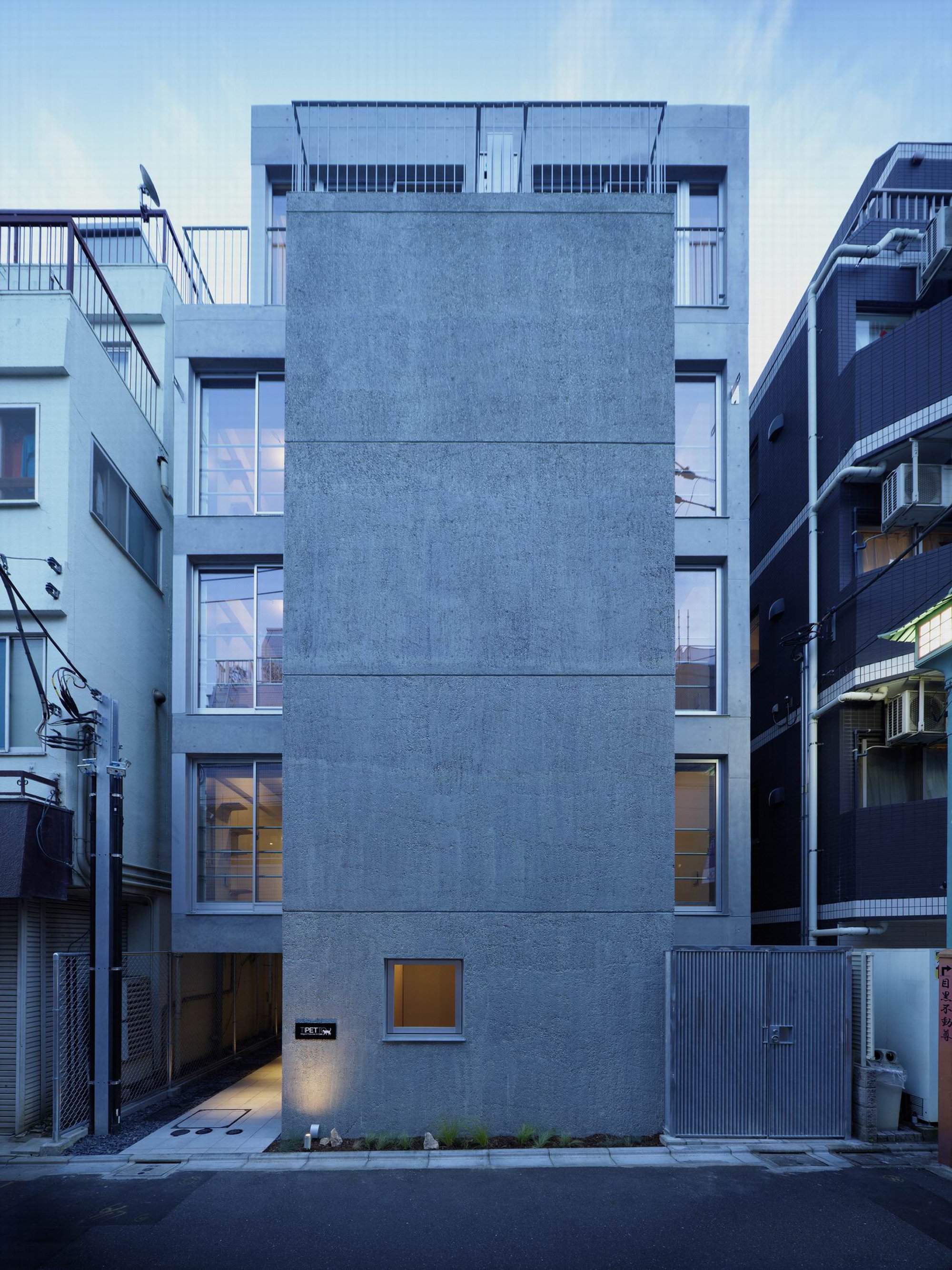
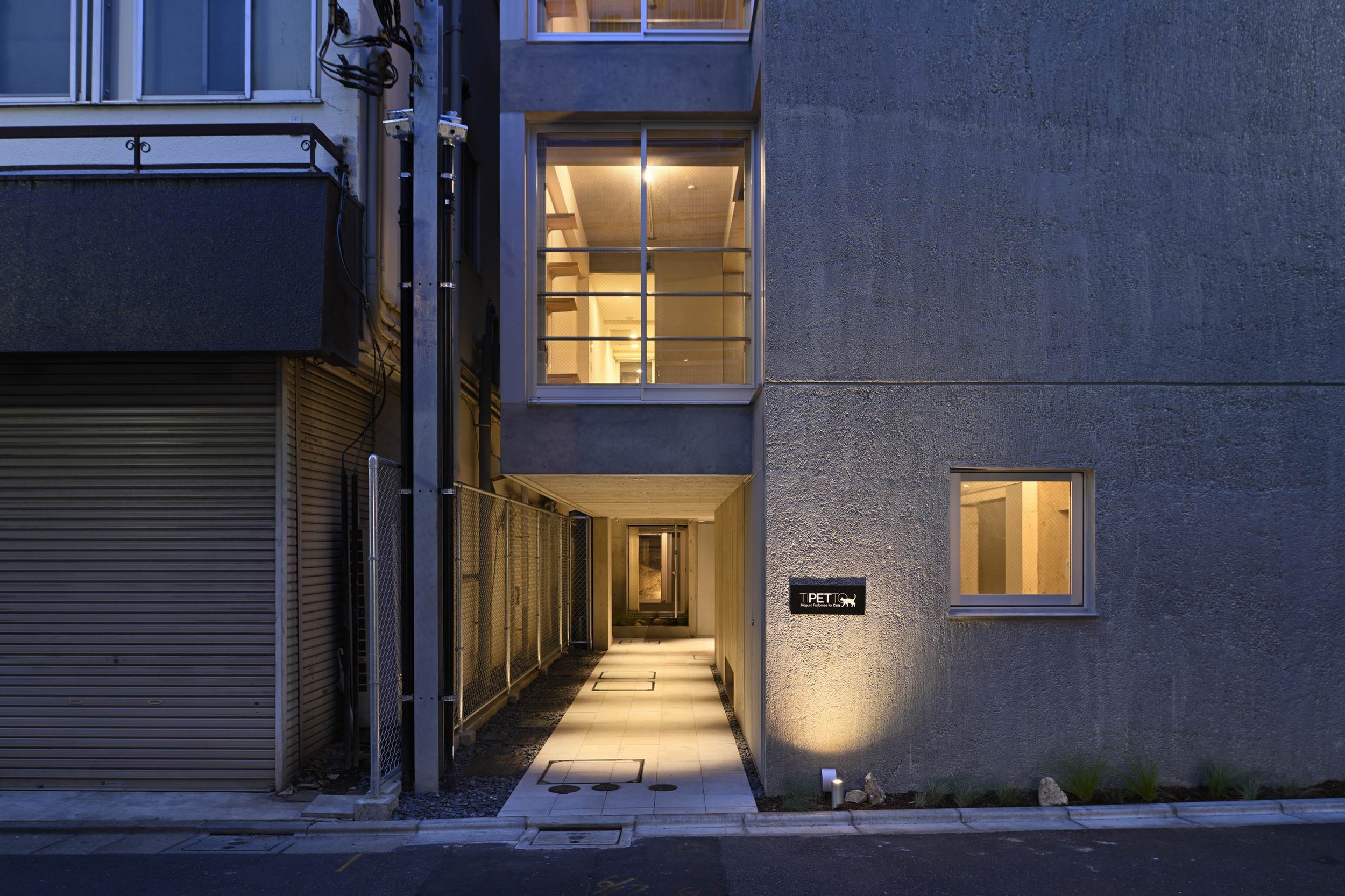
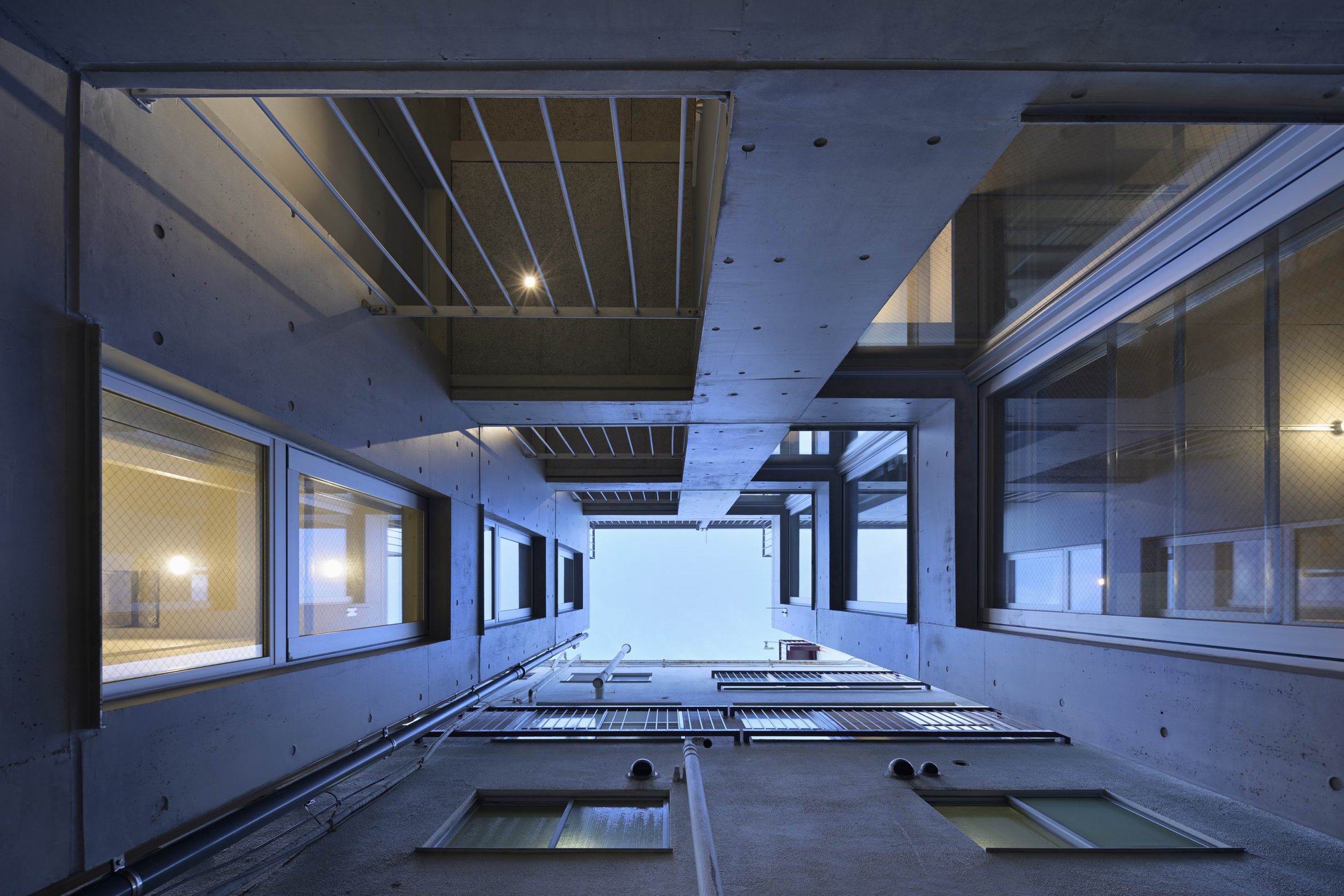
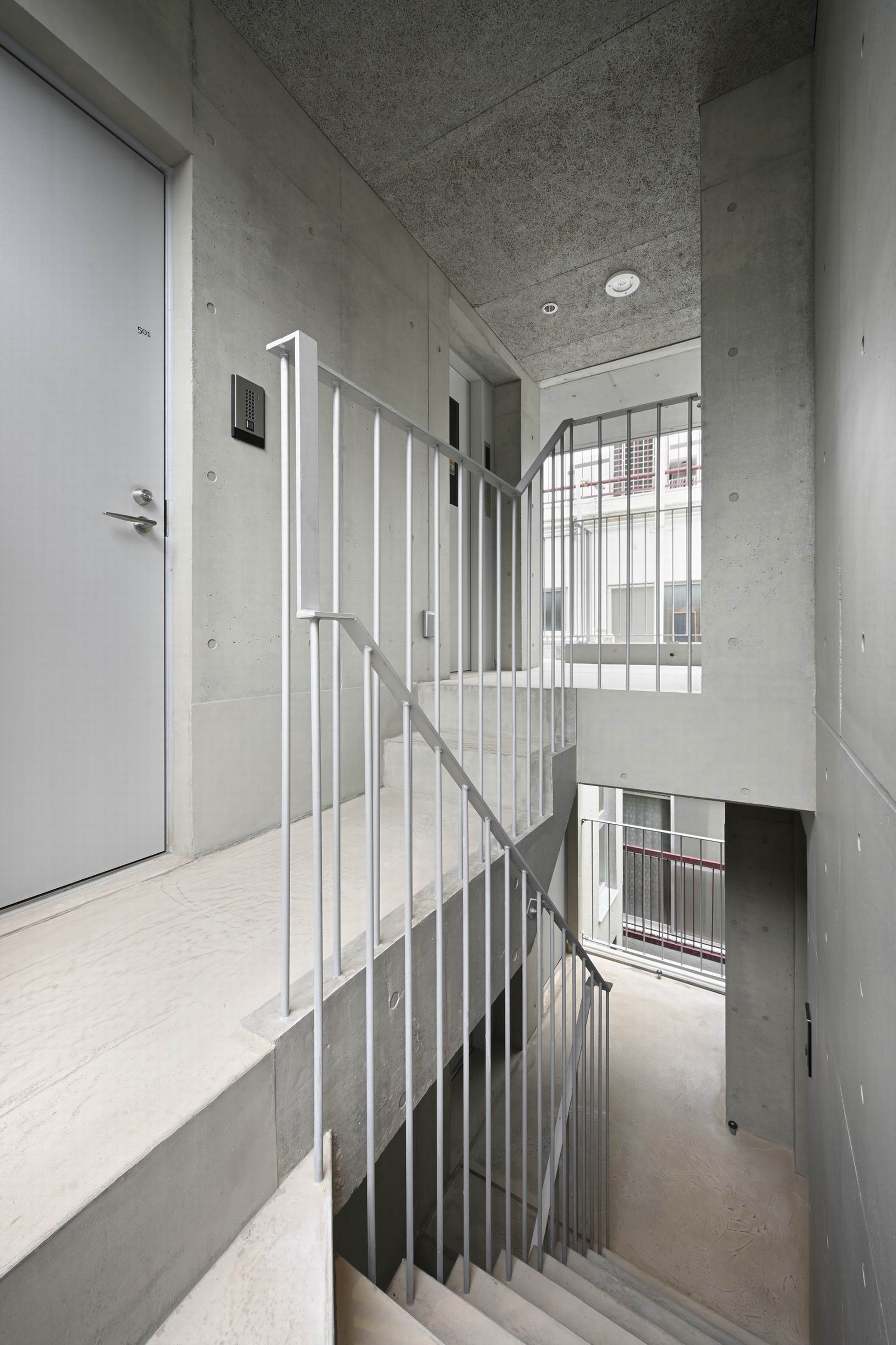
The completed building consists of two volumes, front and rear, separated by open corridors and stairs ascending to all floors. There are six vertical voids in each volume that focus light downward for a comfortable indoor environment. Each volume is notch-notched to reveal six vertical voids. In this complex, studio flats are arranged so that the bathrooms are at the center of the volume and the corridor runs along the exterior wall. Internally, the corridors serve to provide natural ventilation through the six voids from the front to the back. Similarly, the one-bedroom flats of the rear volume have bath areas at the core and can also be traversed past the entry and kitchen to the living room or bedroom, so a circular path can be followed around the entire perimeter of the apartment. Within the vicinity of windows facing the voids, there is a loft and stairs for cats. While humans relax in the same area, cats can bask in the sun and explore outside. On the whole, the indoor environment is conducive for humans and cats.
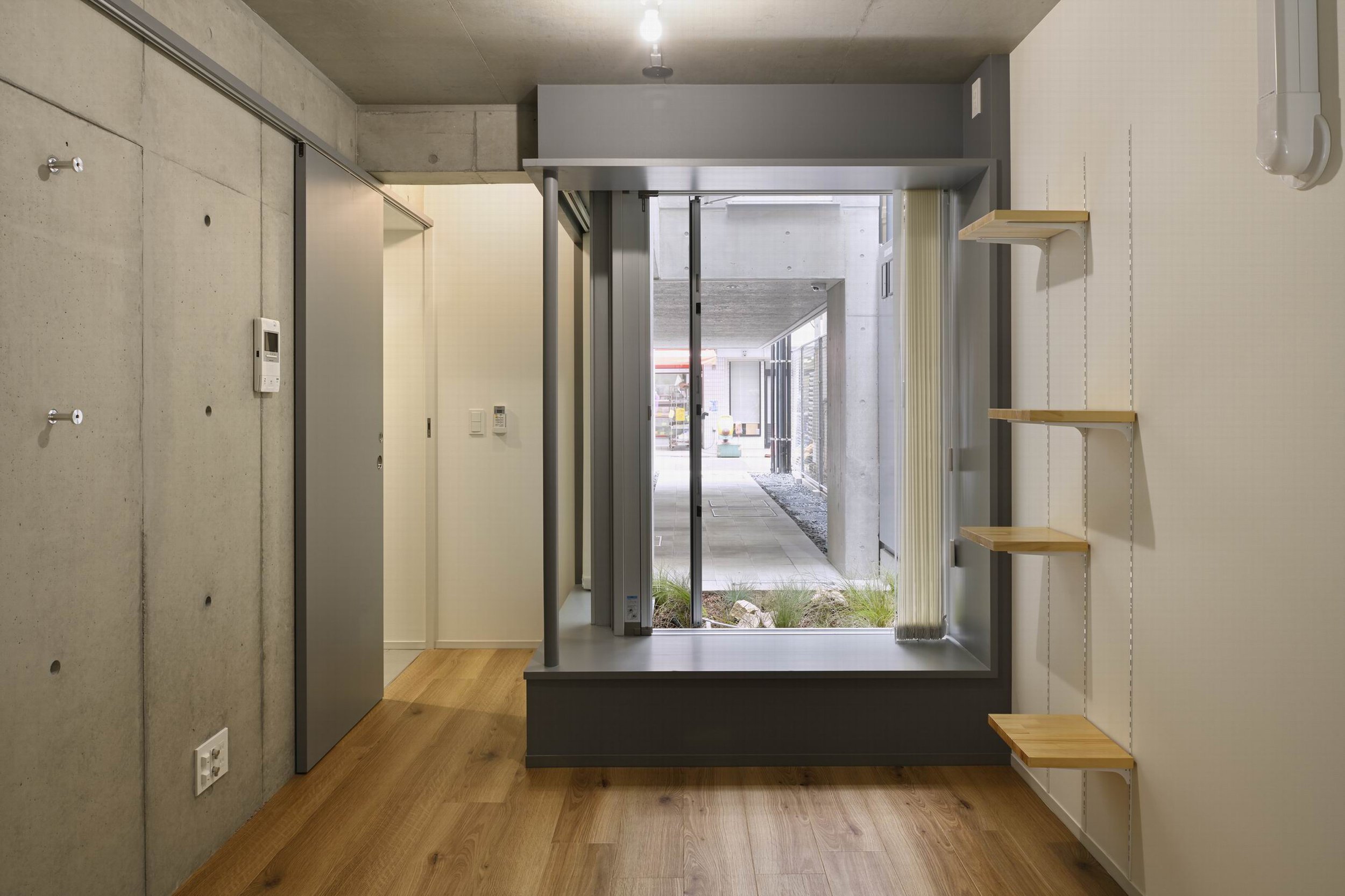
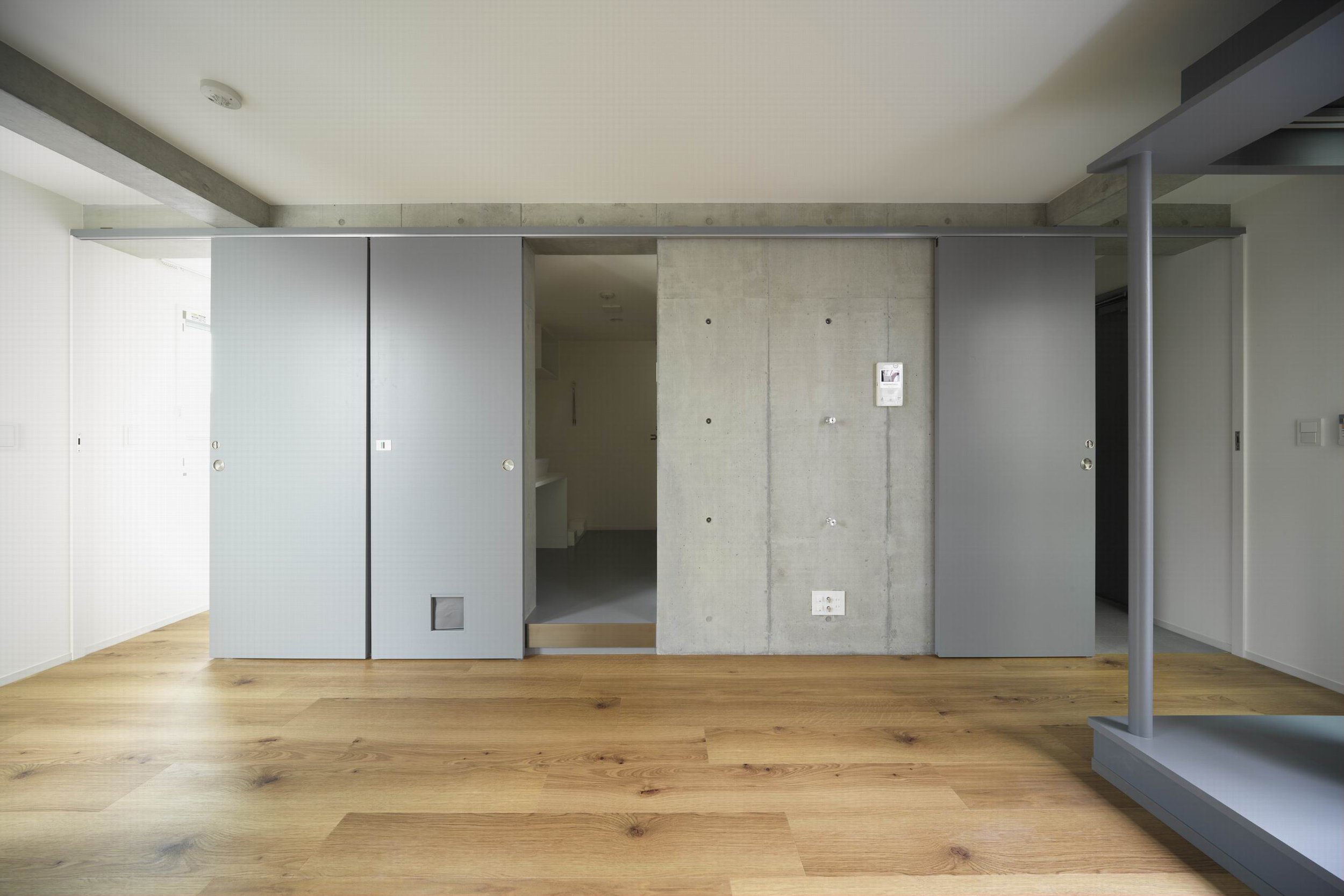
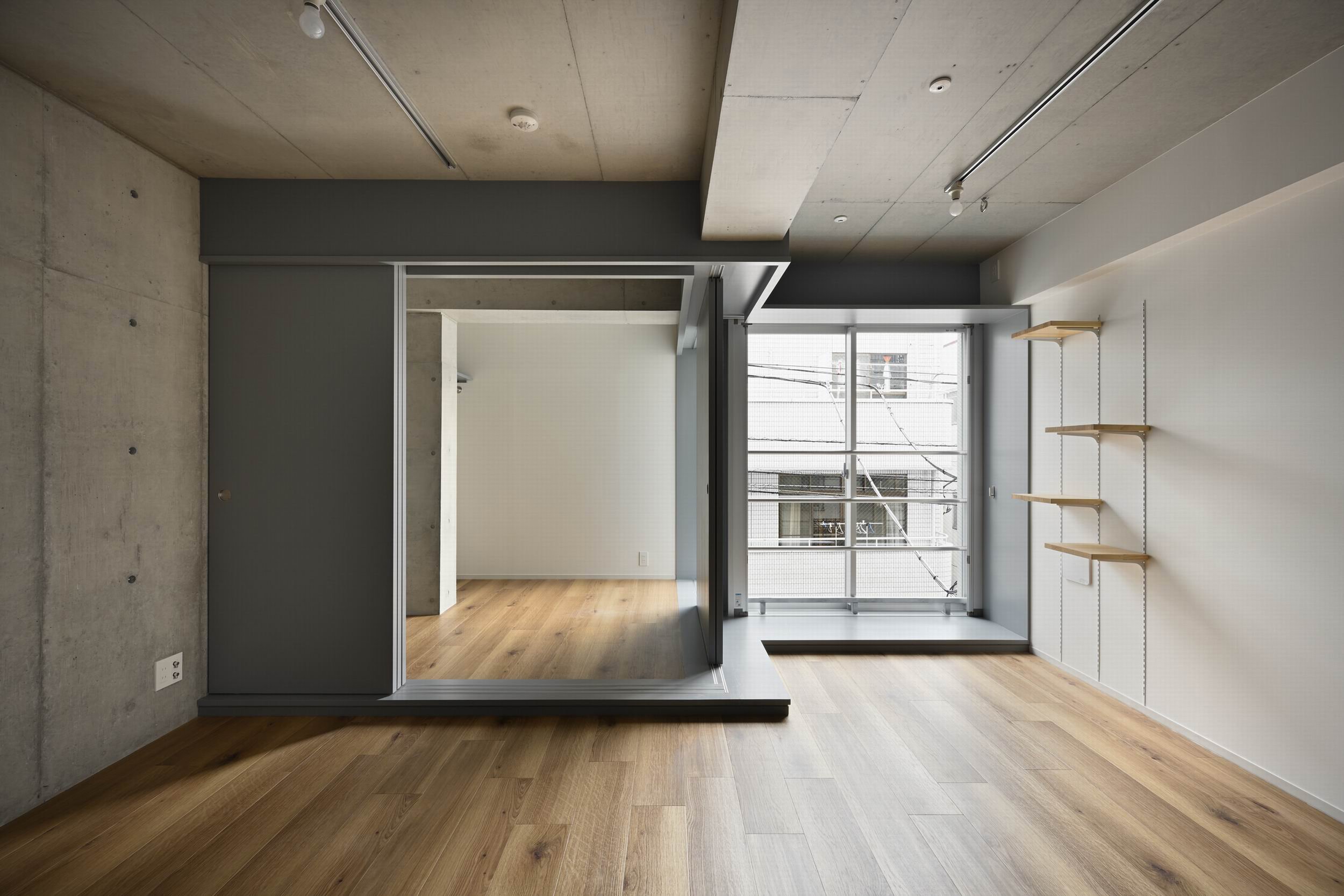
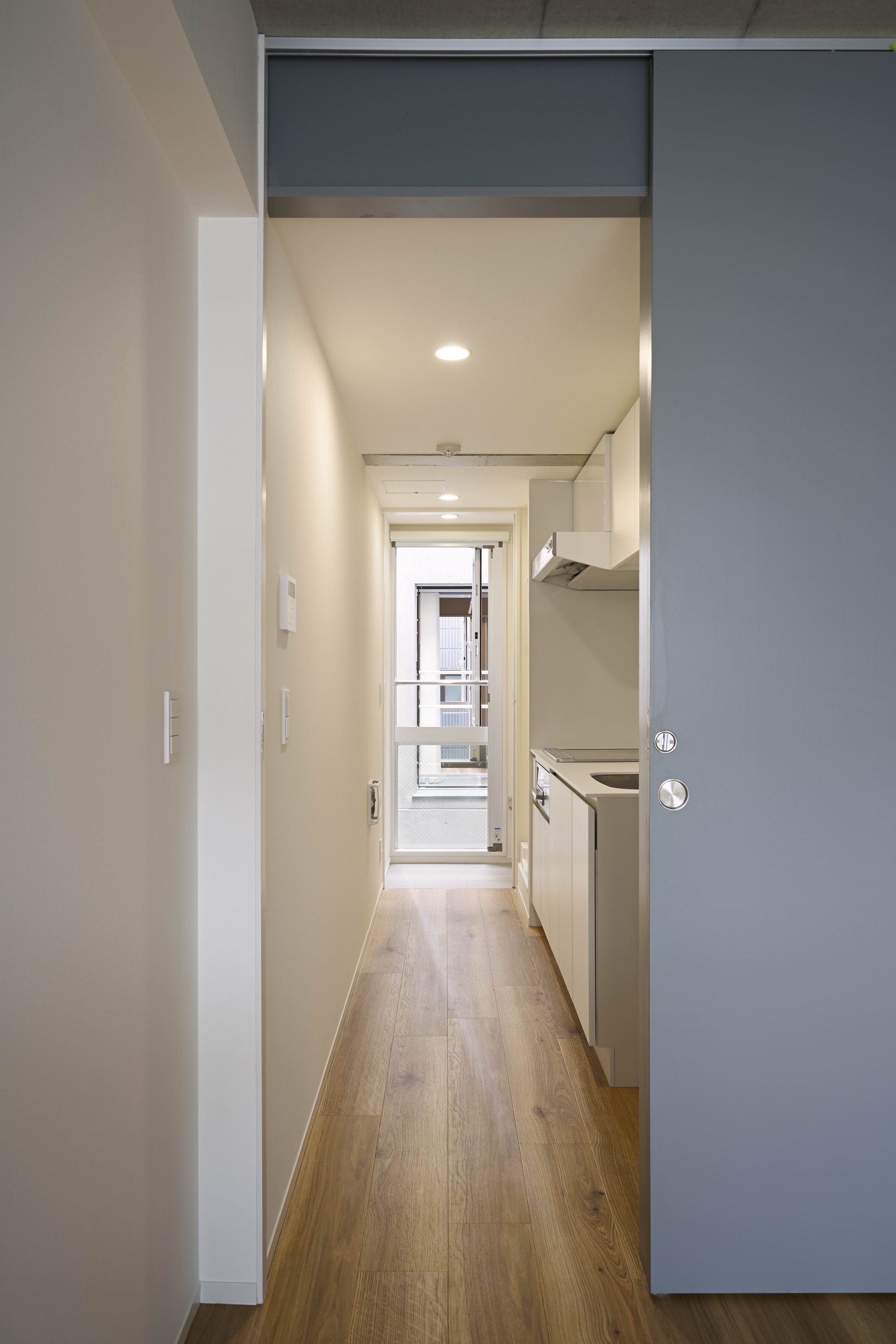
The COVID-19 experience highlights the importance of including outdoor spaces in the design, like windows, balconies, rooftops, and courtyards, as well as plazas, parks, and other open spaces. Within this flat complex, there are voids which create poor airflow to the back to ensure natural ventilation.
Although a studio layout was initially requested for the larger flats designed for two occupants, the final plan establishes two mutually separate, comfortable living spaces connected by corridors along the full perimeter of the building. Separate "meeting" rooms are available to both residents if they are both working at home and provide quiet work environments without having to worry about noise from the other. Furthermore, accommodations provide comfort through pets to the "post Coronavirus" generation.
Drawing/ Planning
